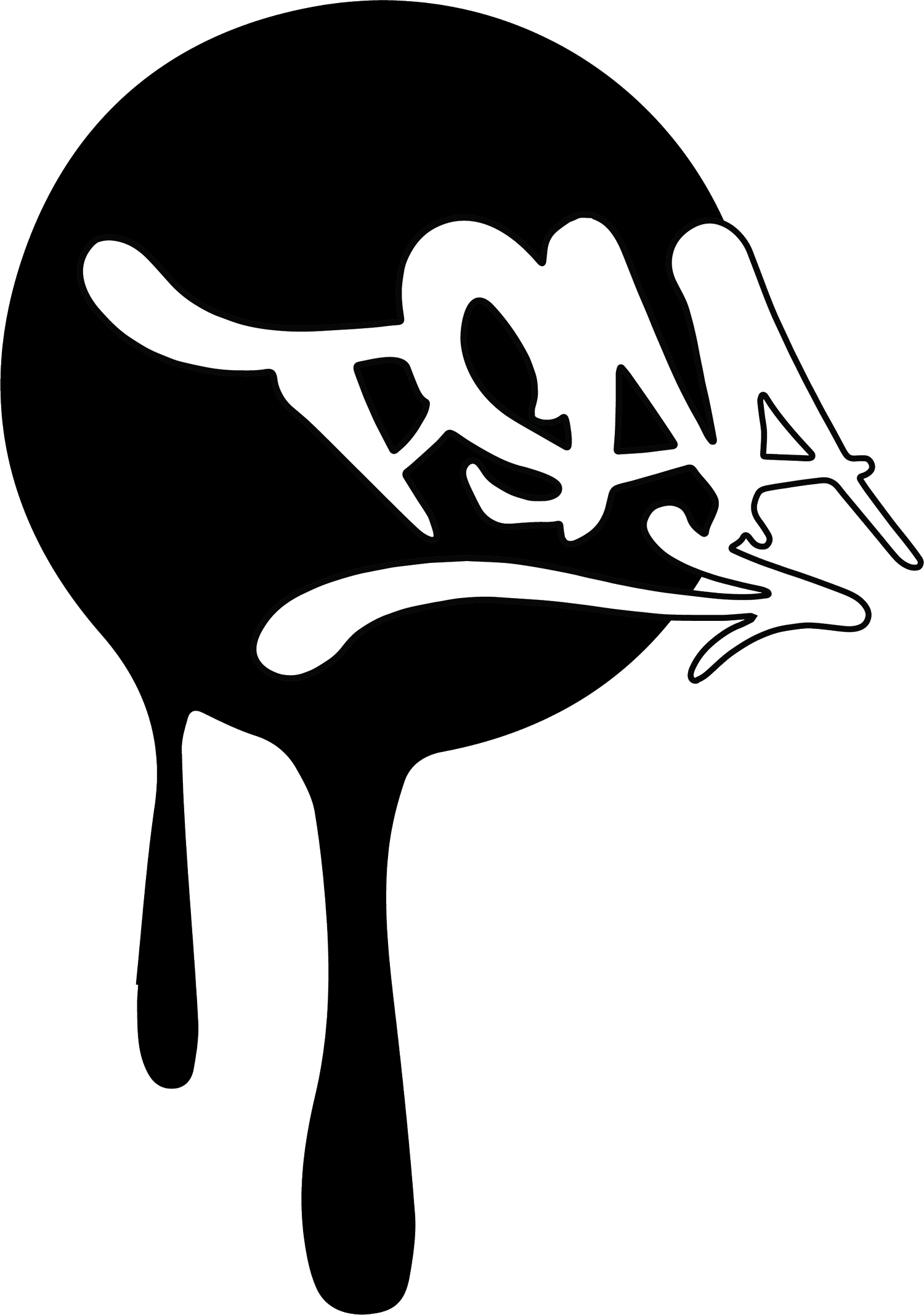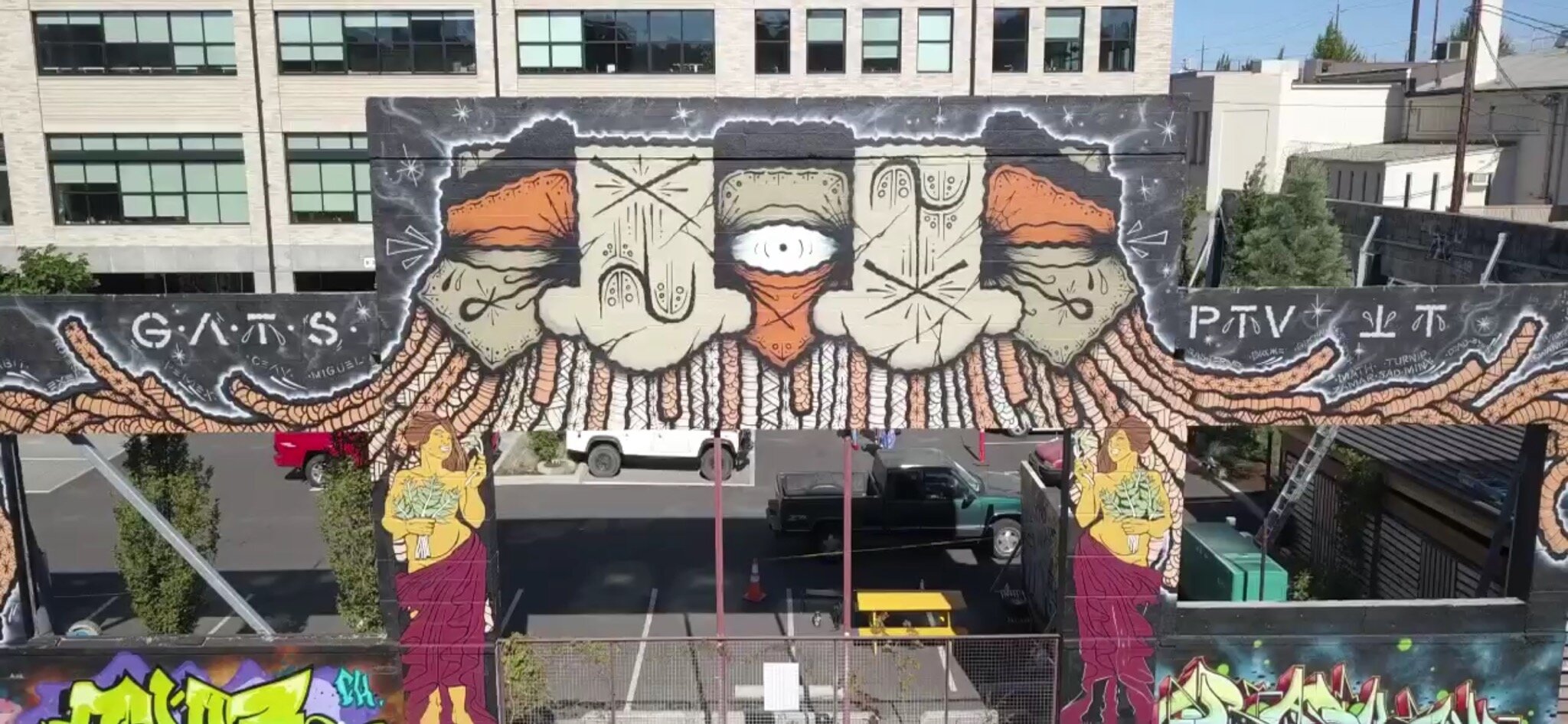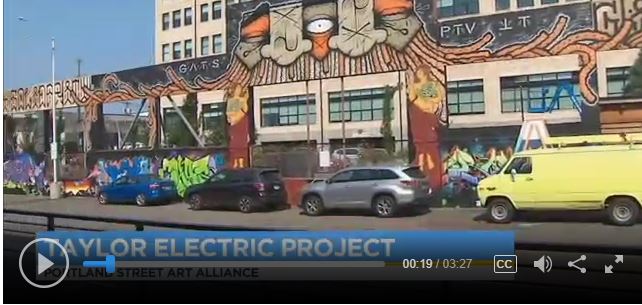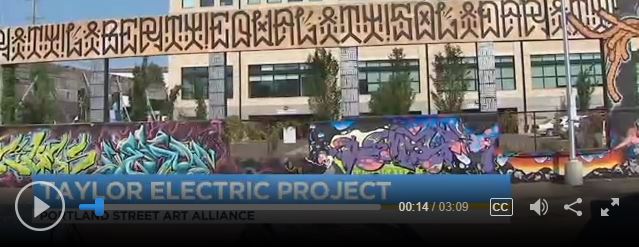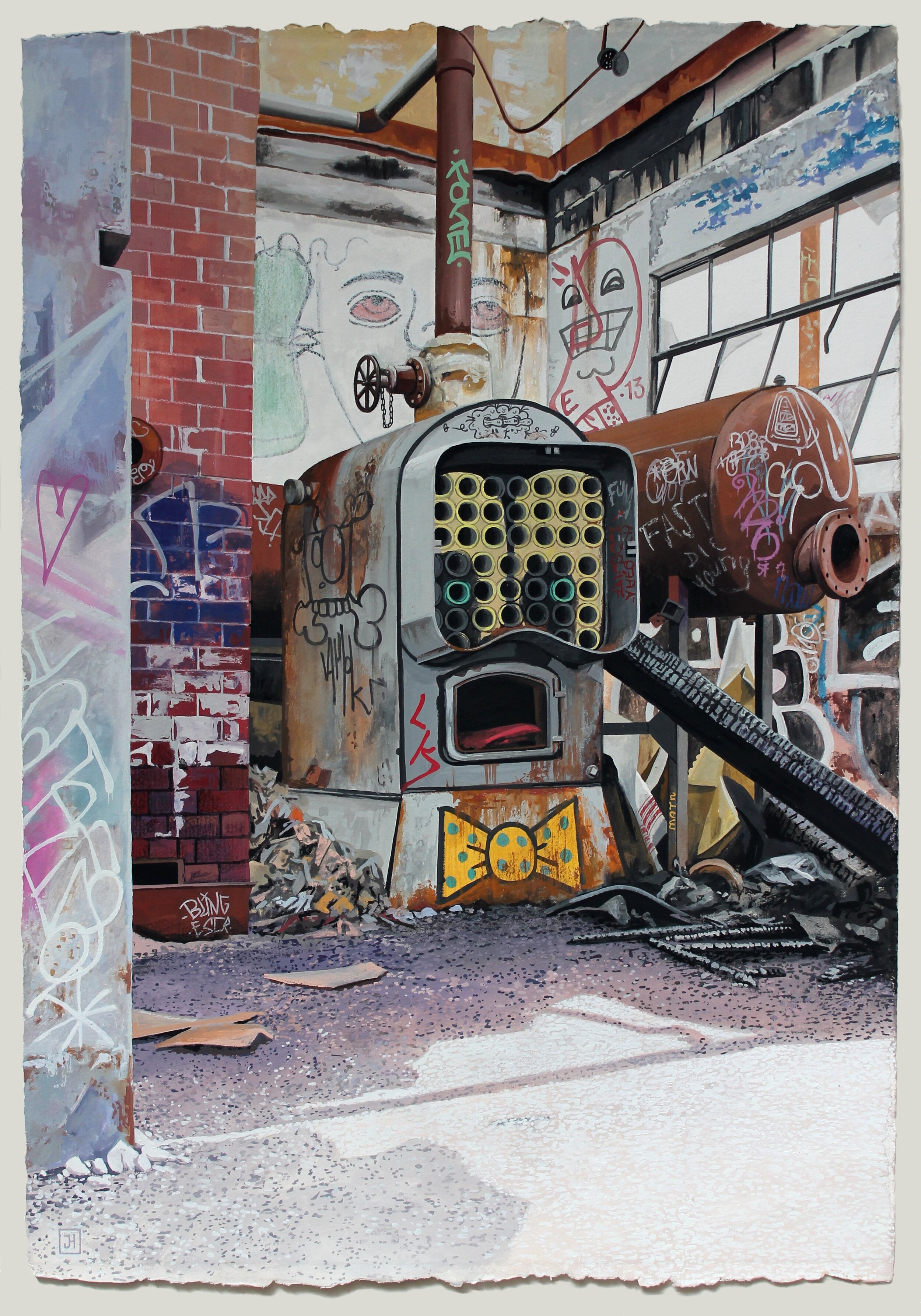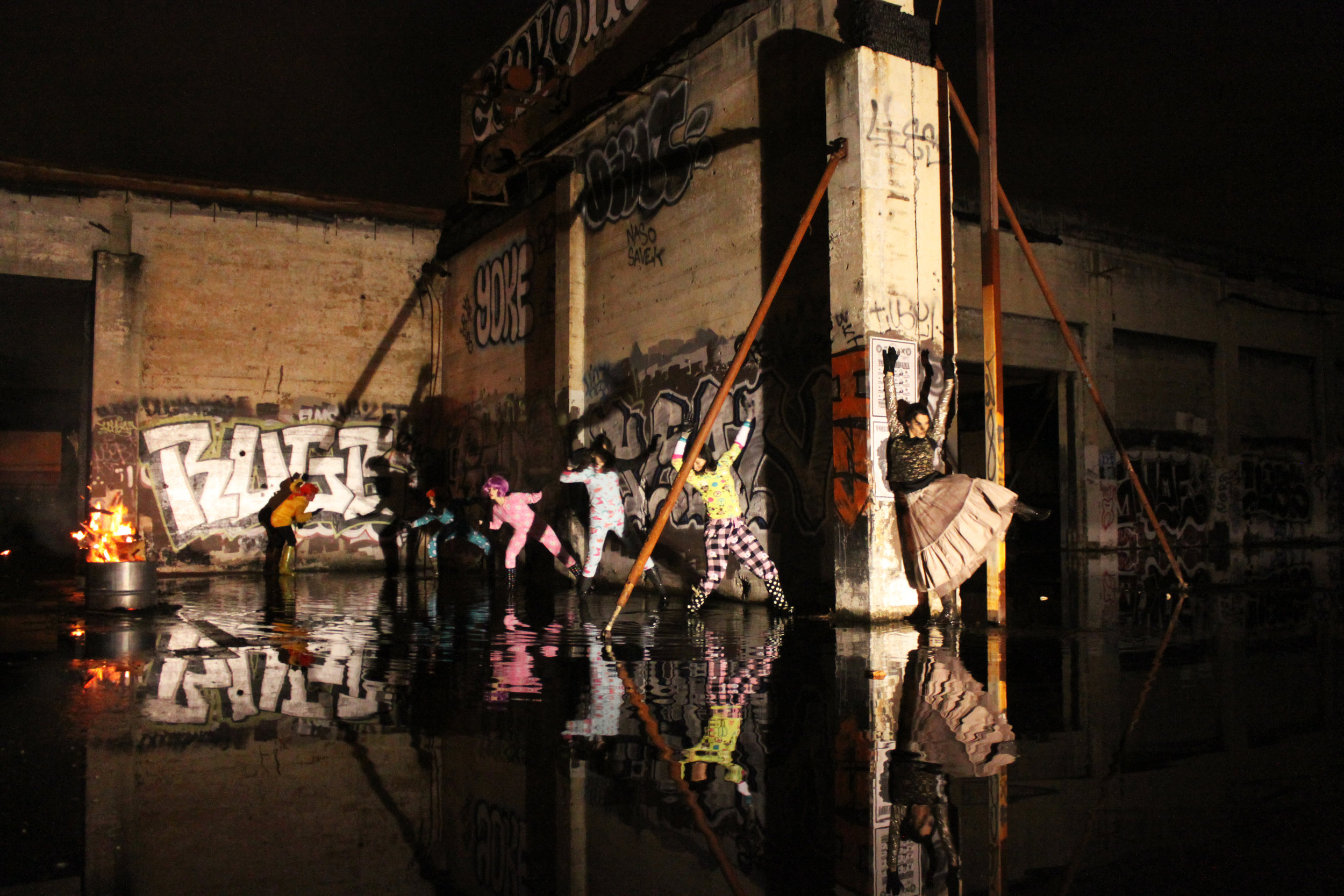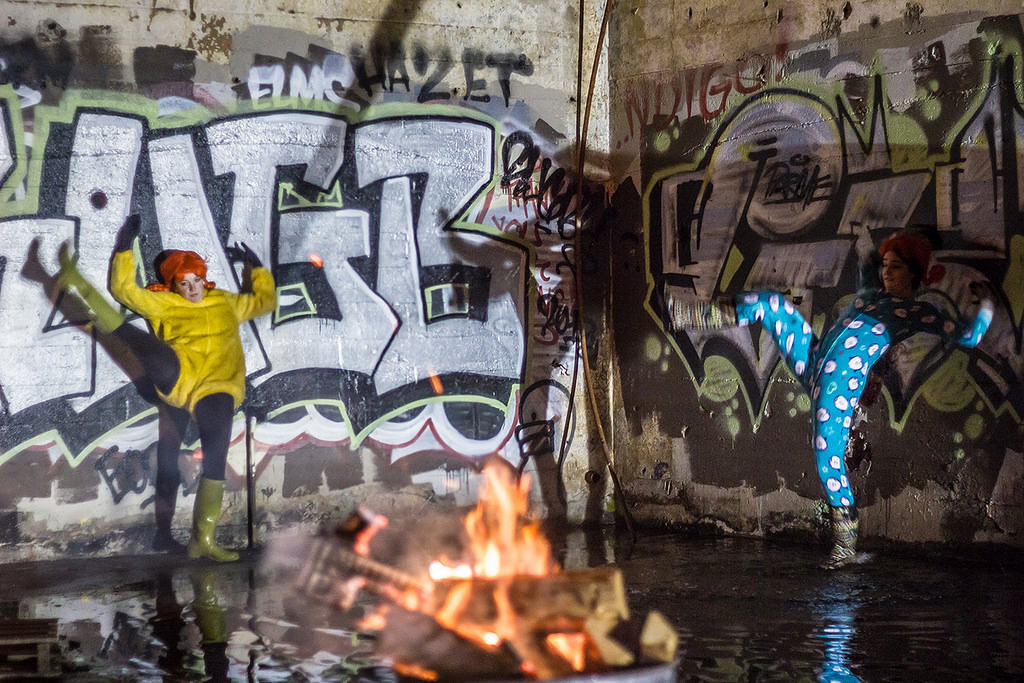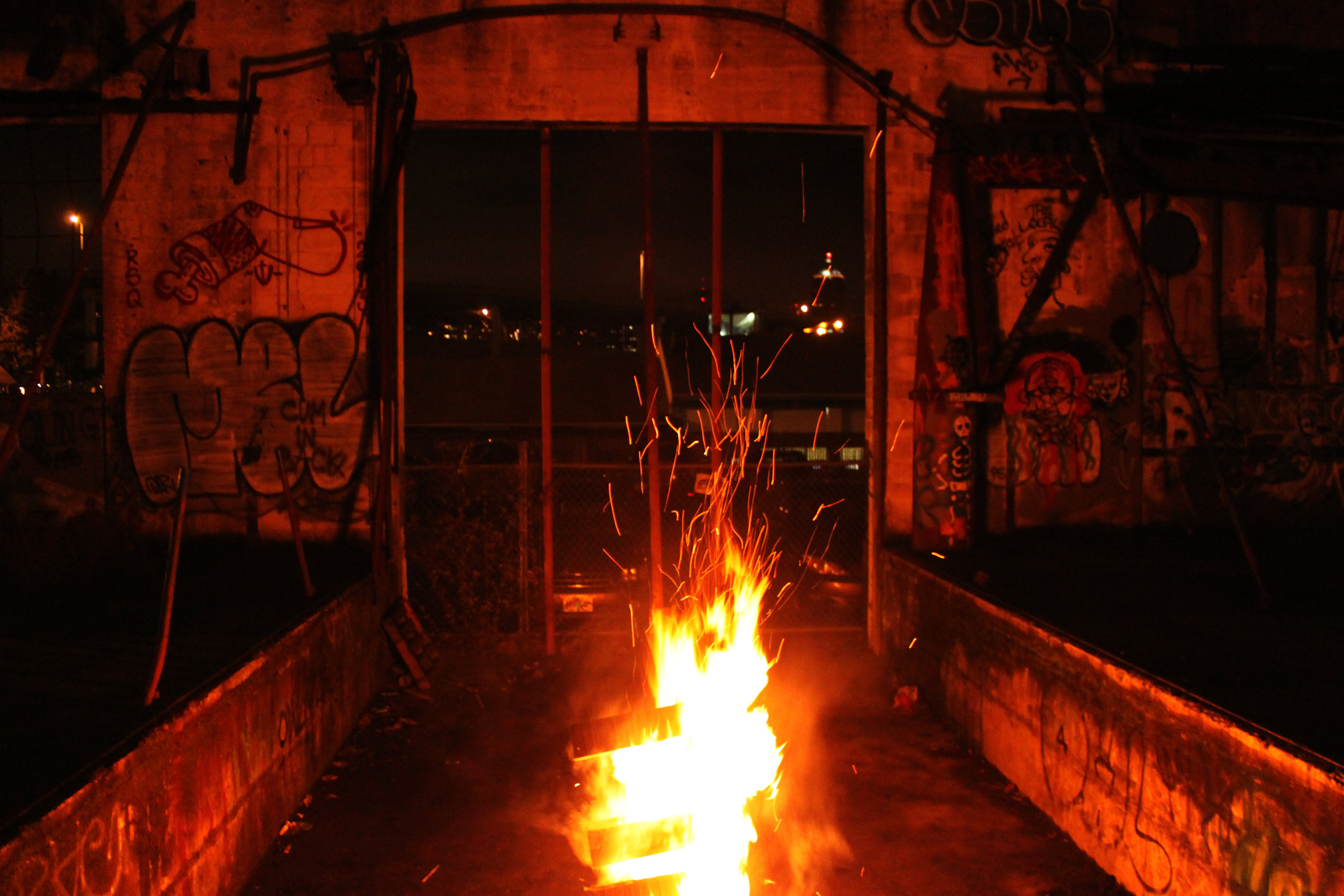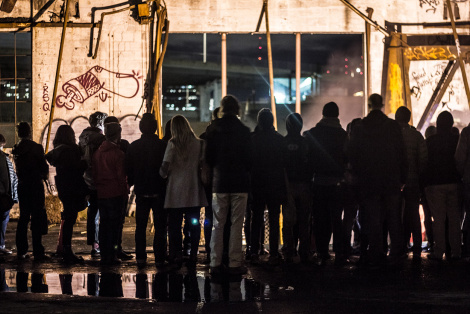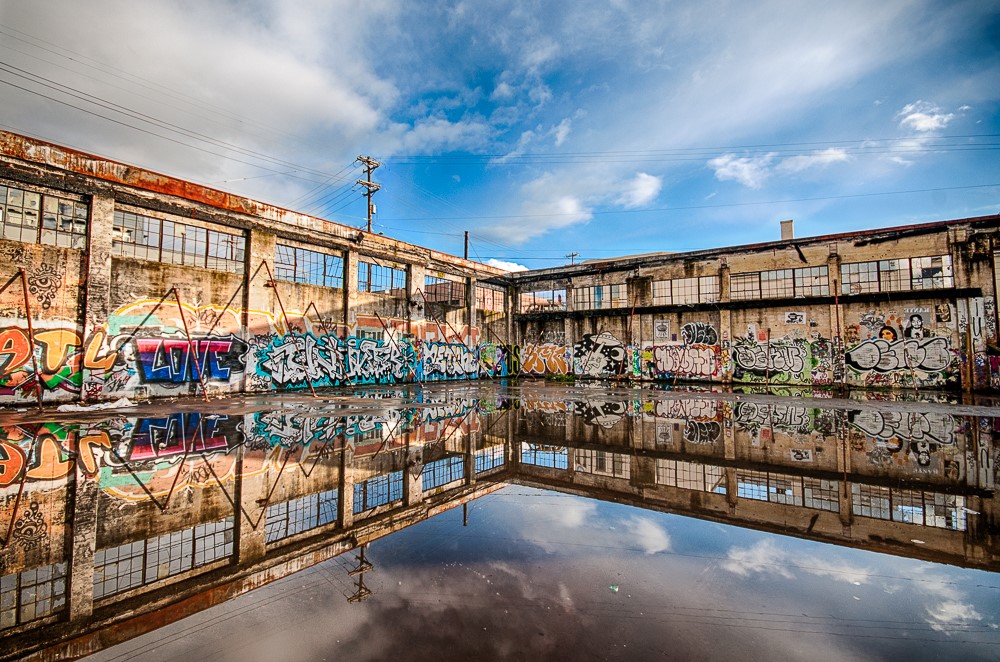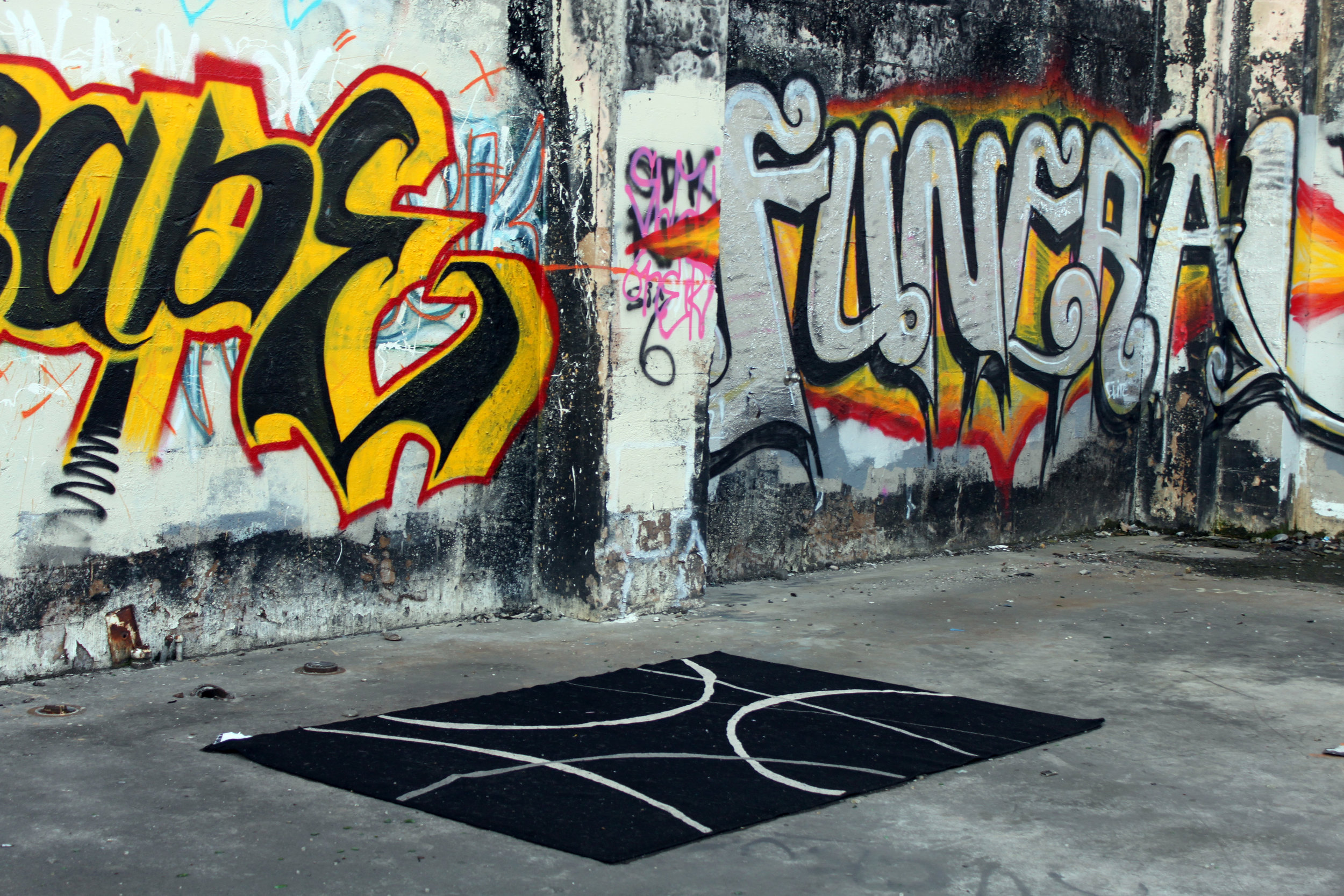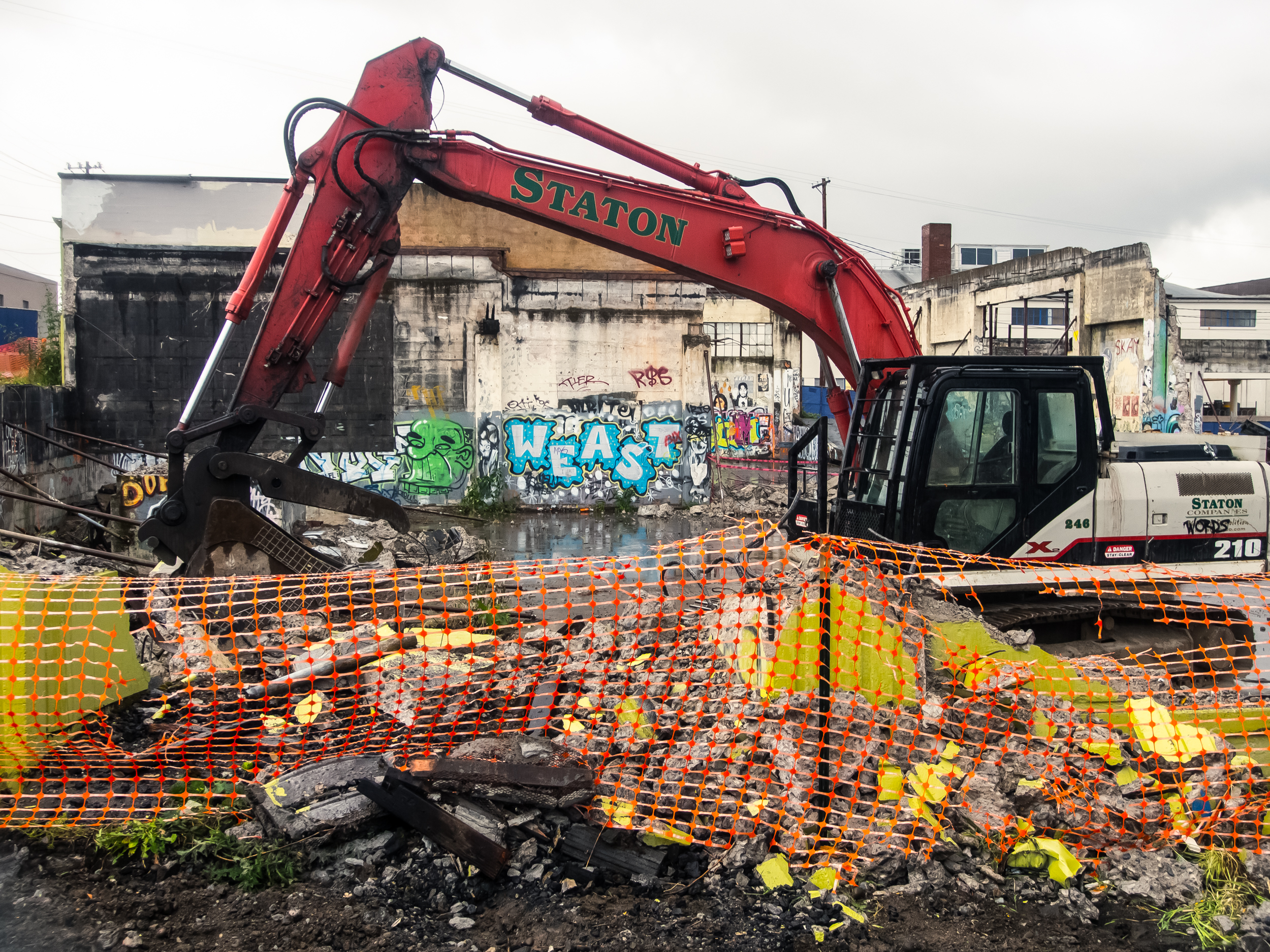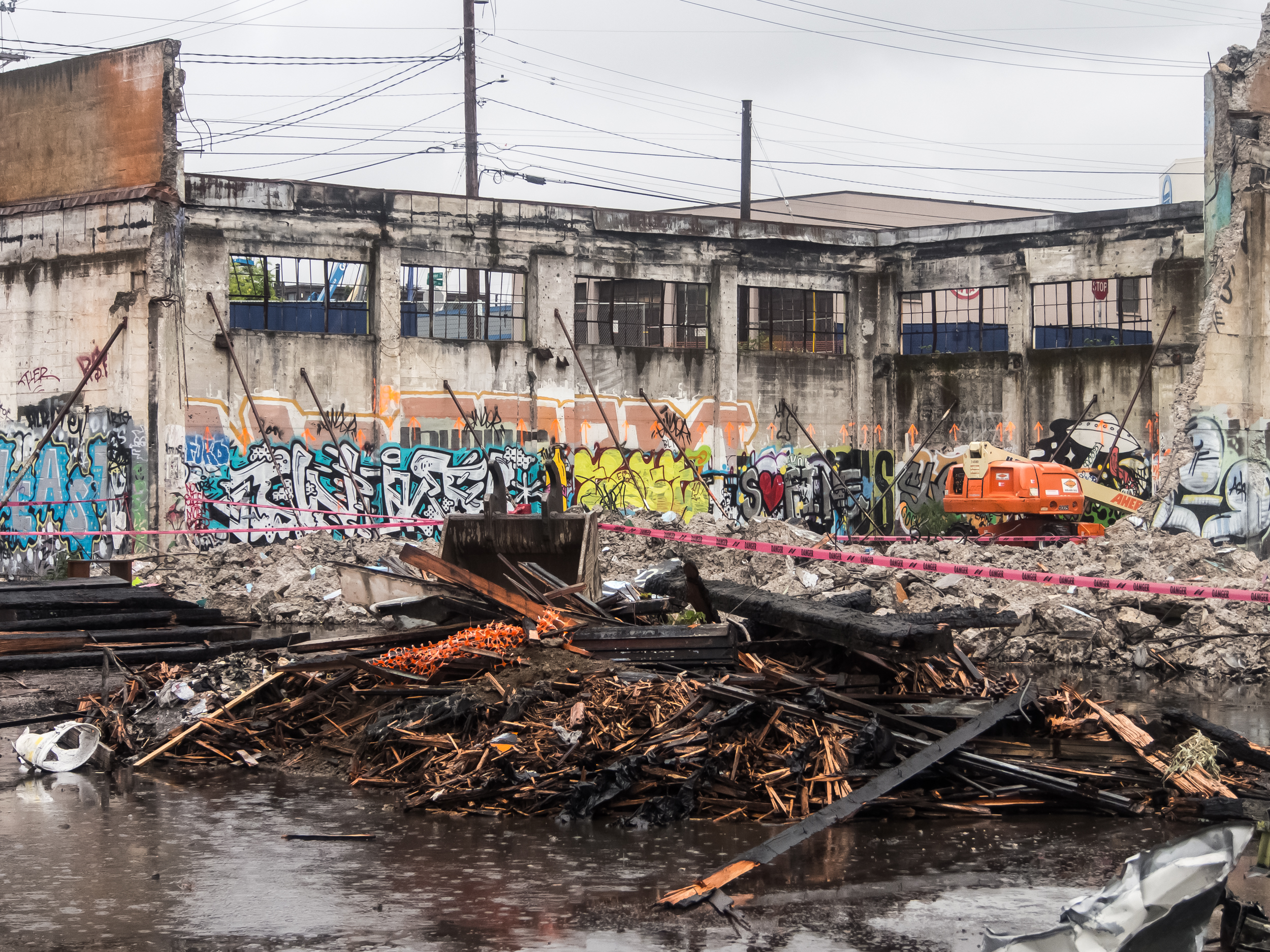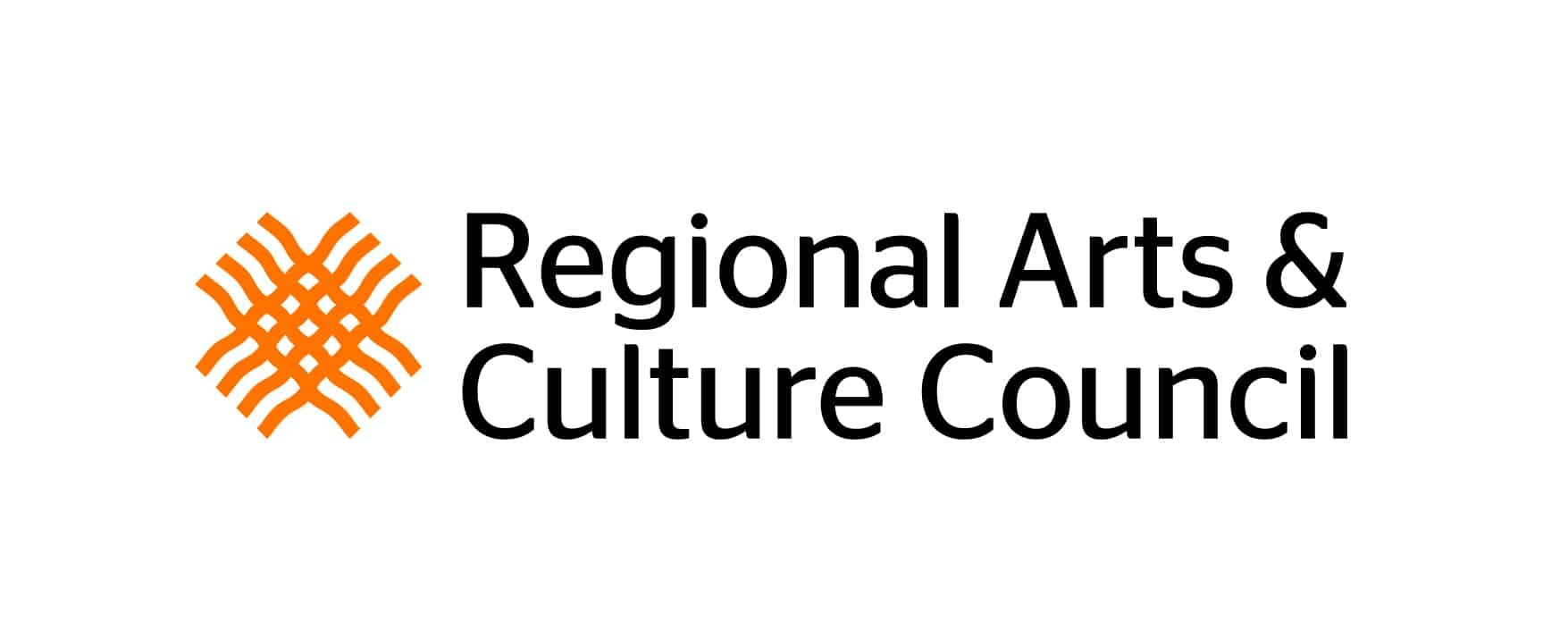The Taylor Electric Project at the Electric Blocks, is a collaborative, open-air street art gallery that features the work of over 100 artists. For over a decade, the ruins of the Taylor Electrical Supply Company, located on 240 SE Clay St., became a Portland nexus of local, regional, and national graffiti and street art following a fire that left only the burnt-out husk of walls, a perfect canvas for street art within Portland’s ever-changing Central Eastside District. In 2015, what remained of the building was demolished but with the support of Killian Pacific, Portland Street Art Alliance is collectively rebuilding the Taylor Electric Project into a haven for street art once again. Portland Street Art Alliance manages the painting at Taylor Electric and in 2018 co-hosted an all-day all-ages event with the help of For the Love that includes live-paintings, artist commissions, live music, a dance battle, local pop-ups, food carts, local beer, skateboarding ramps, and more. Thousands of people come out to celebrate Portland’s vibrant public art communities. The annual block party is truly a DIY community-centered and driven event, made possible with the support from local sponsors, volunteers, and artists.
2018 Block Party Recap
BLOCK PARTY NEWS COVERAGE
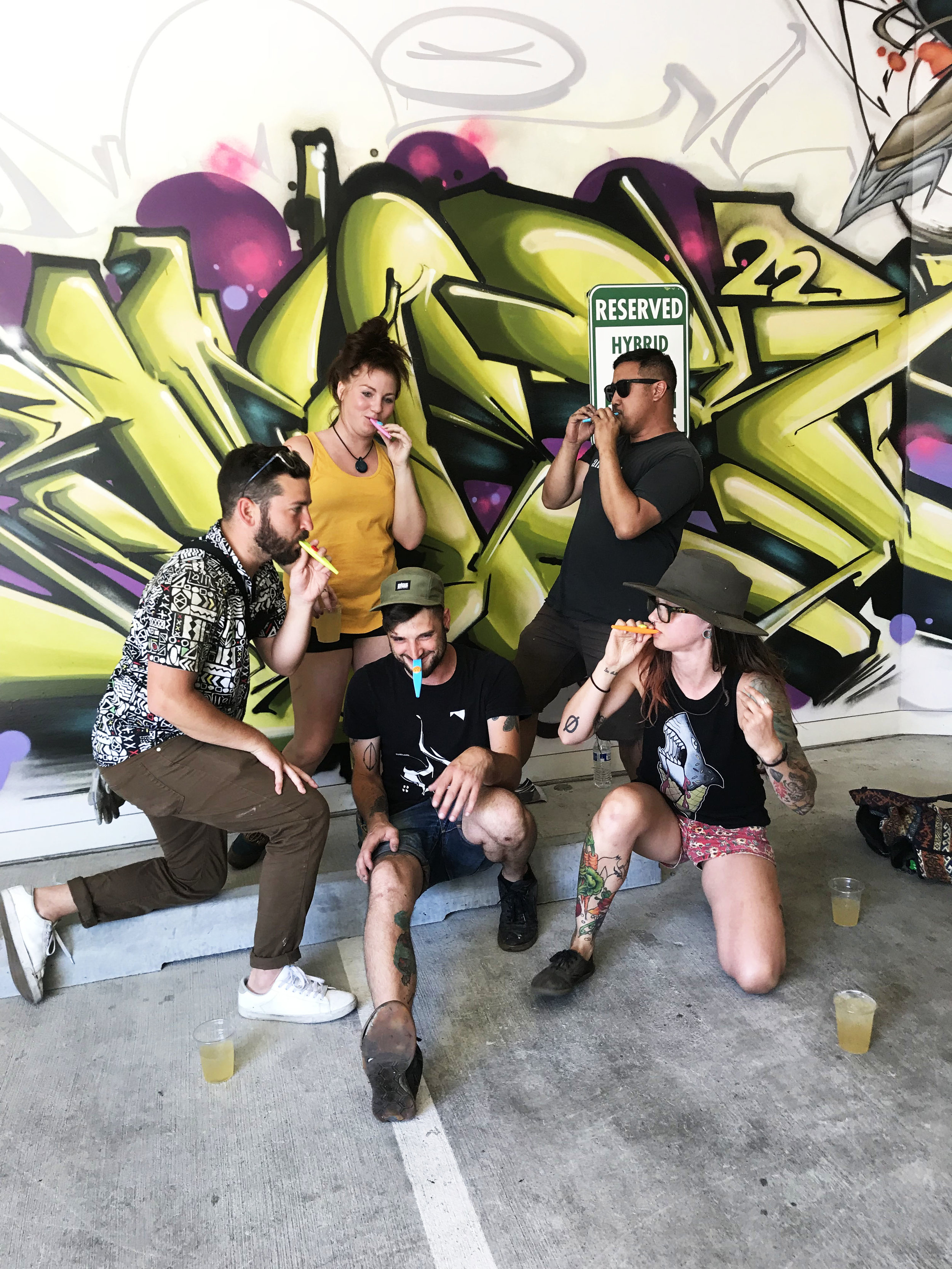
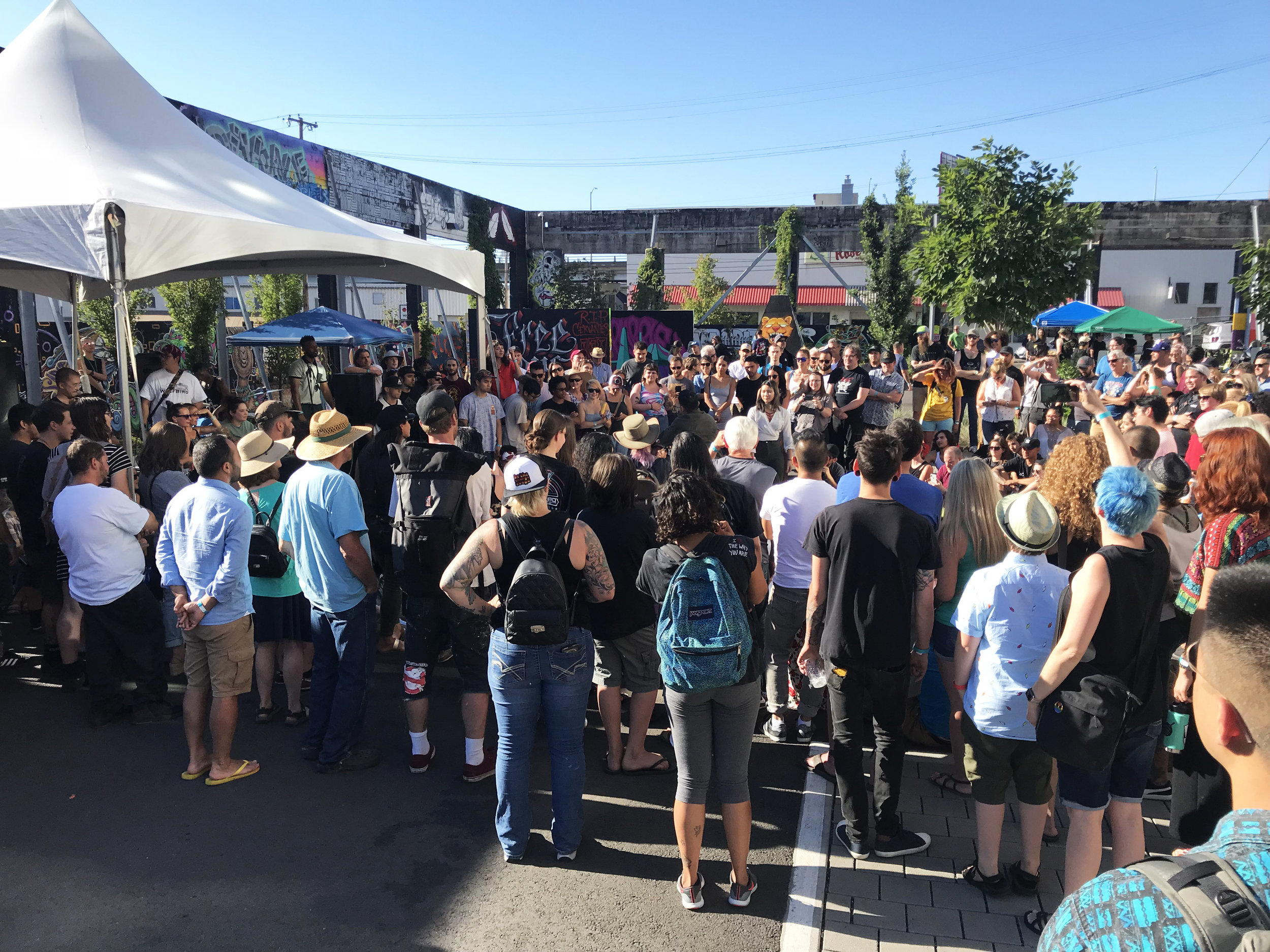
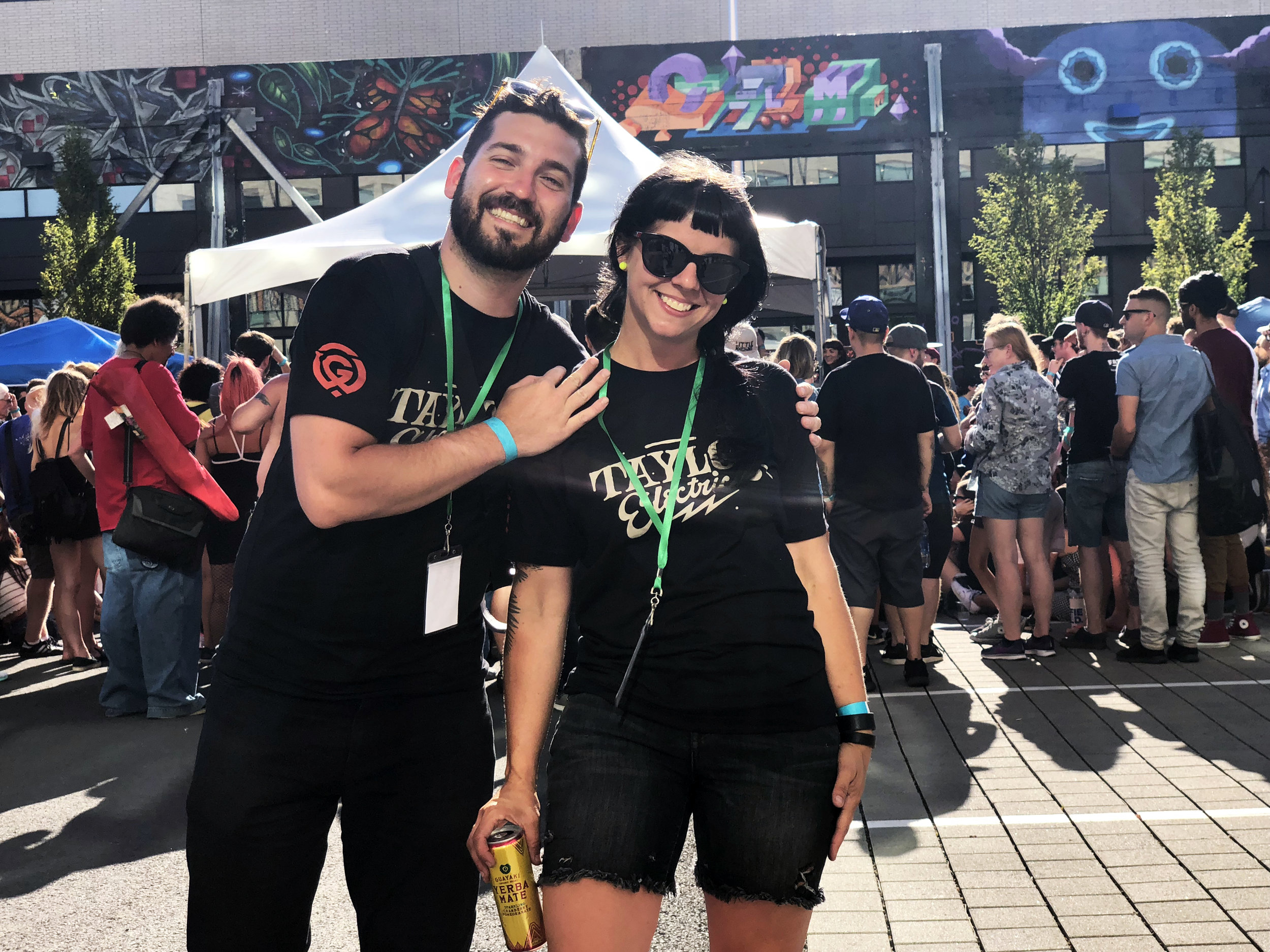
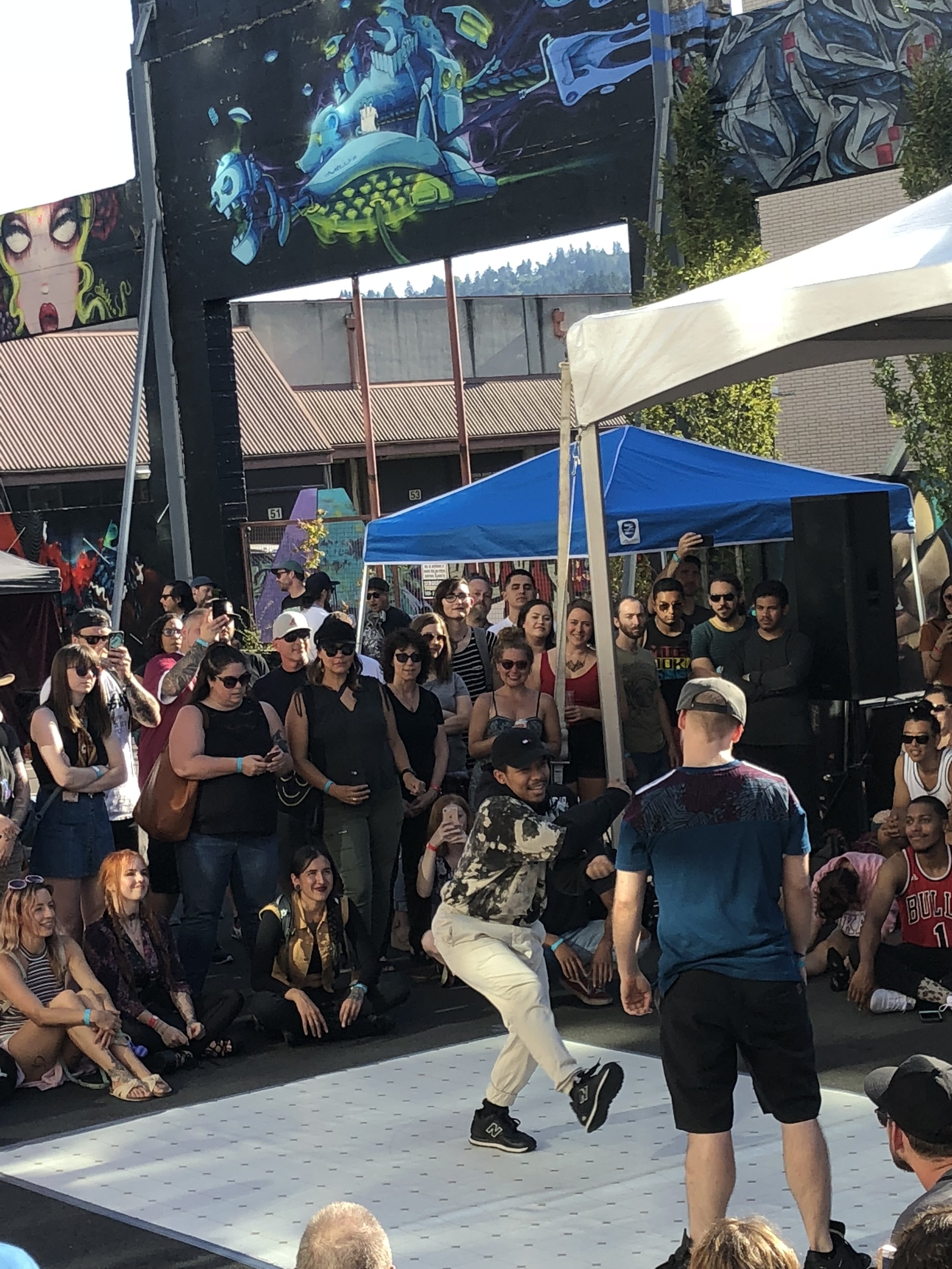
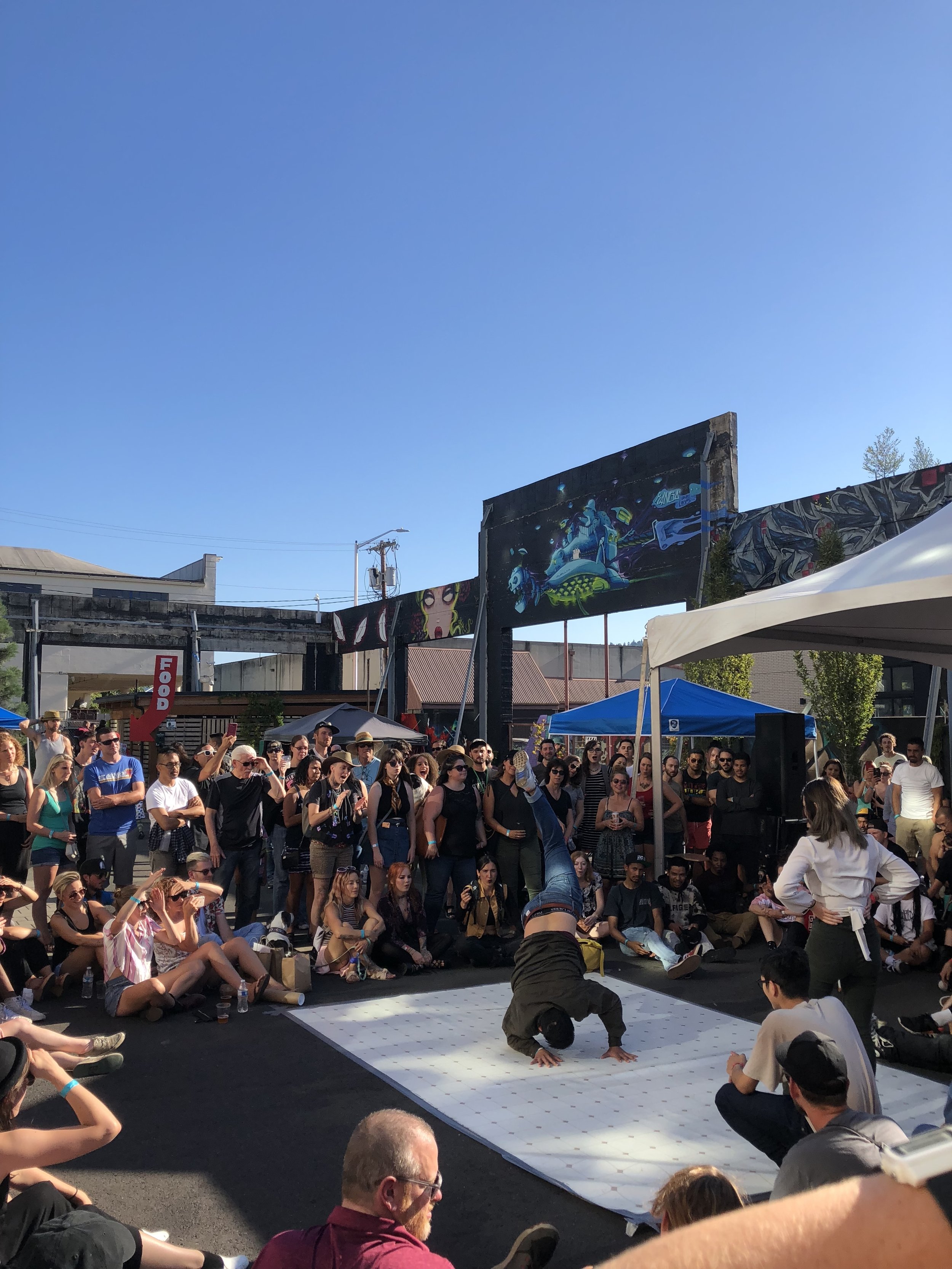
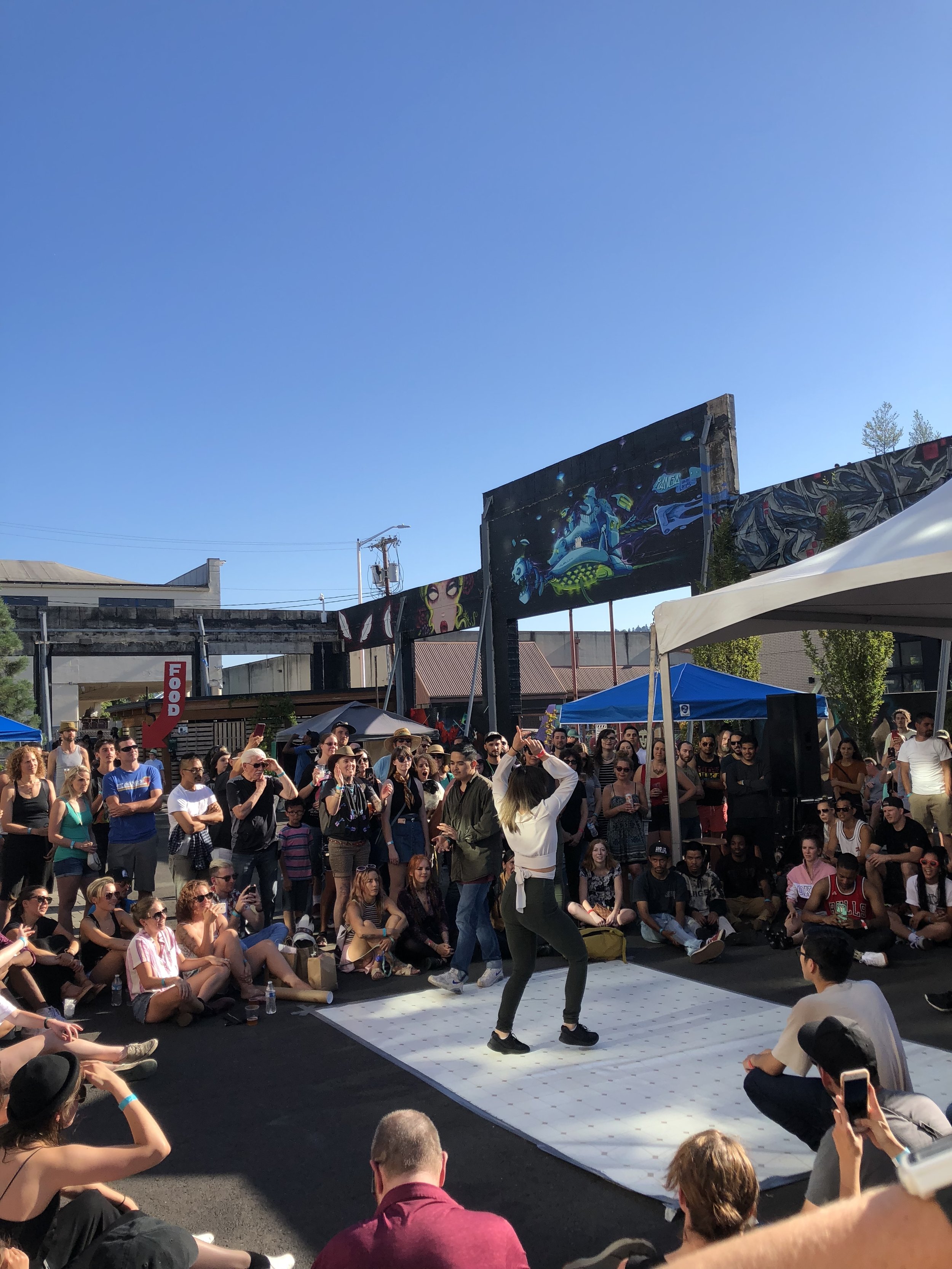
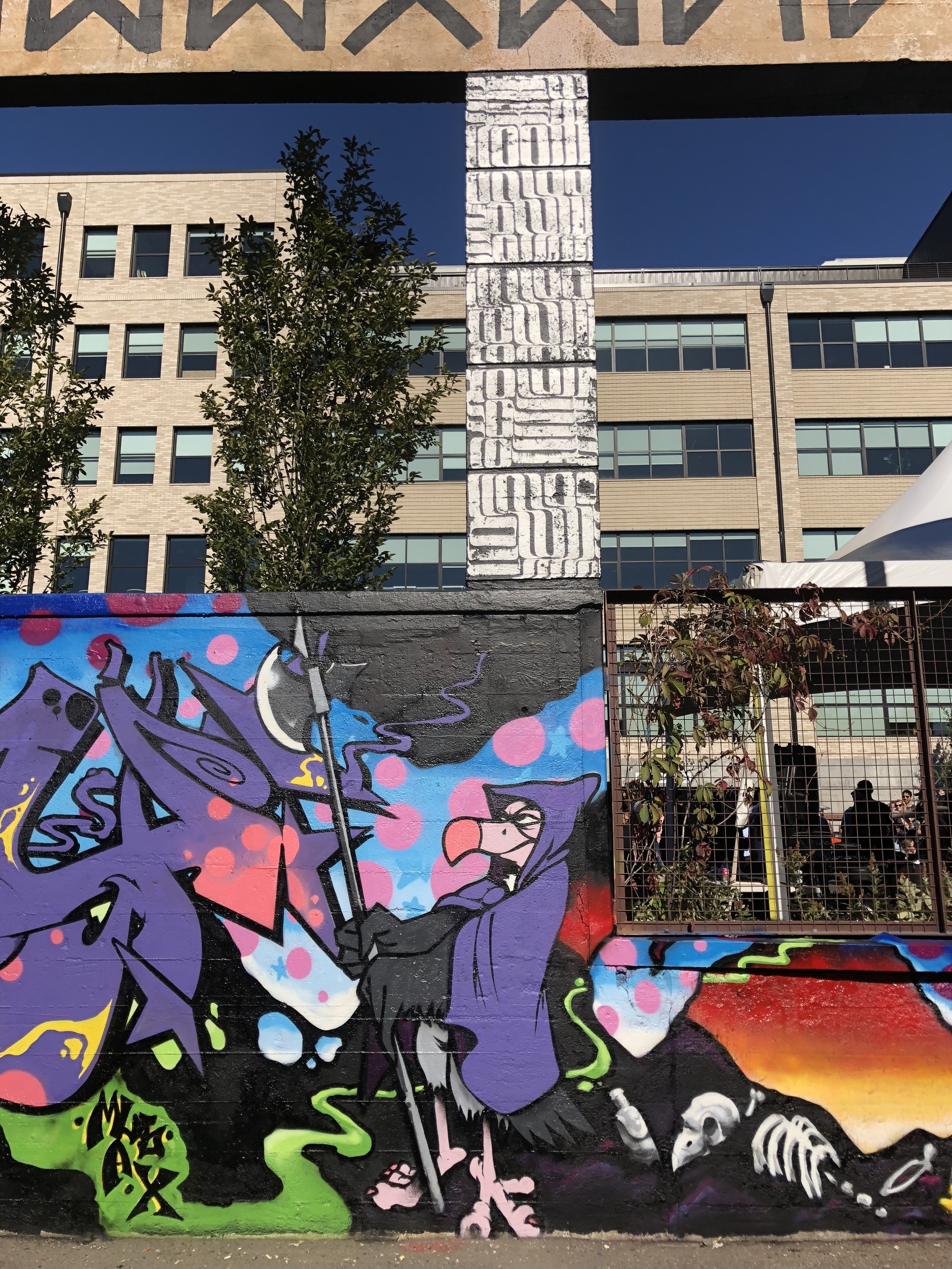
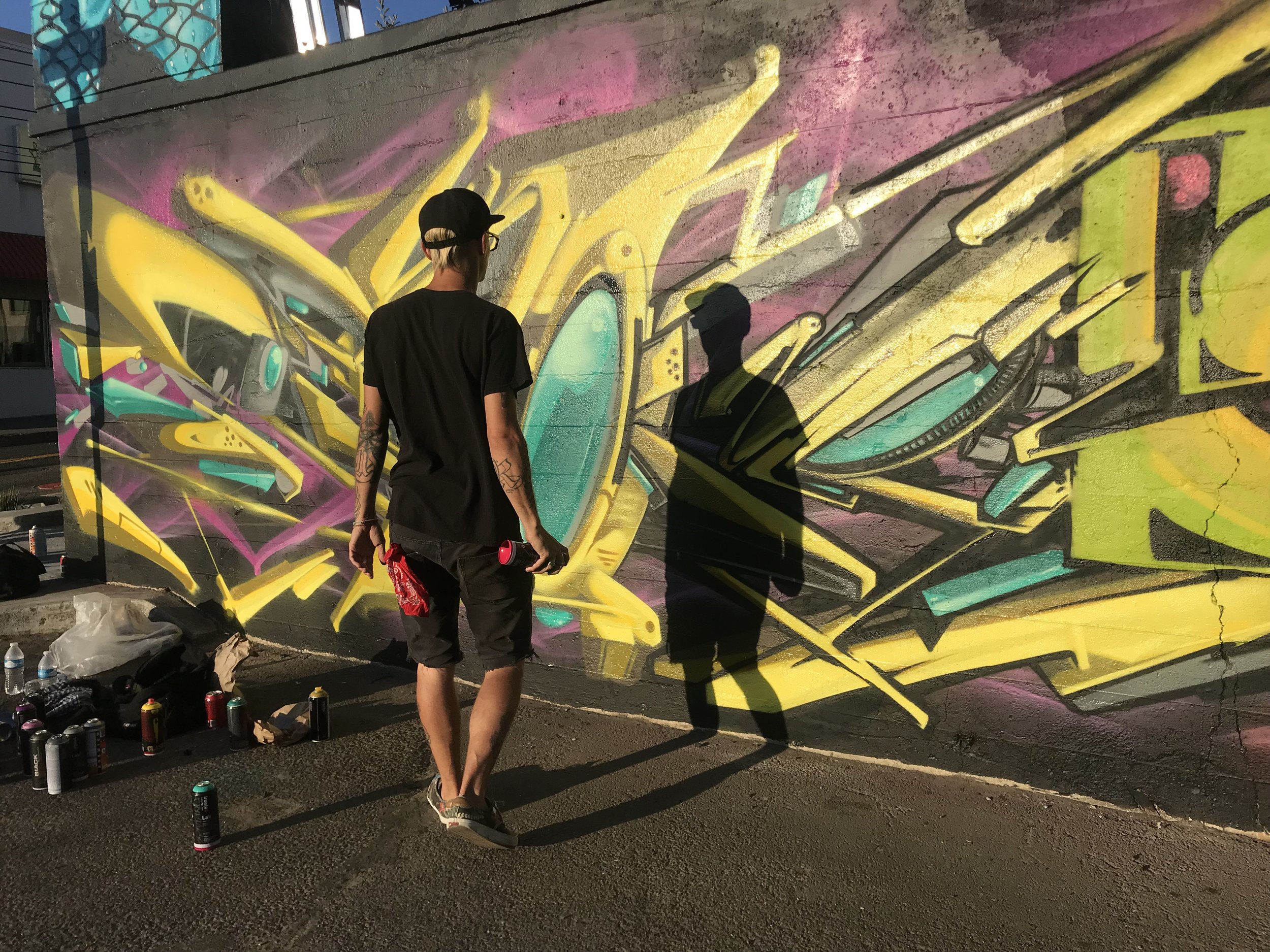
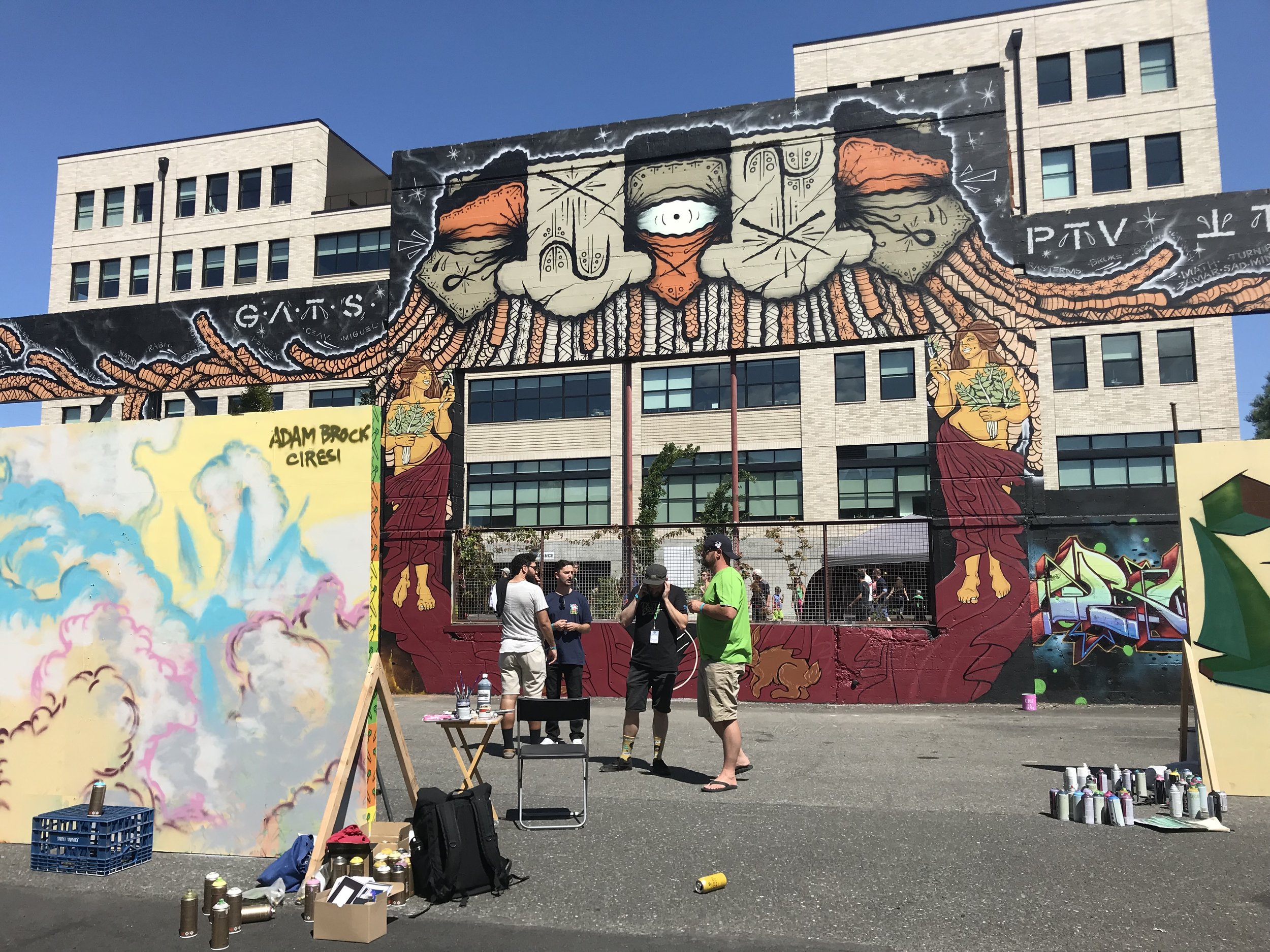
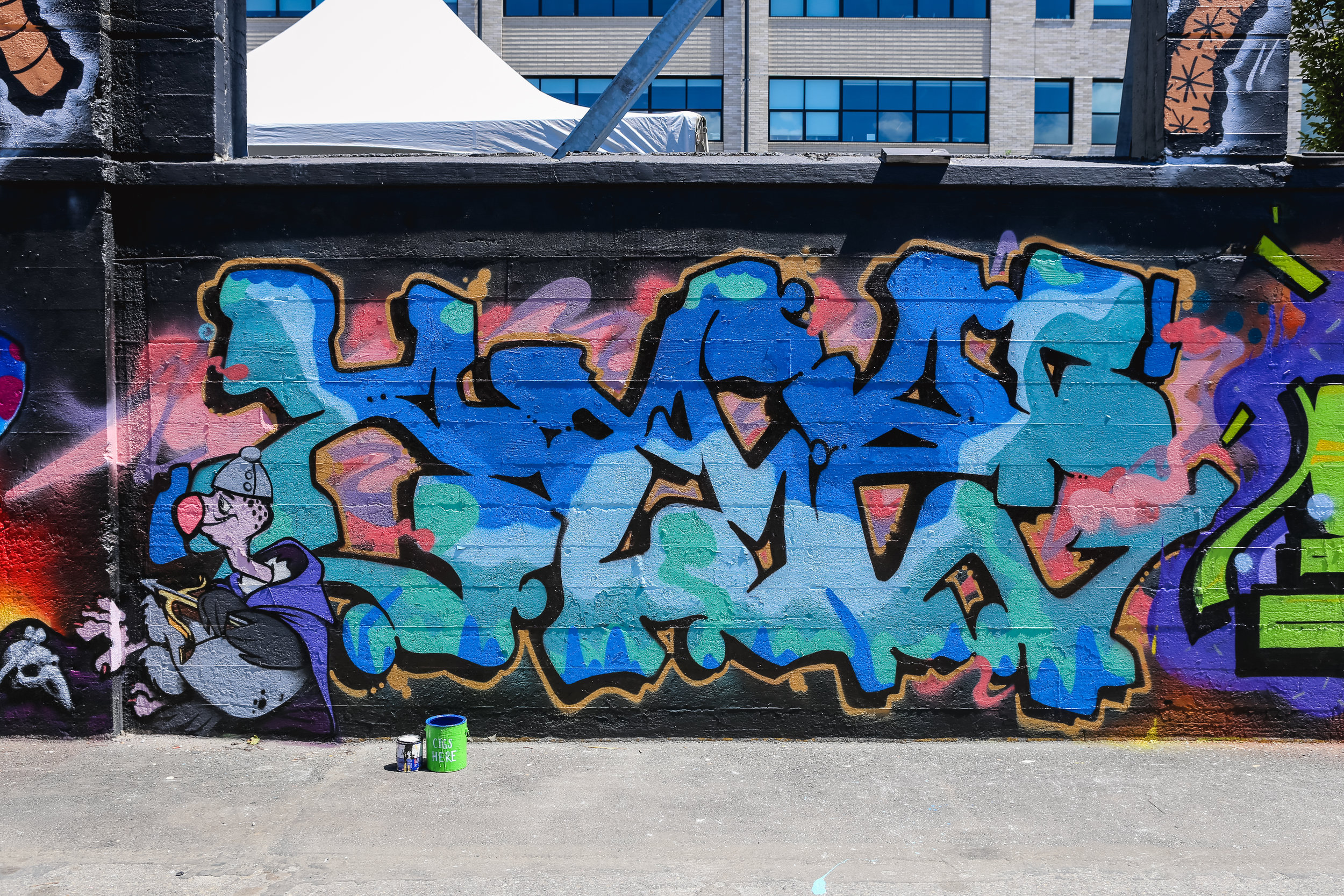
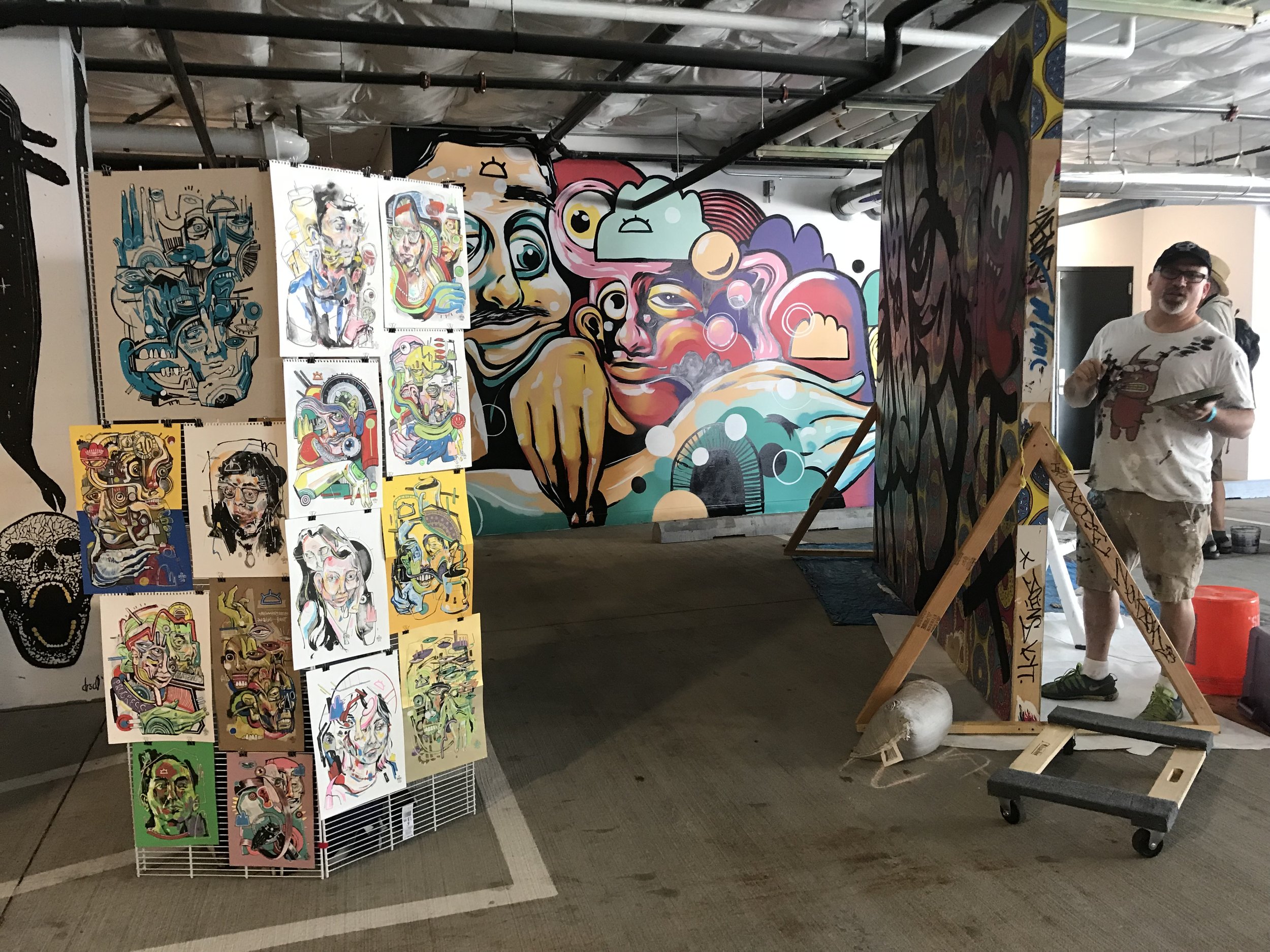
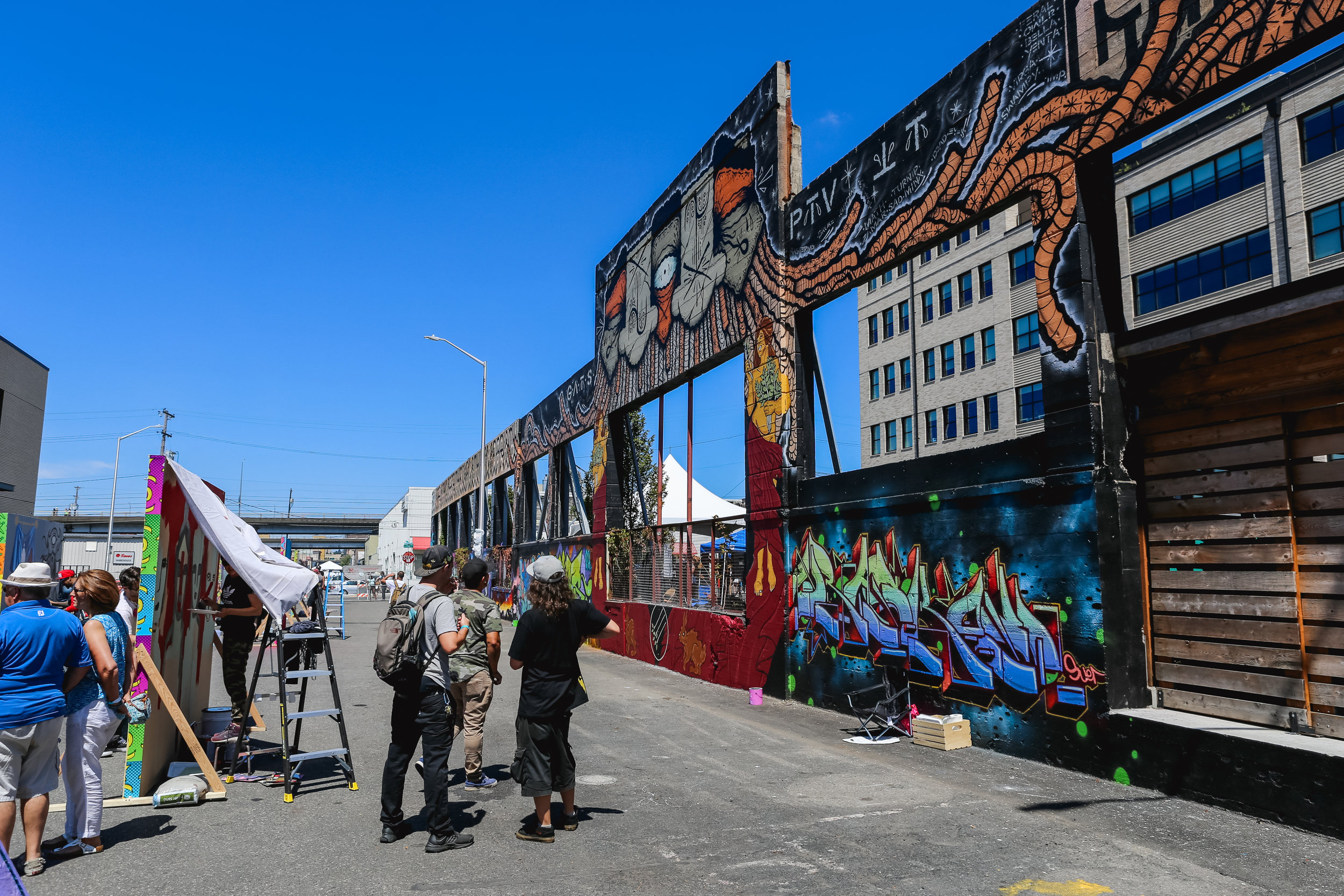
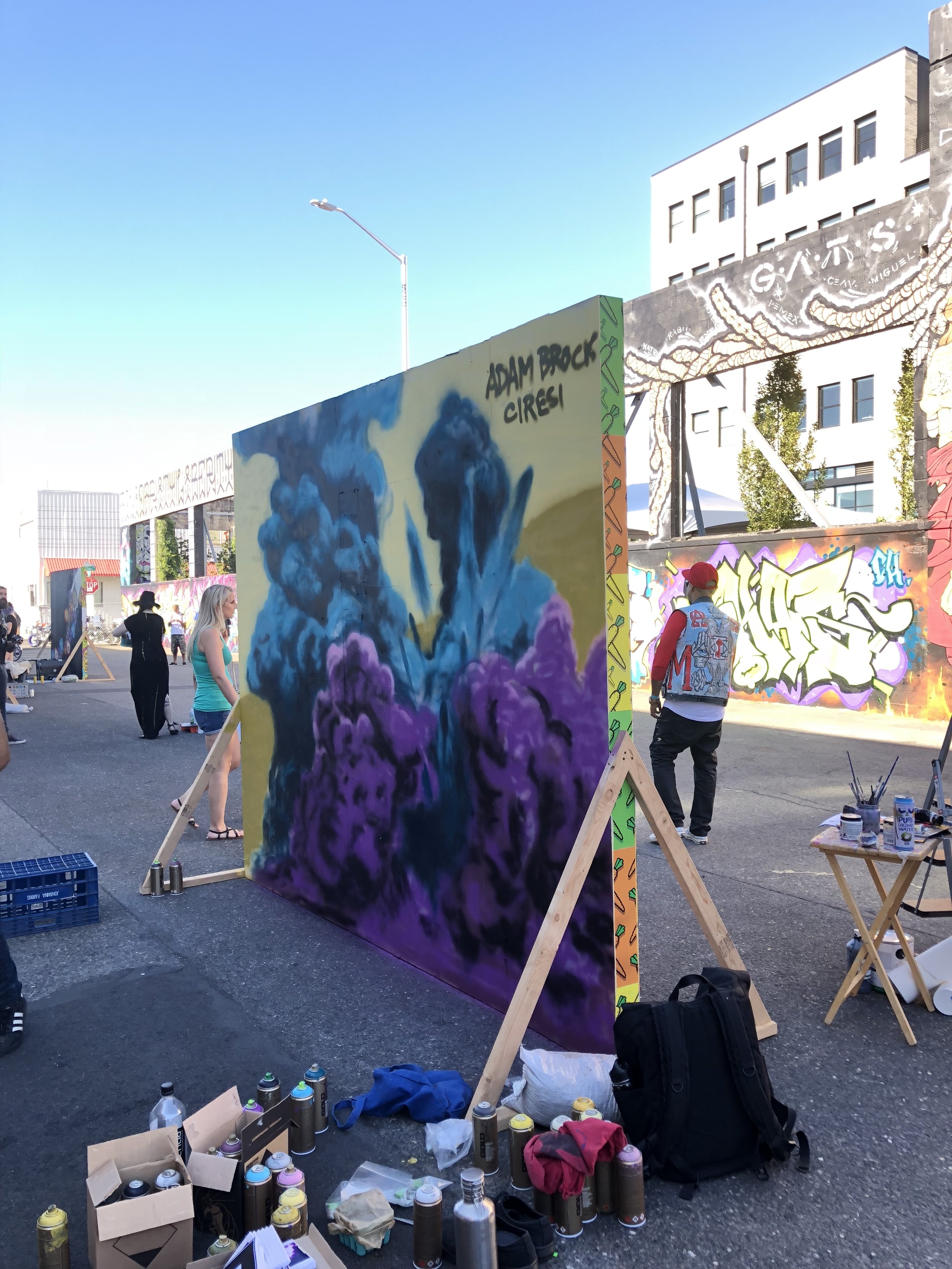
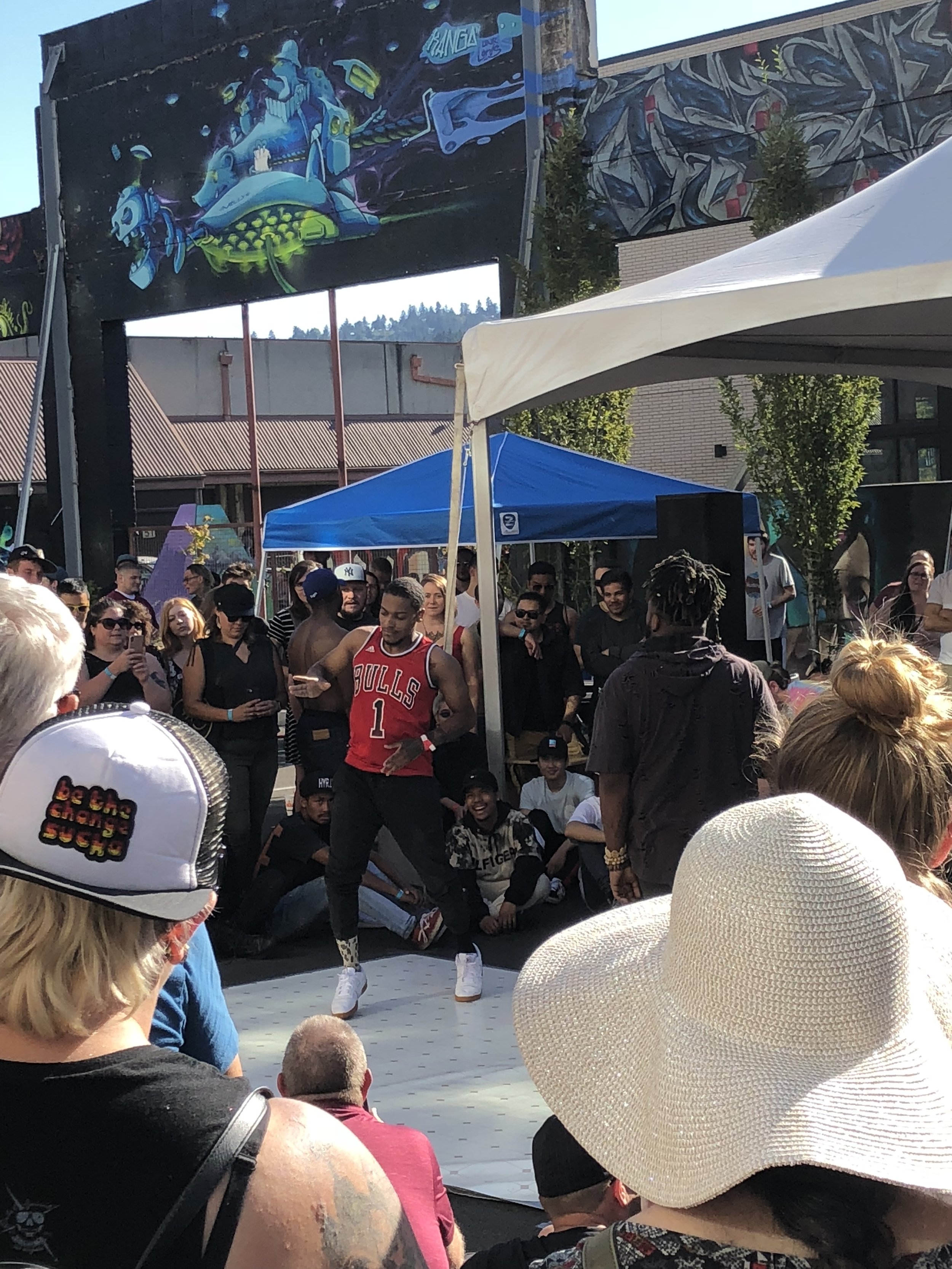
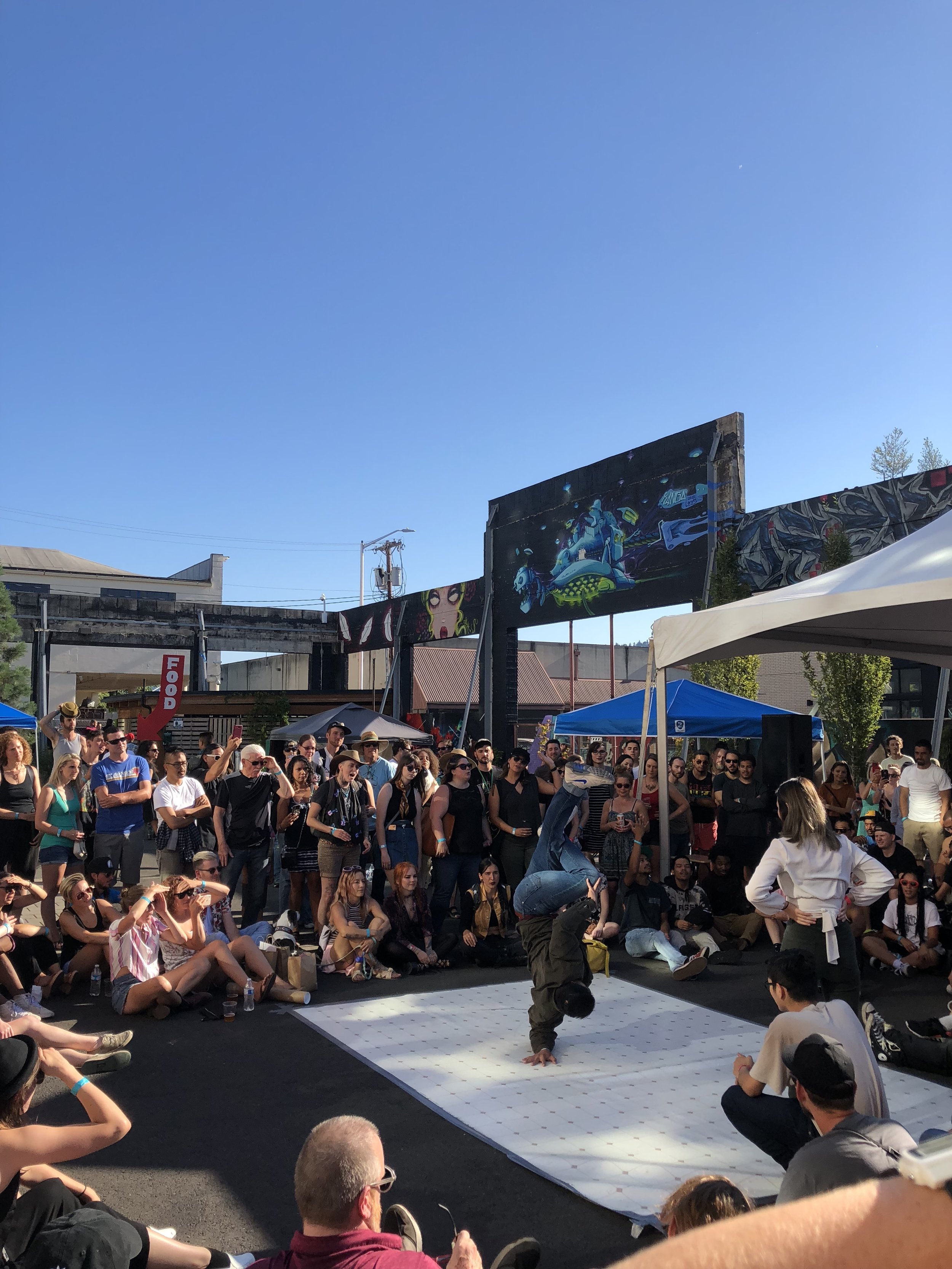
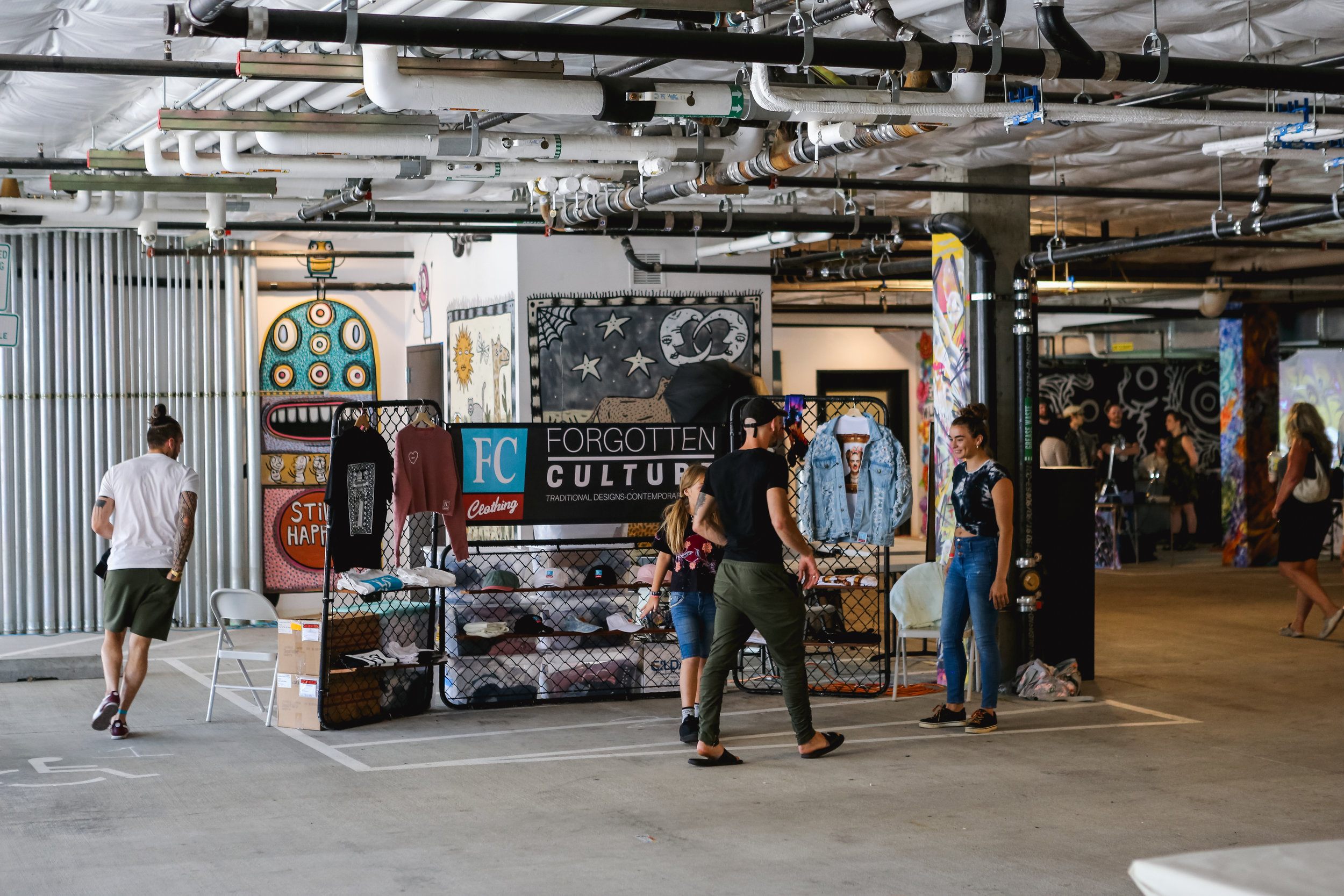
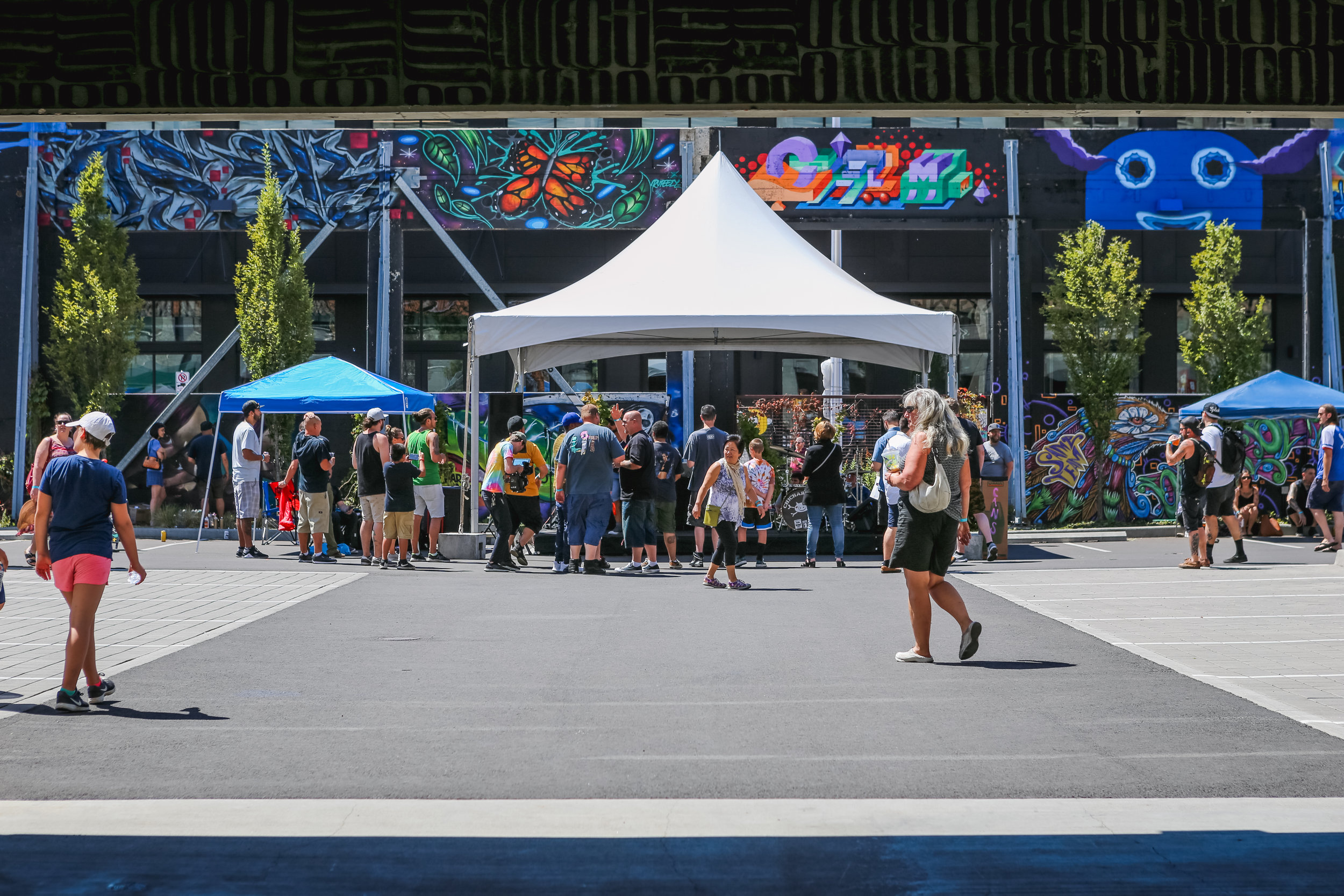

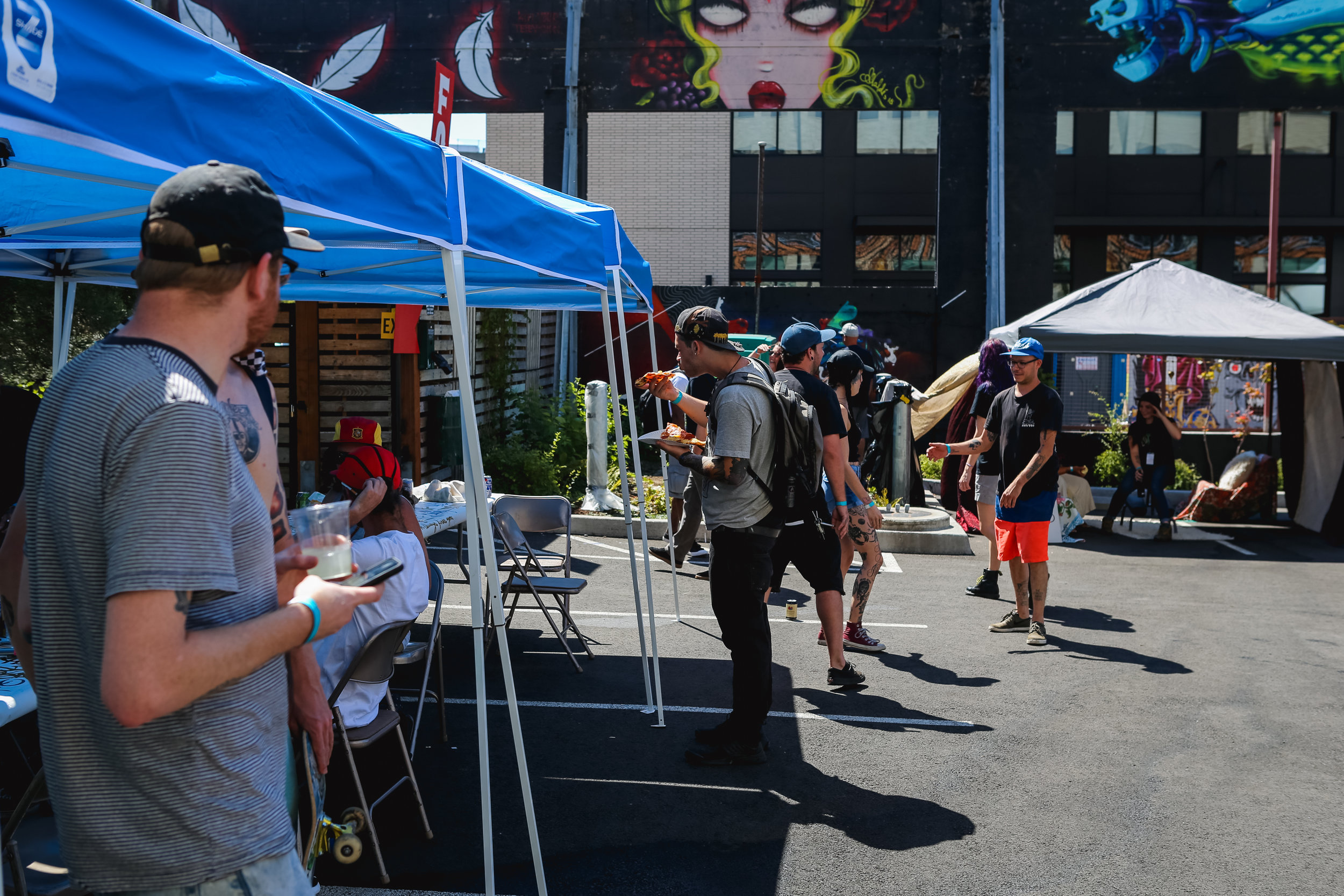
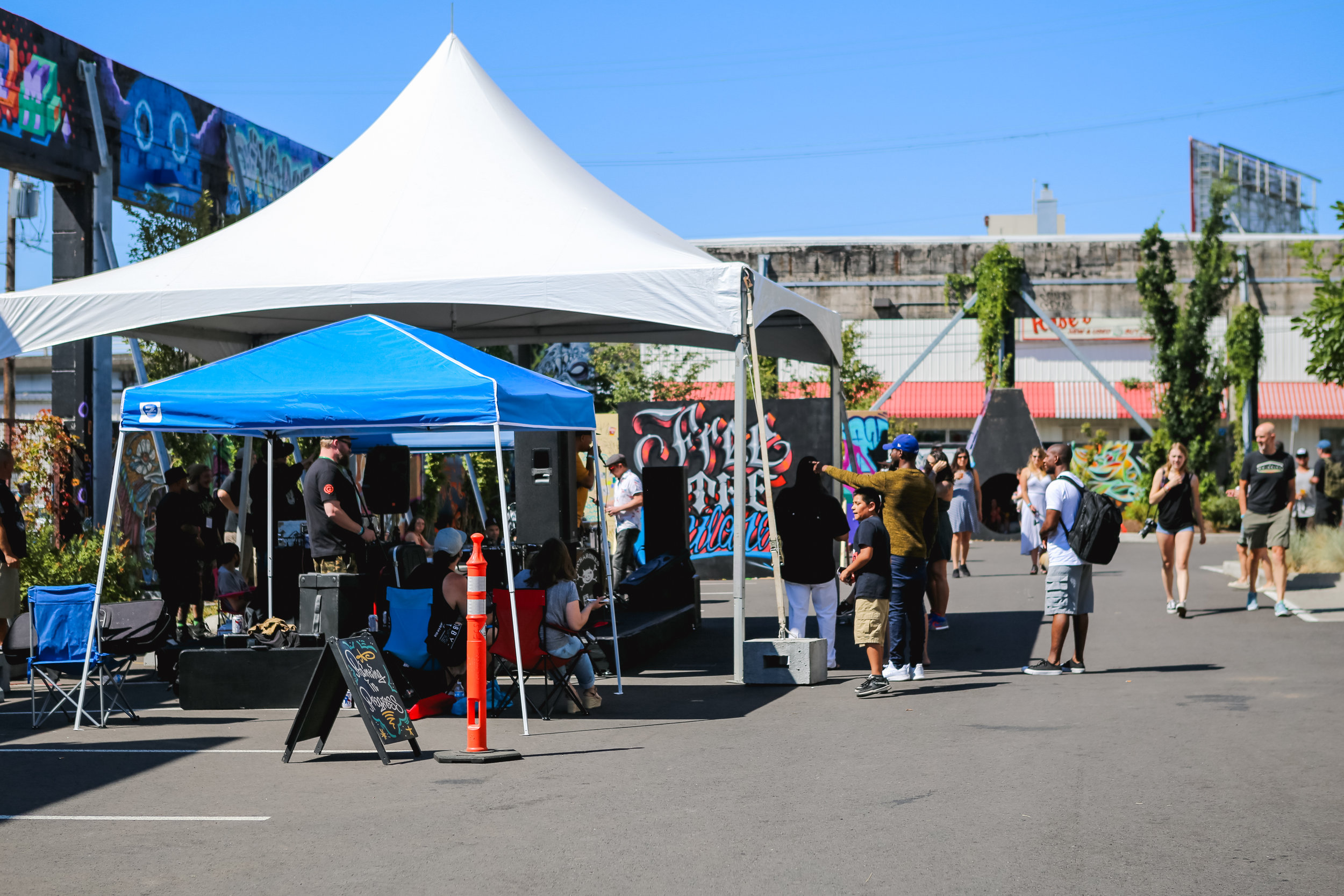
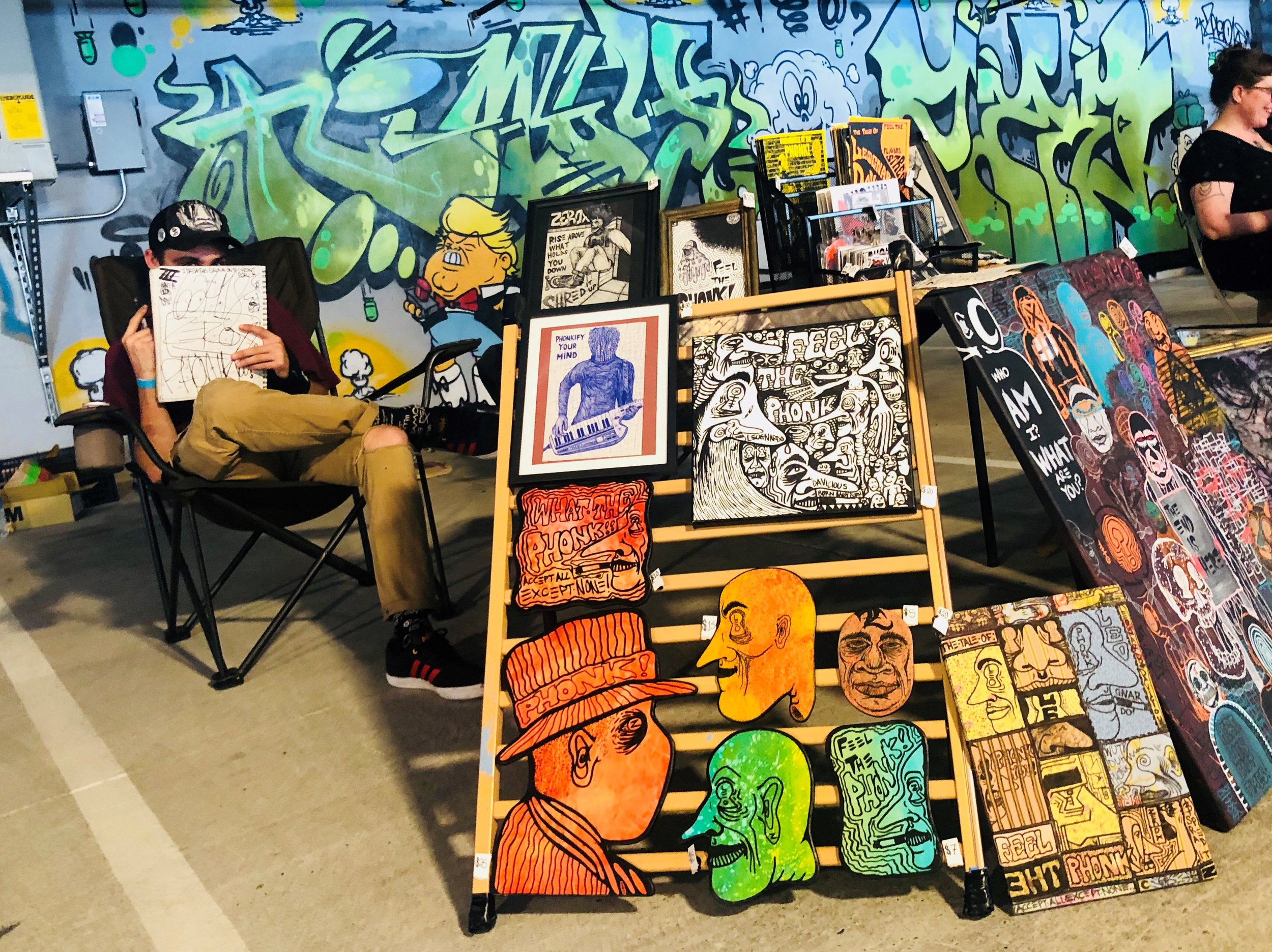
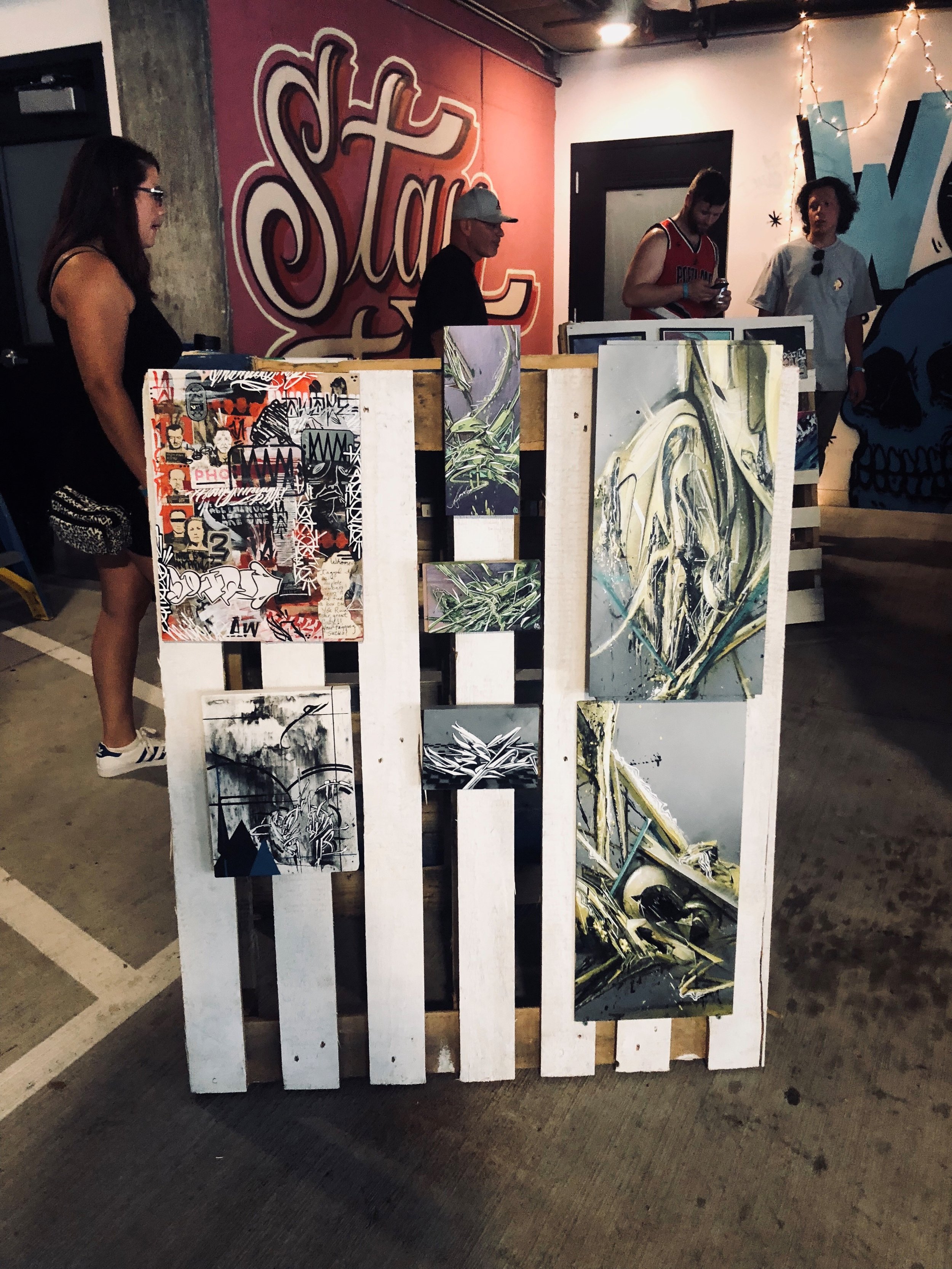
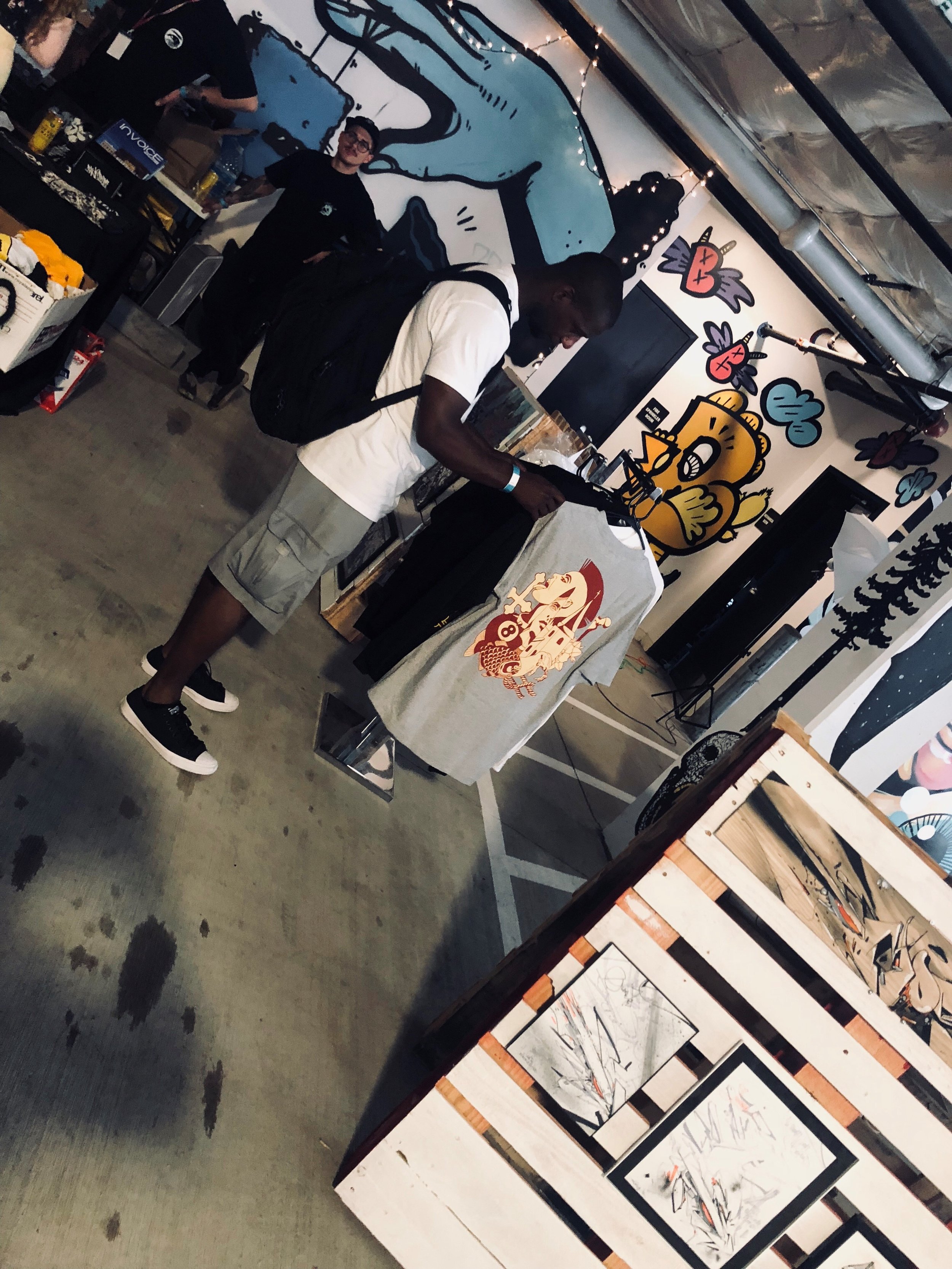
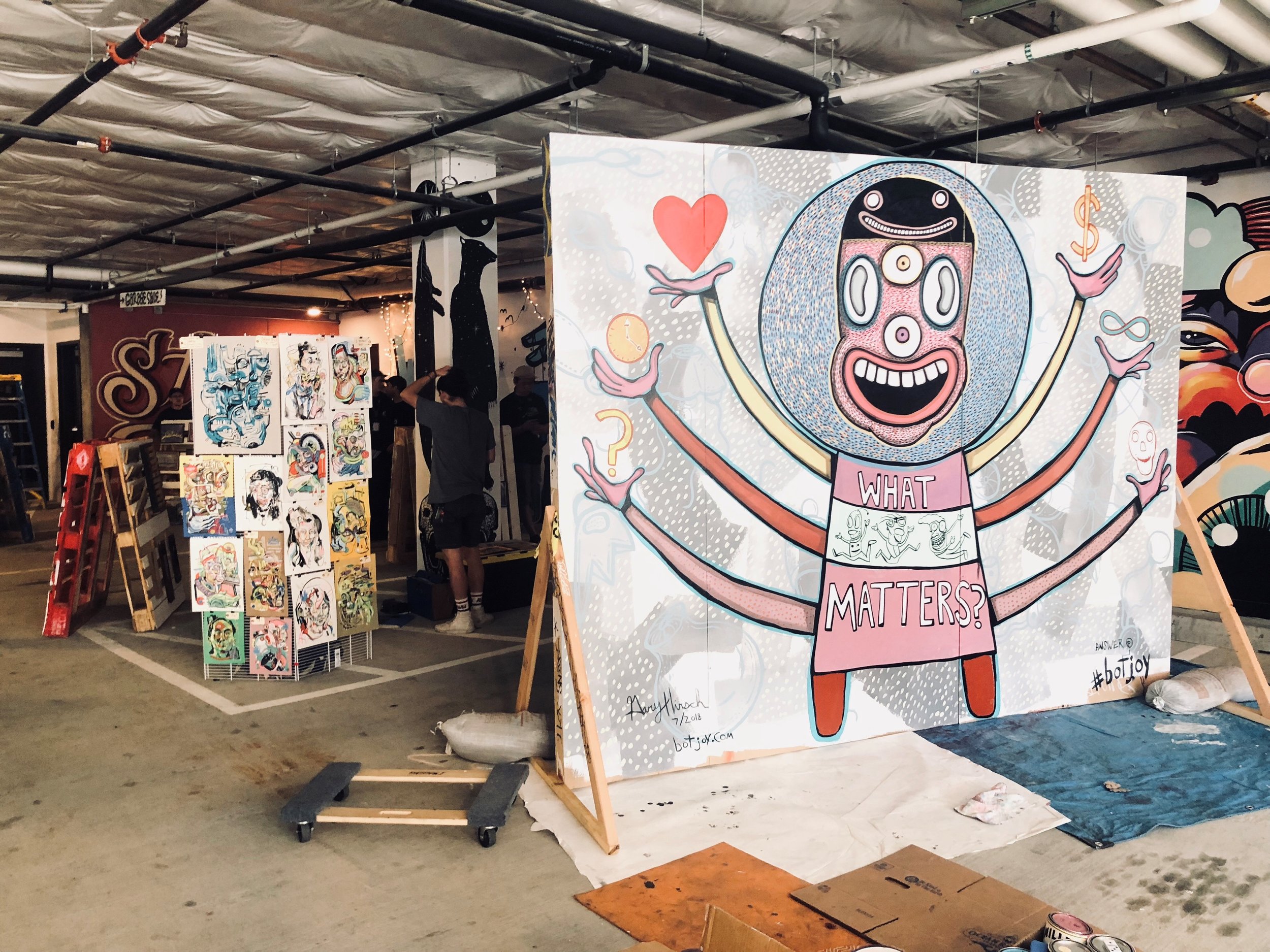


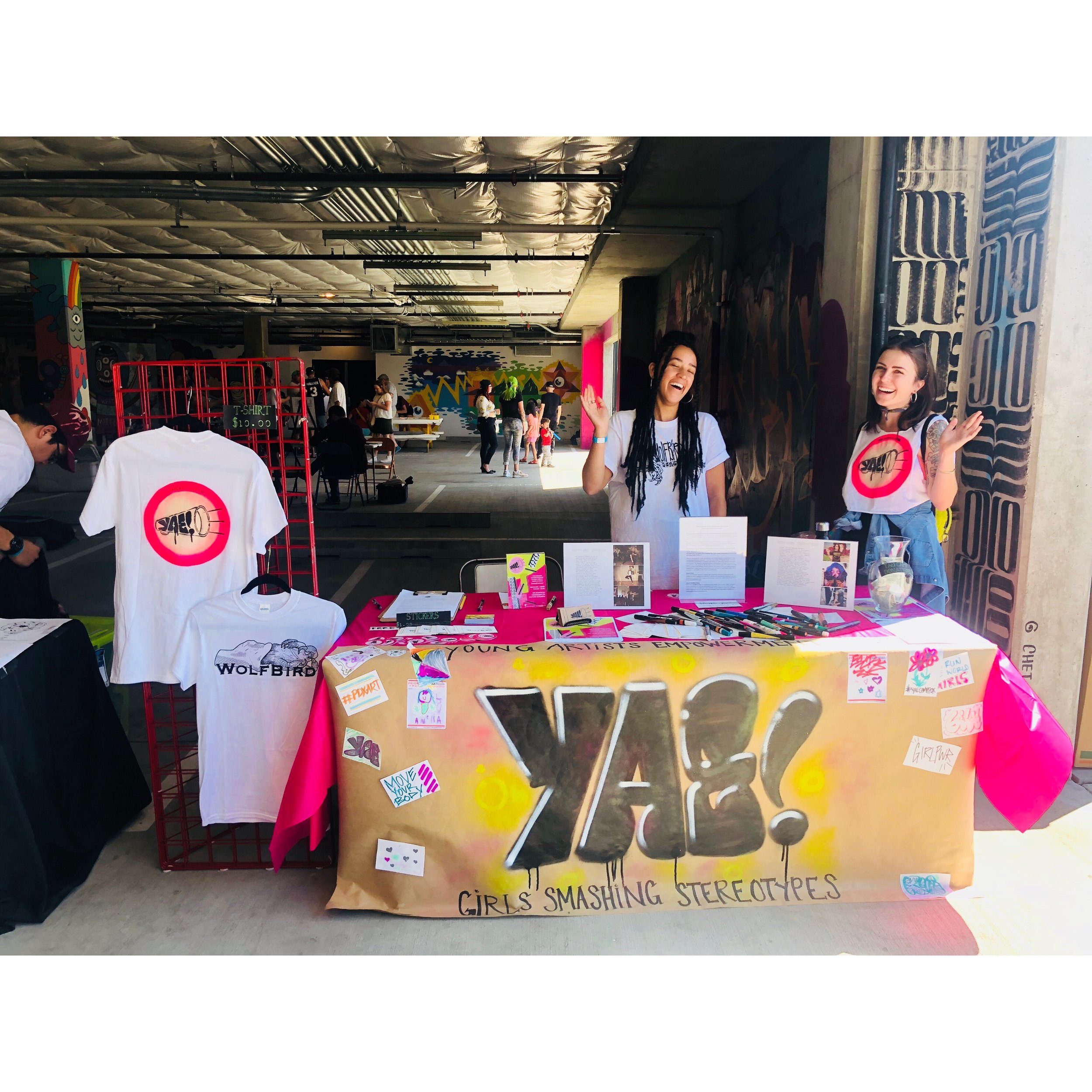
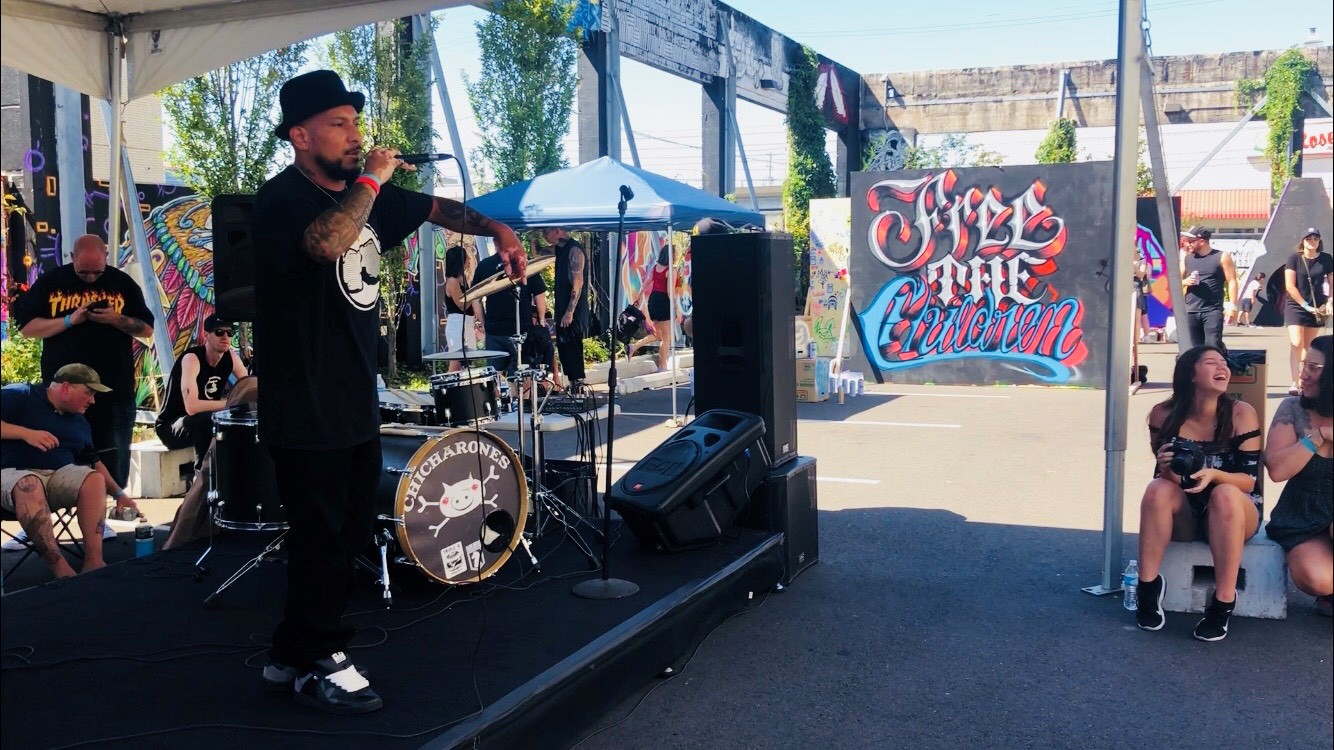
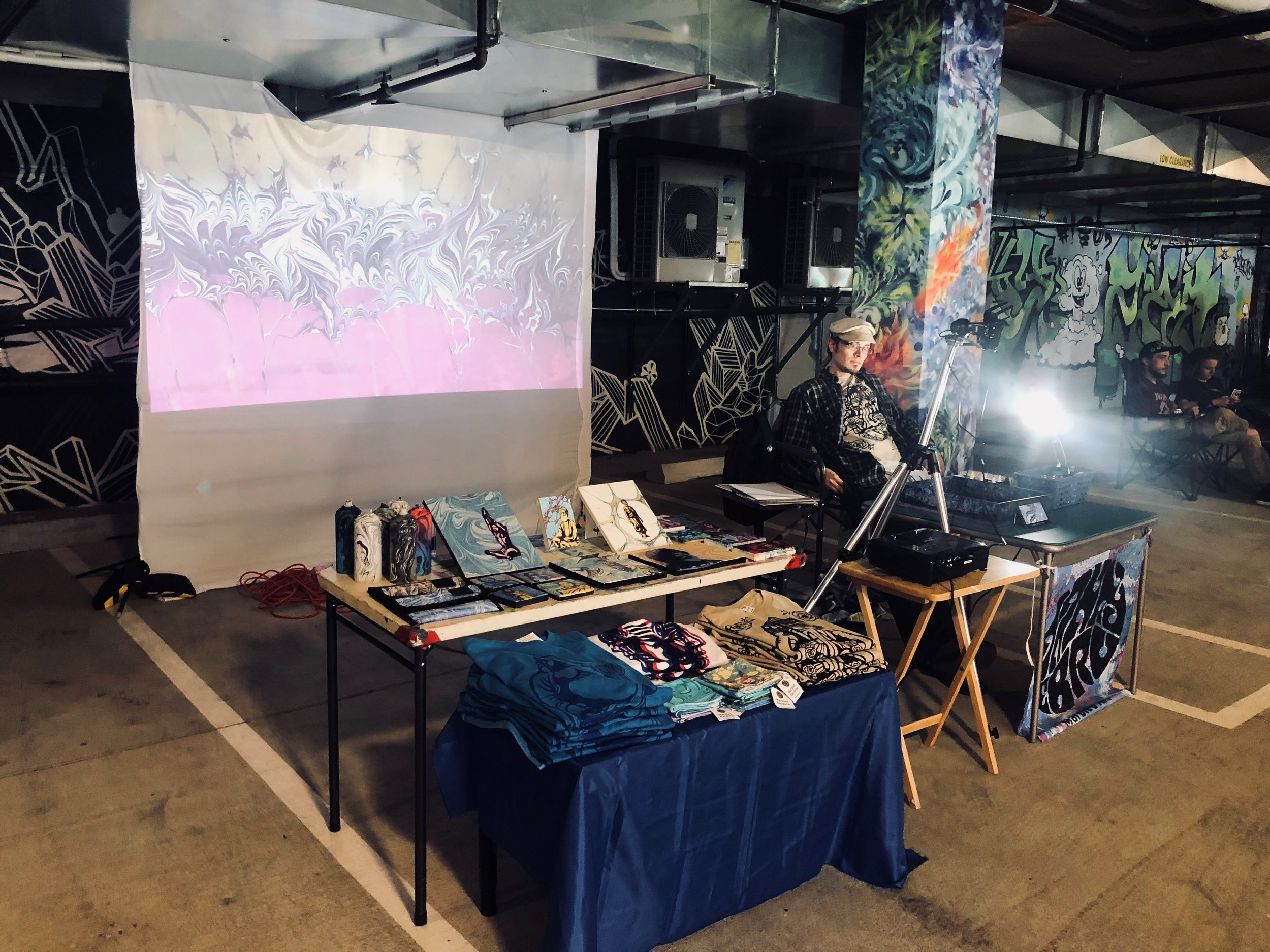

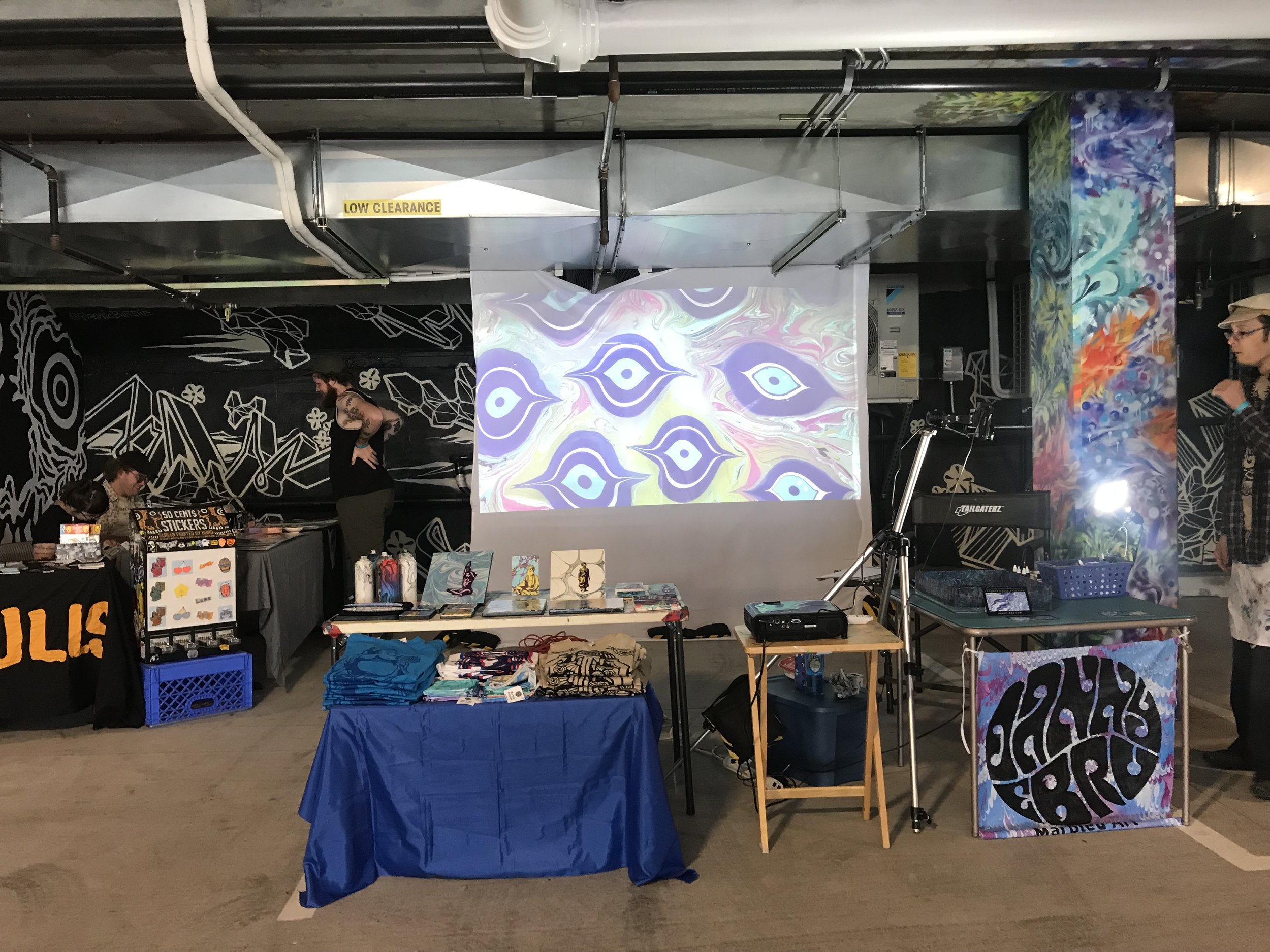
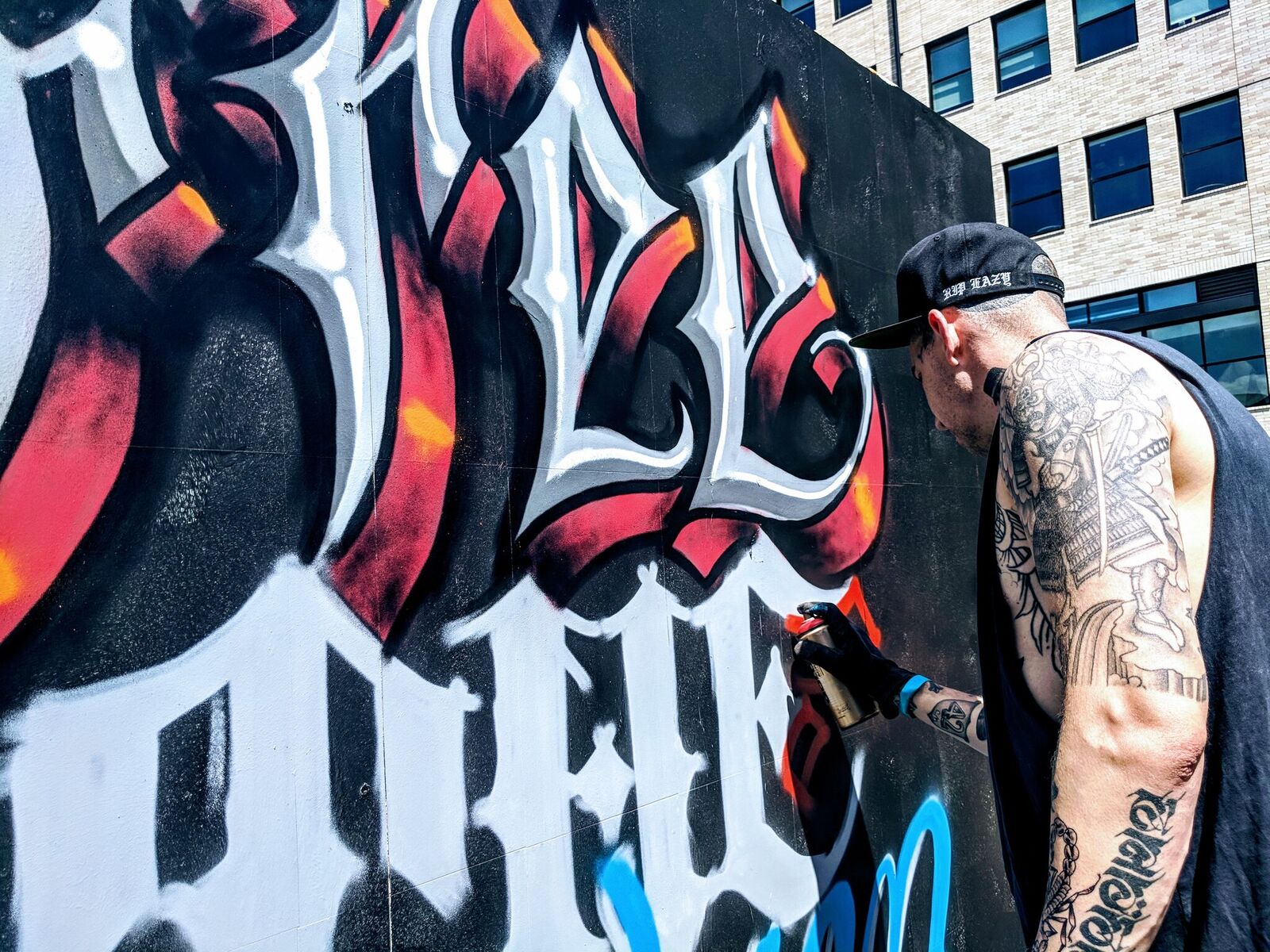
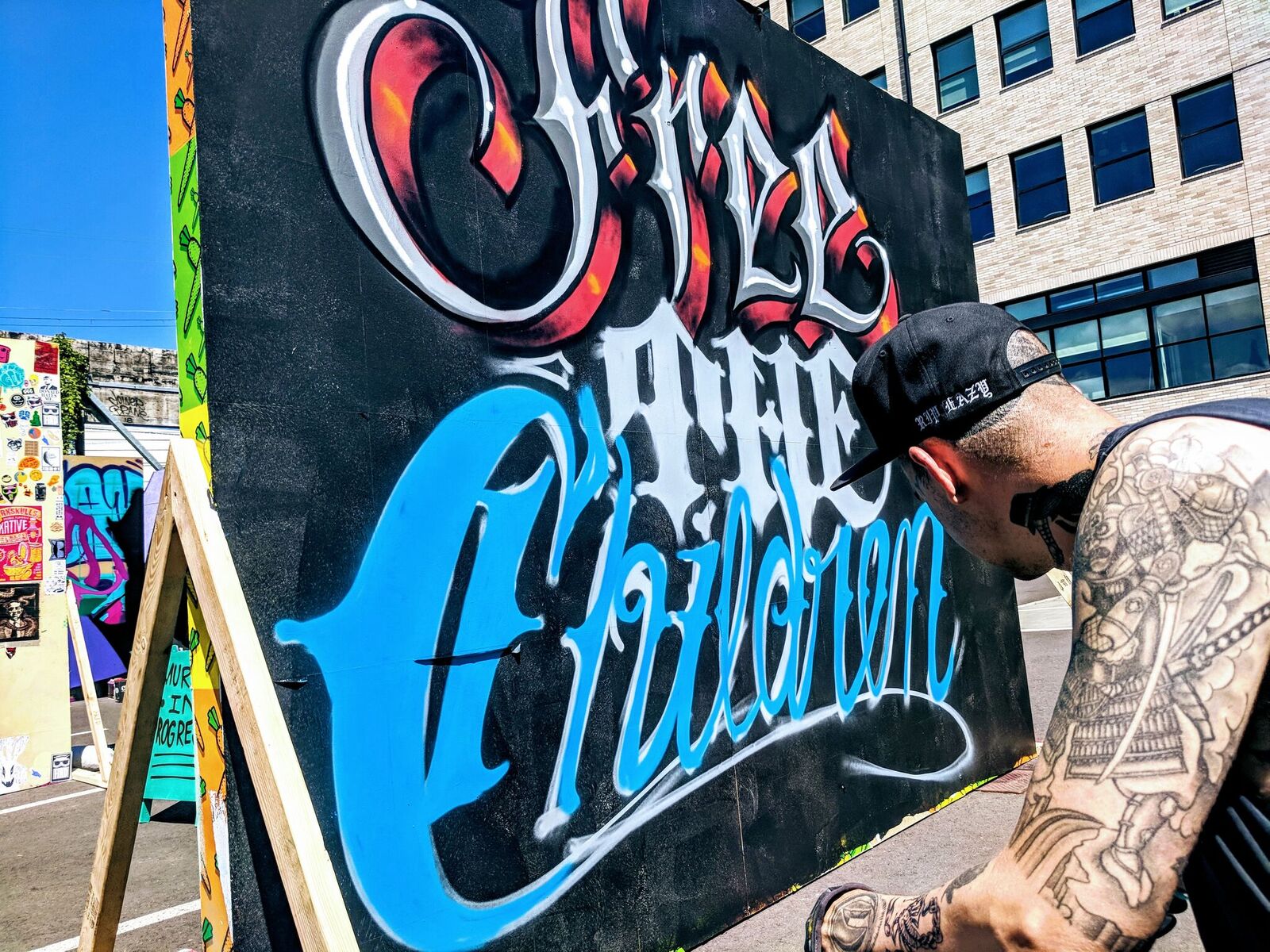
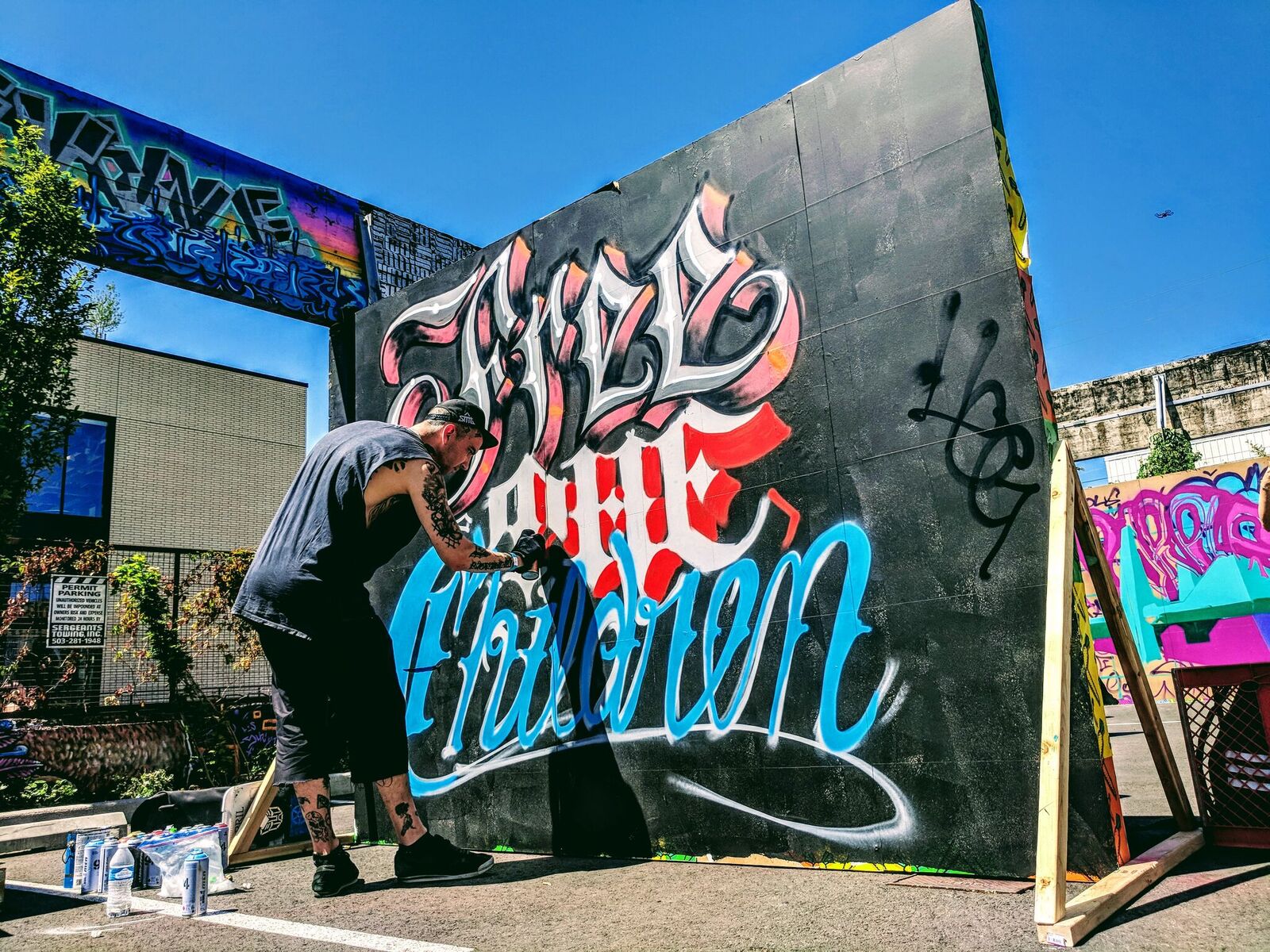
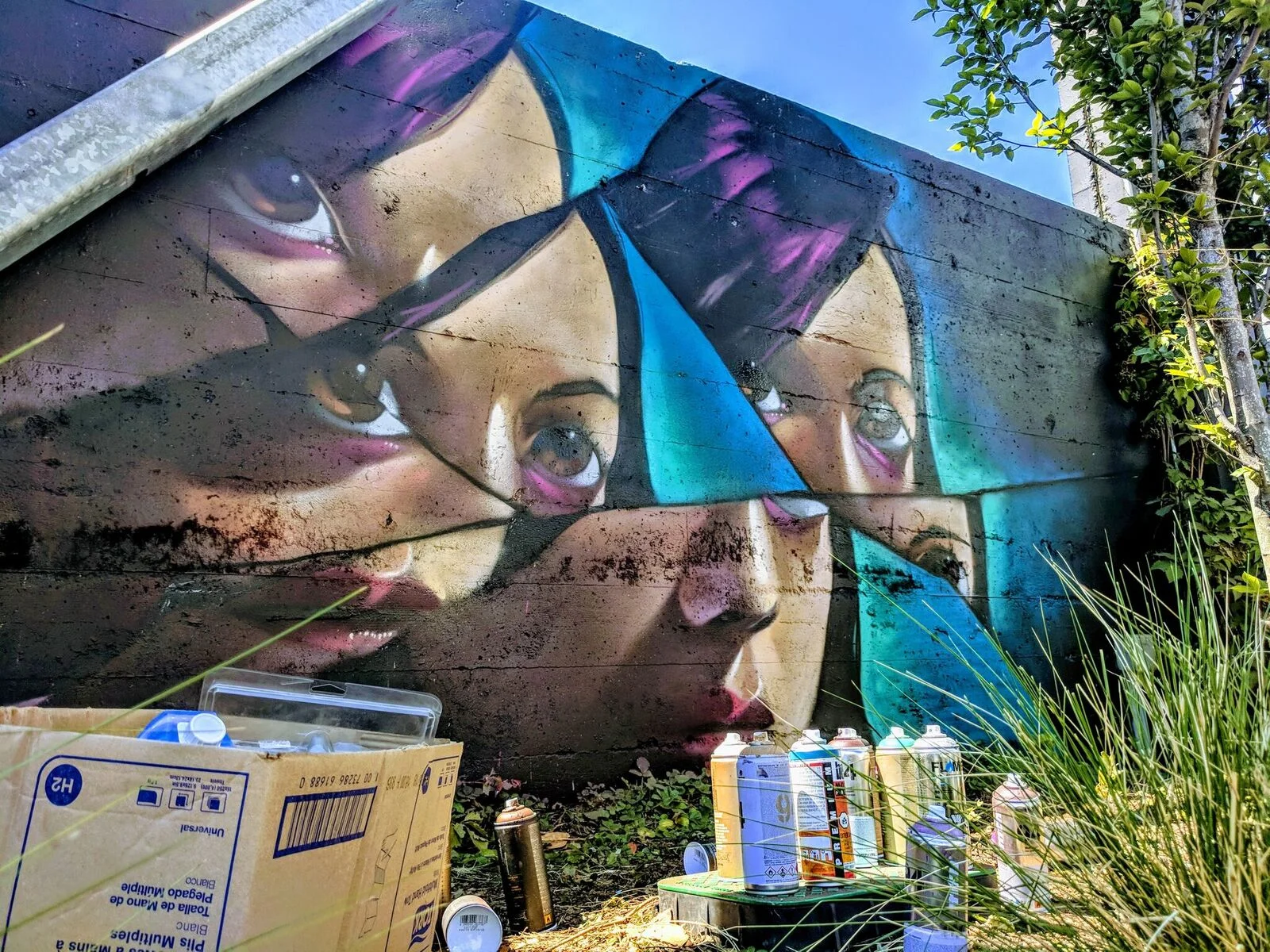
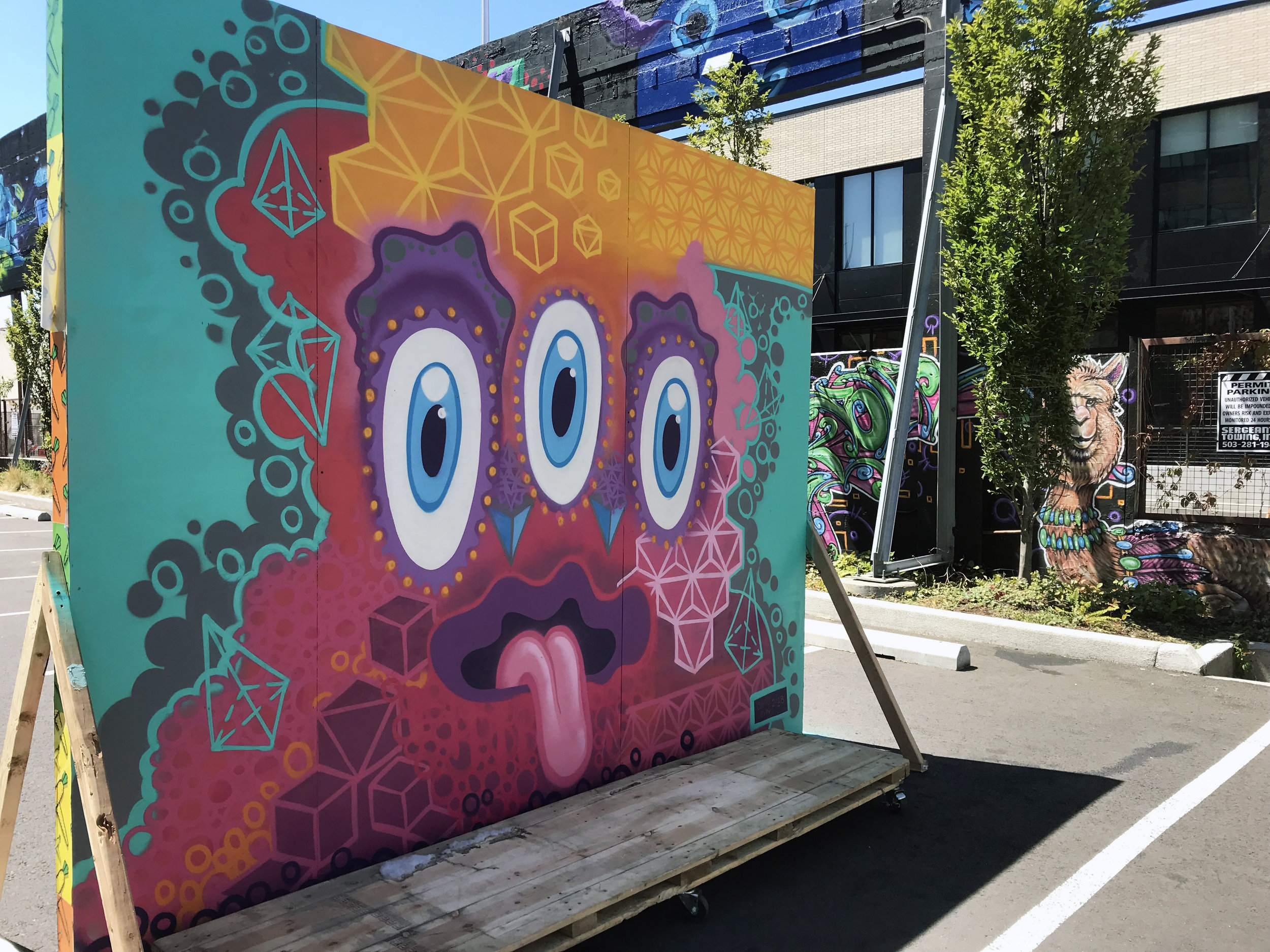
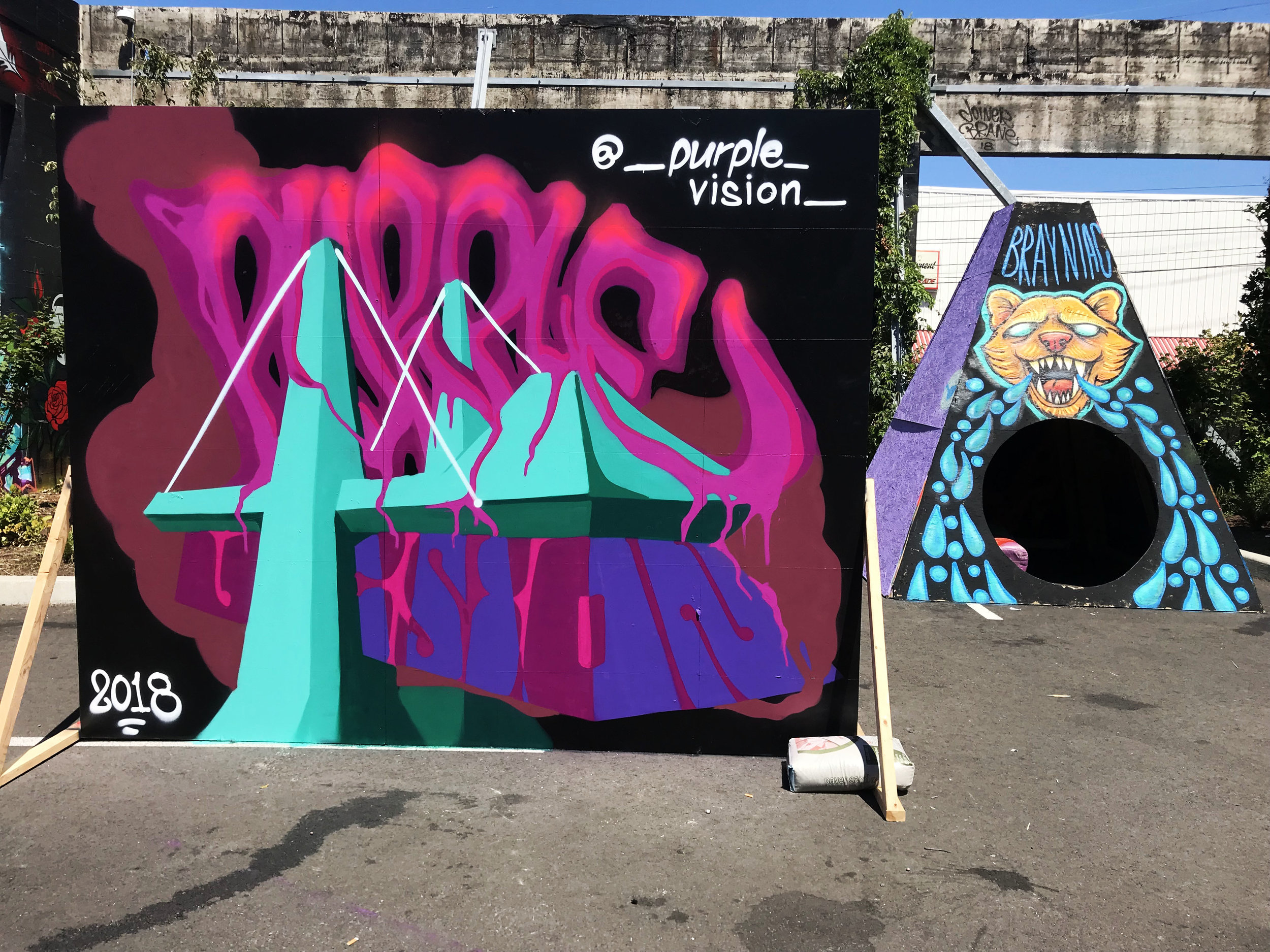
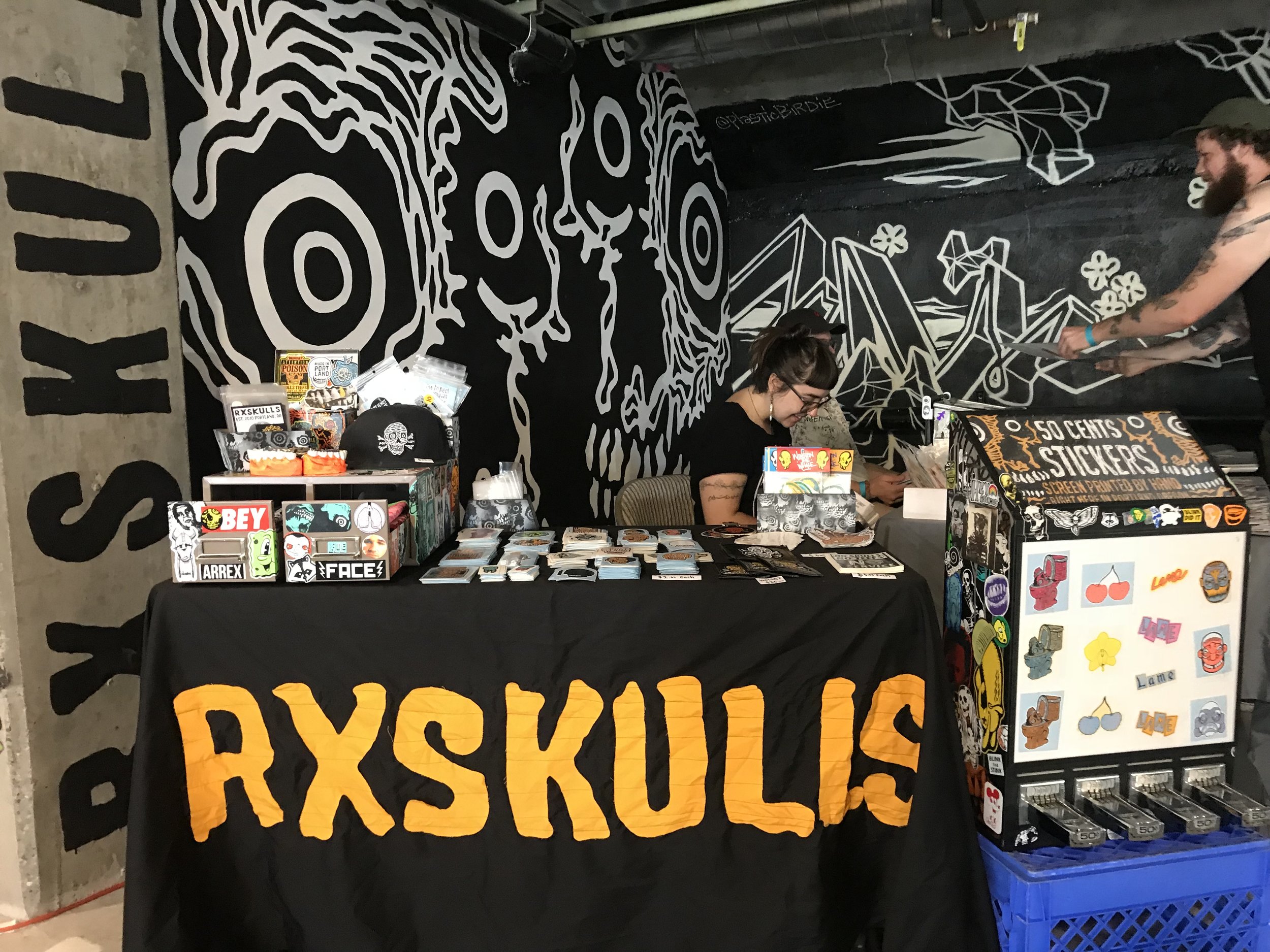
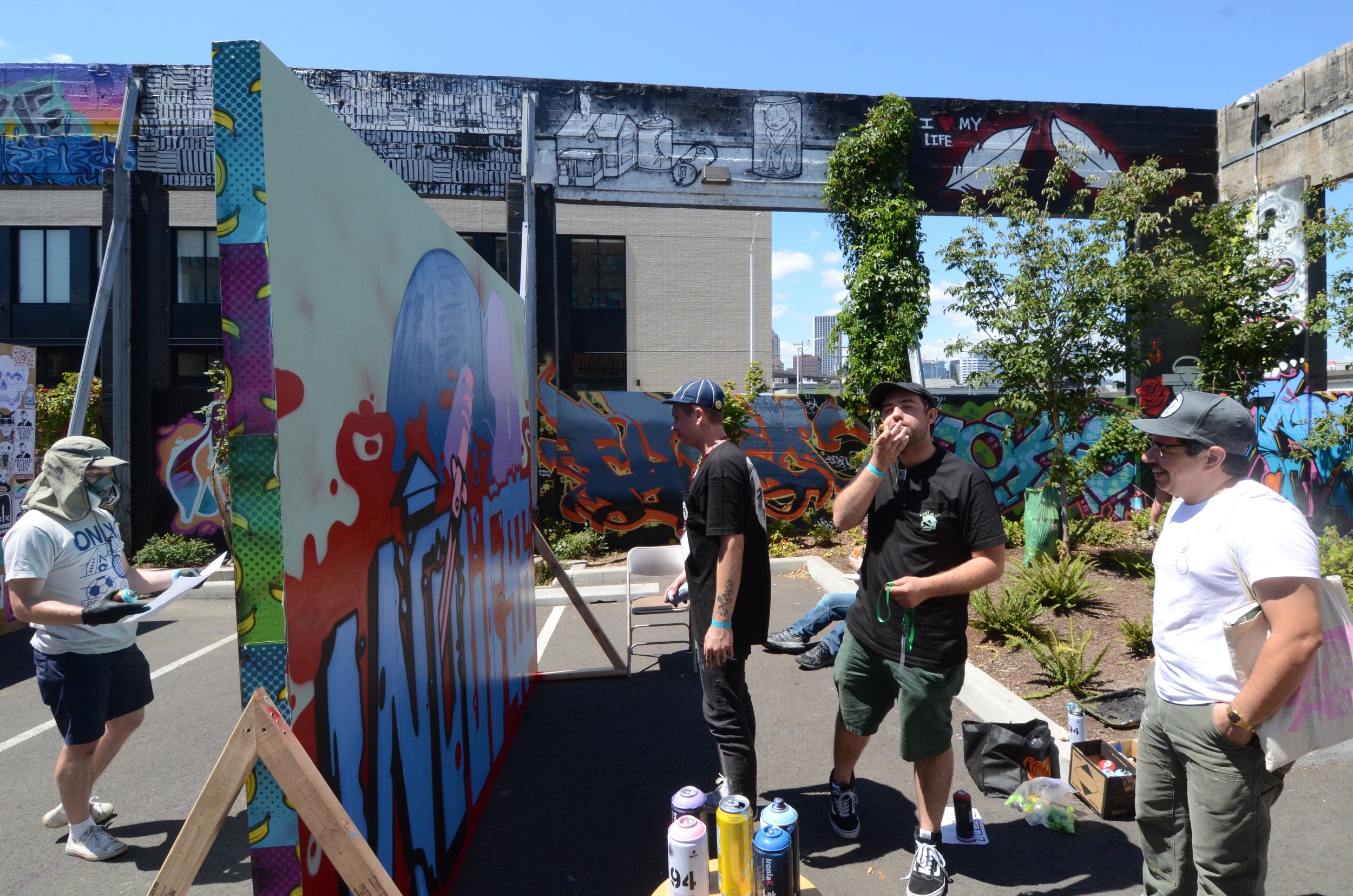
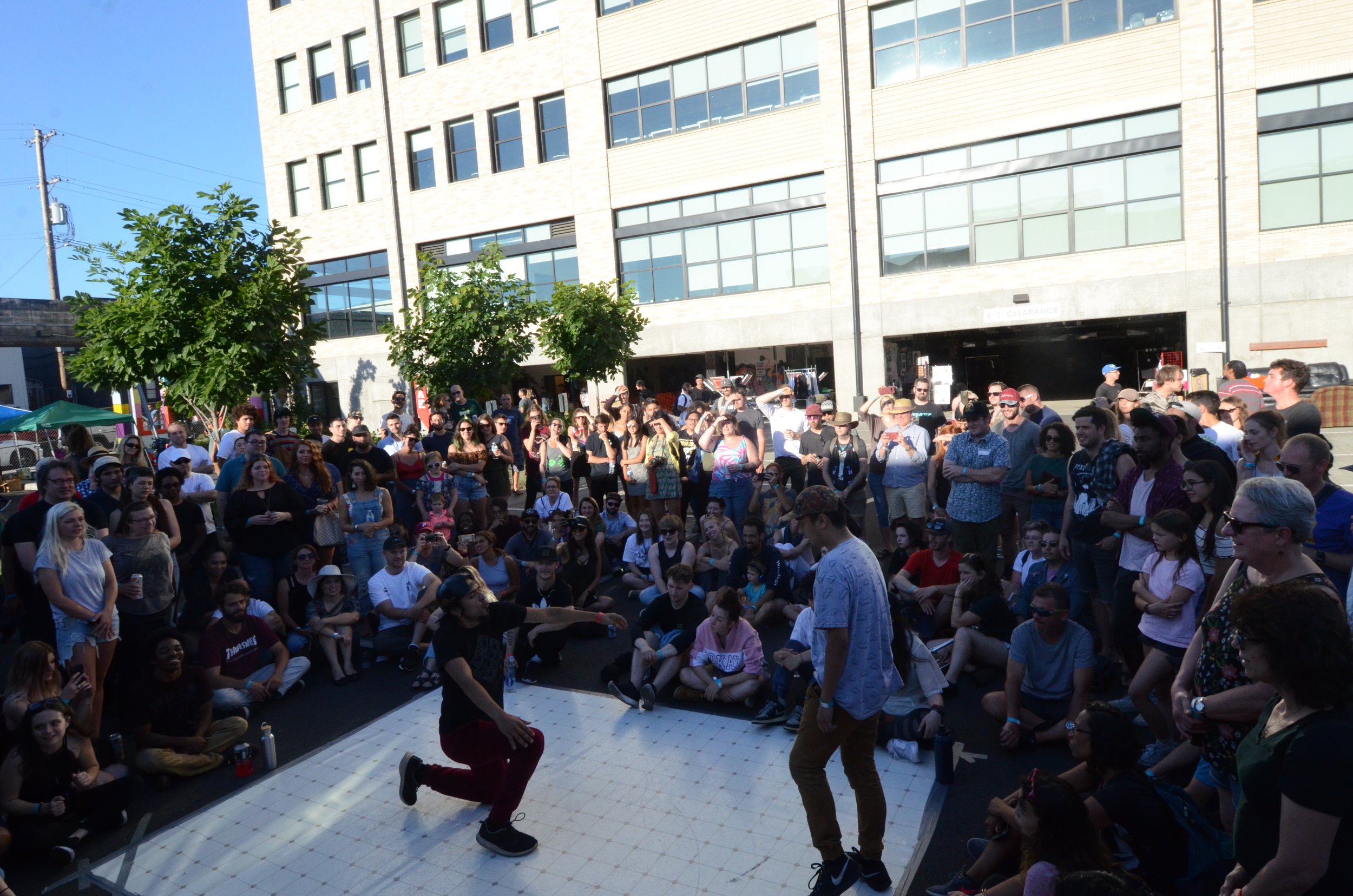
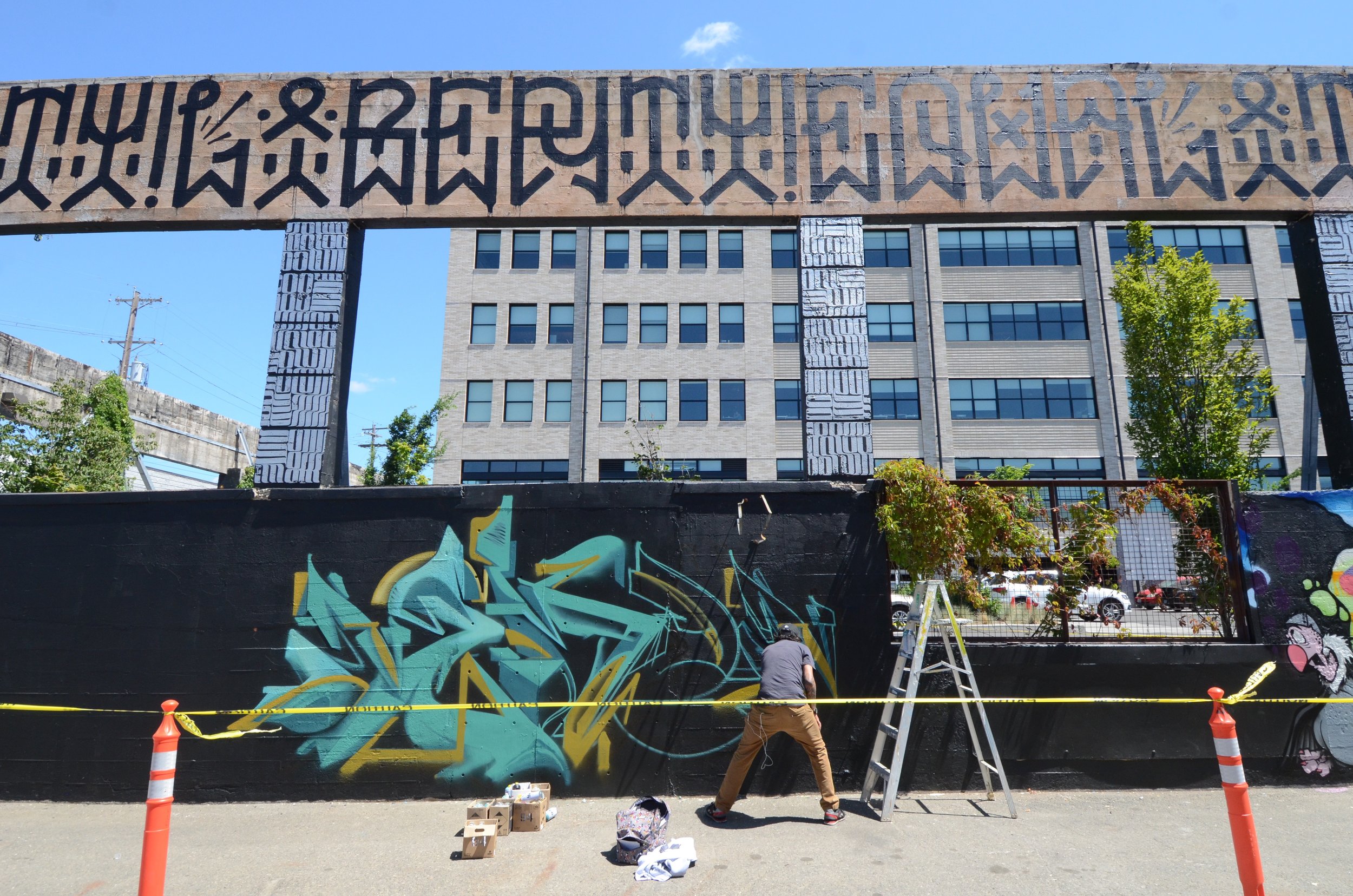
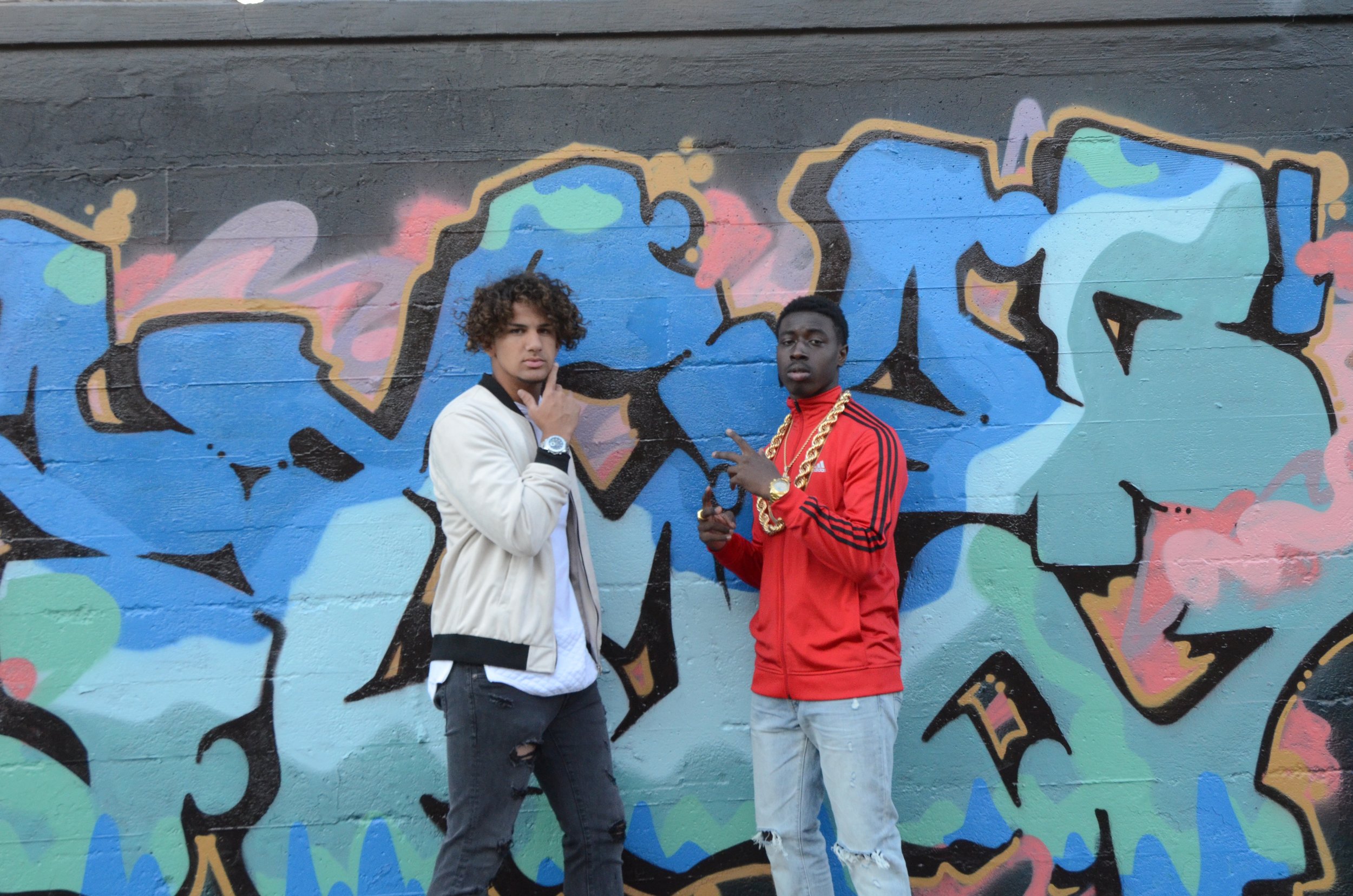

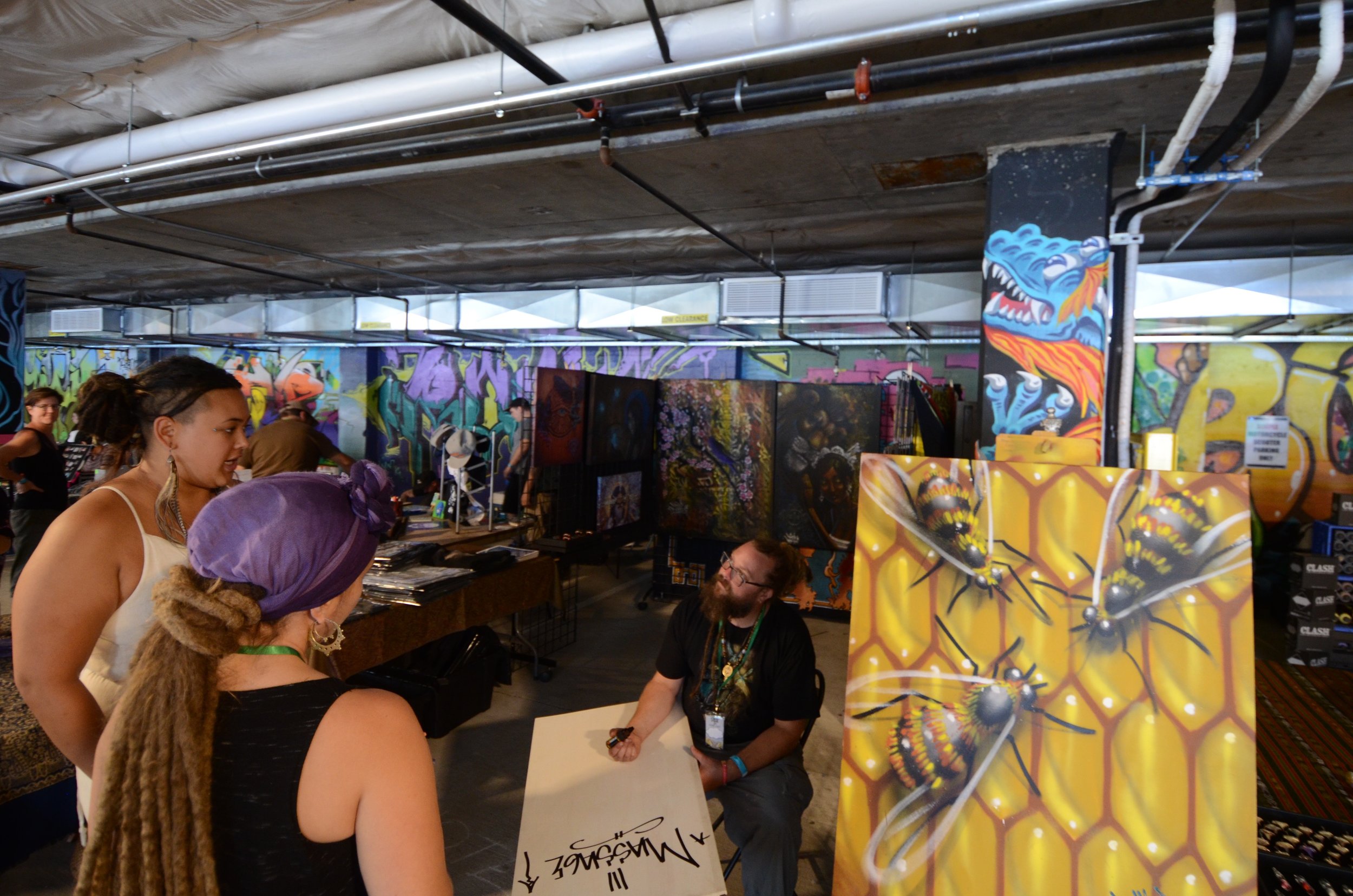
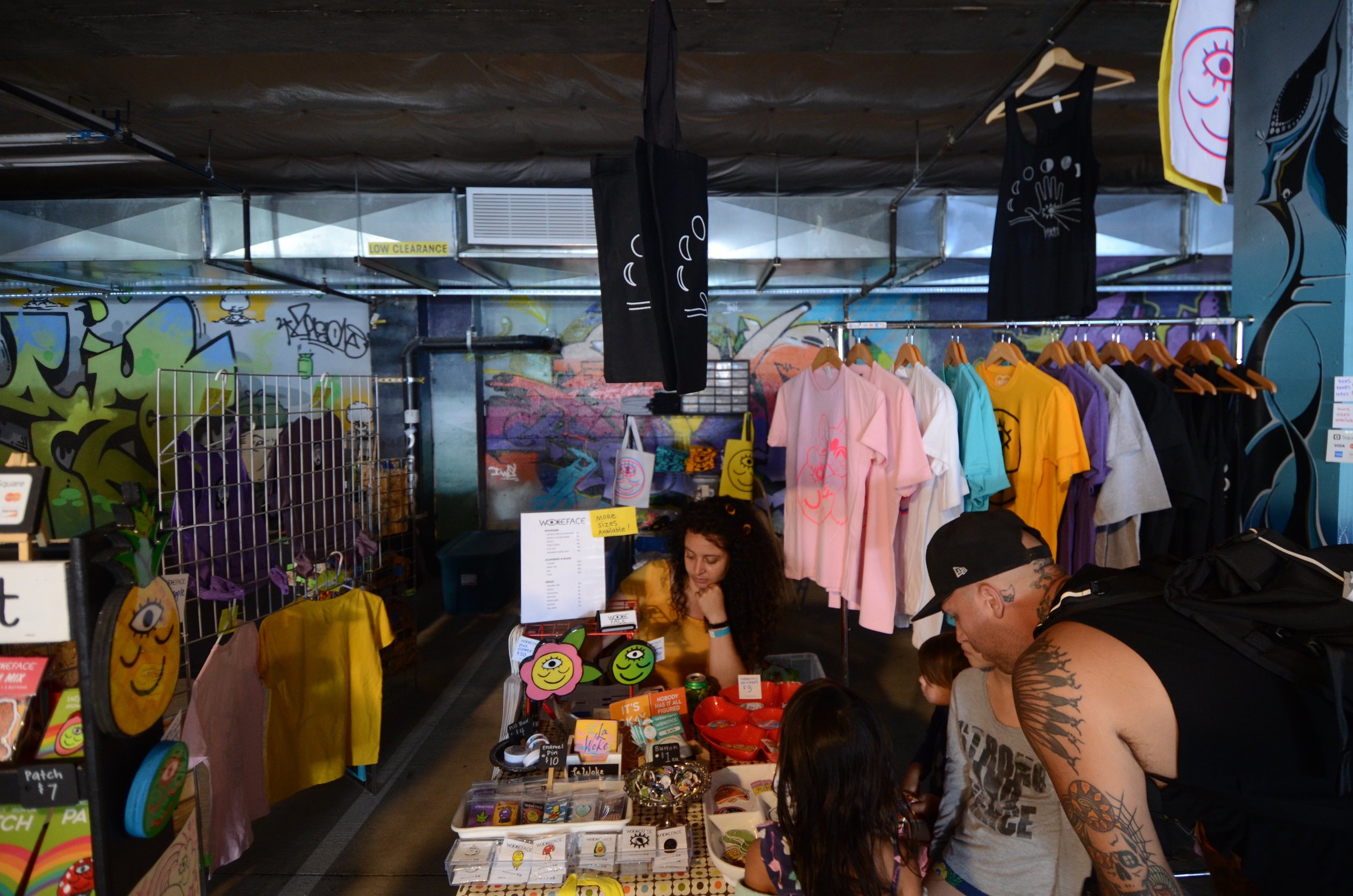
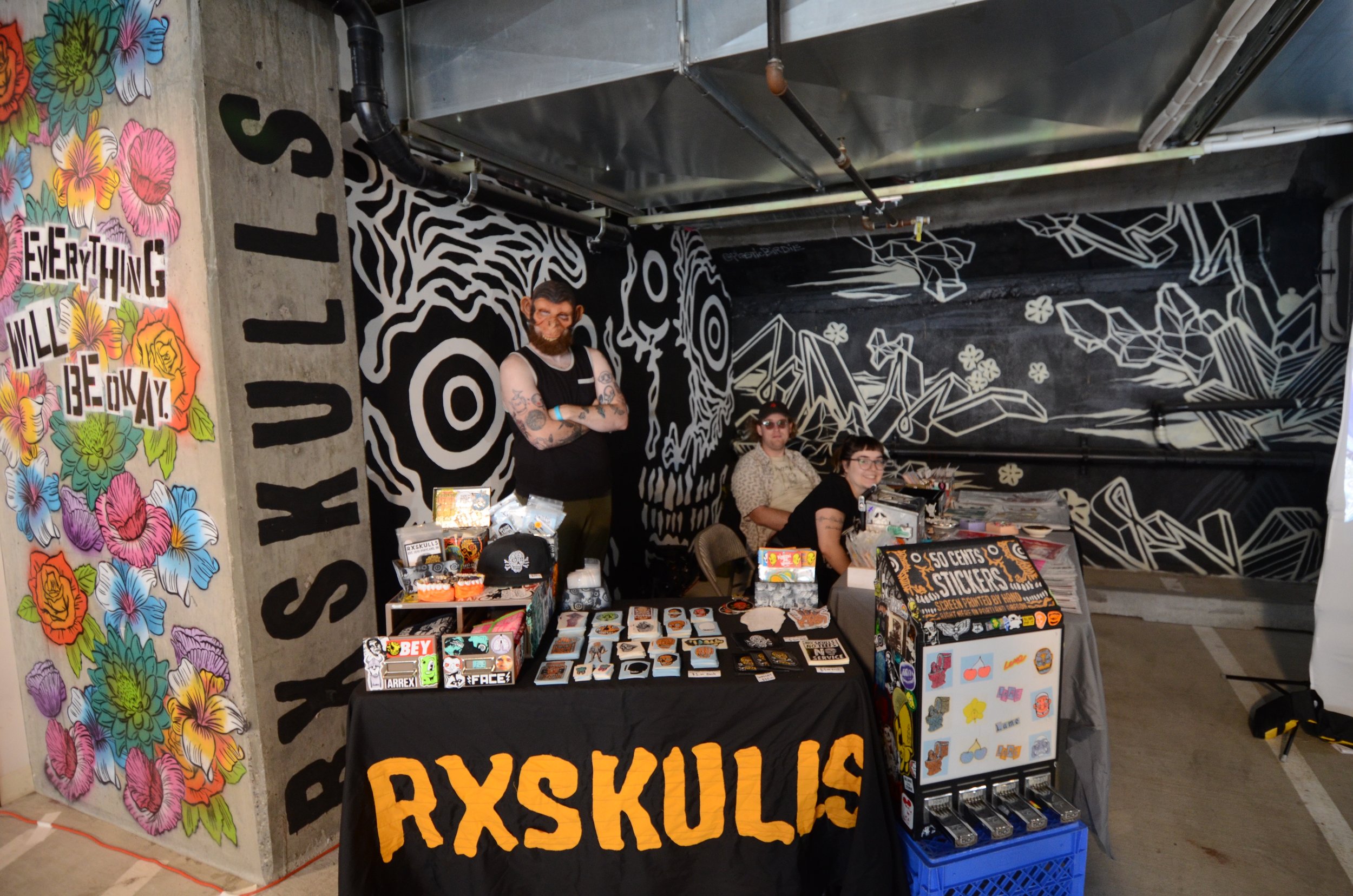
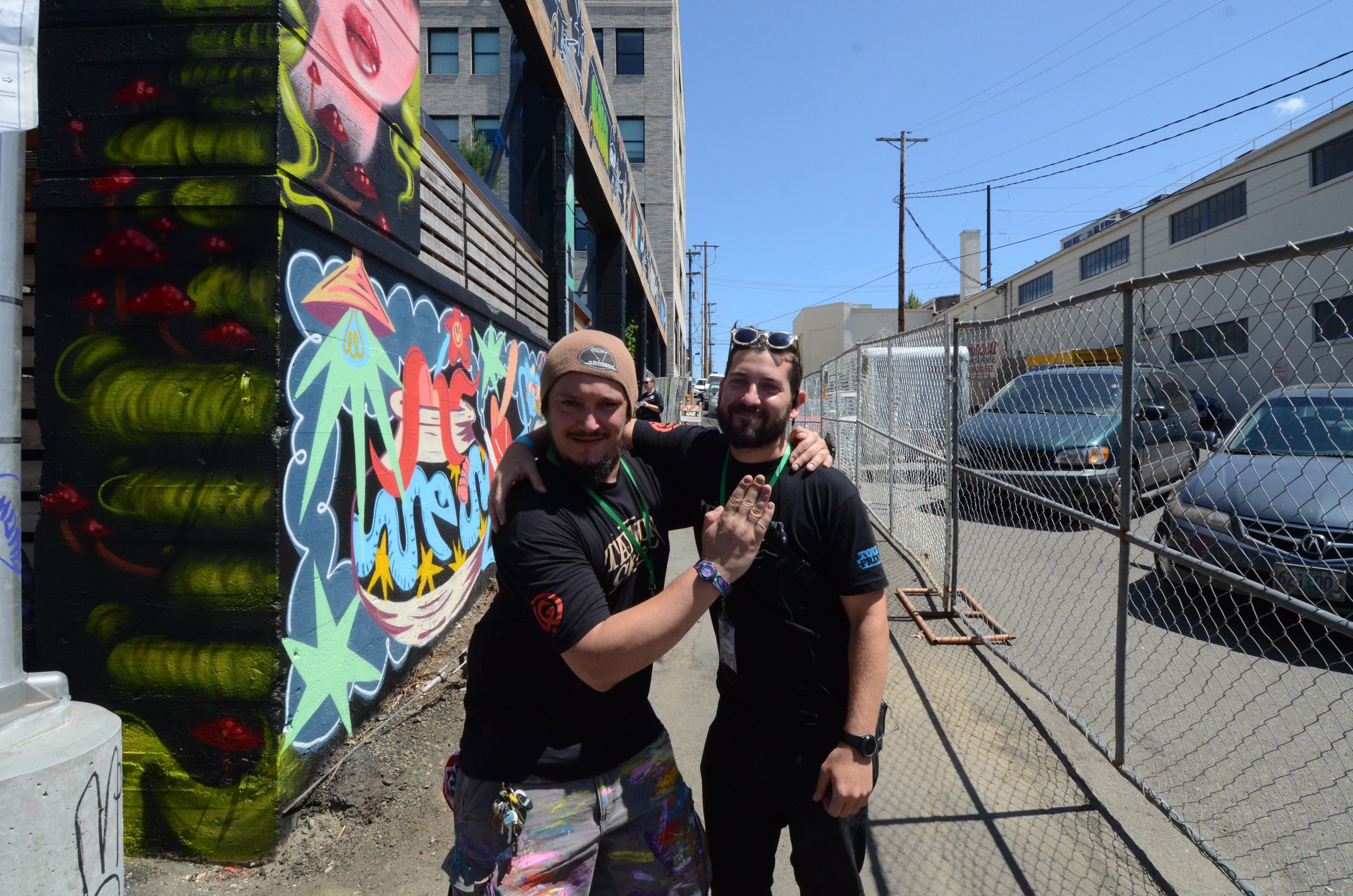
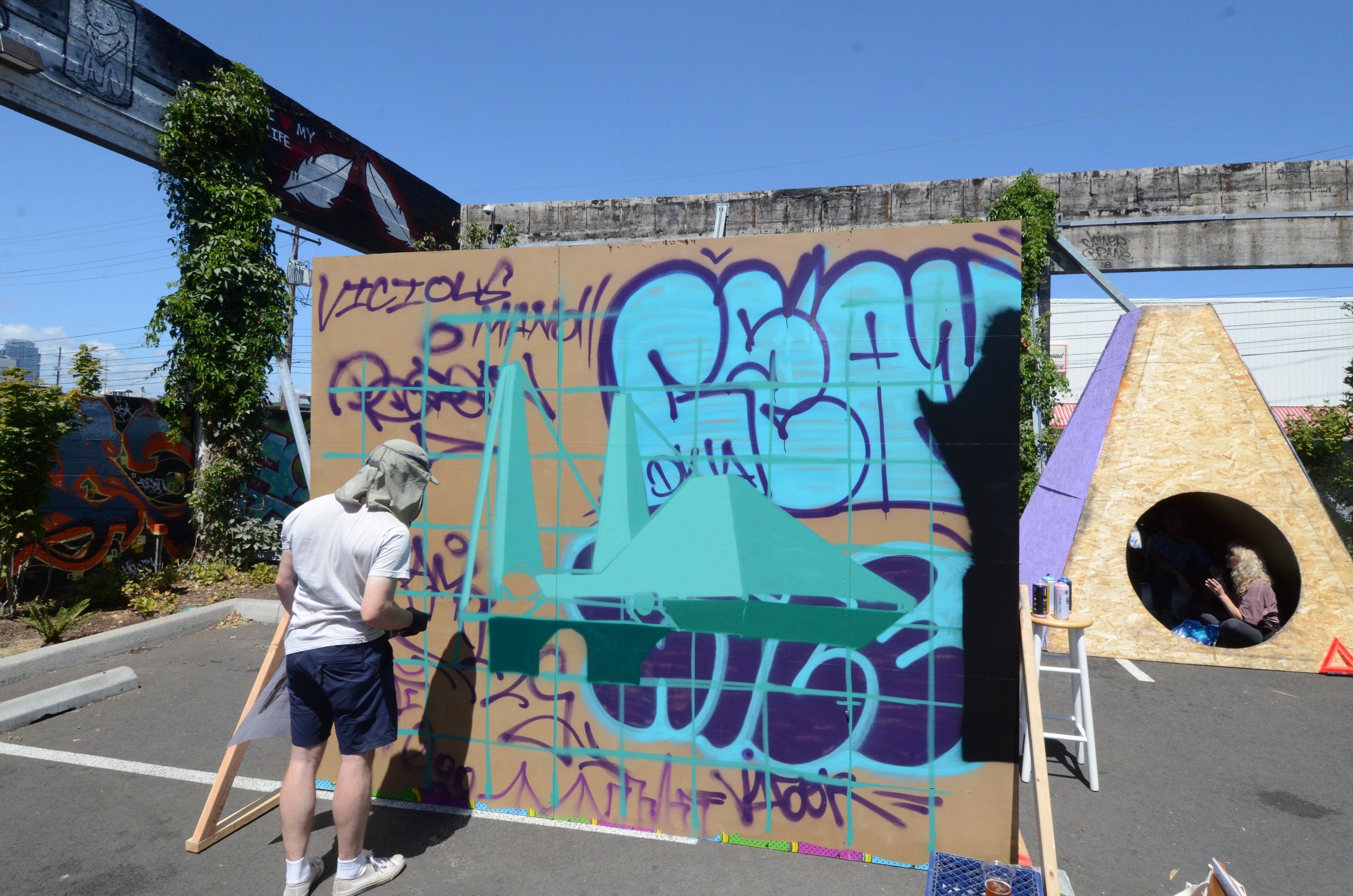
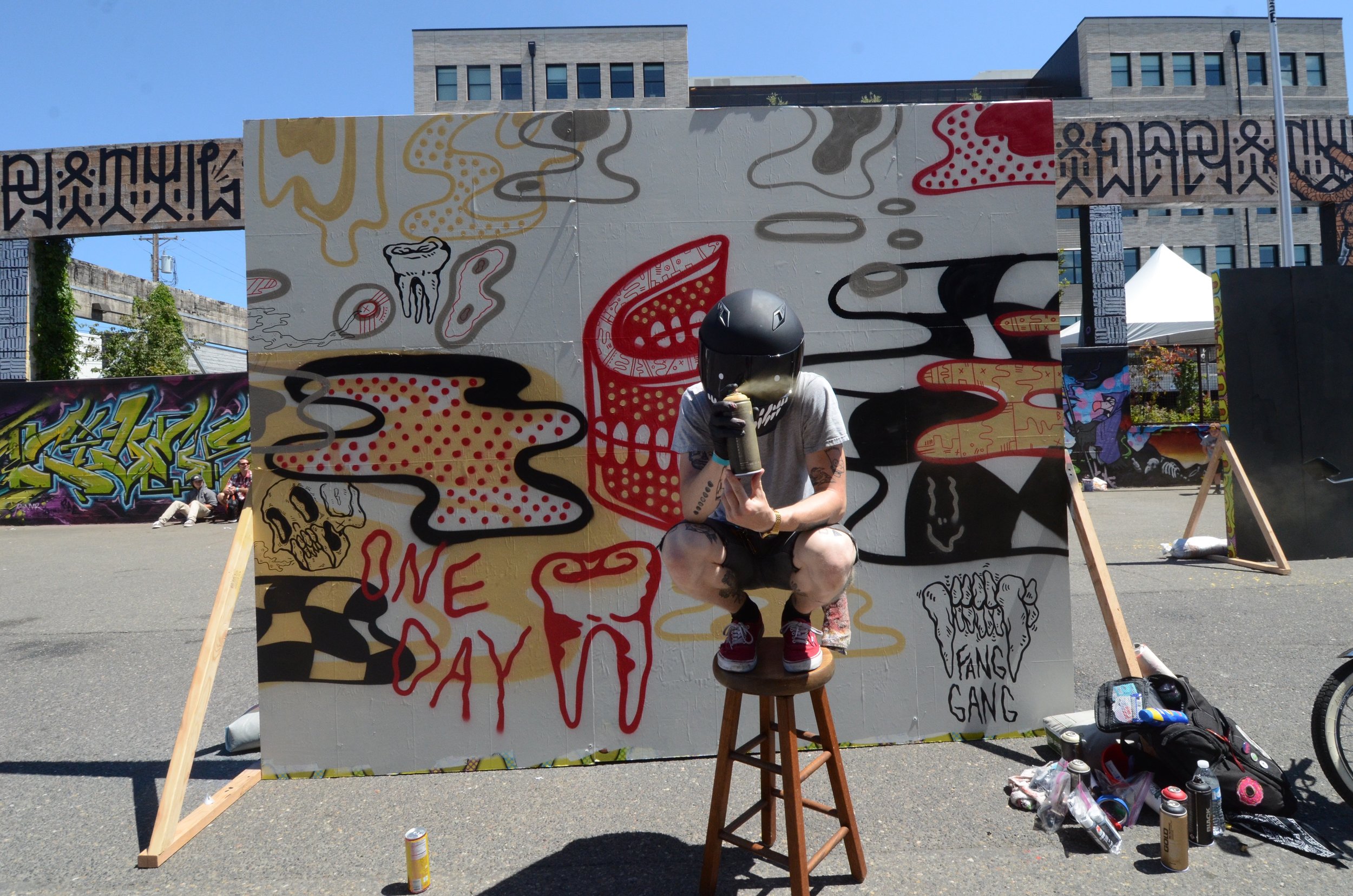
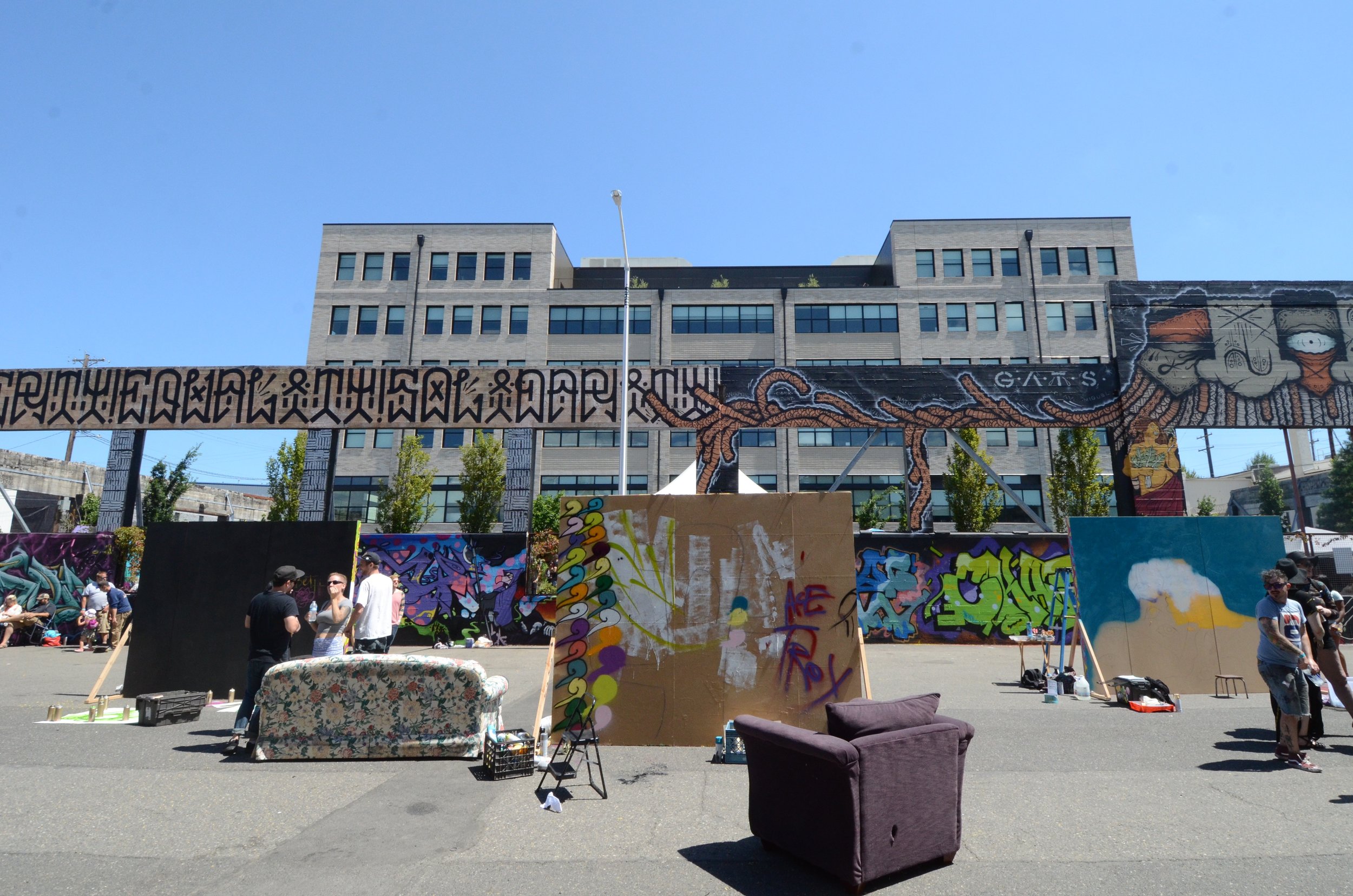
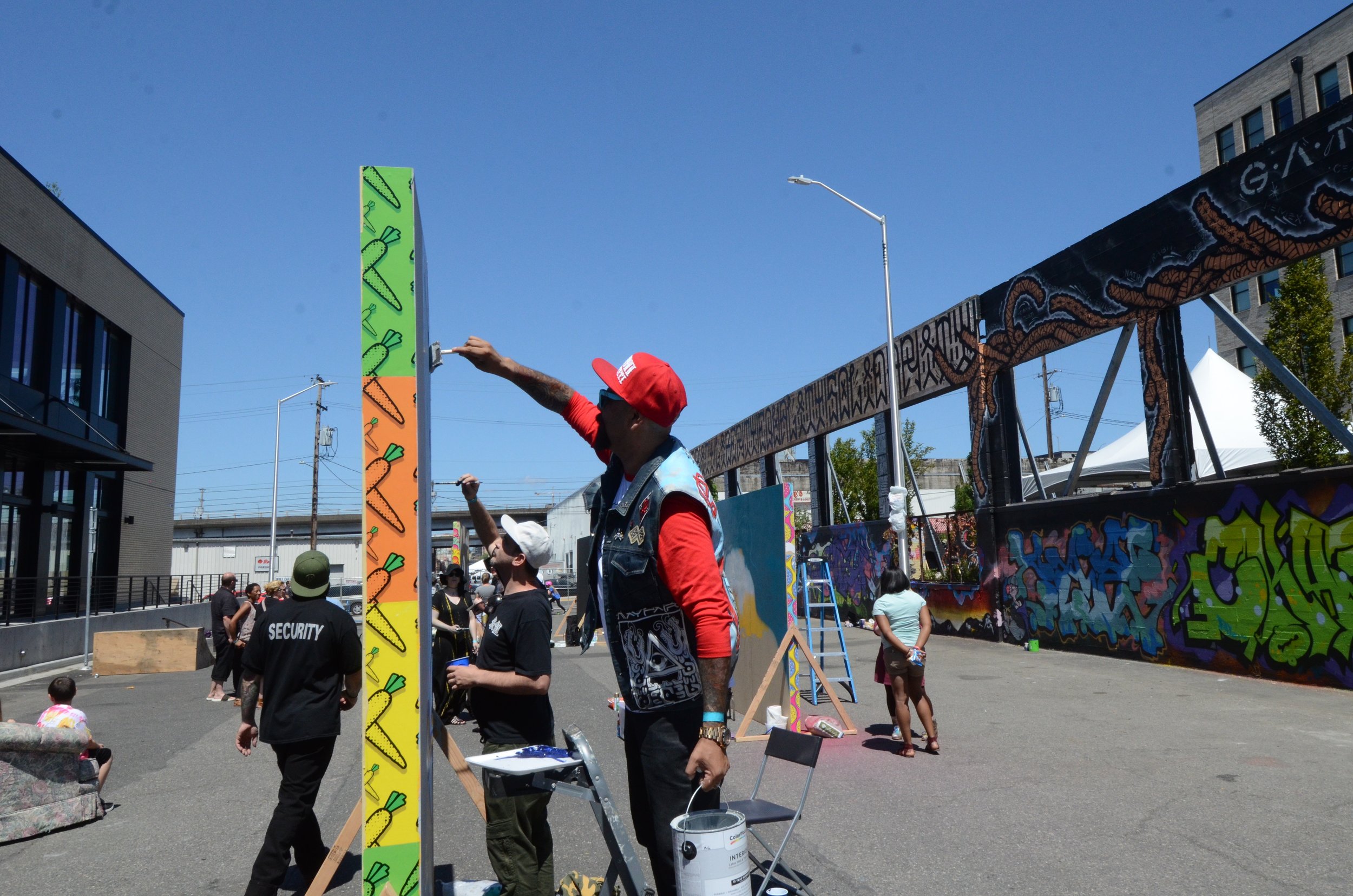
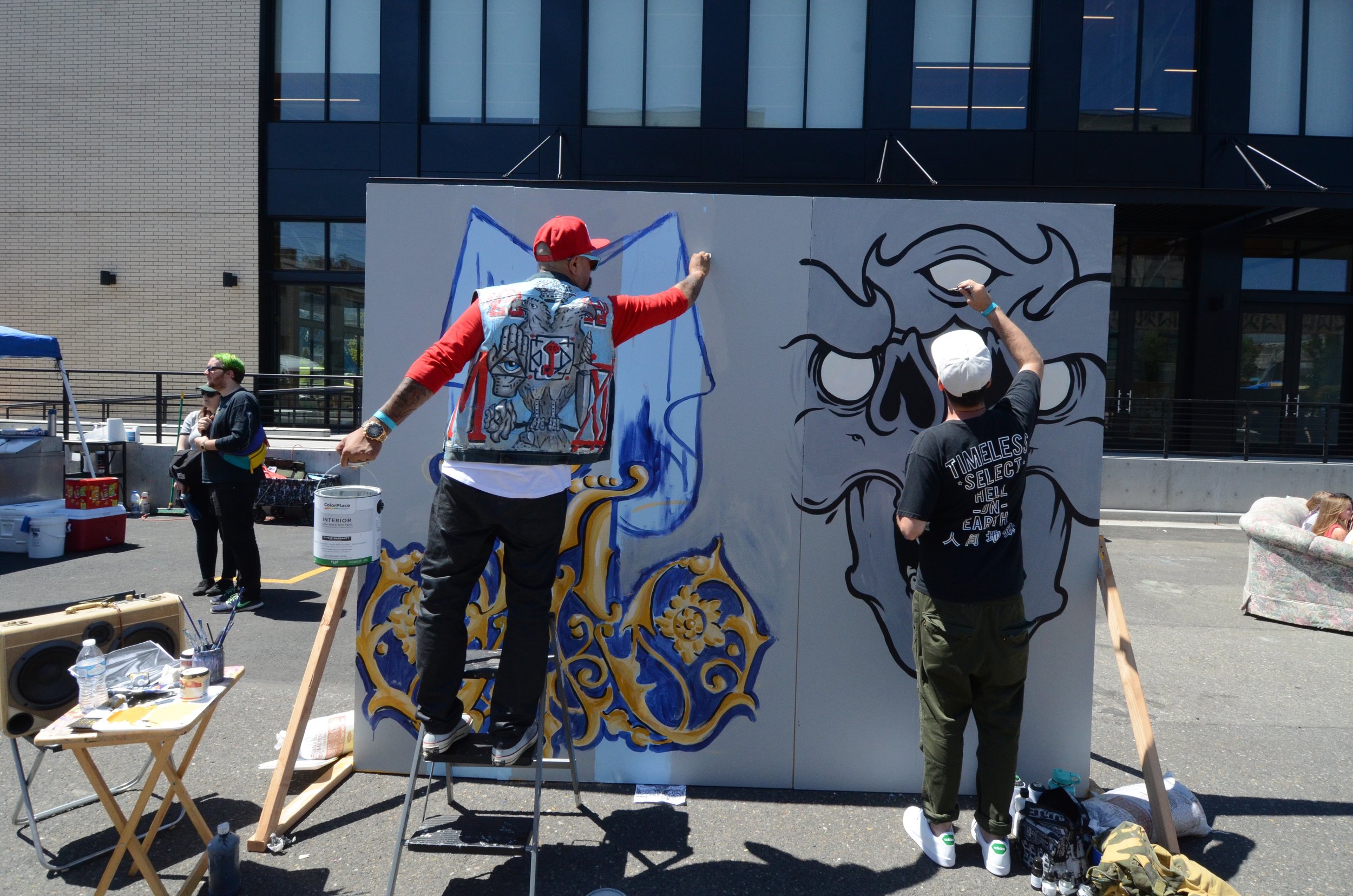
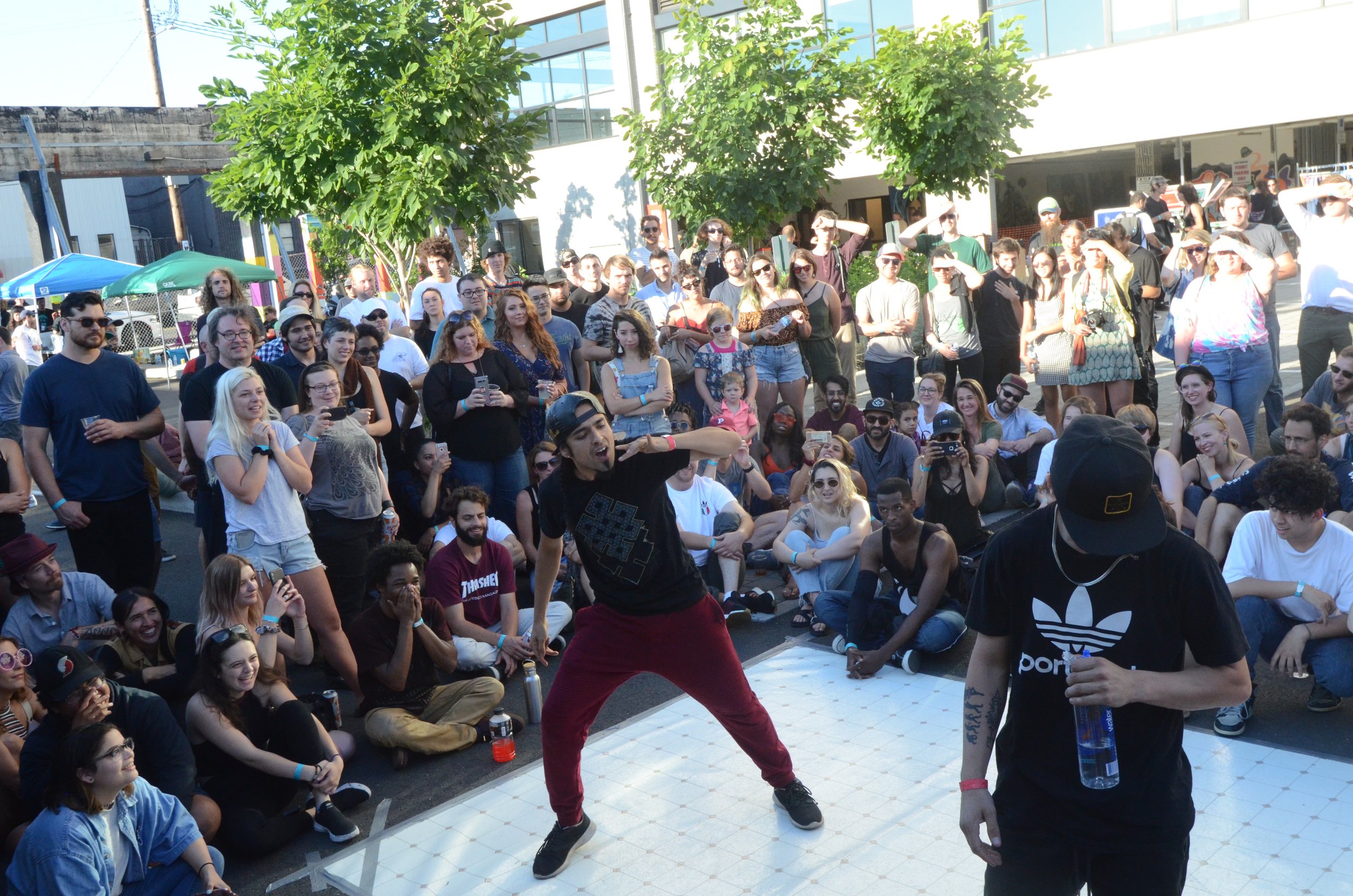
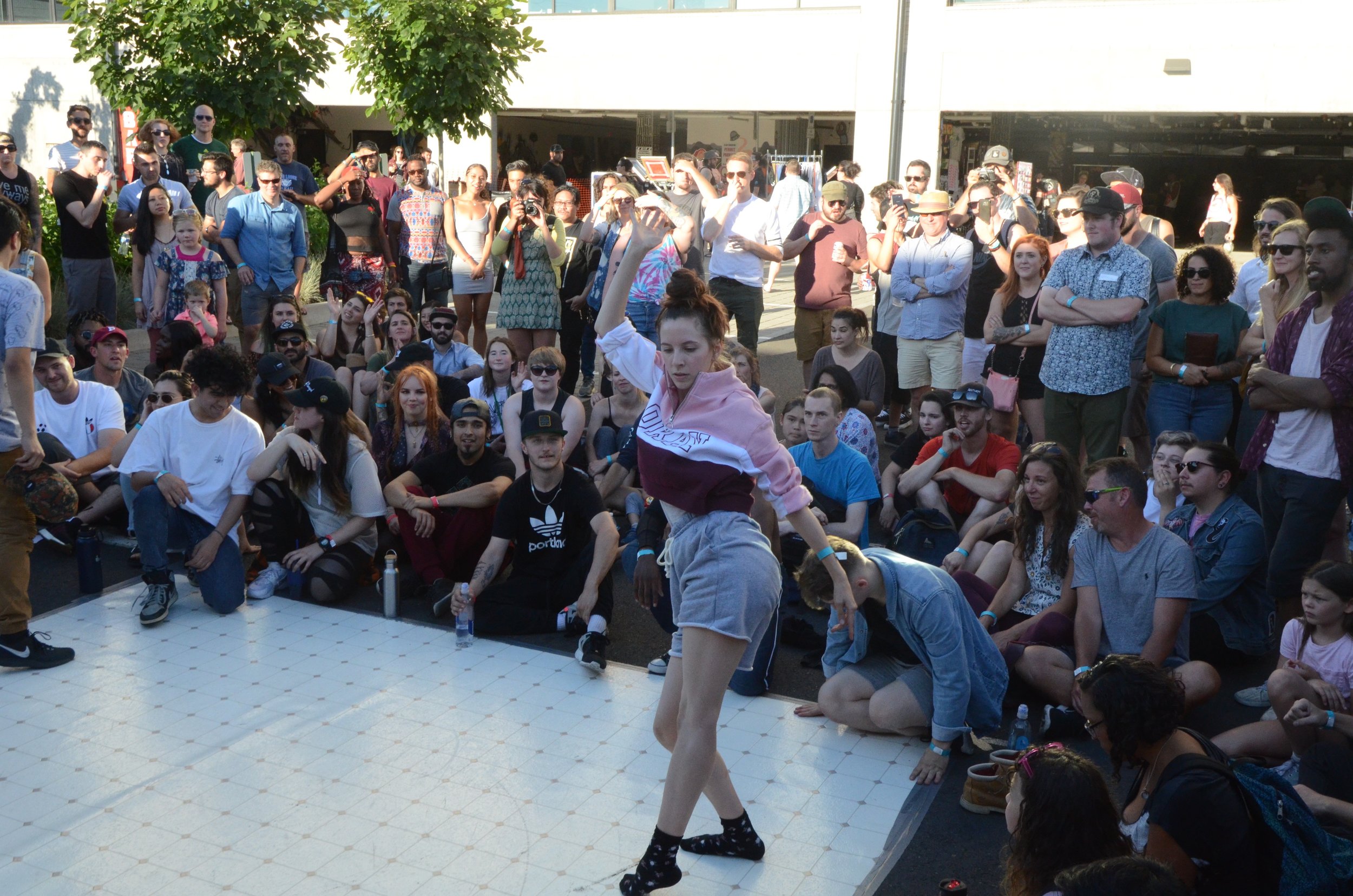
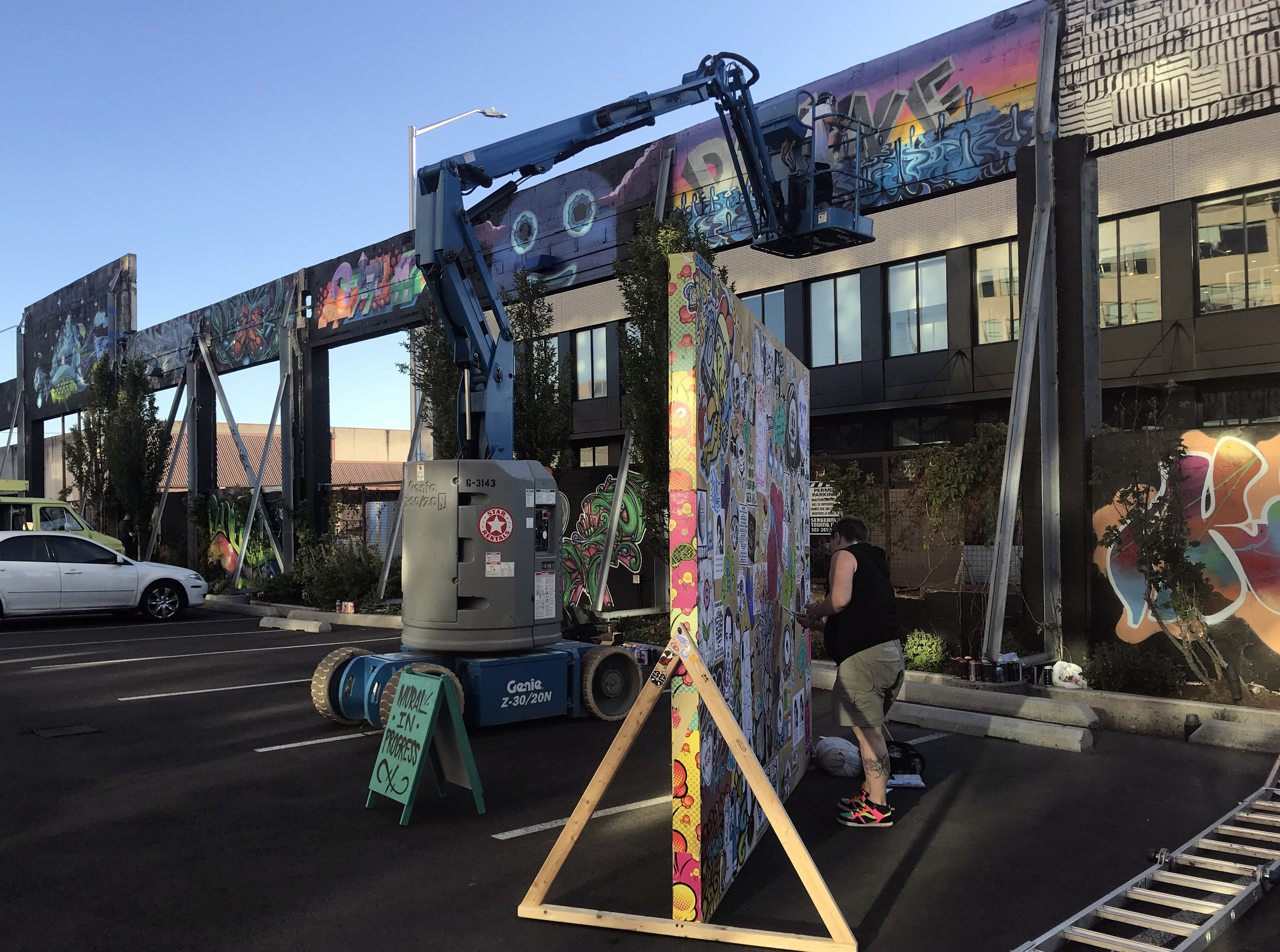
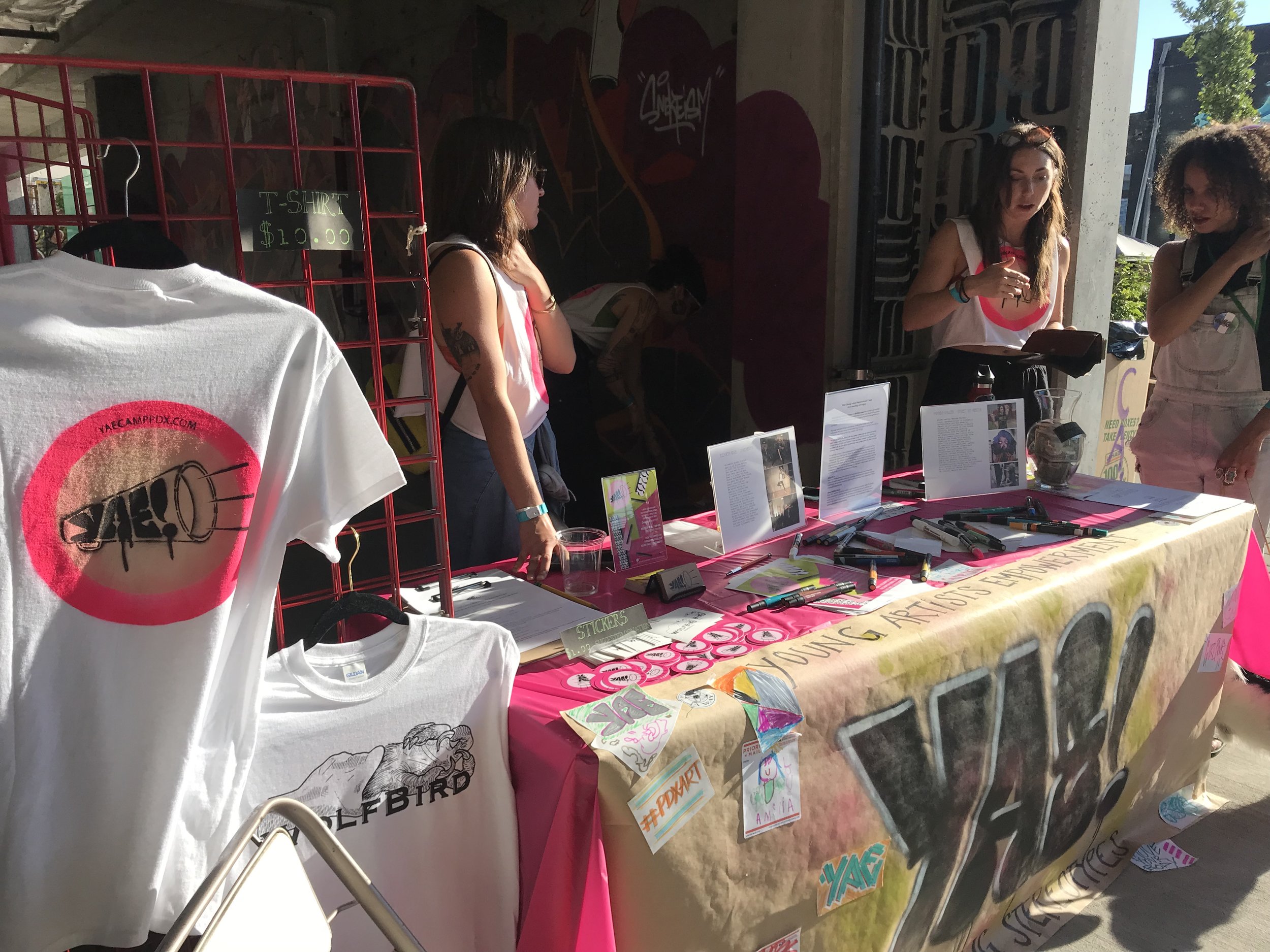

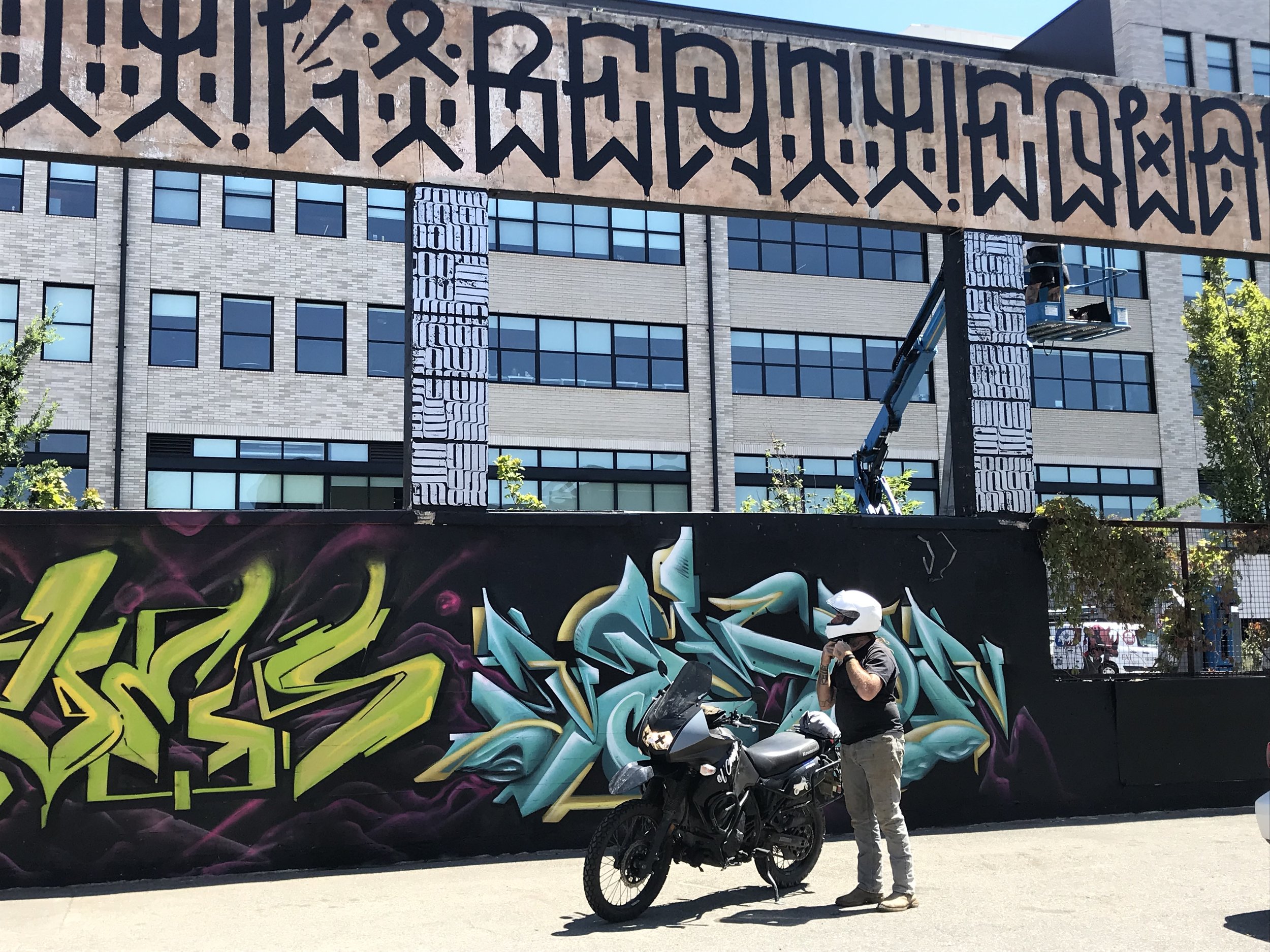
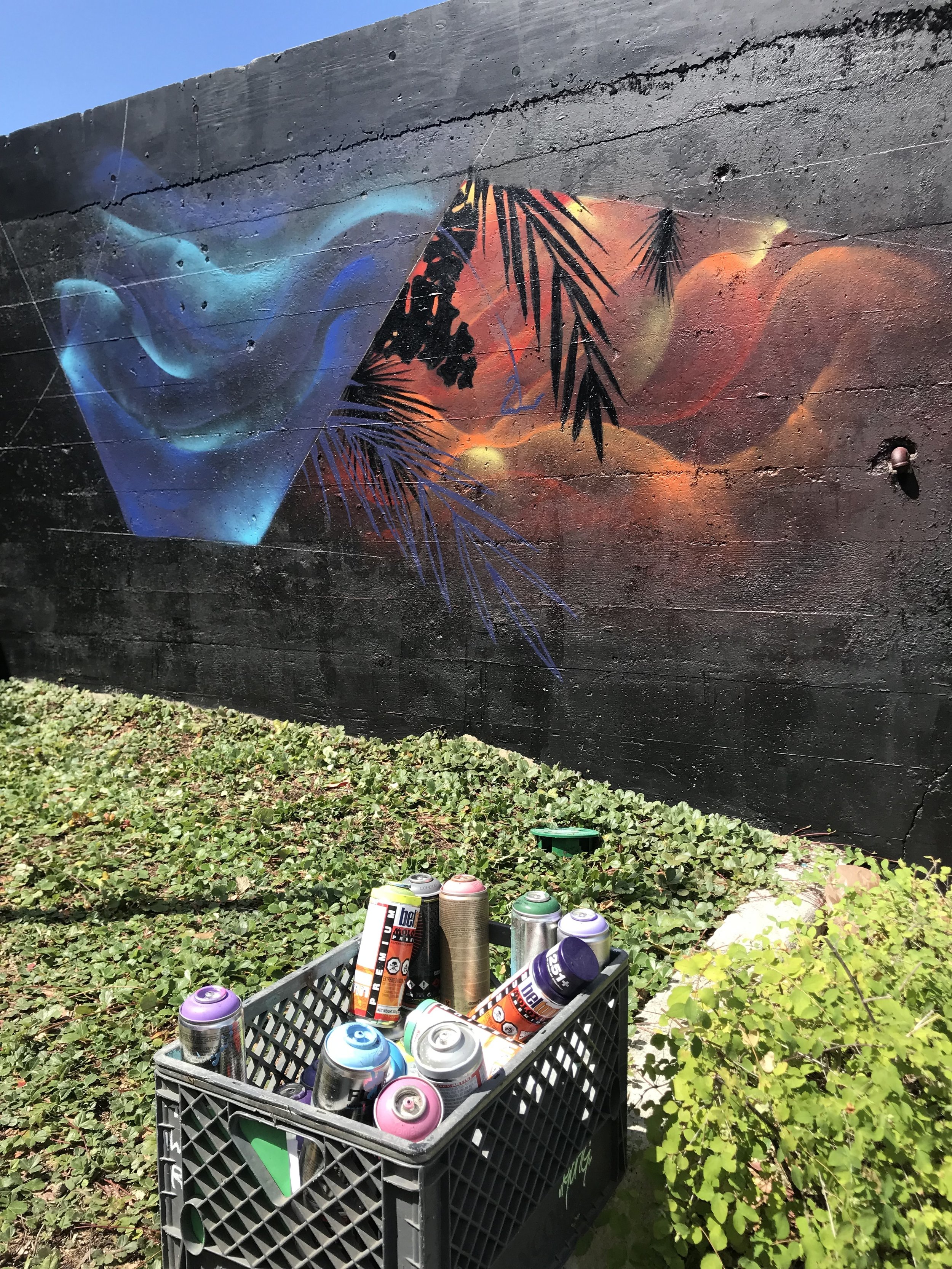
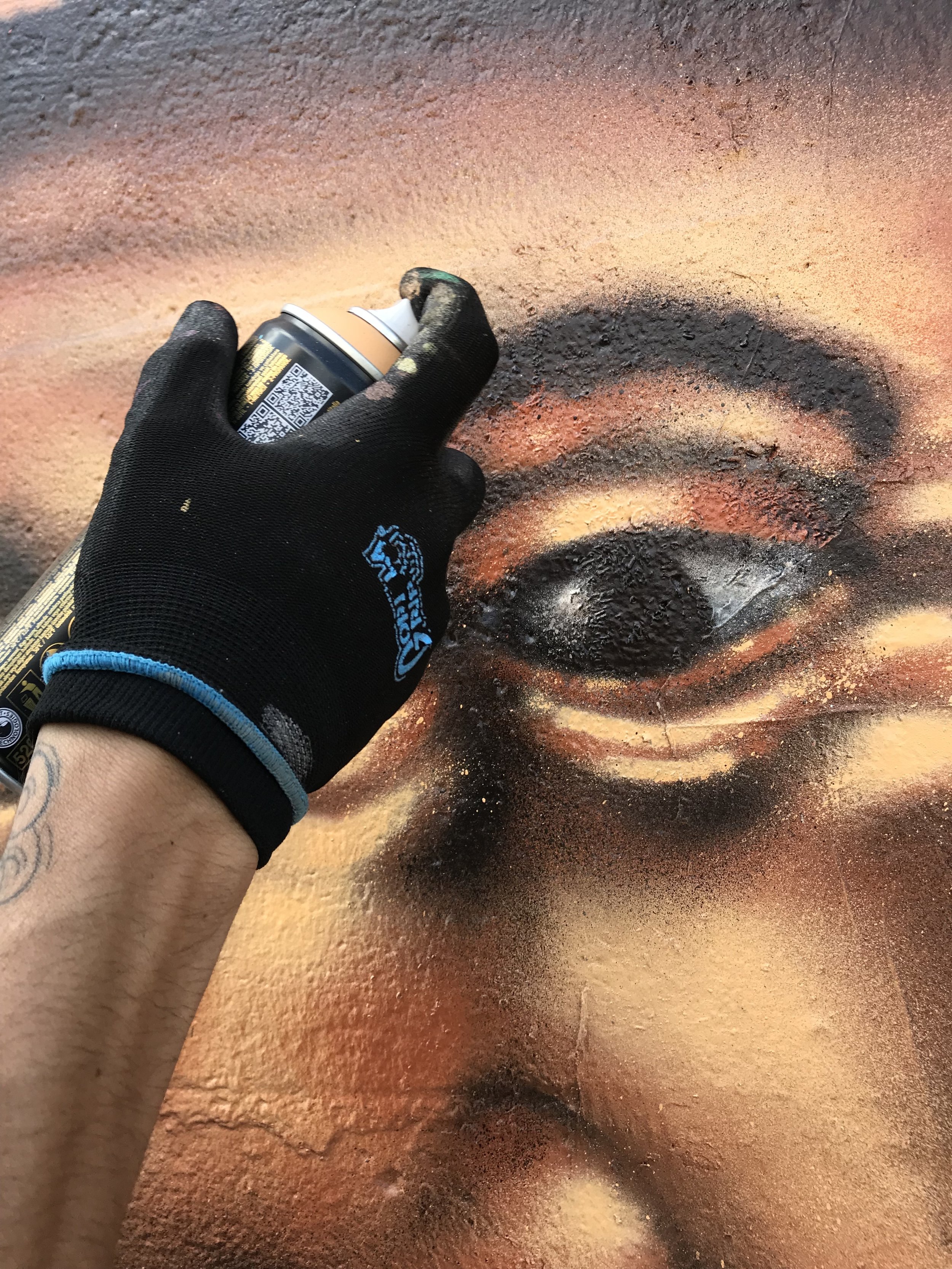
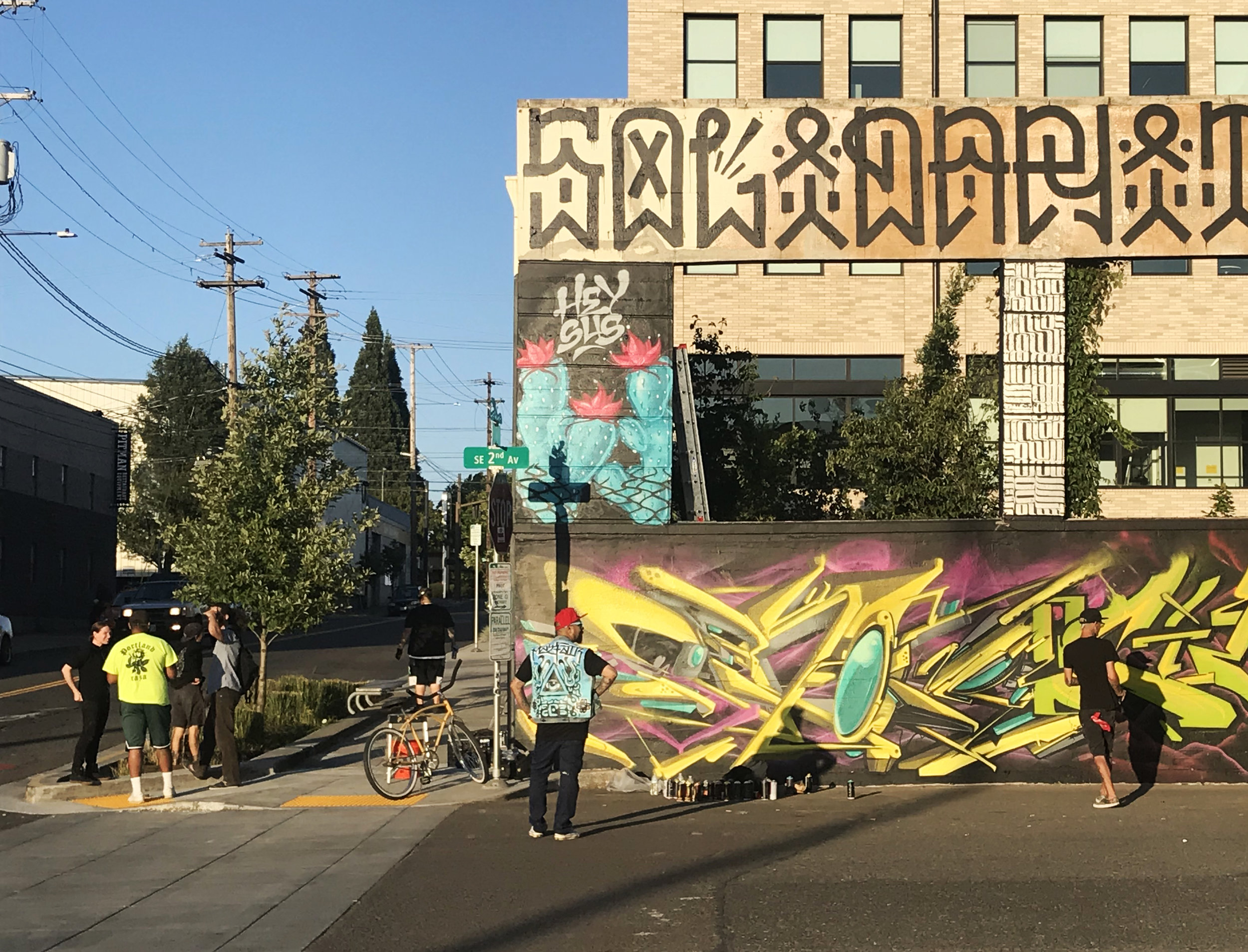
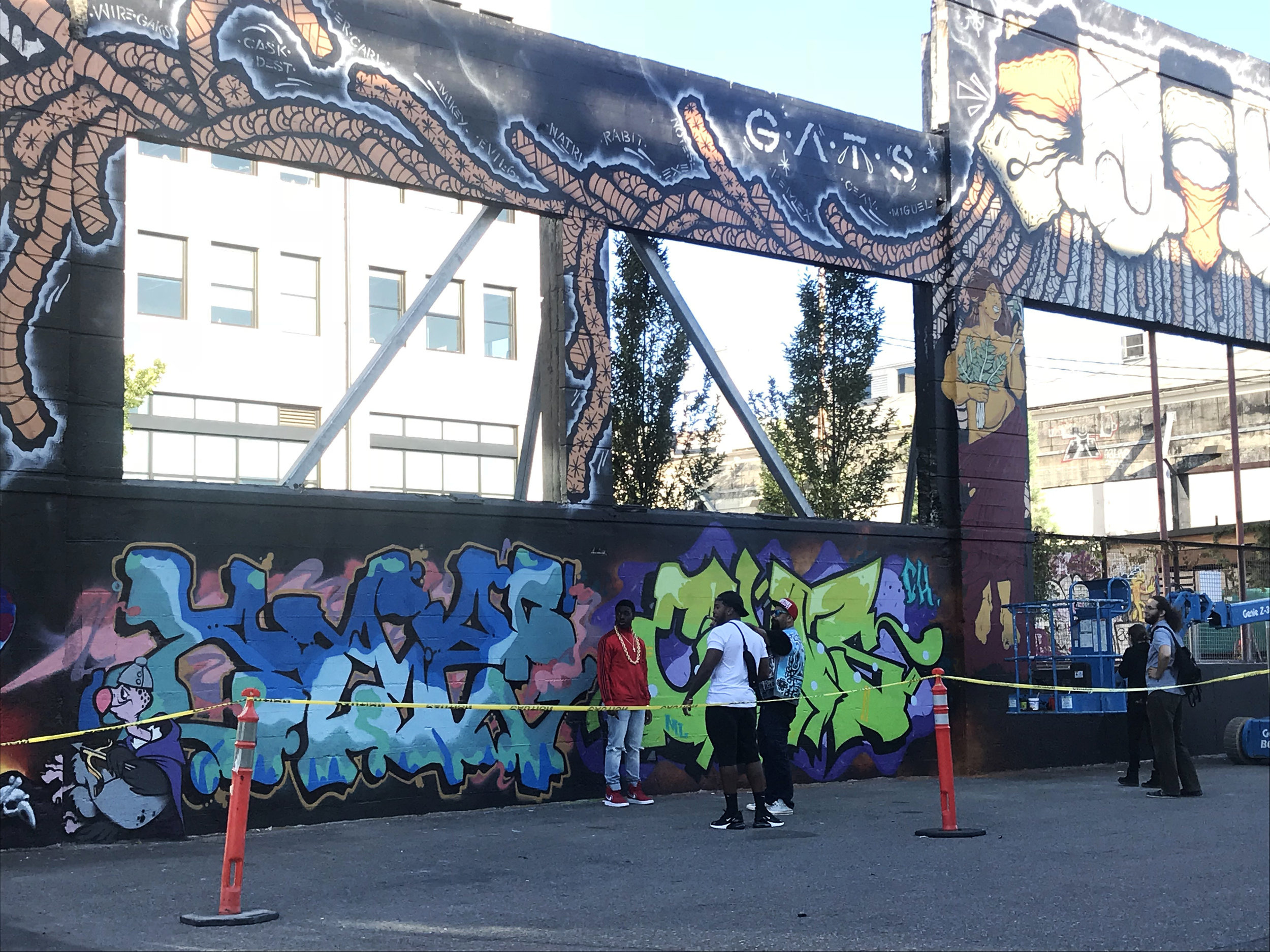
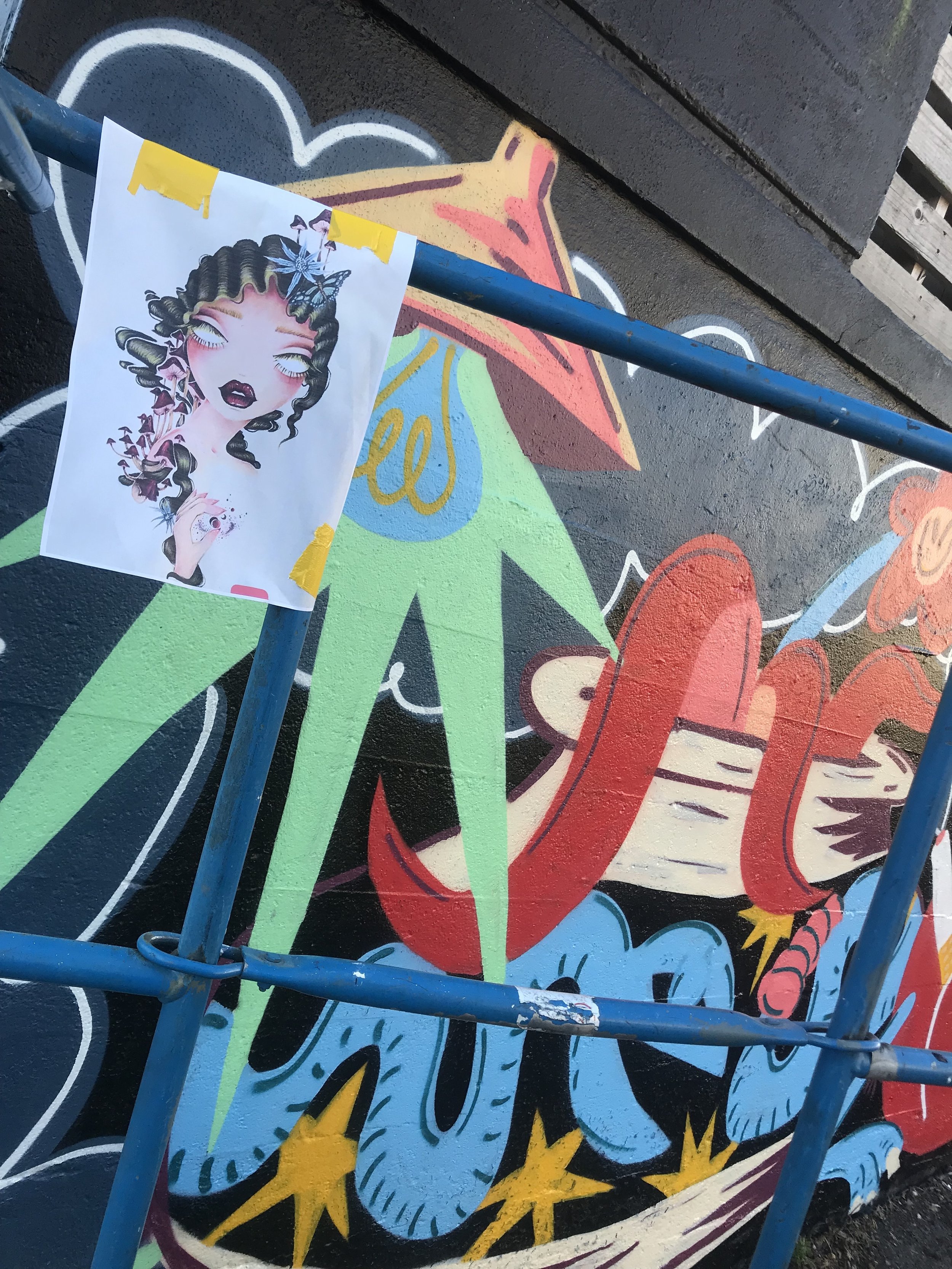
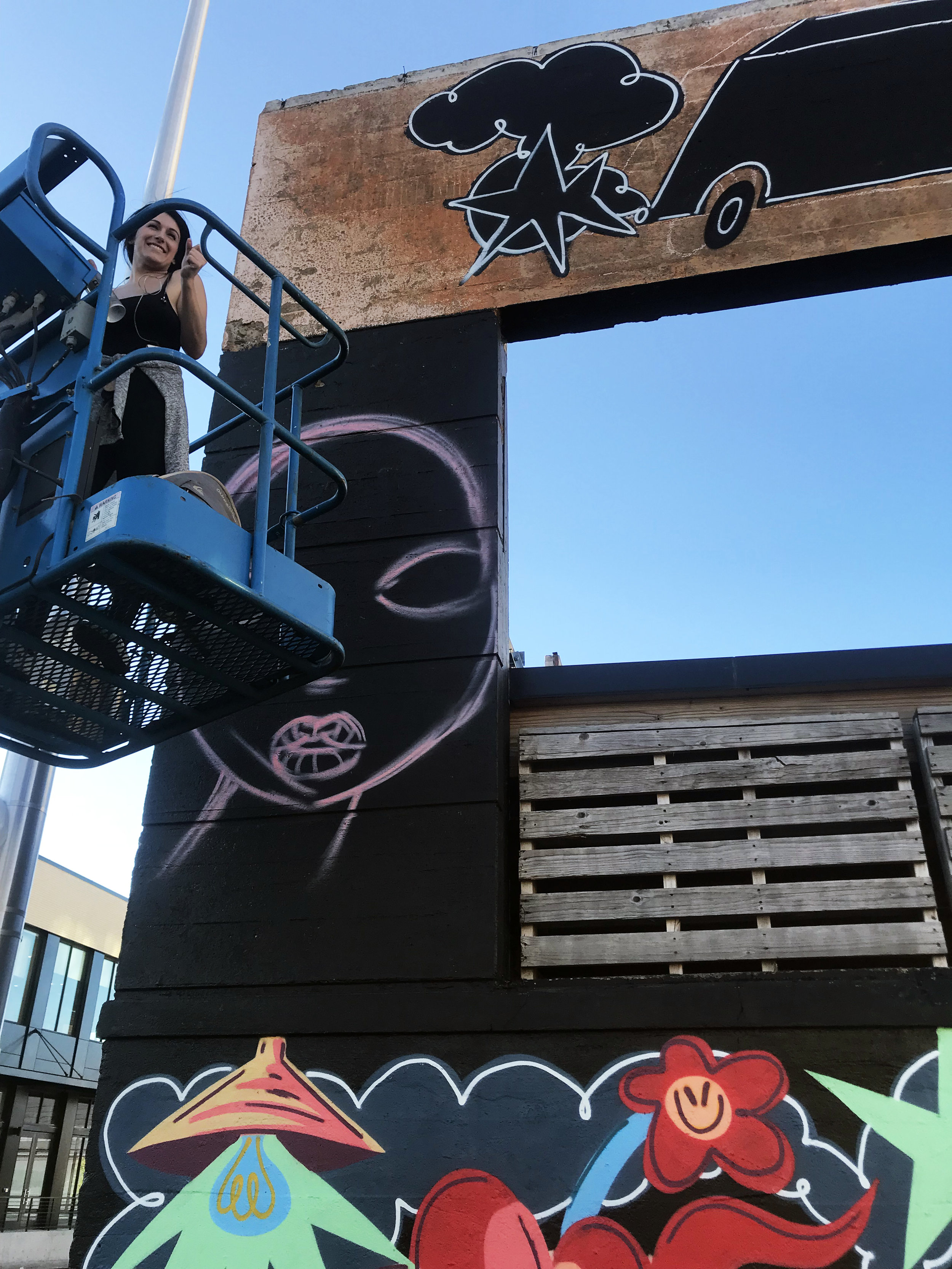
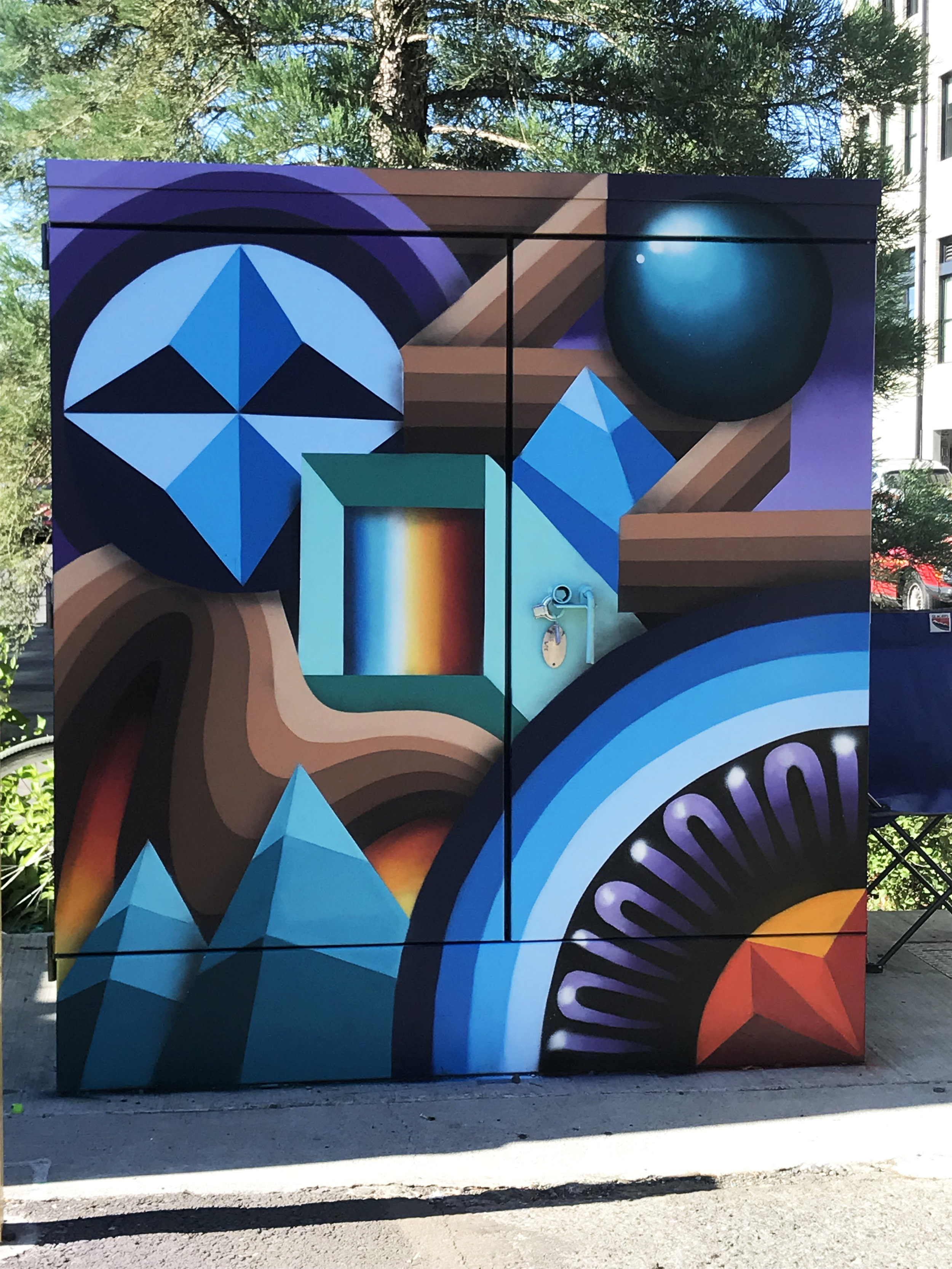

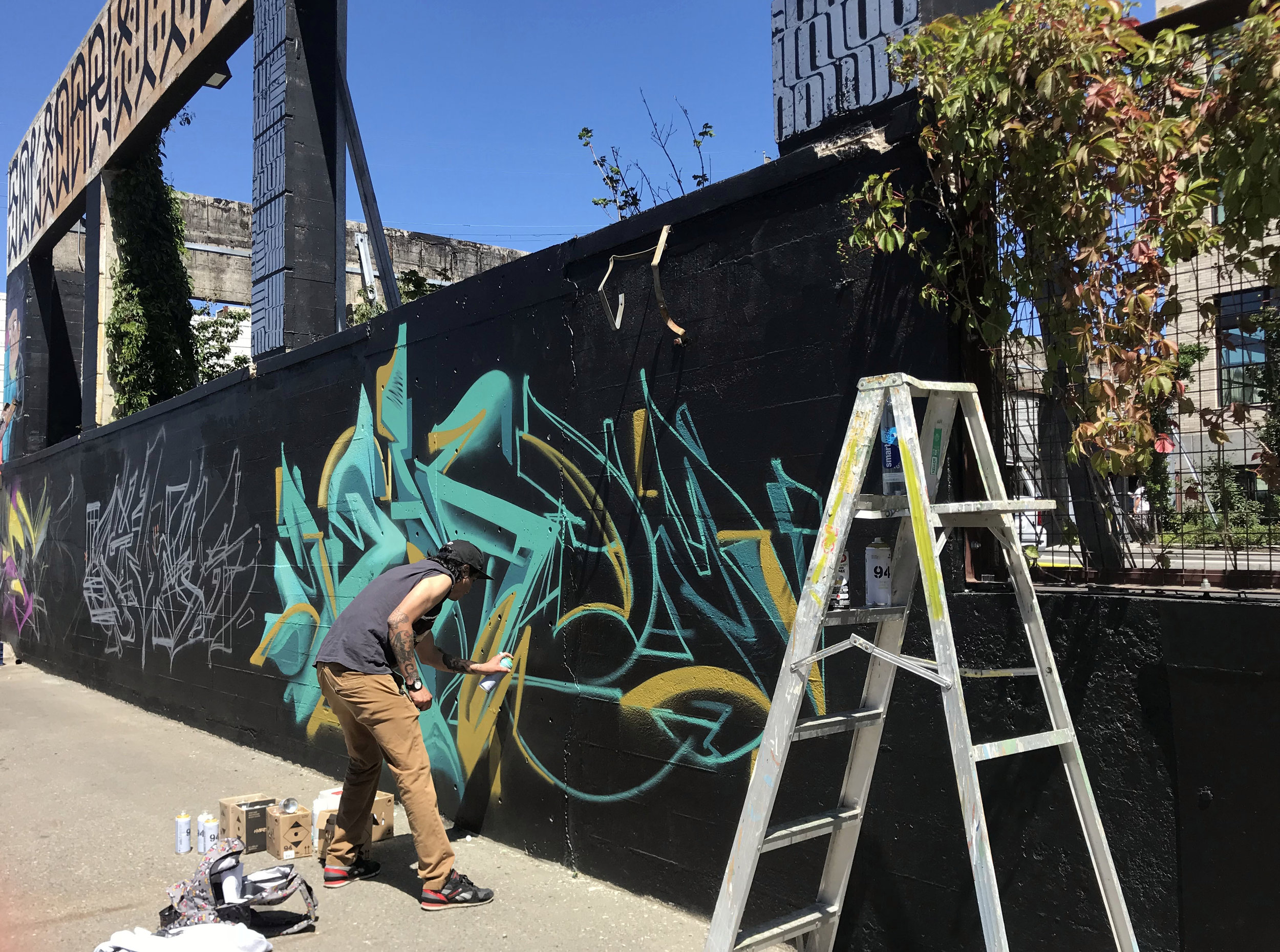
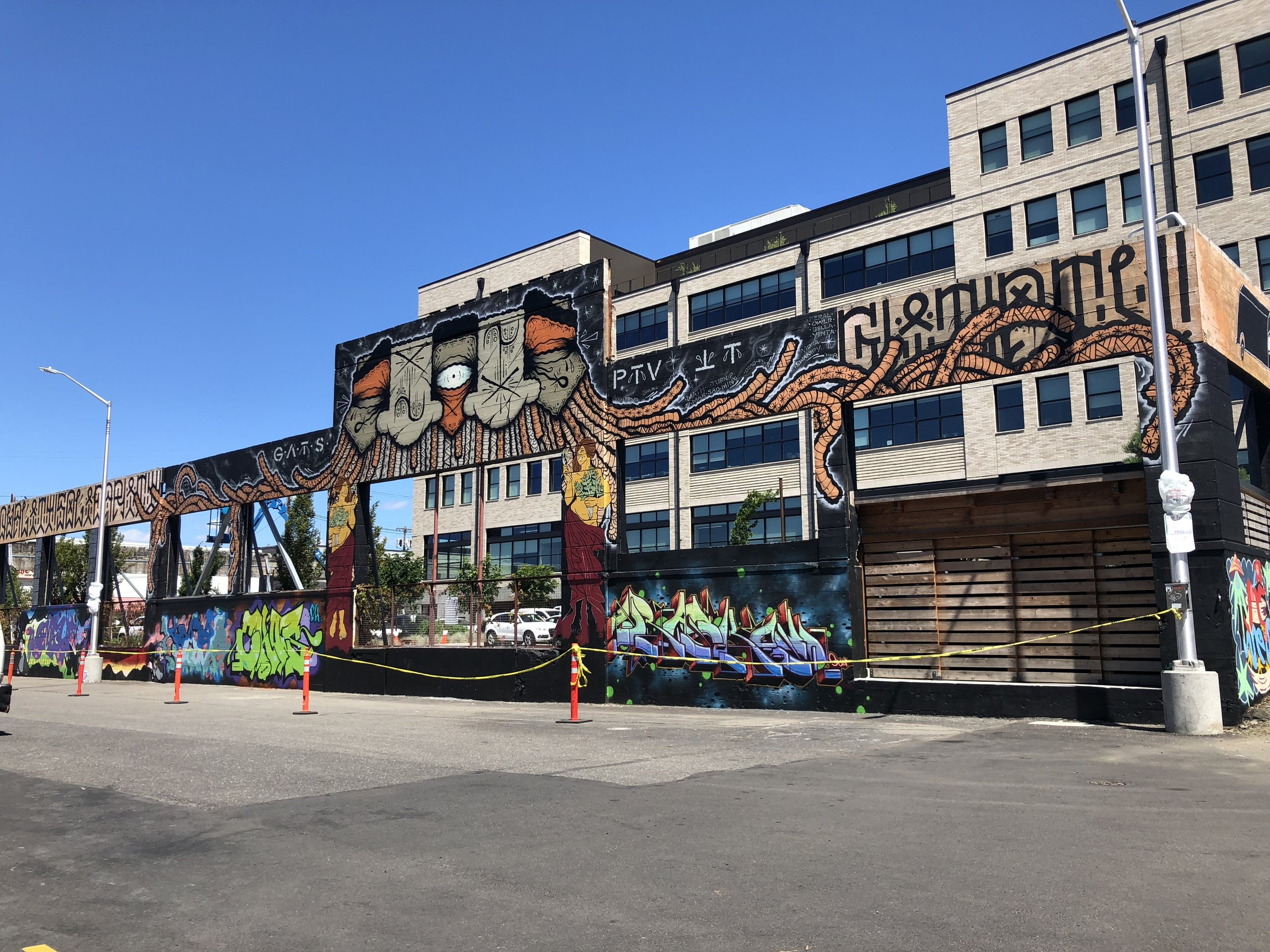
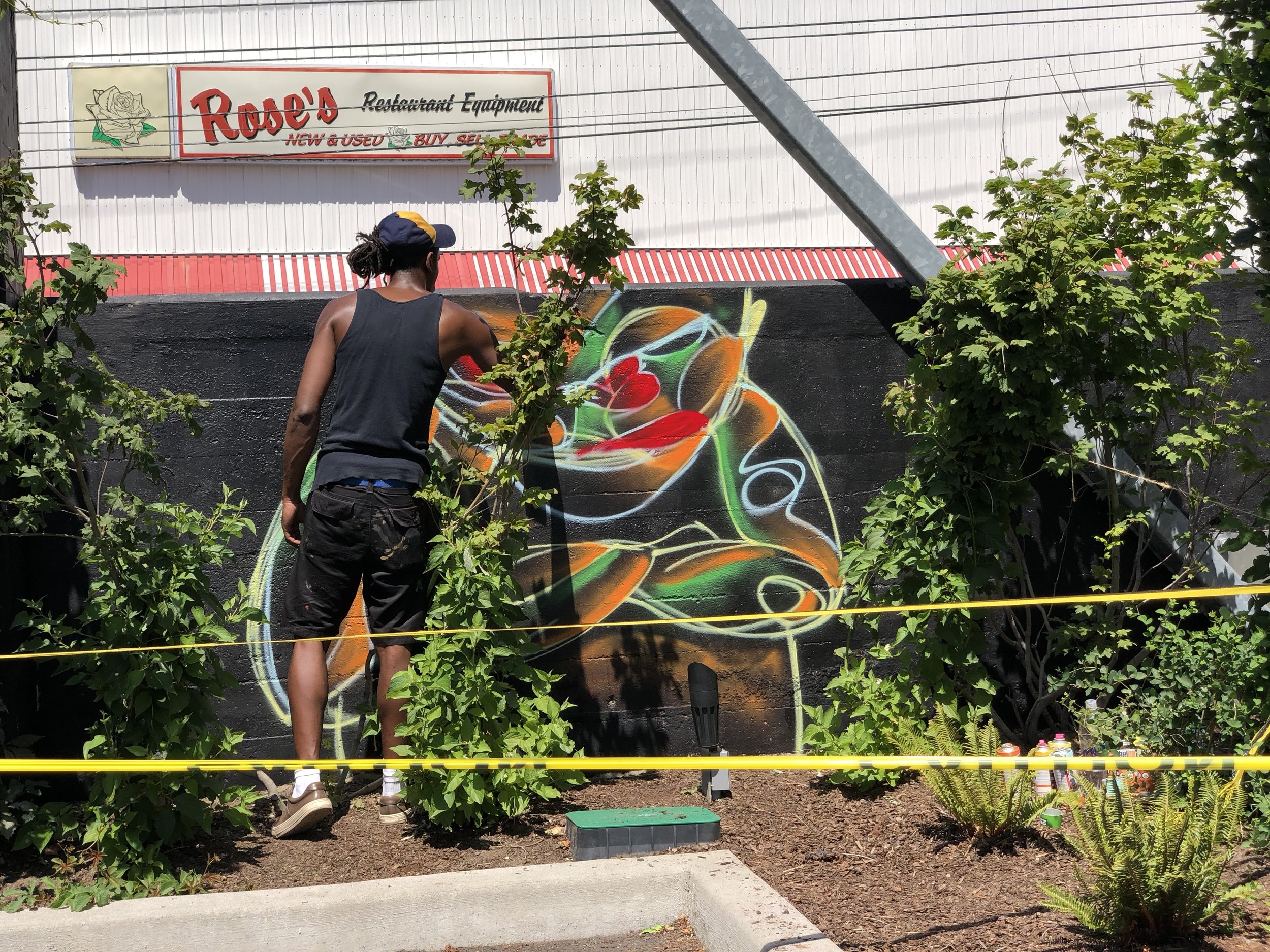
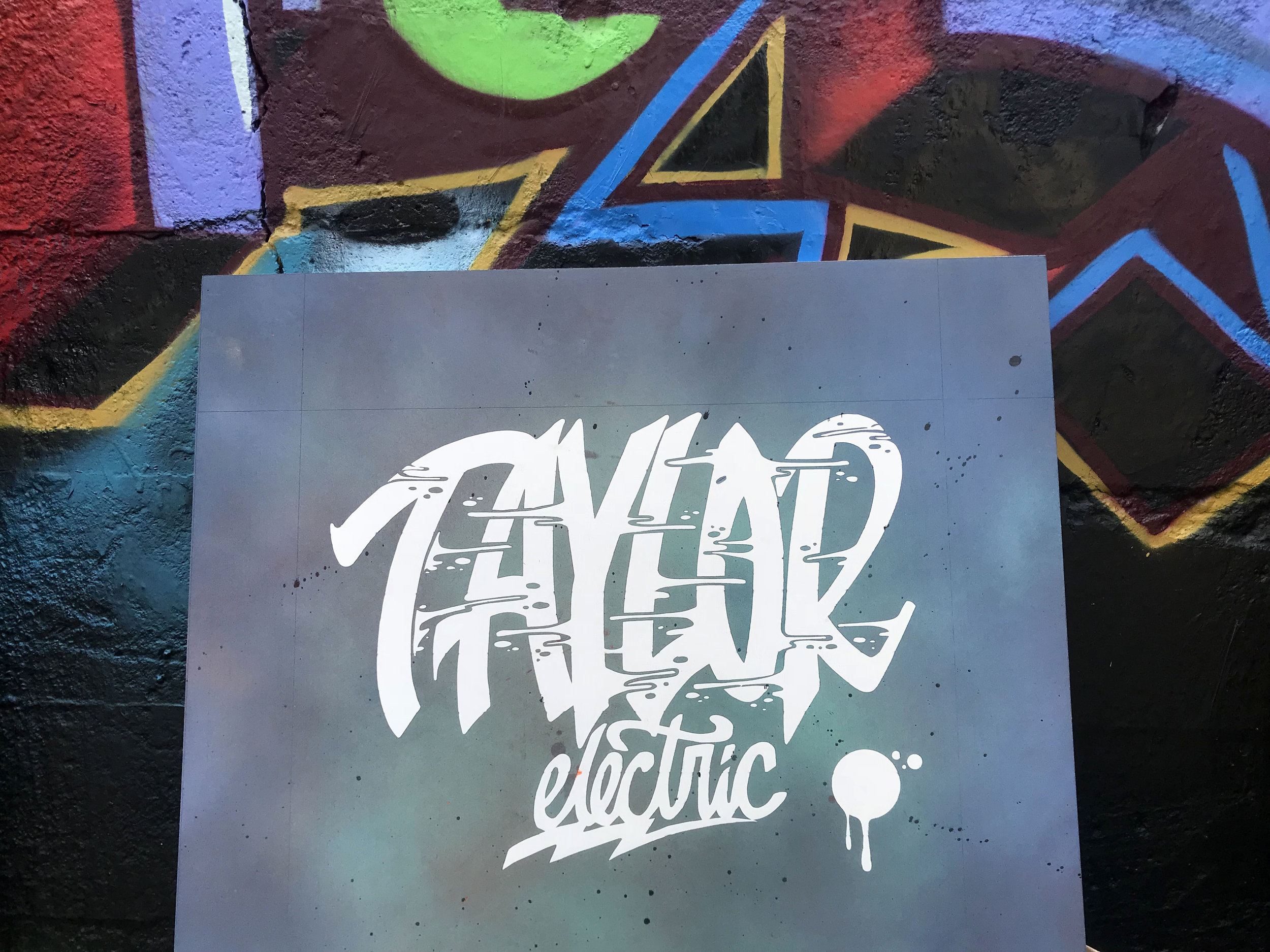
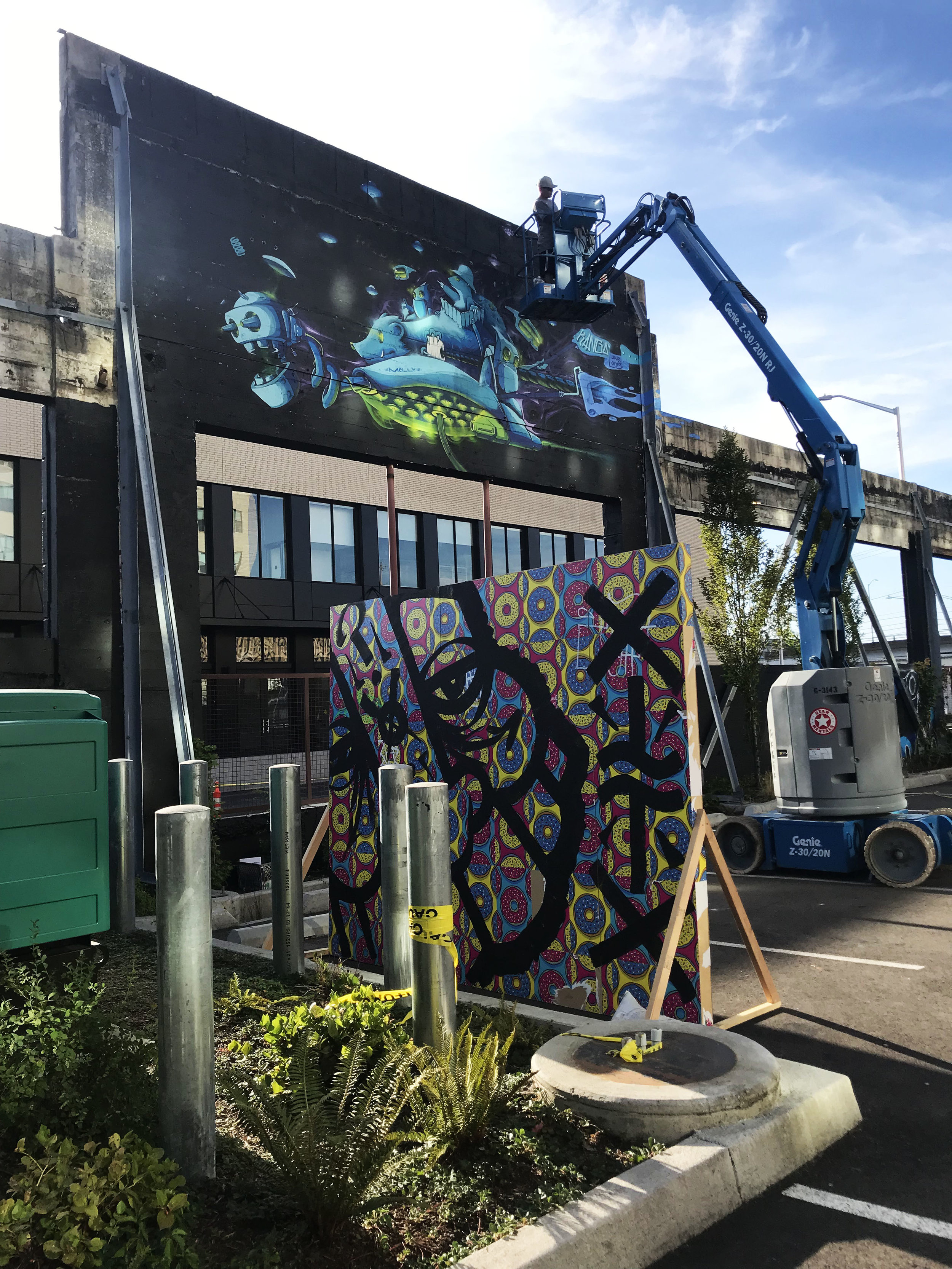
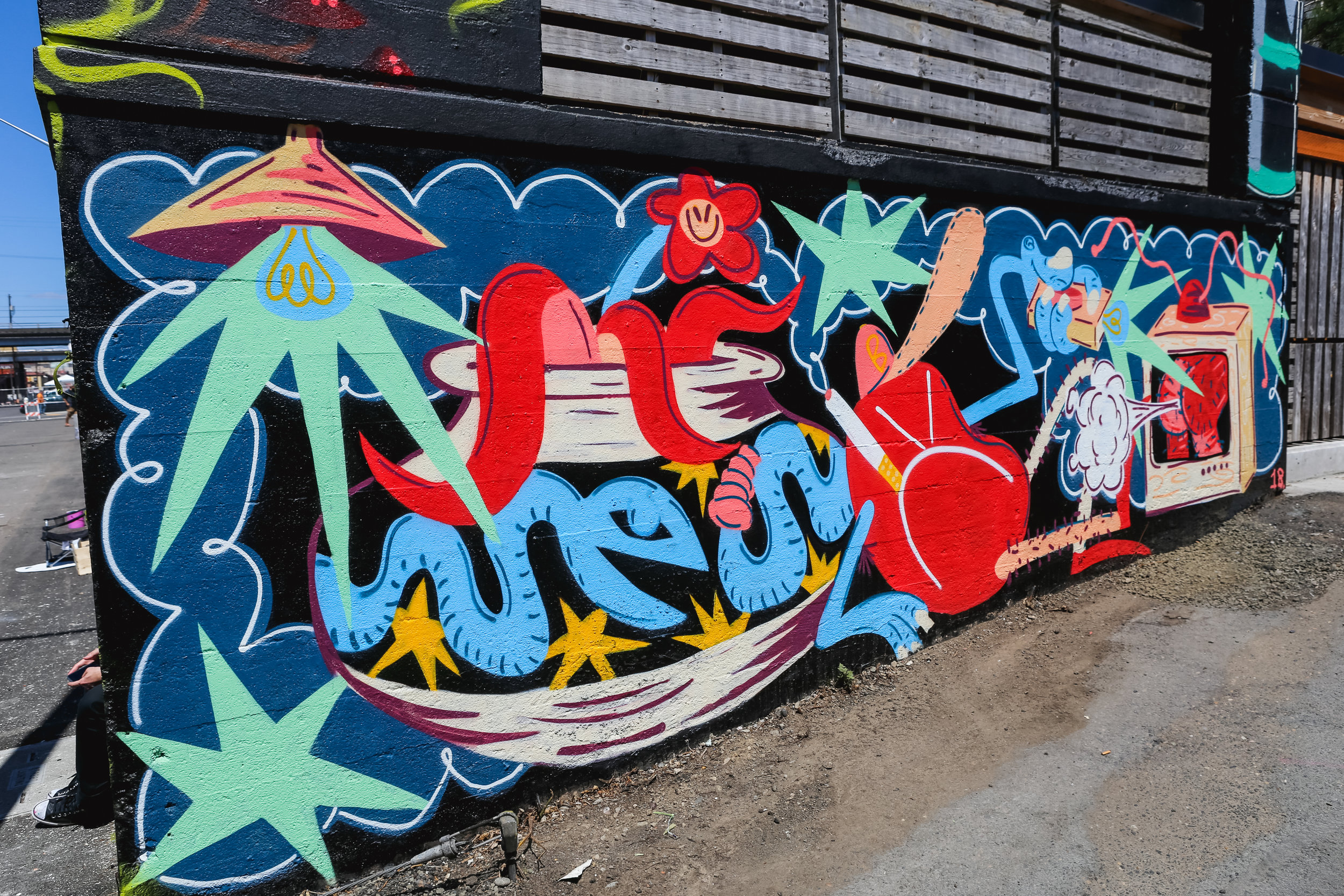
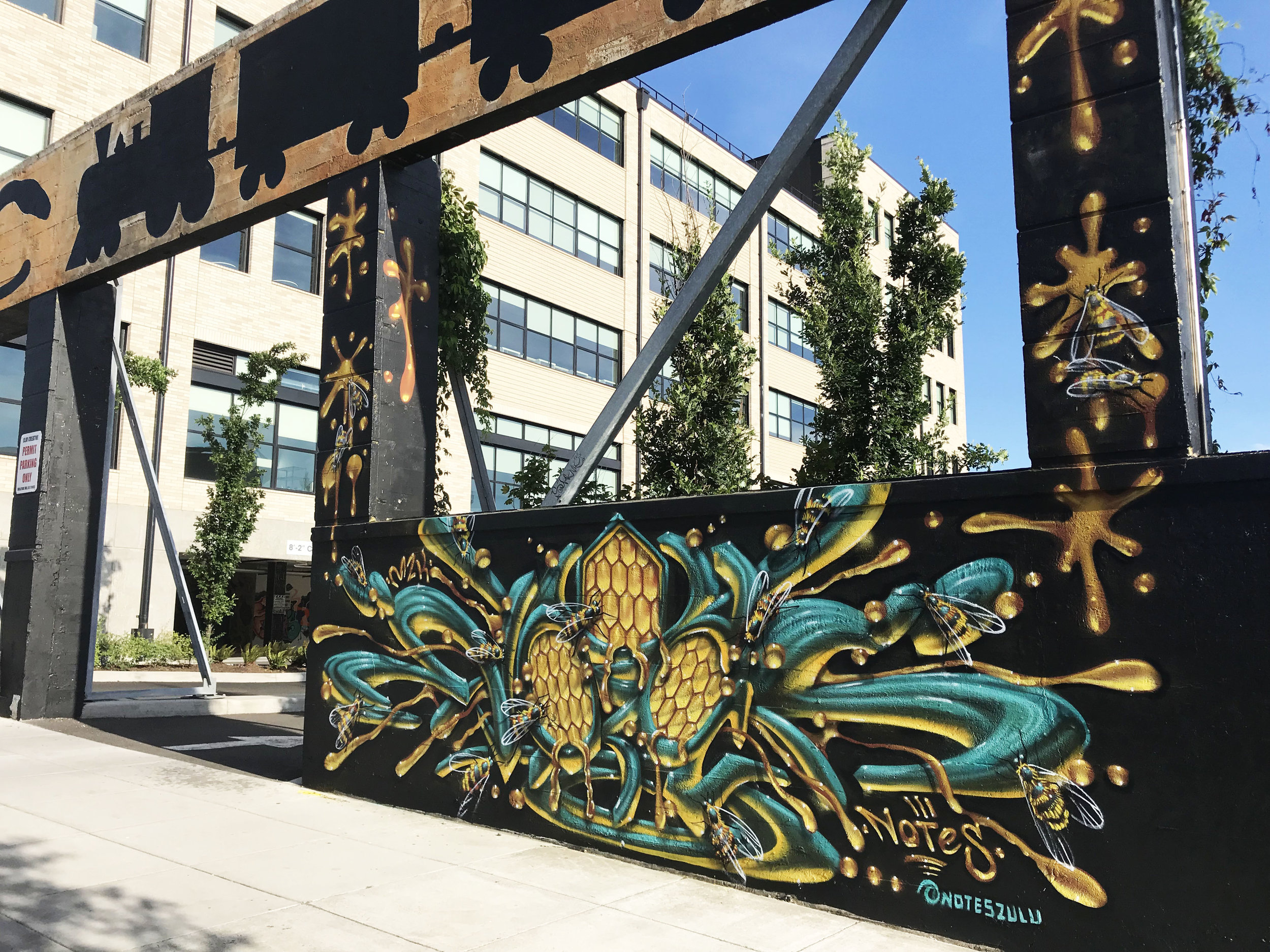

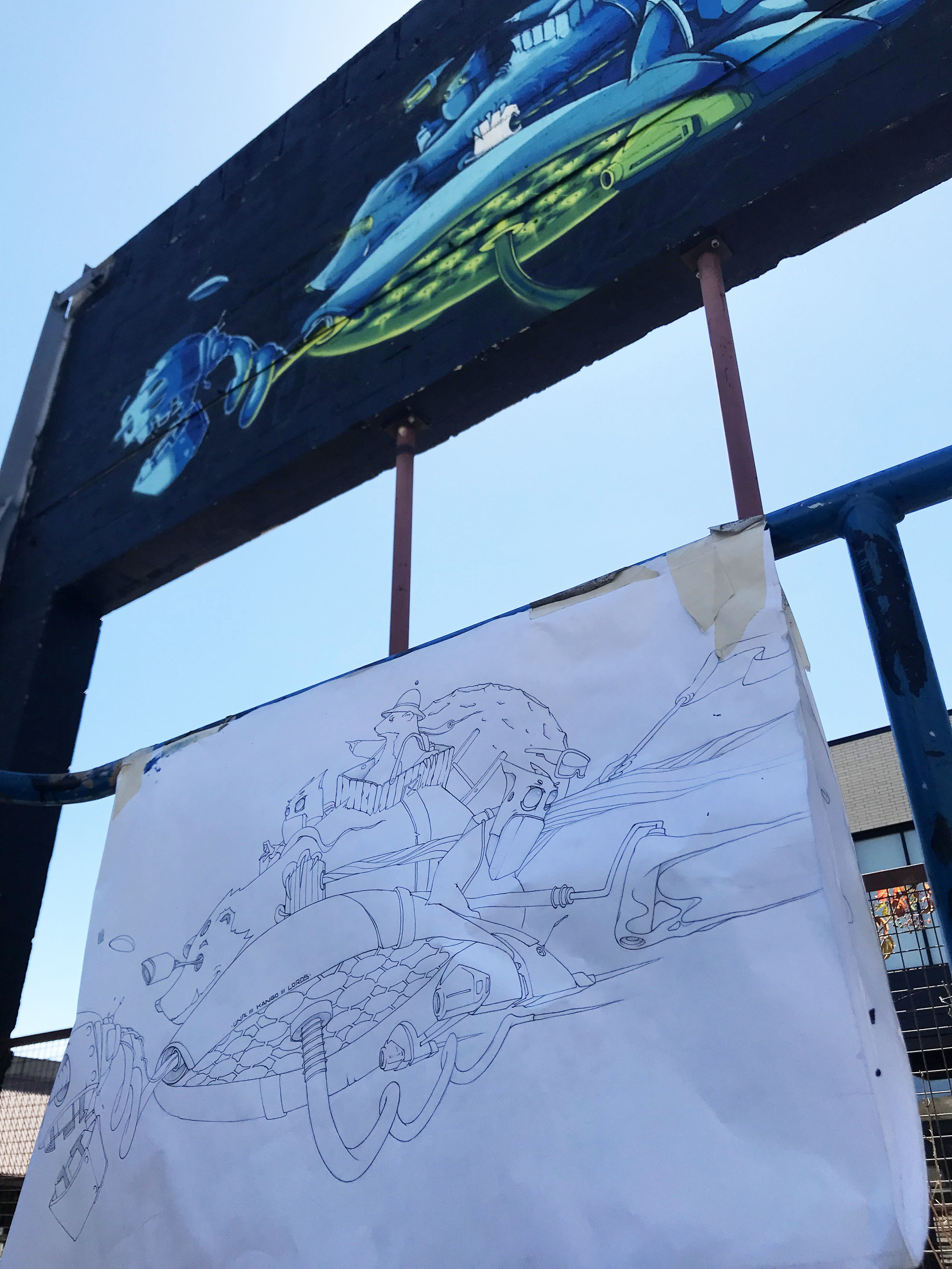


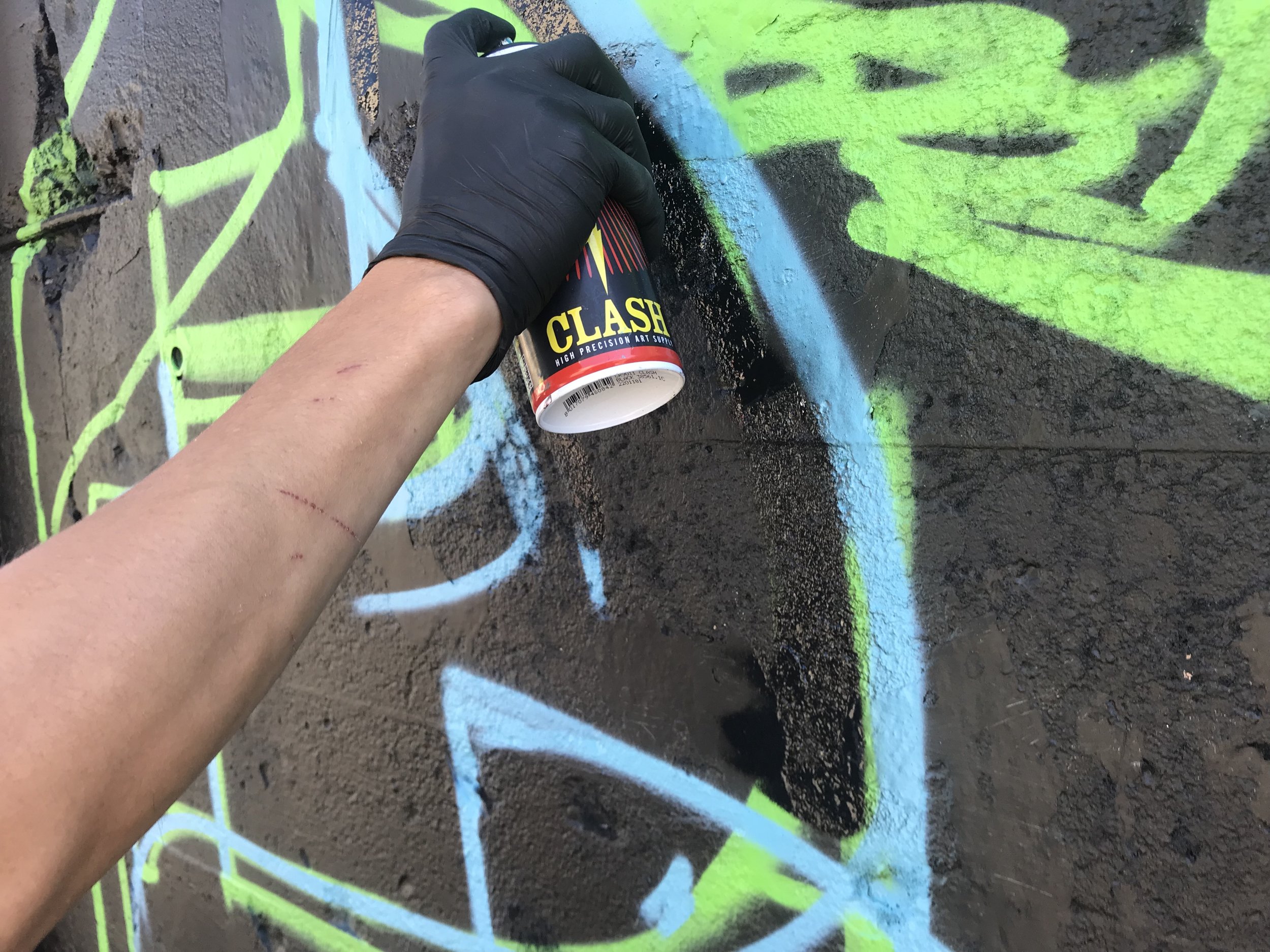
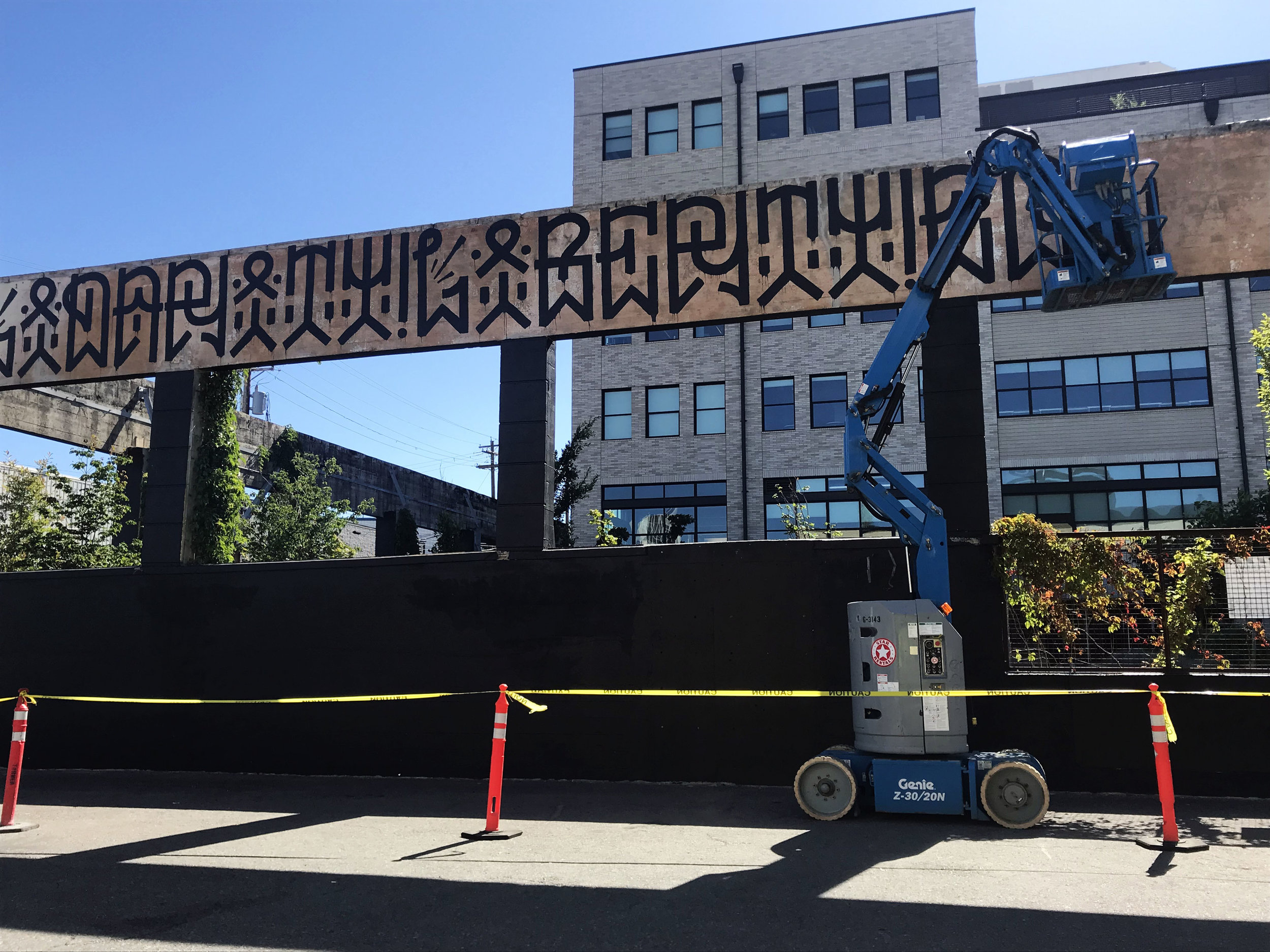
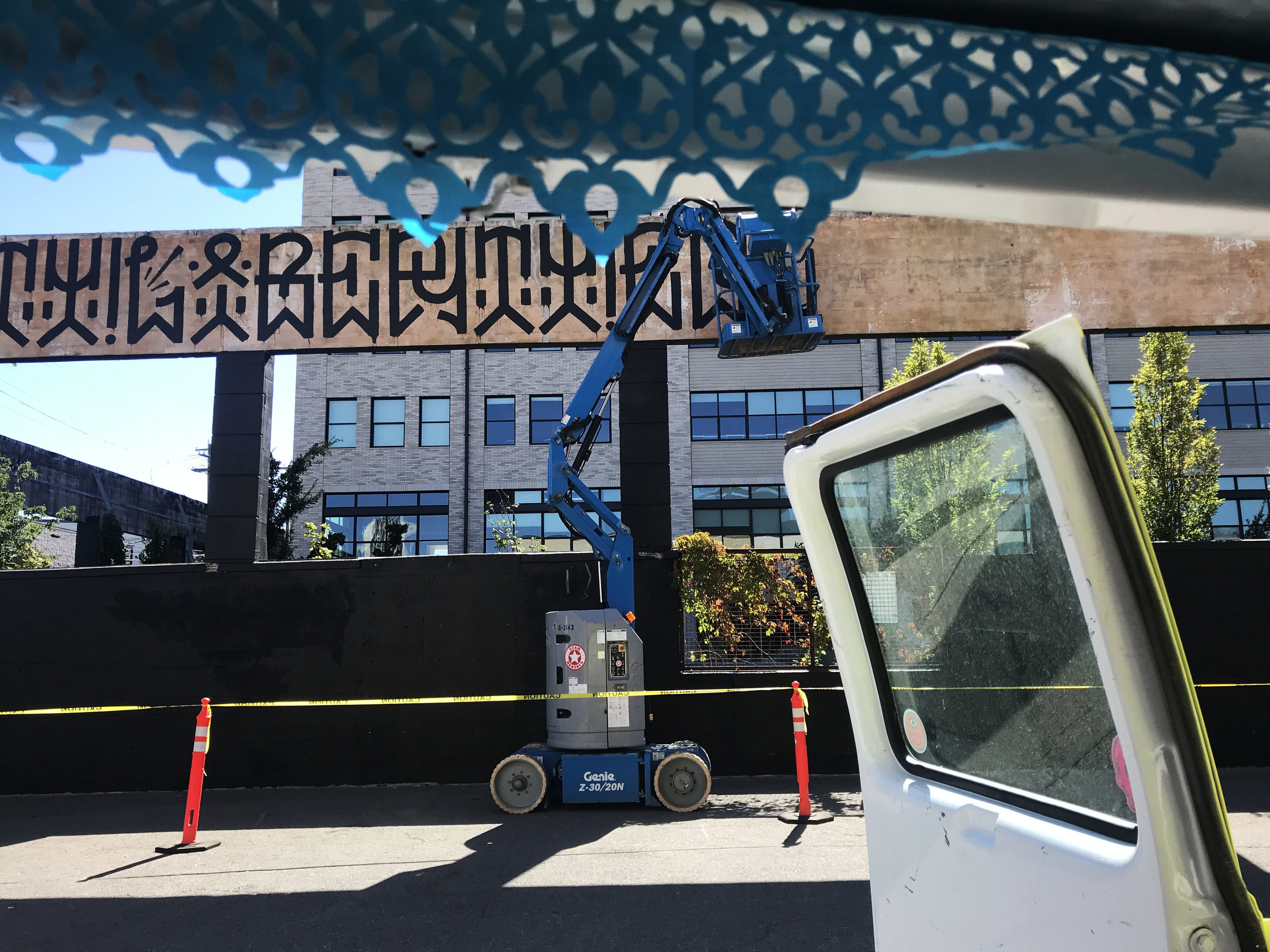
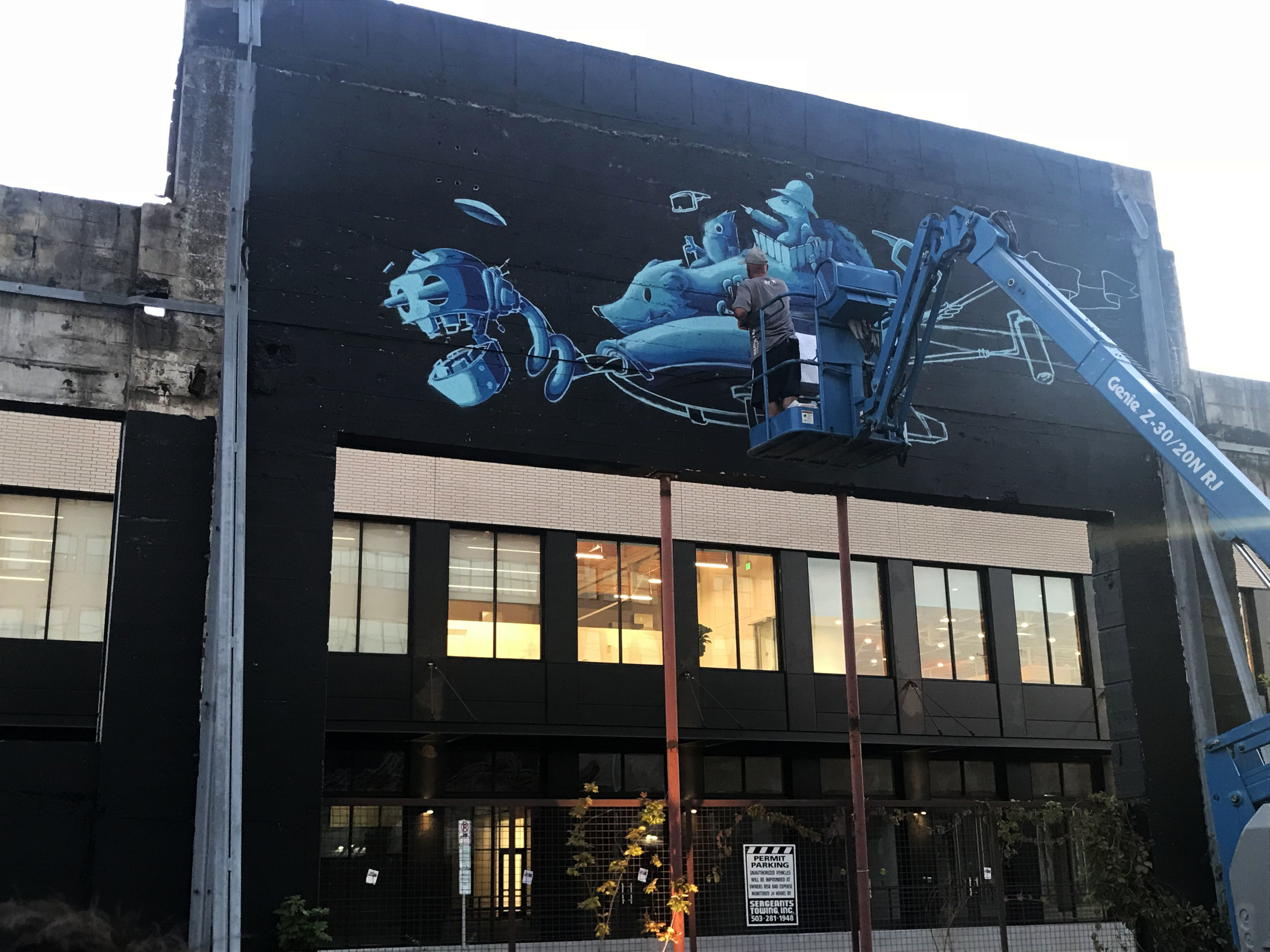
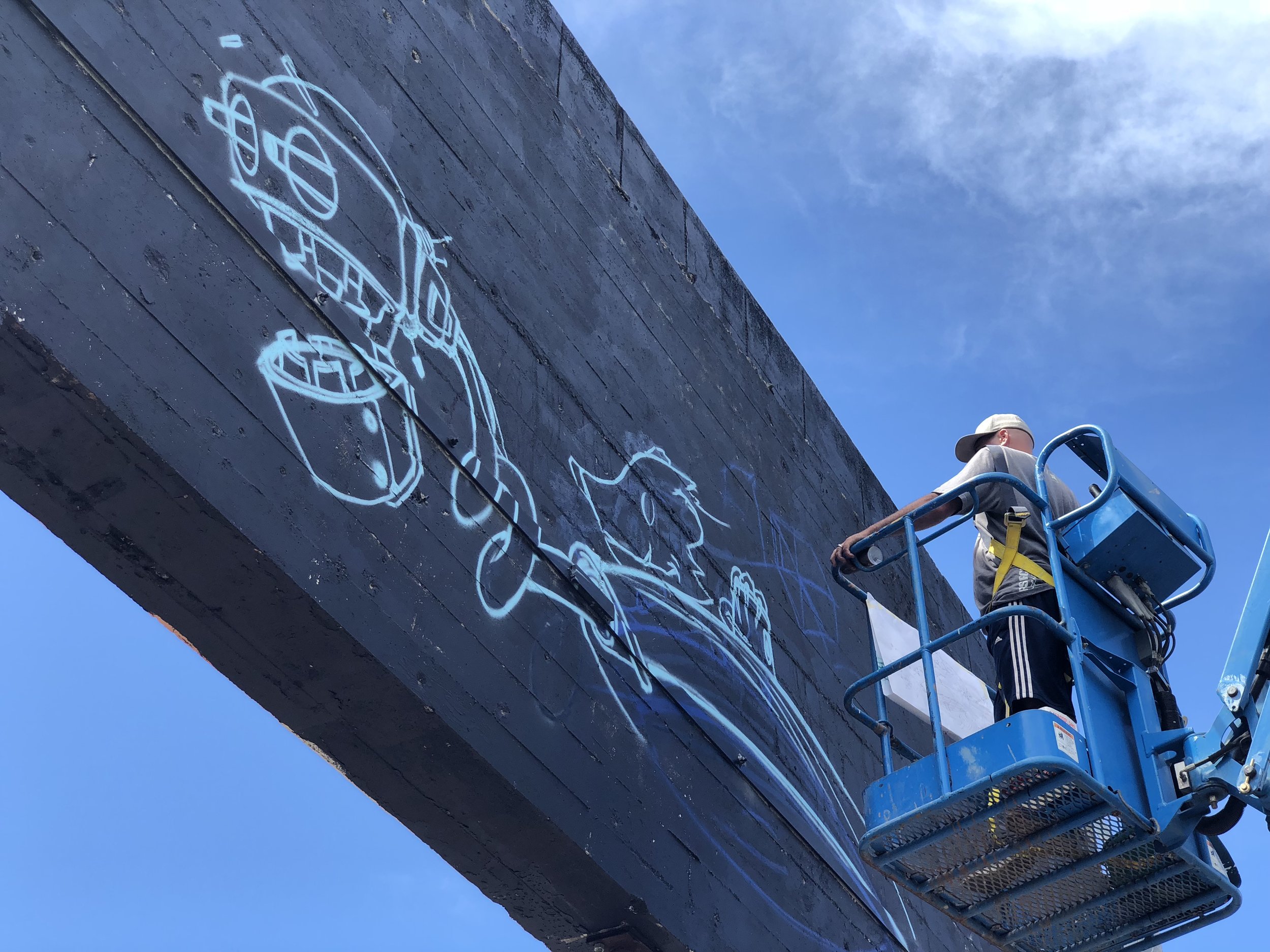
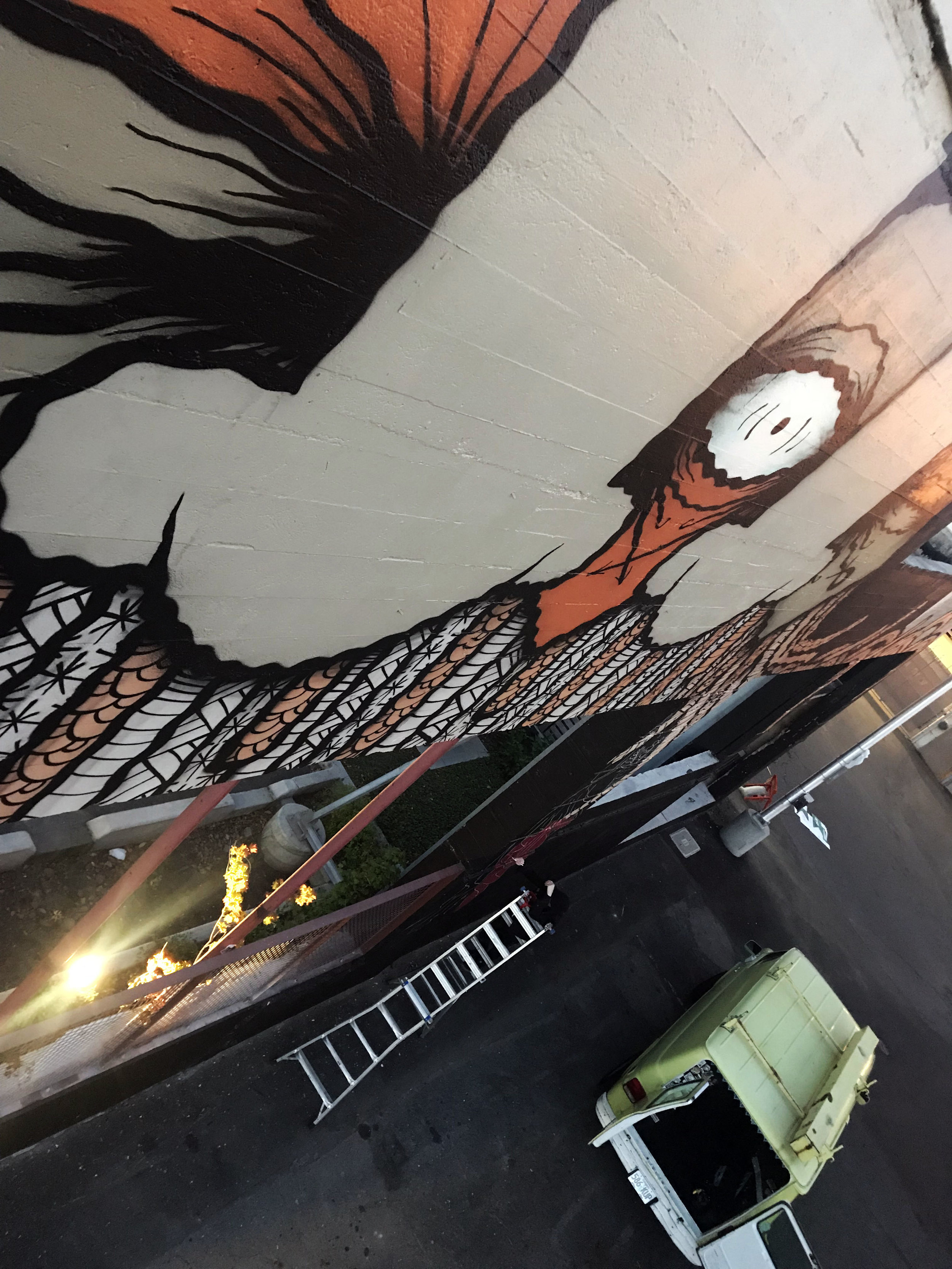
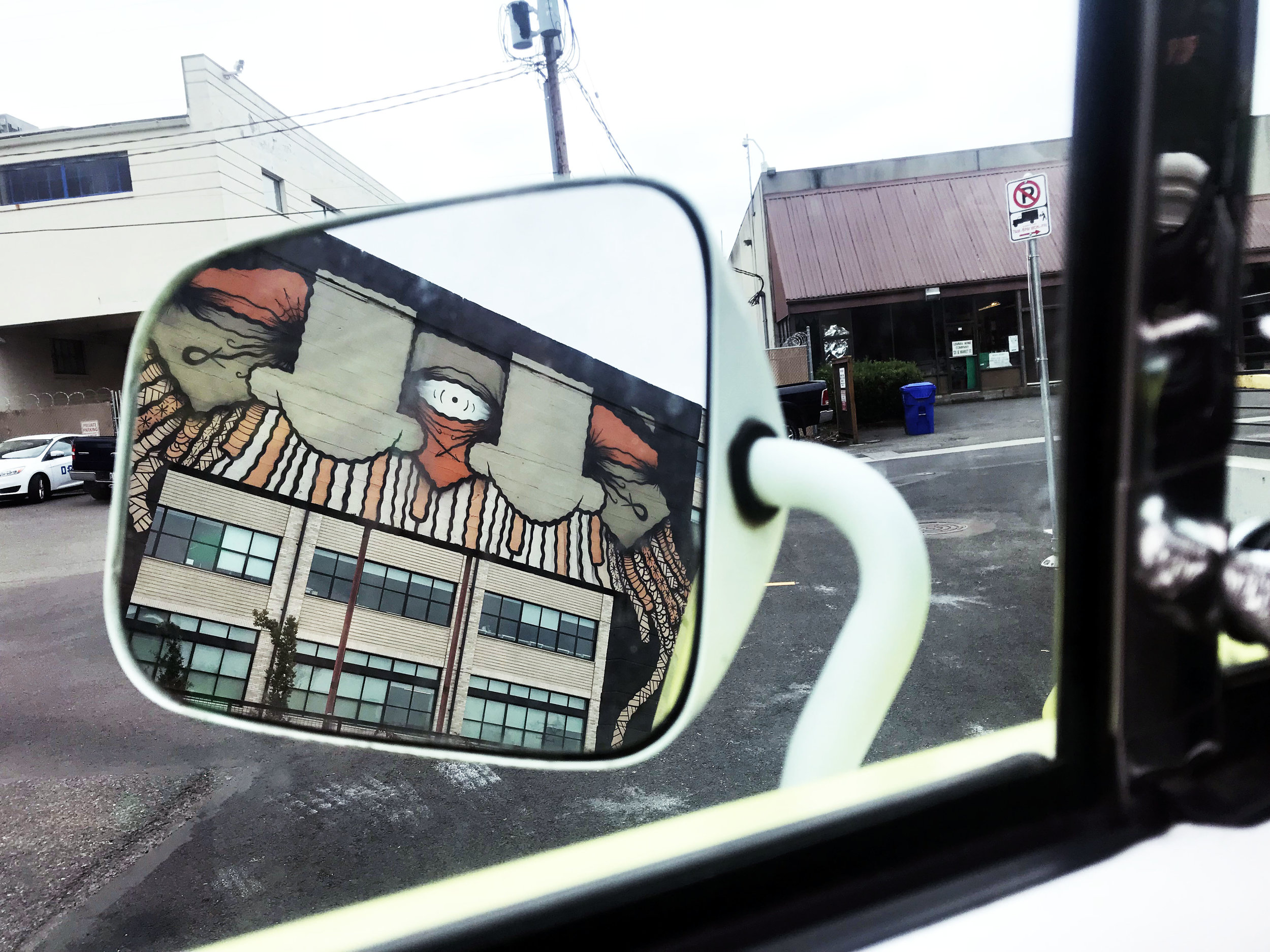
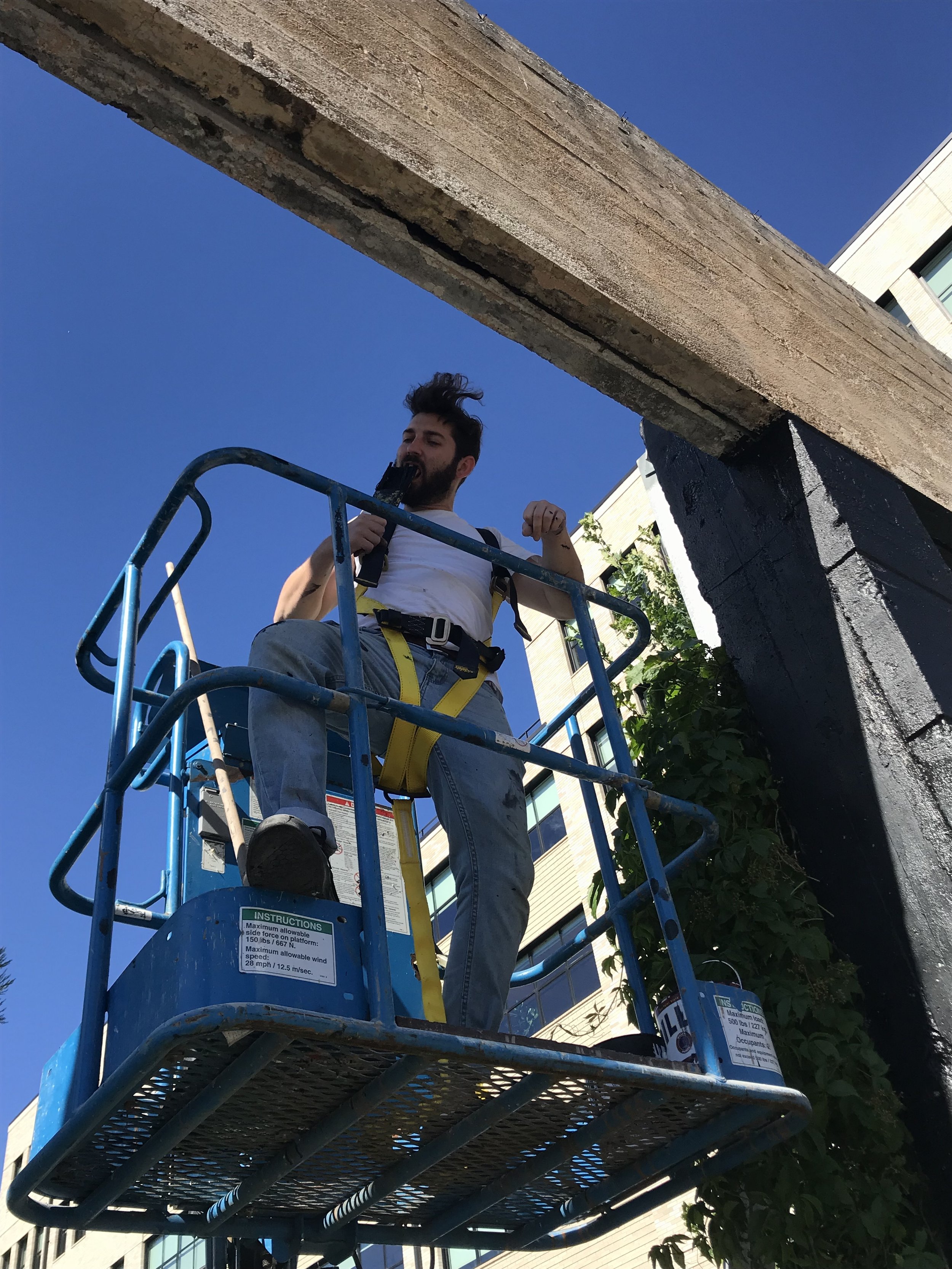
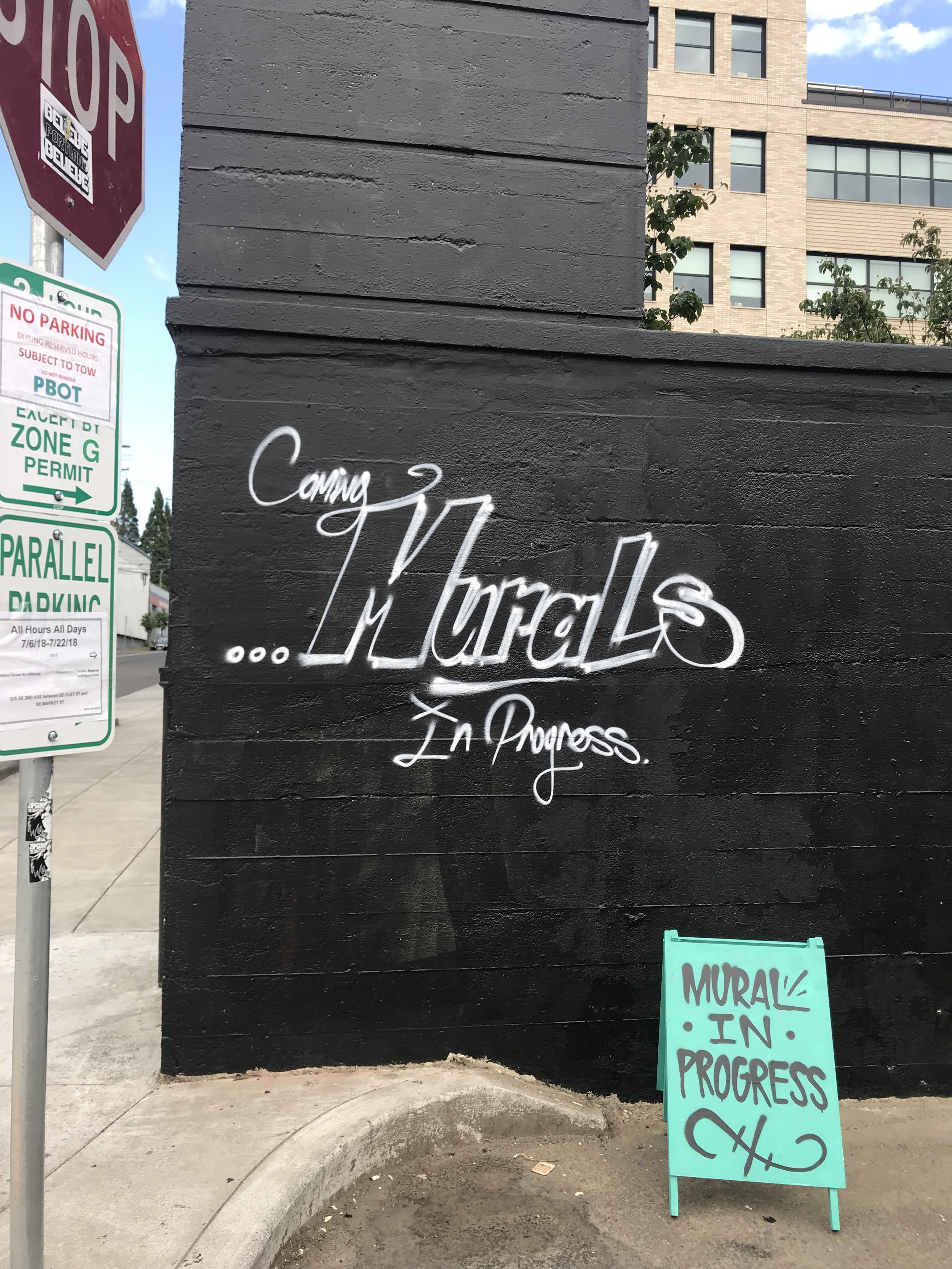
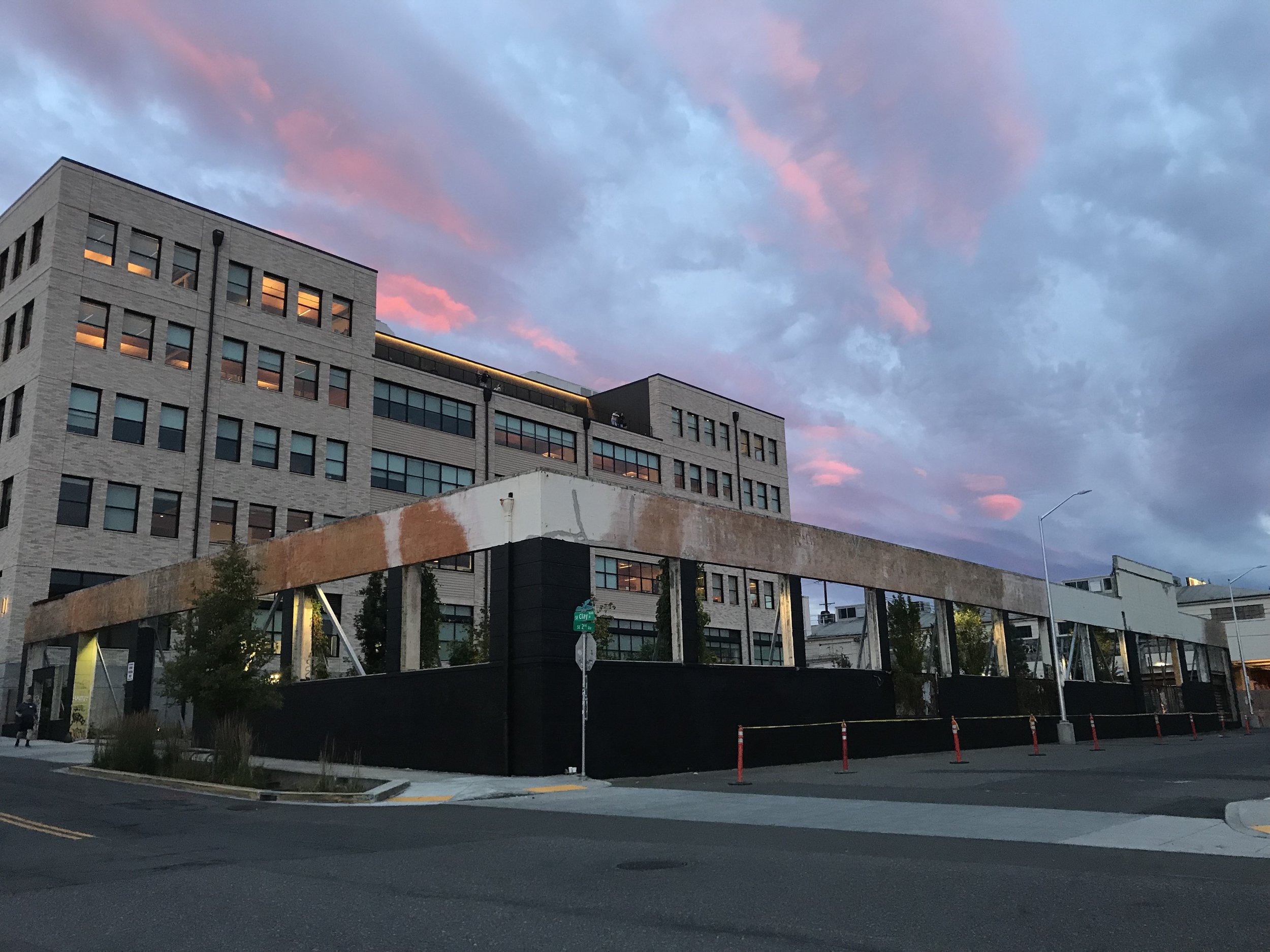
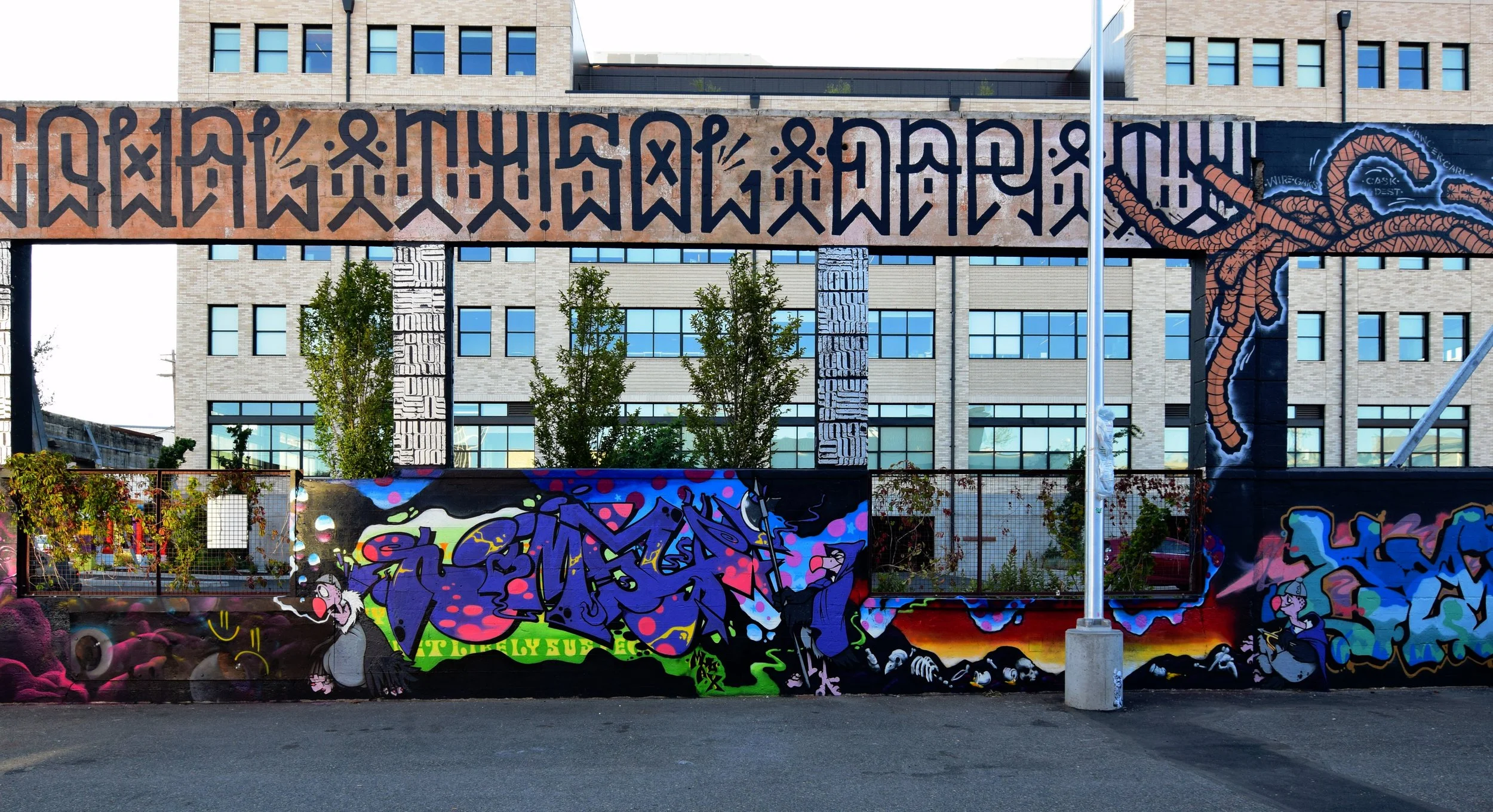
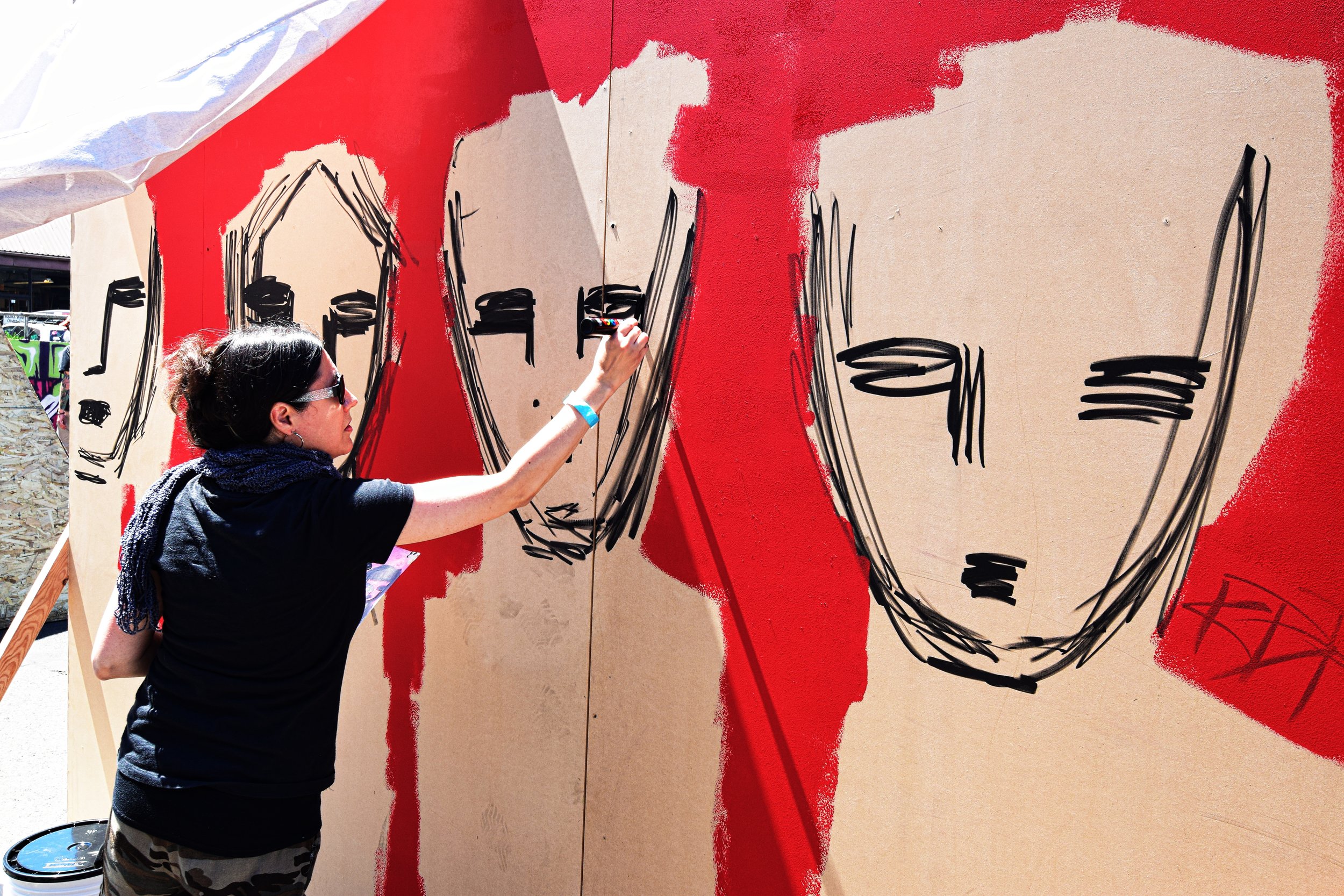
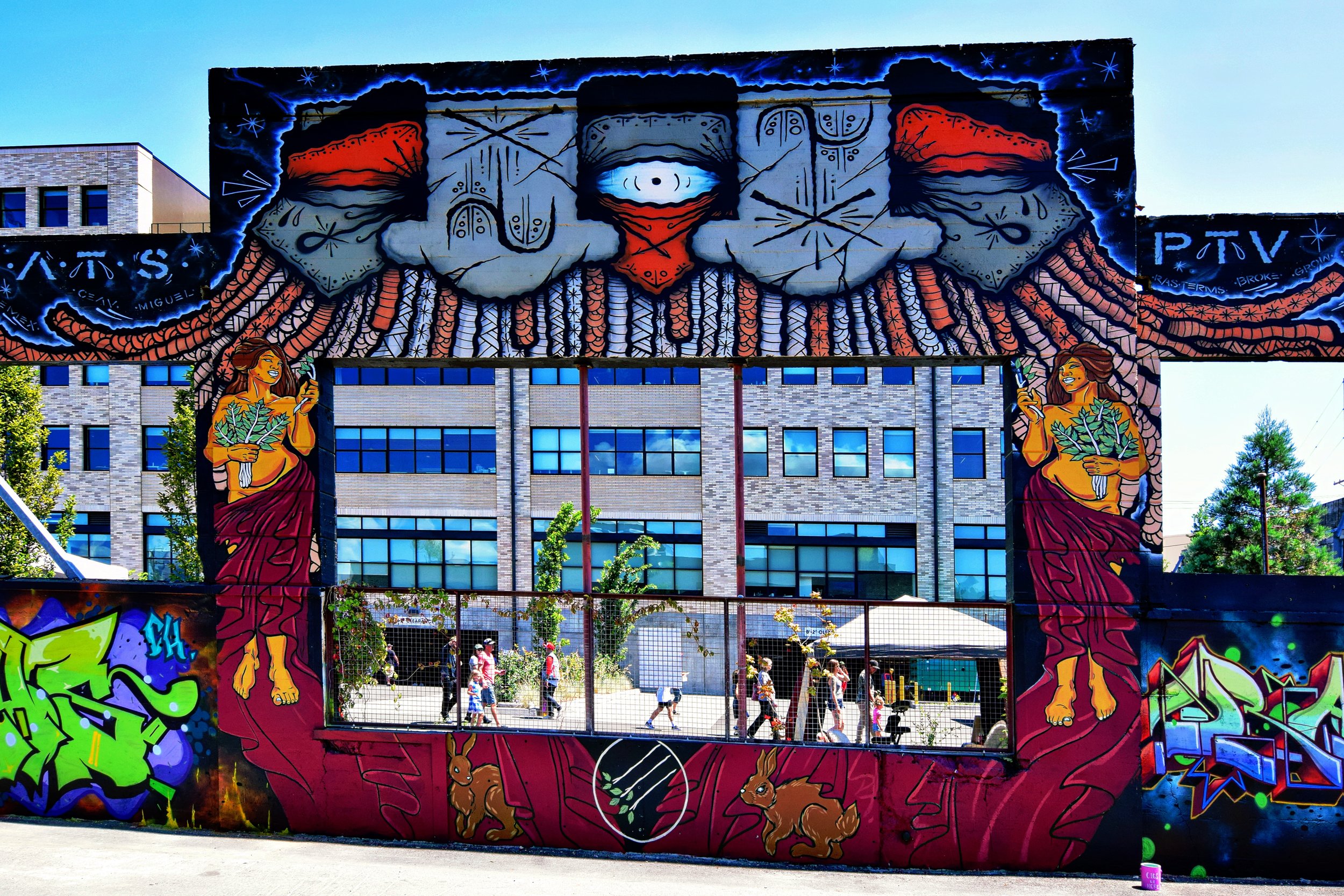
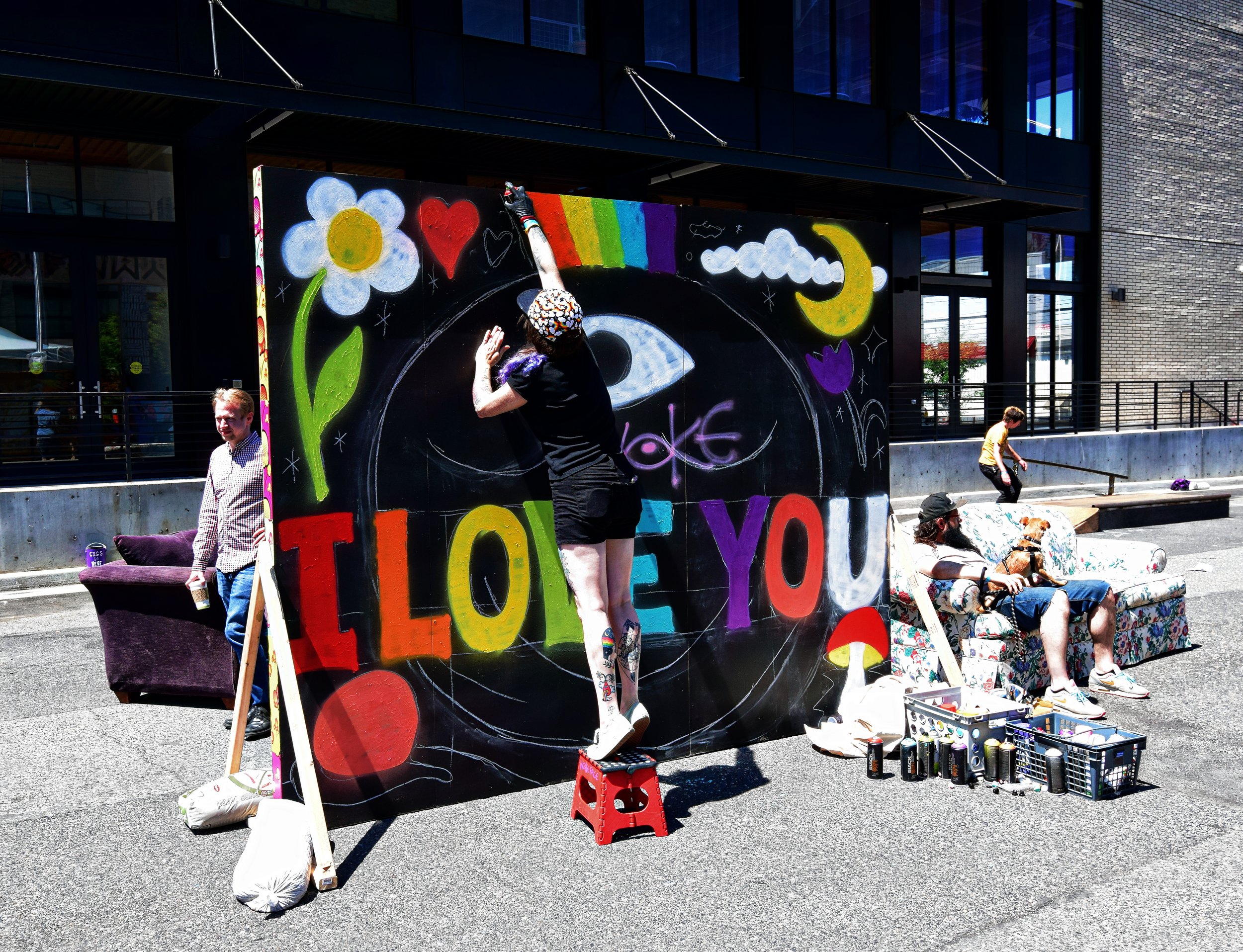

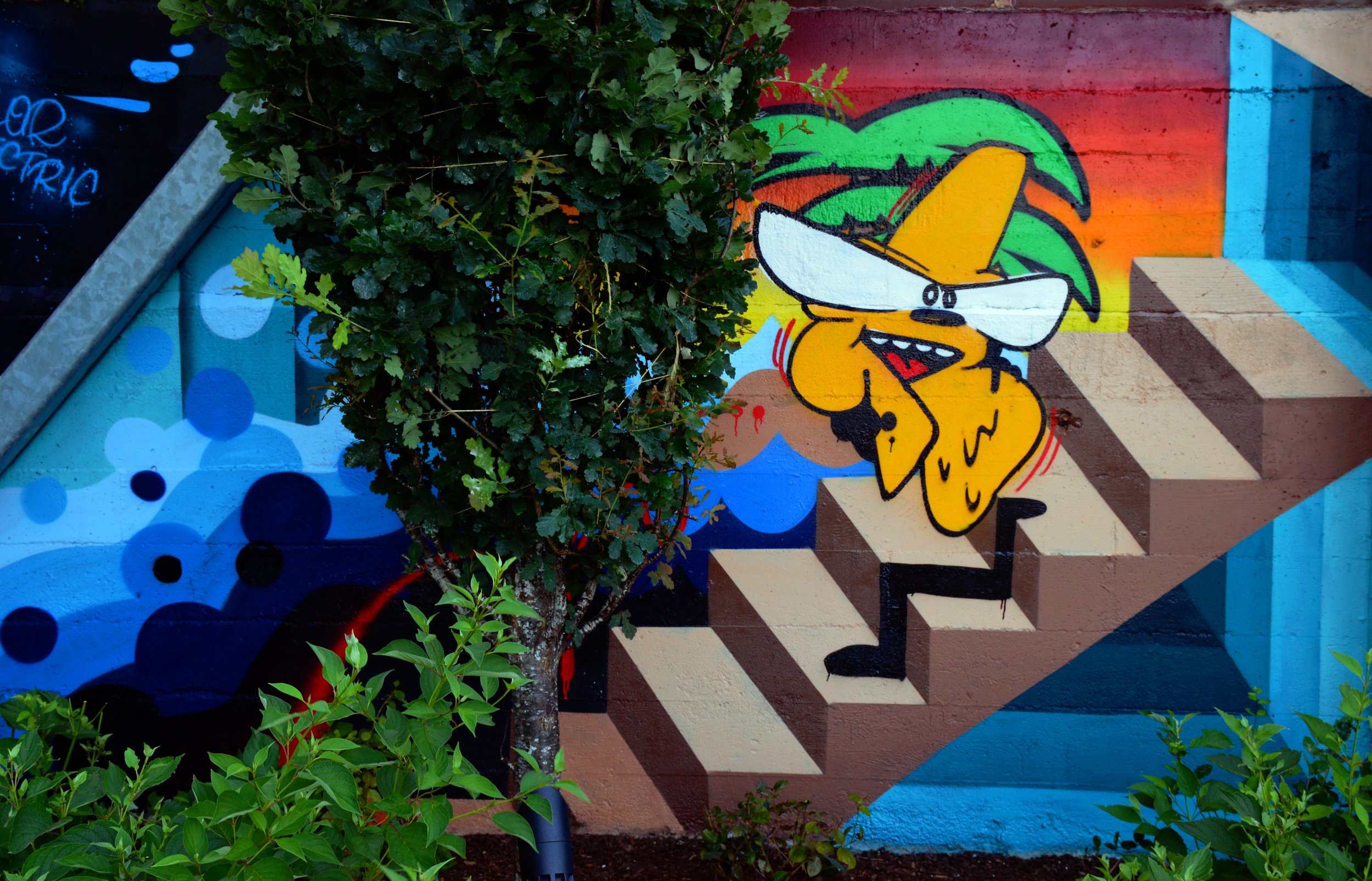
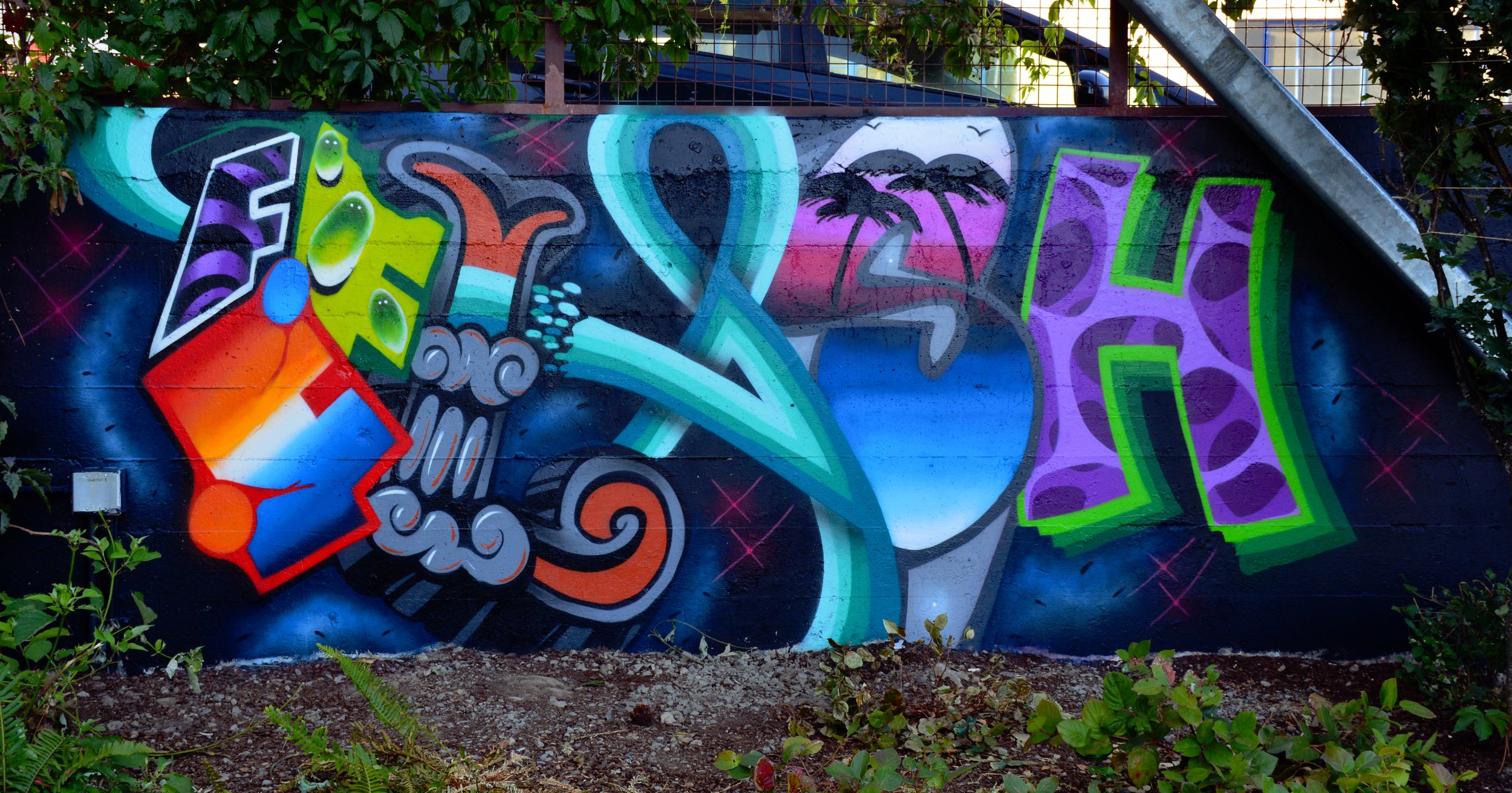
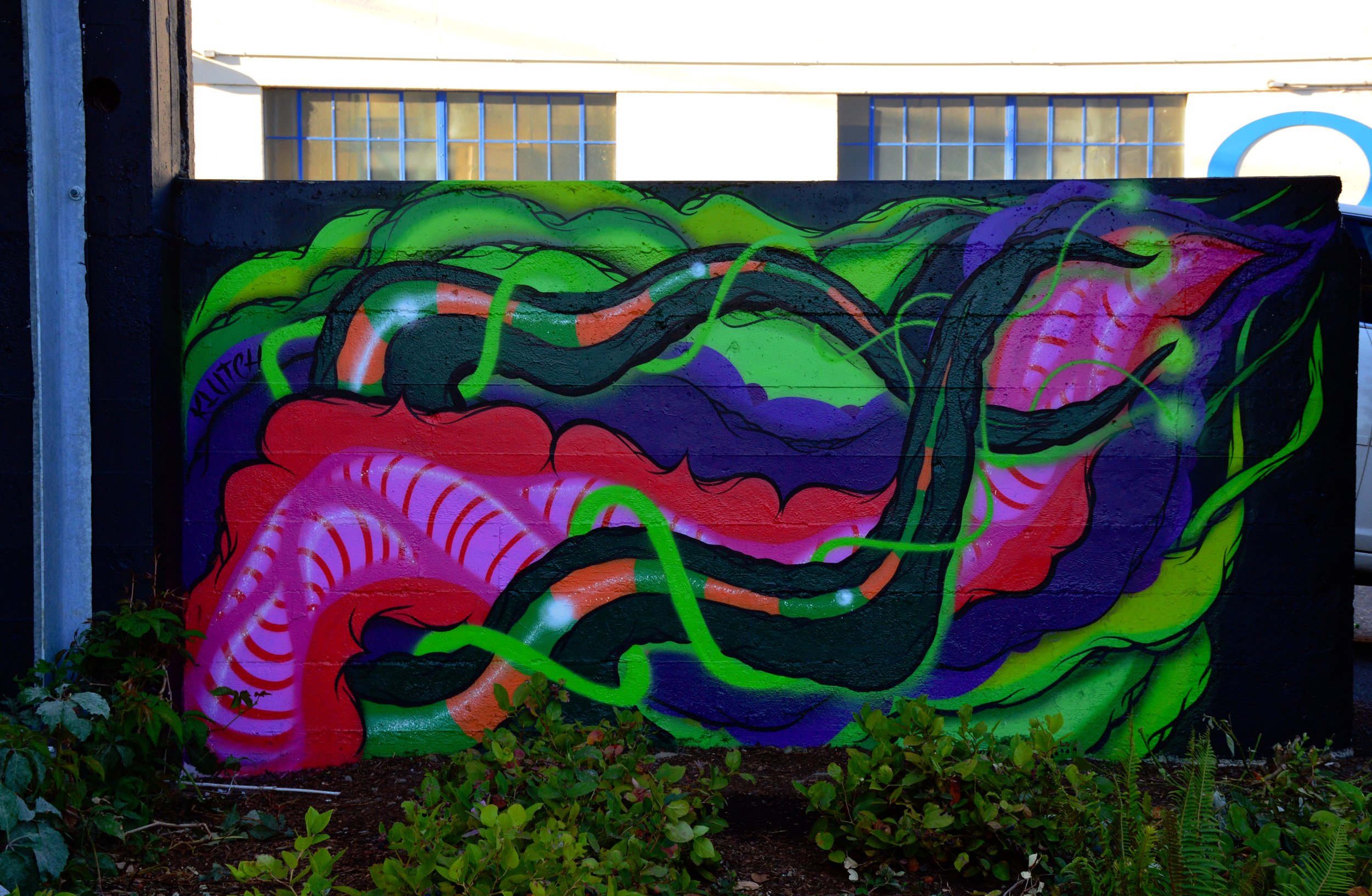
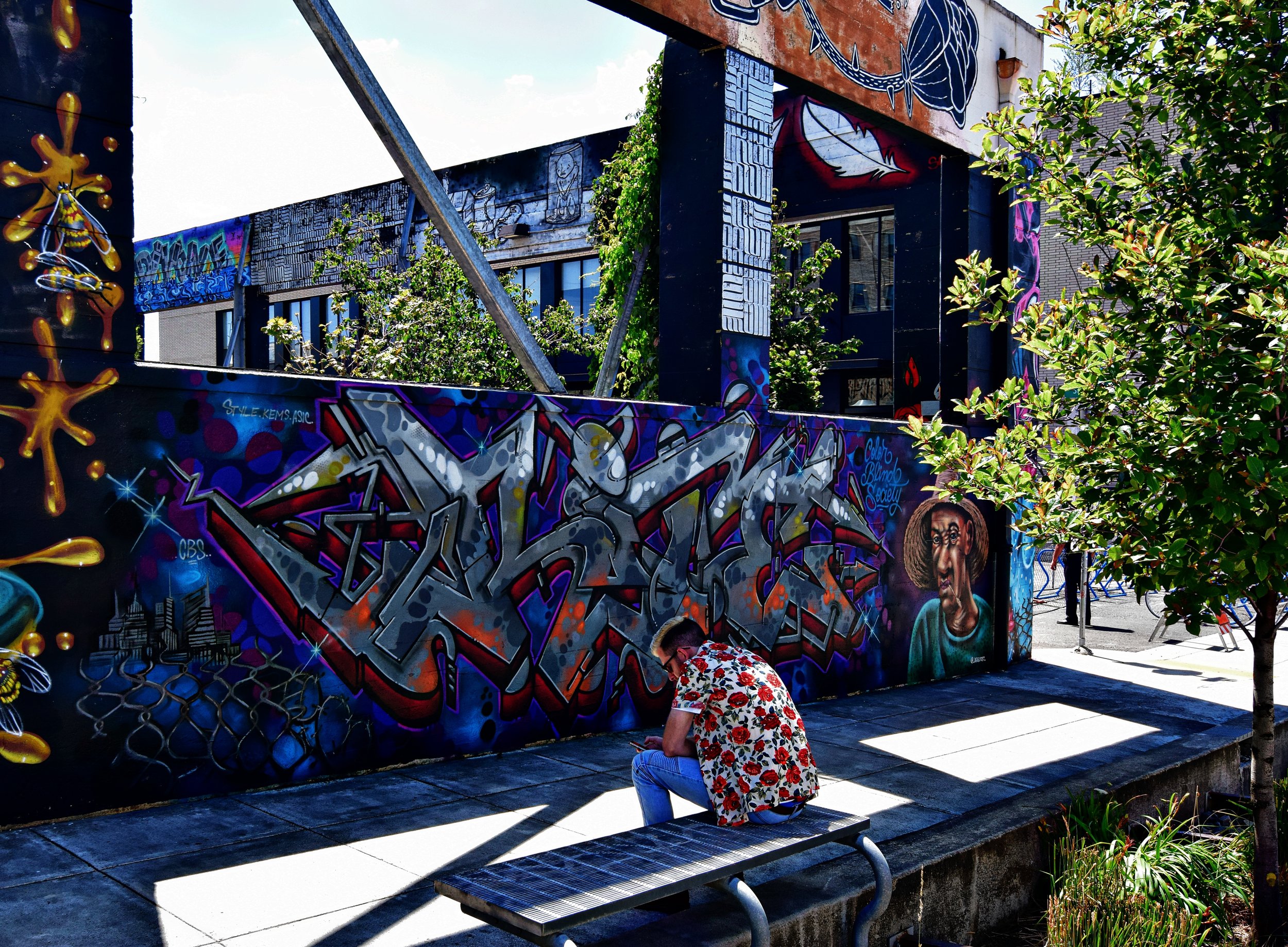
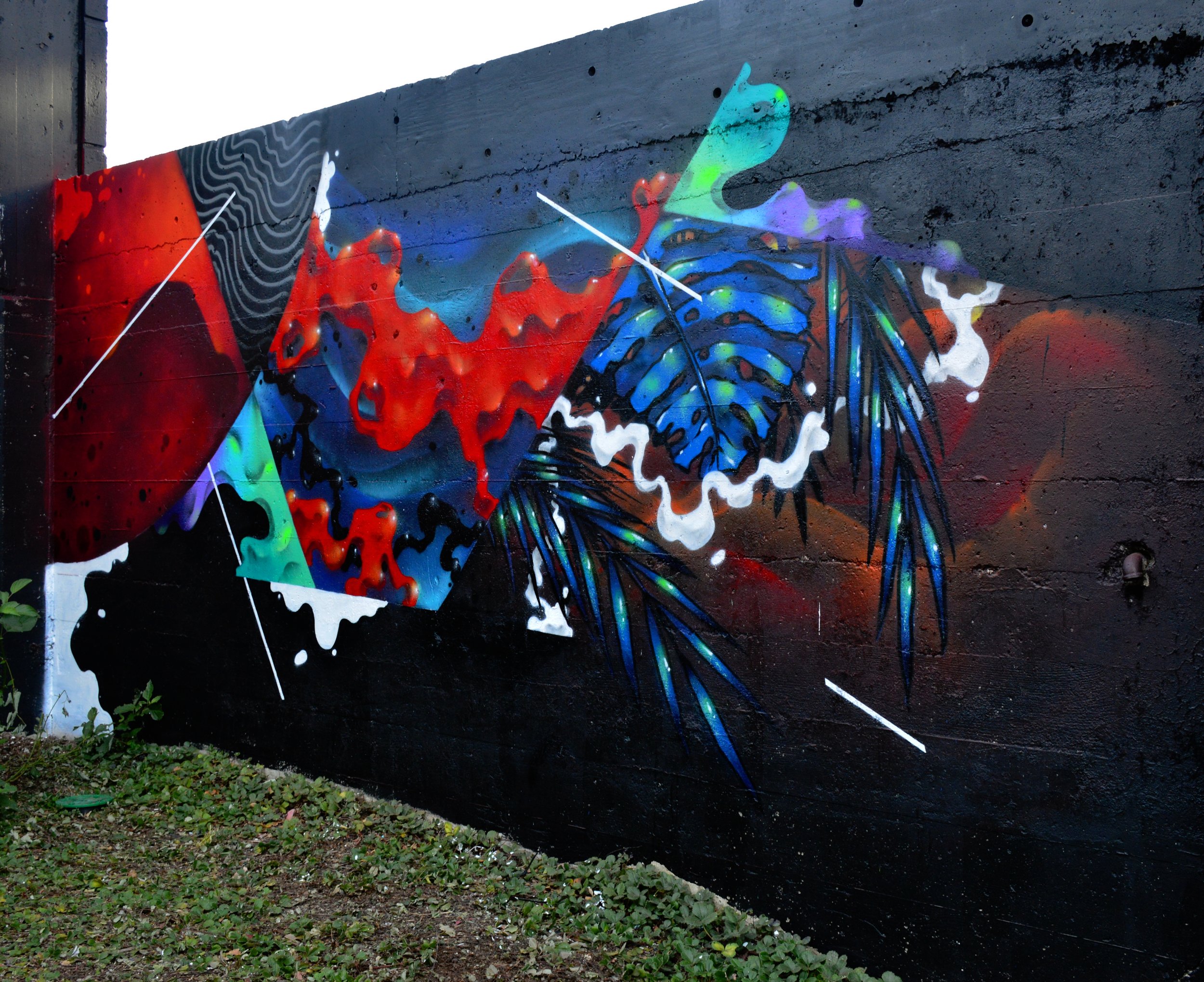
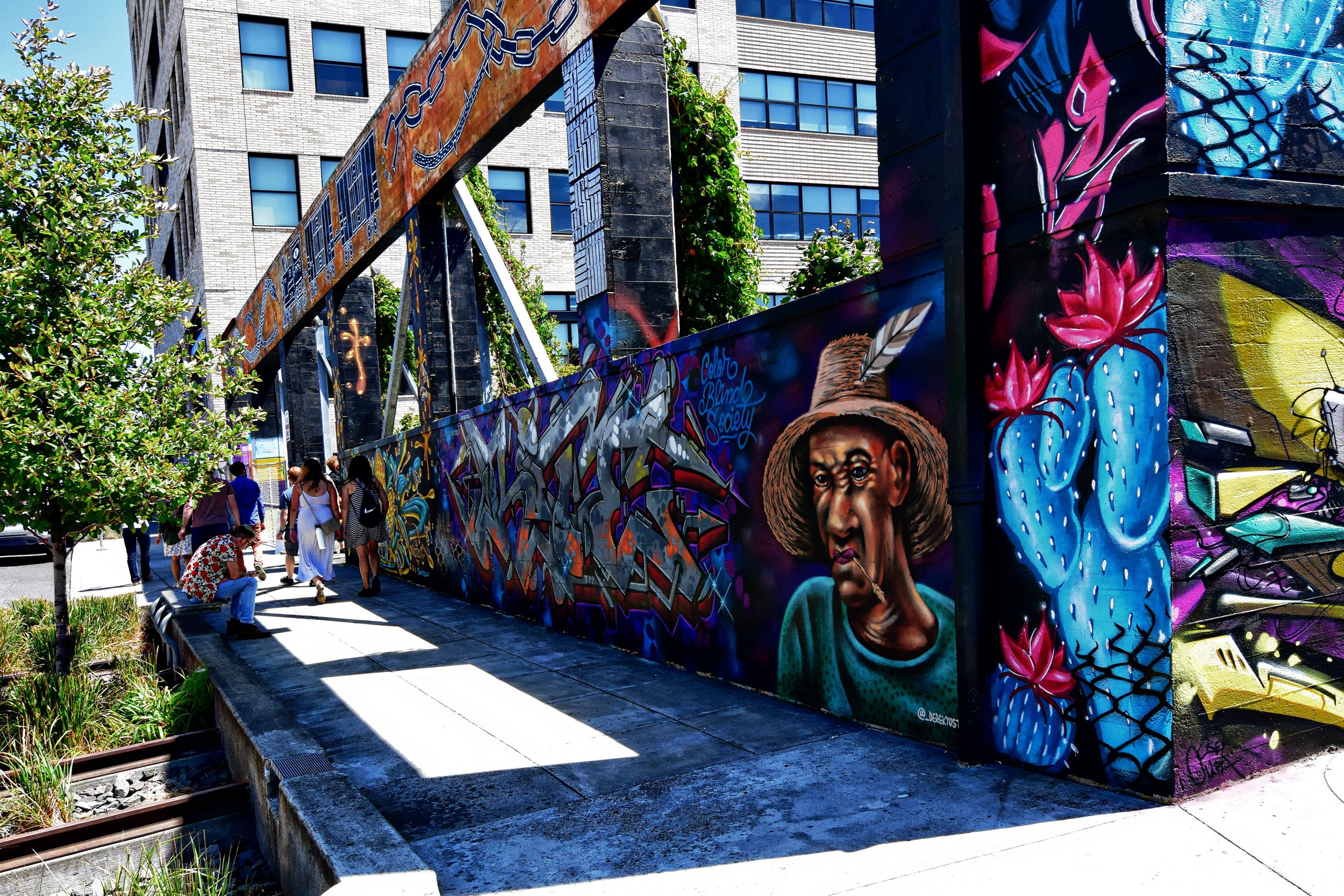
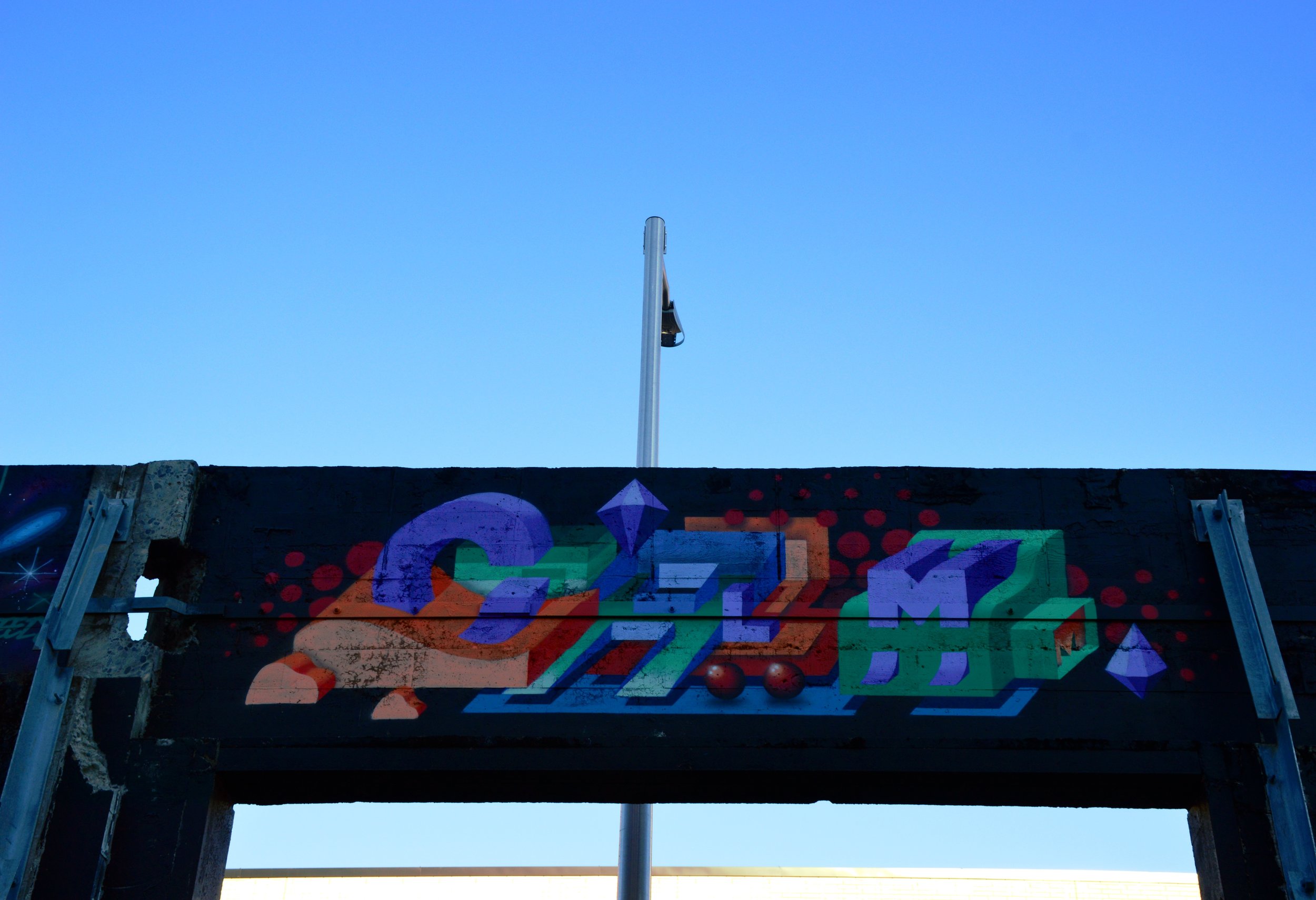
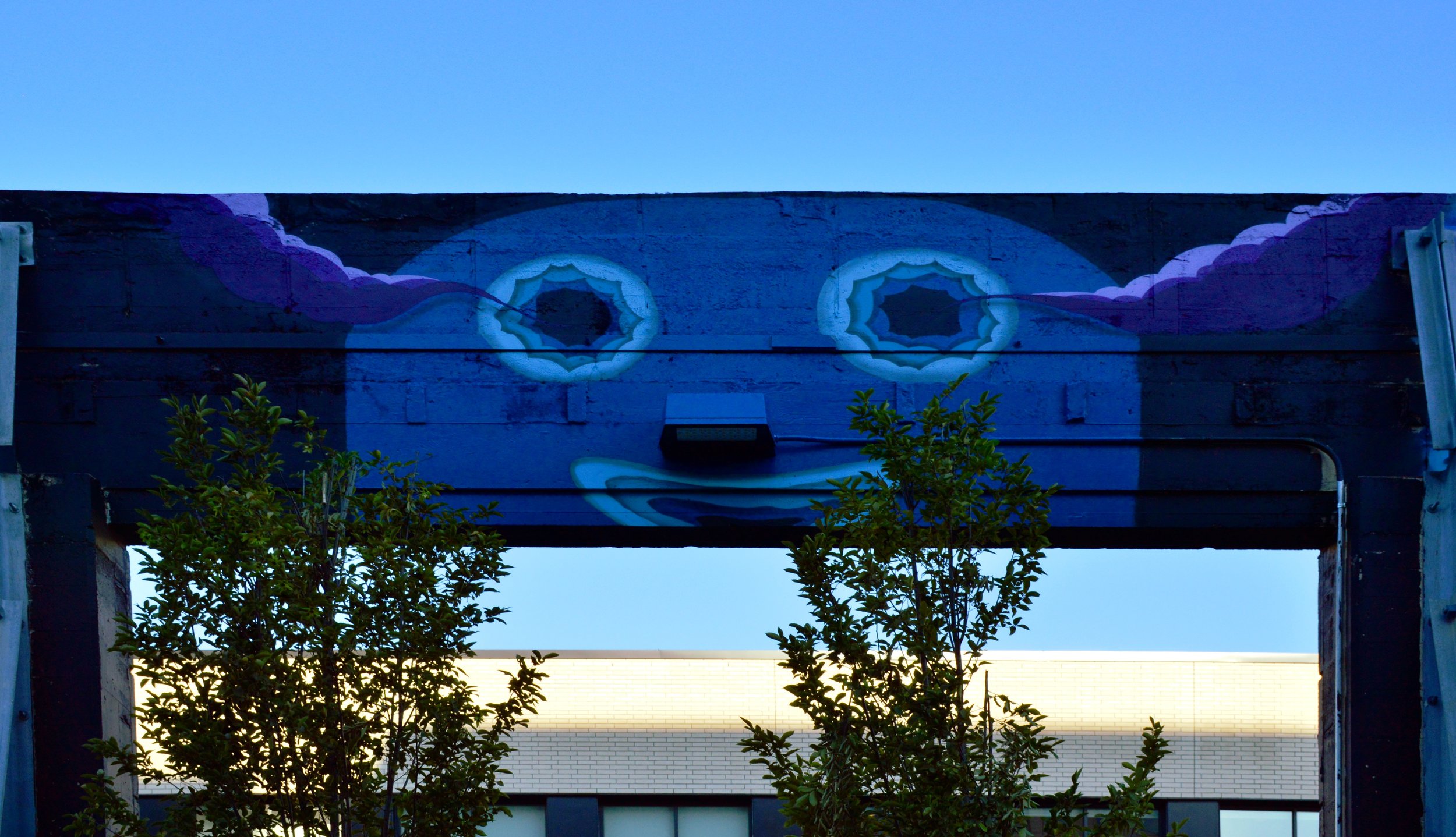
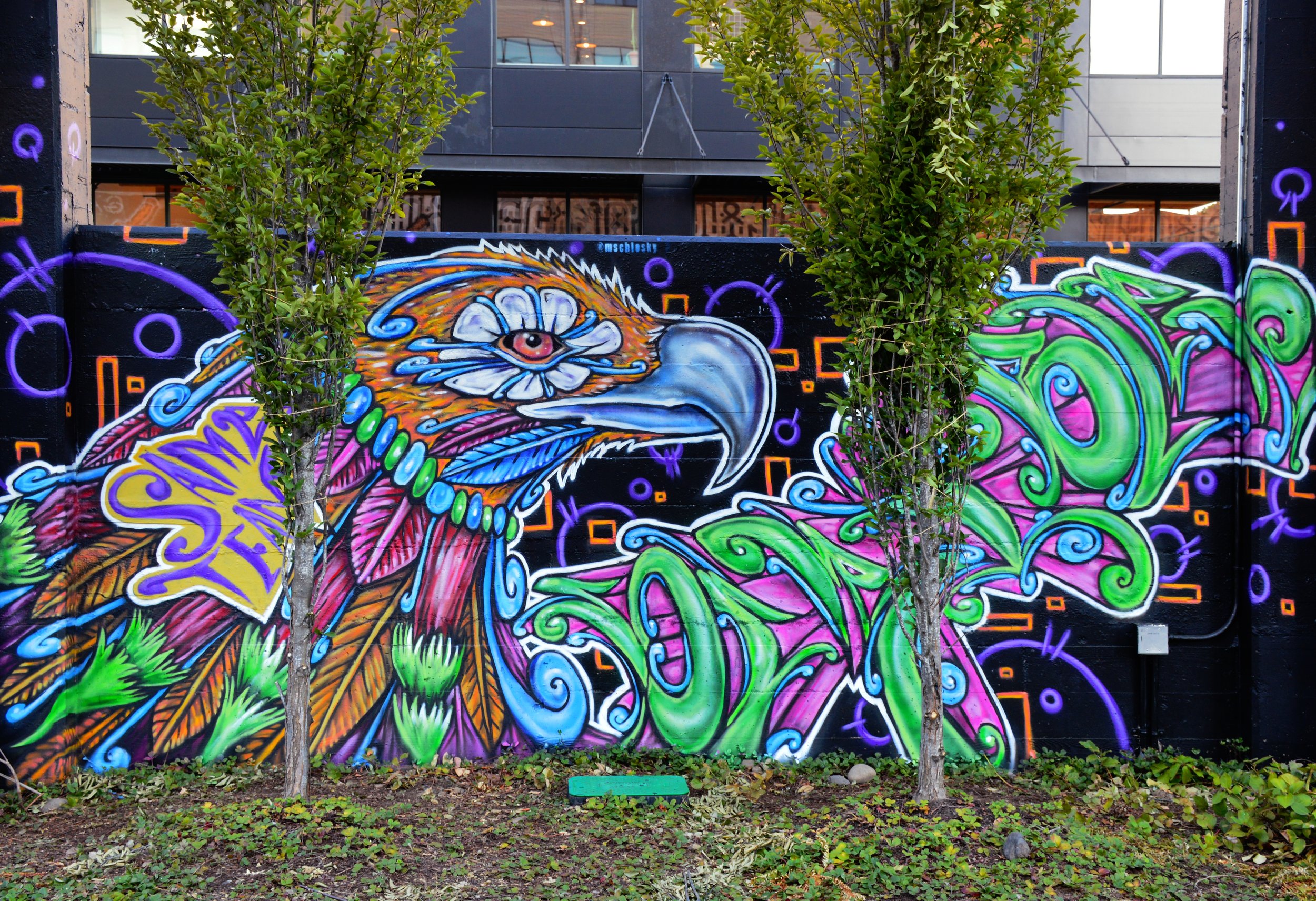
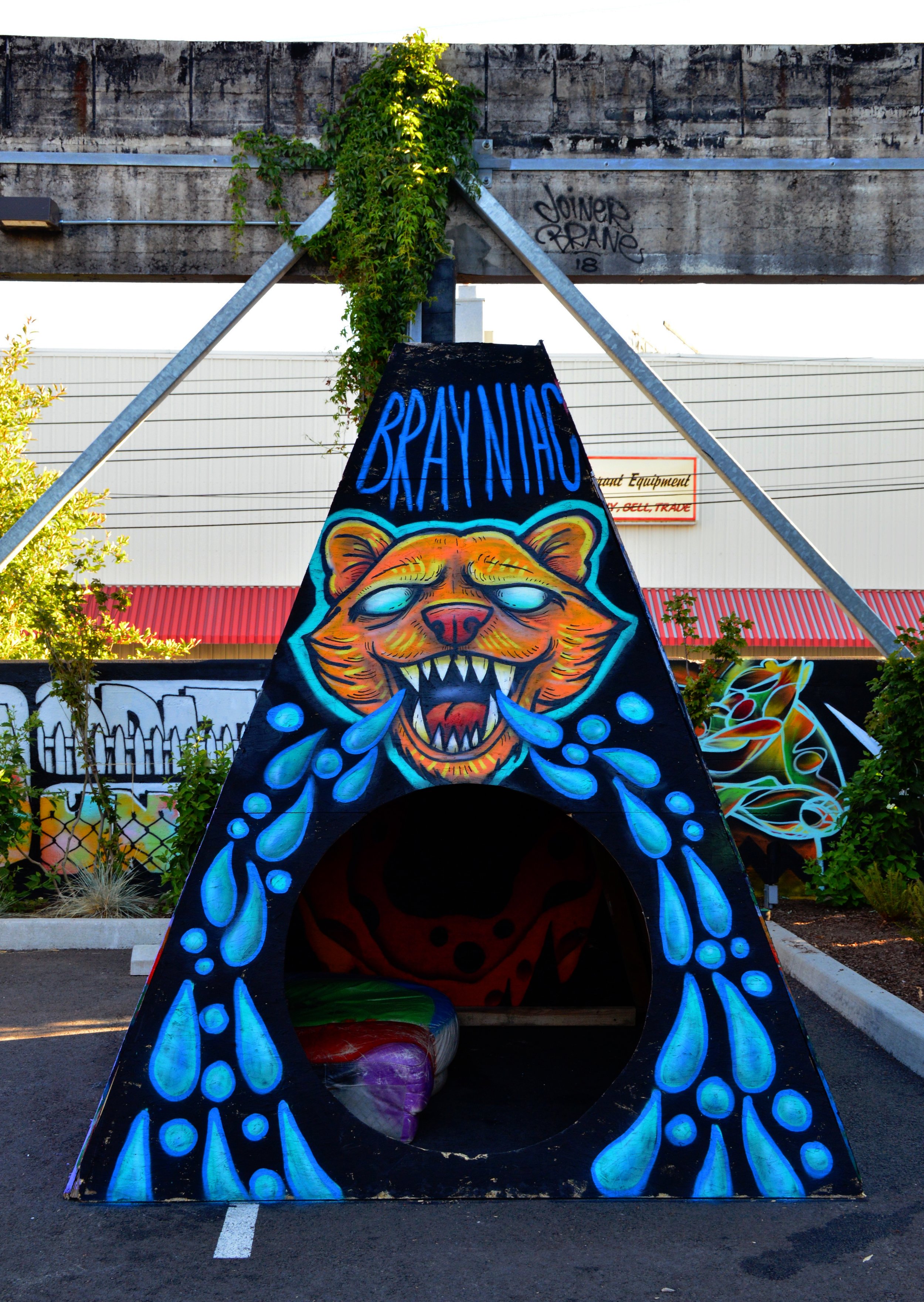

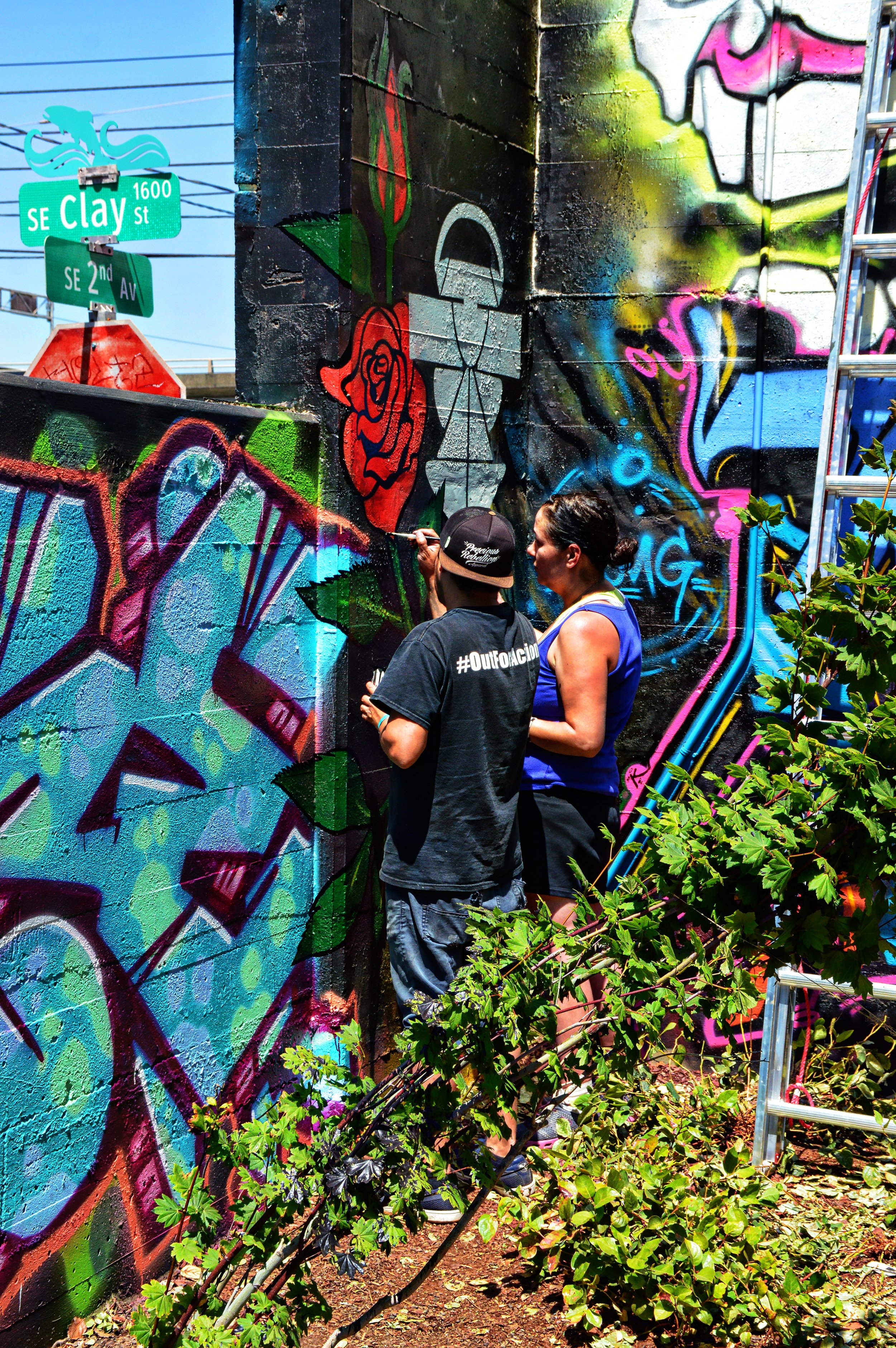
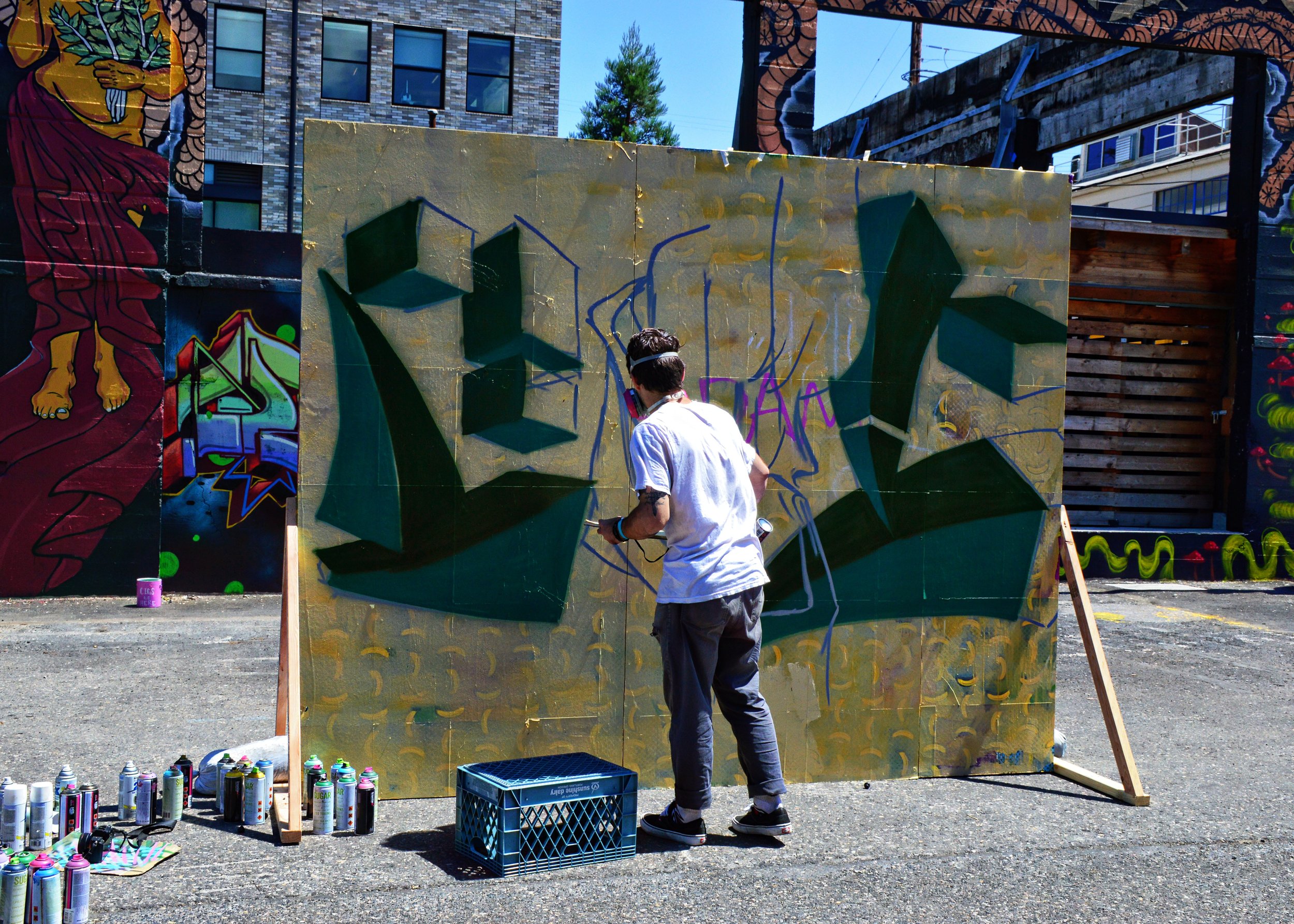
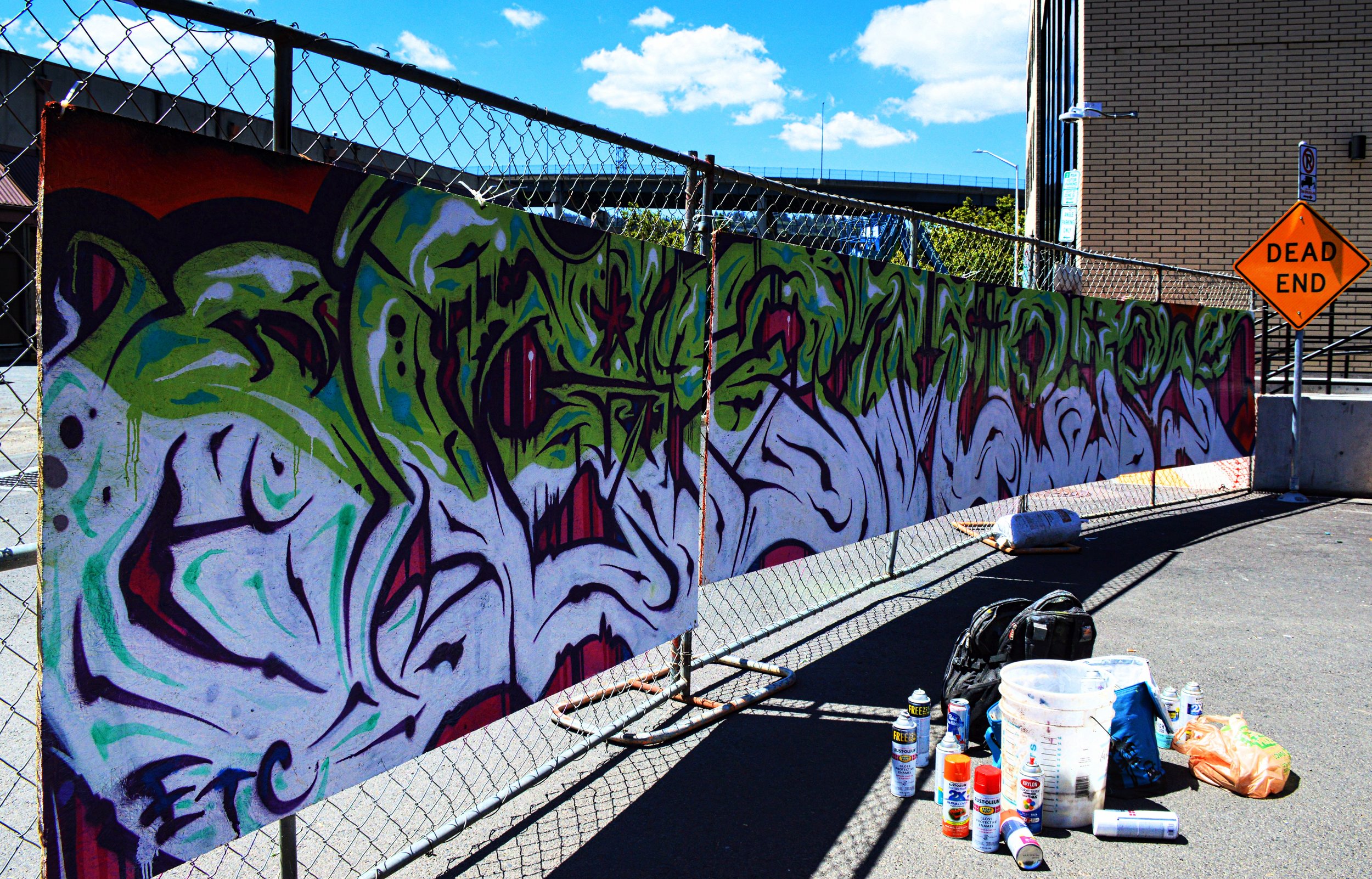

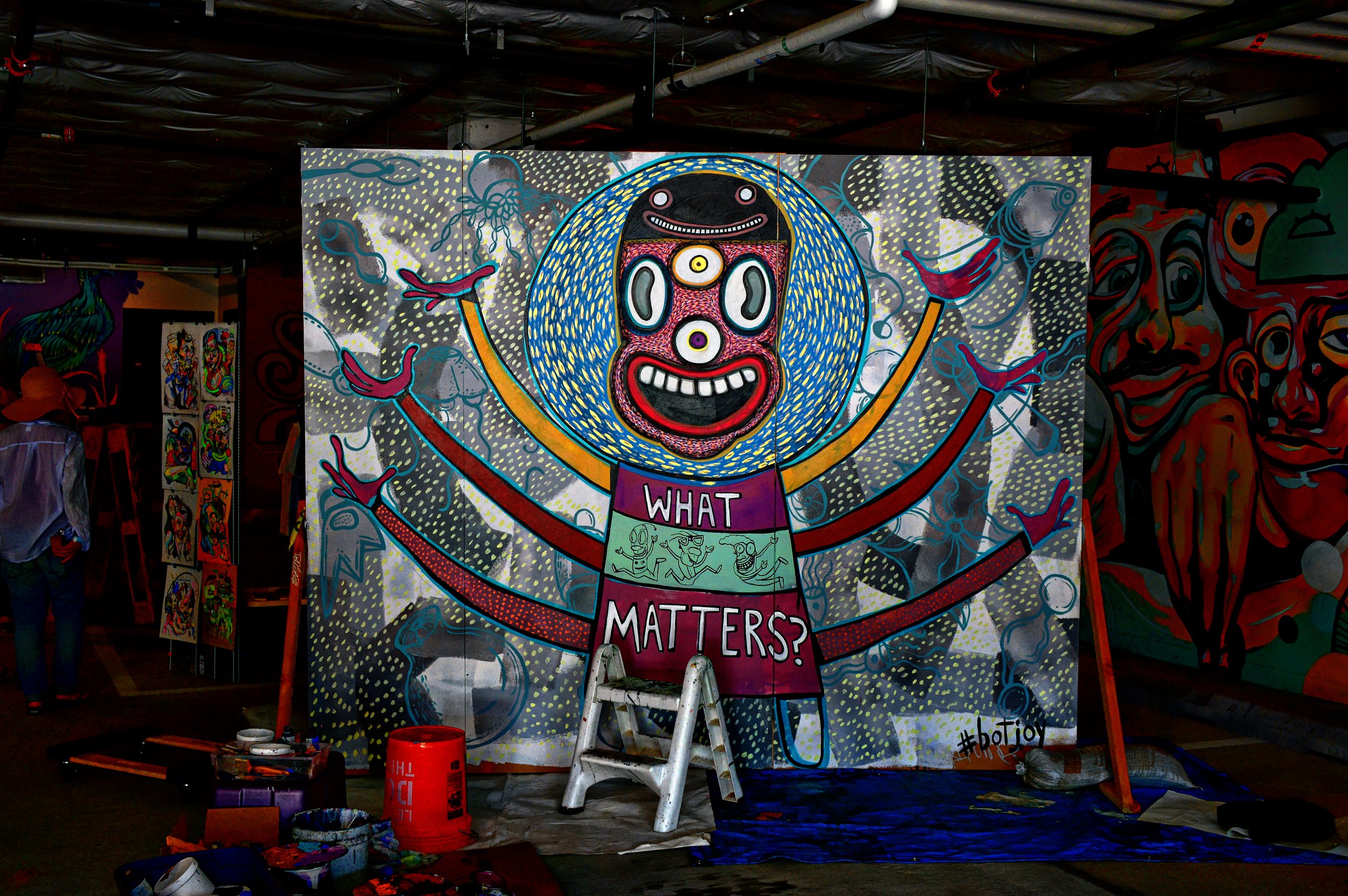

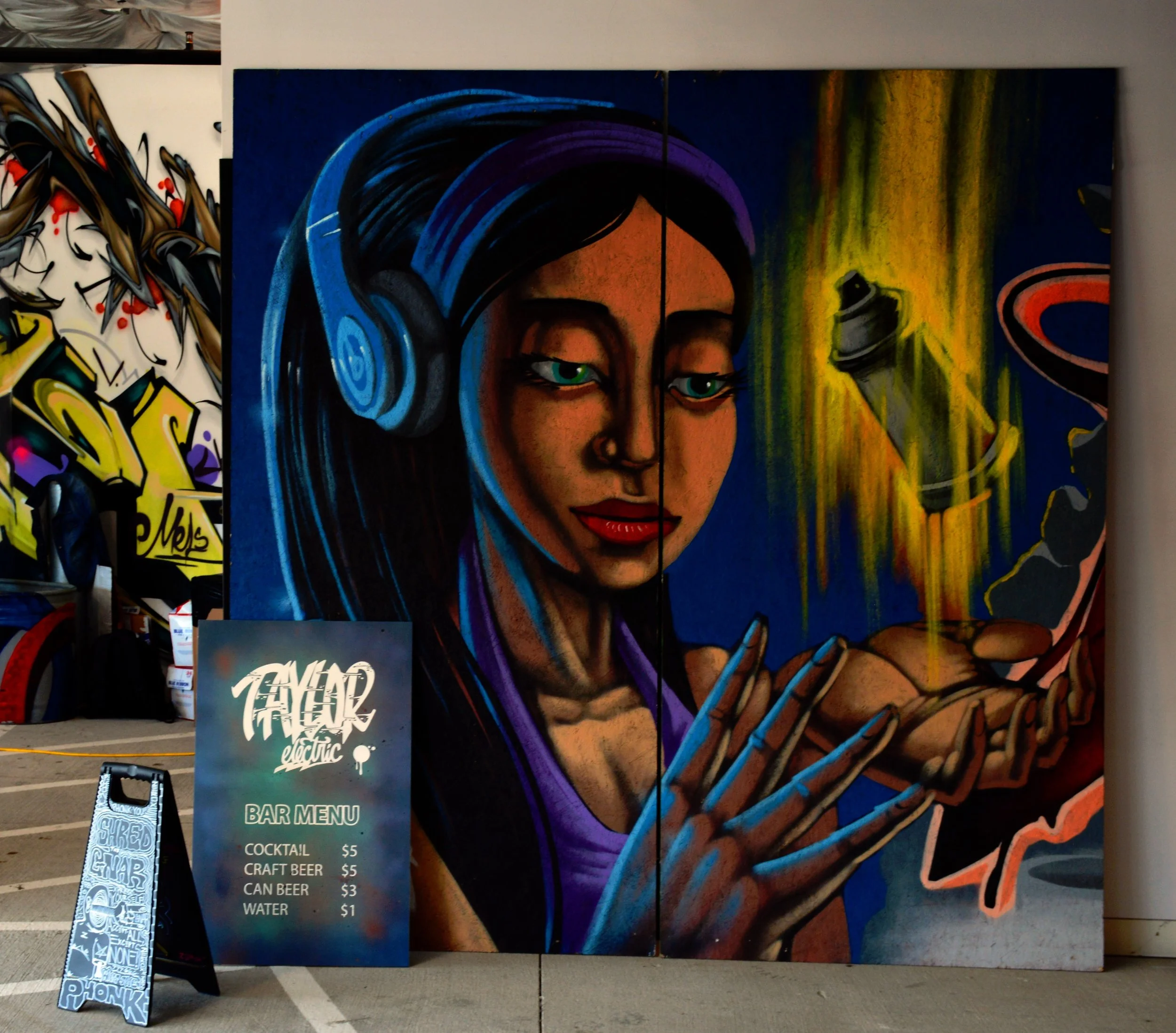
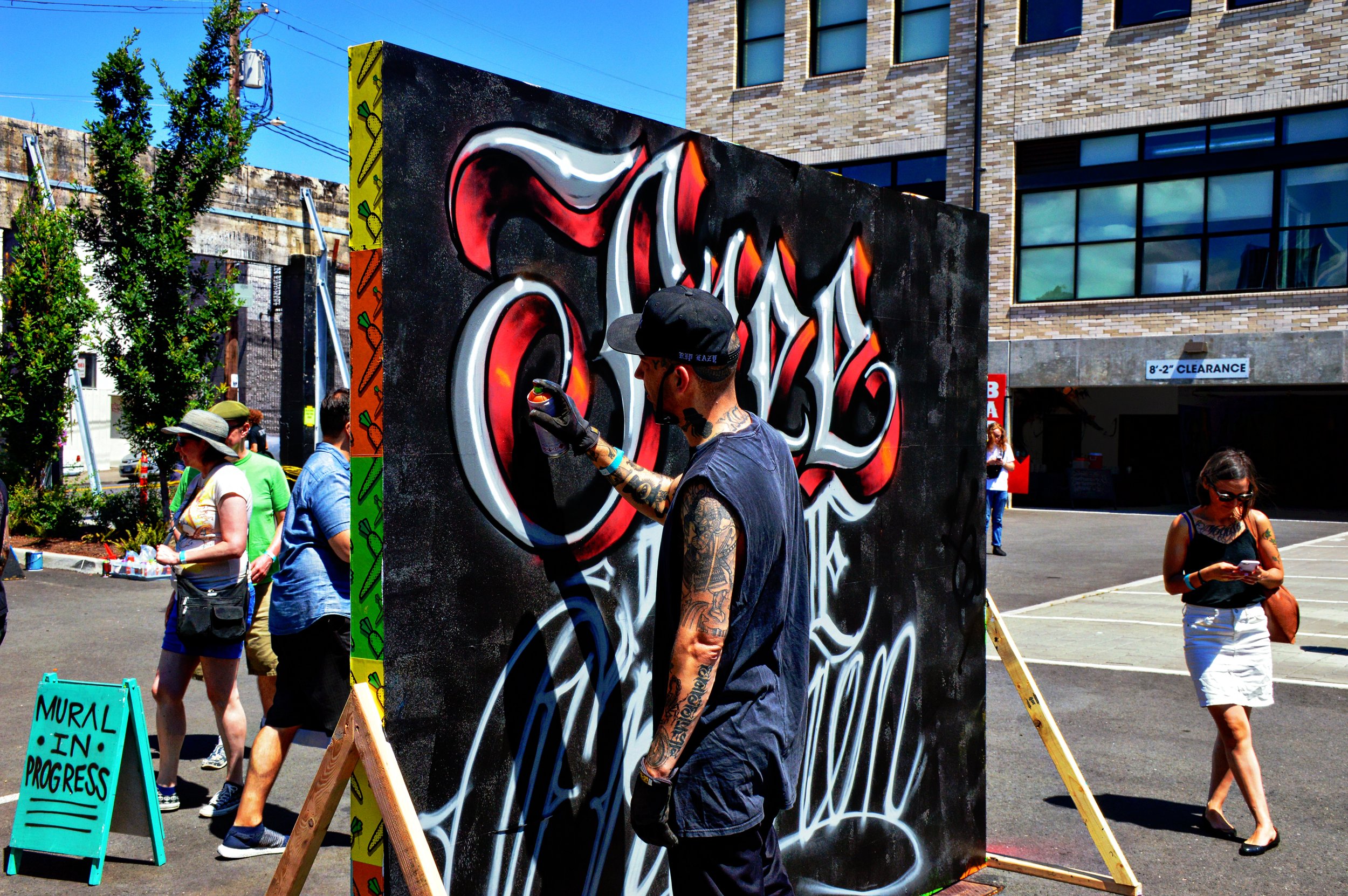
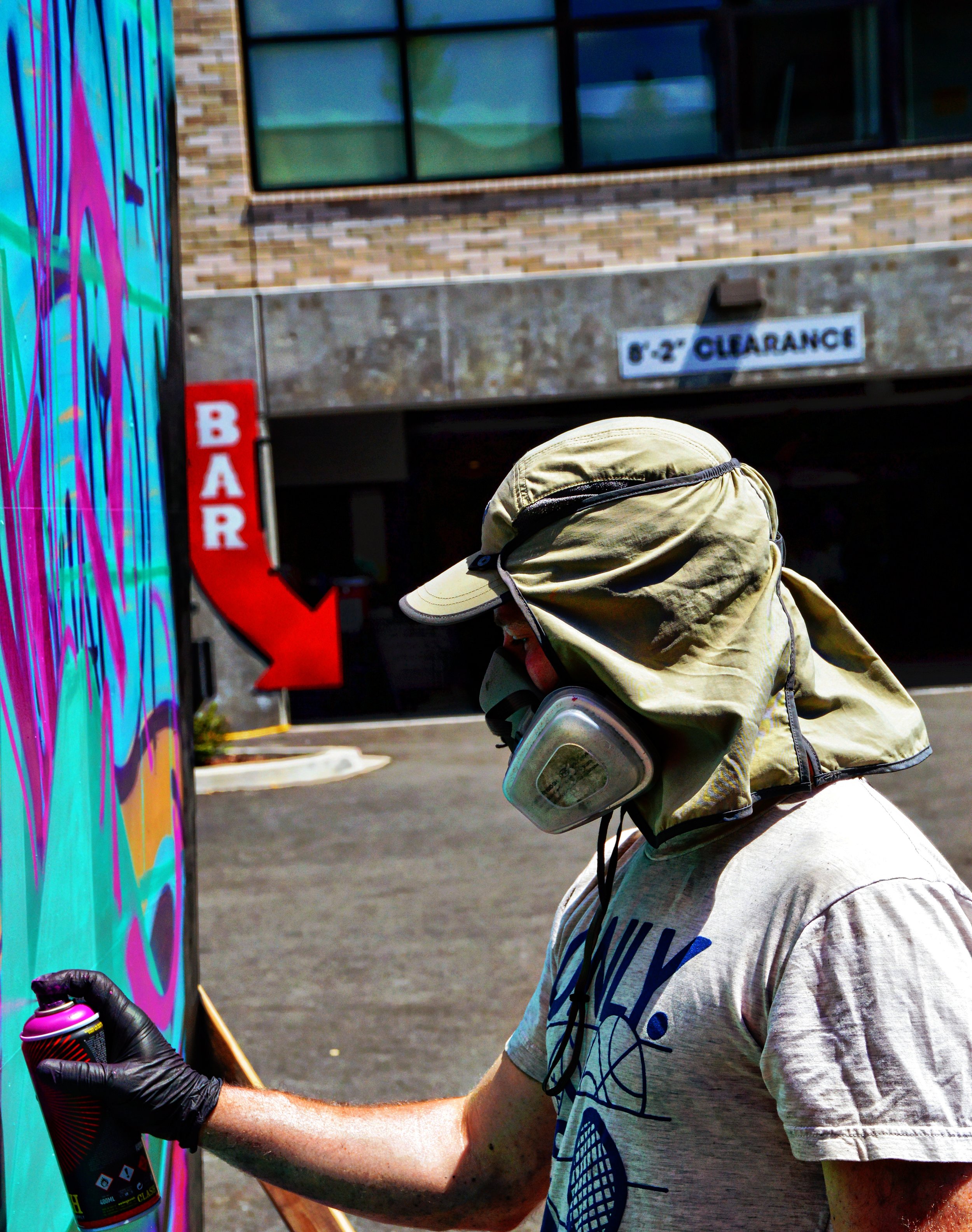
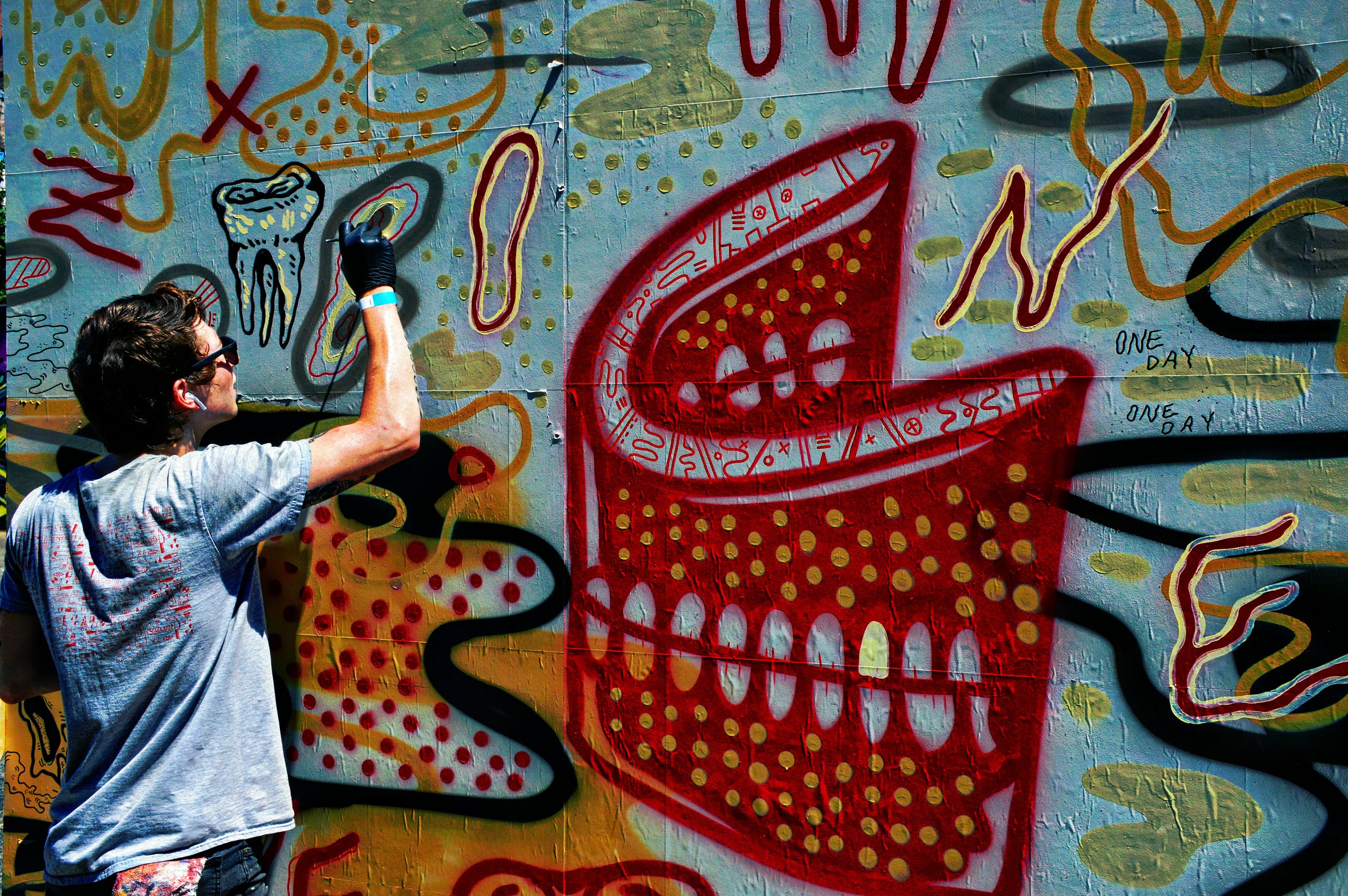
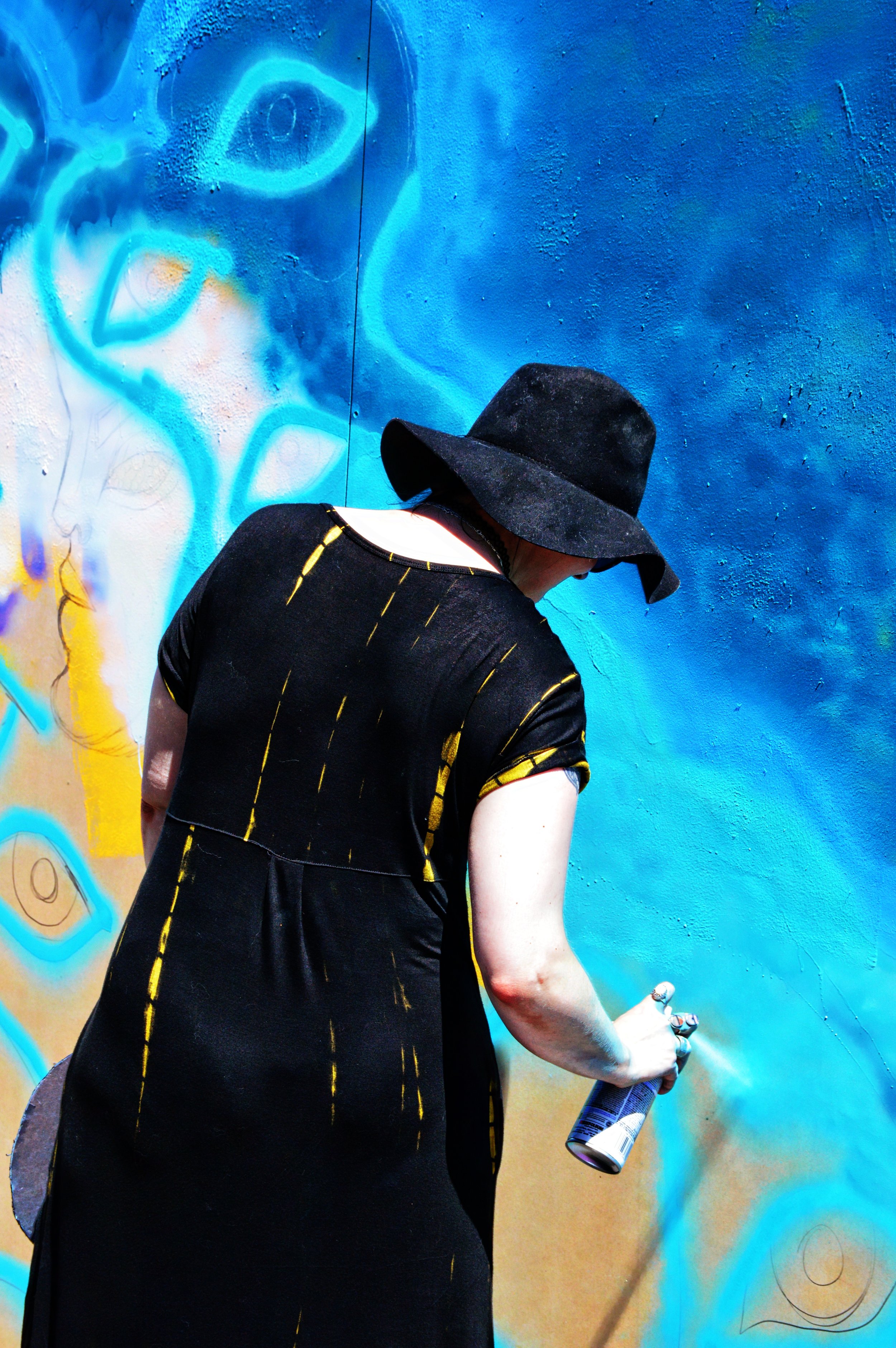
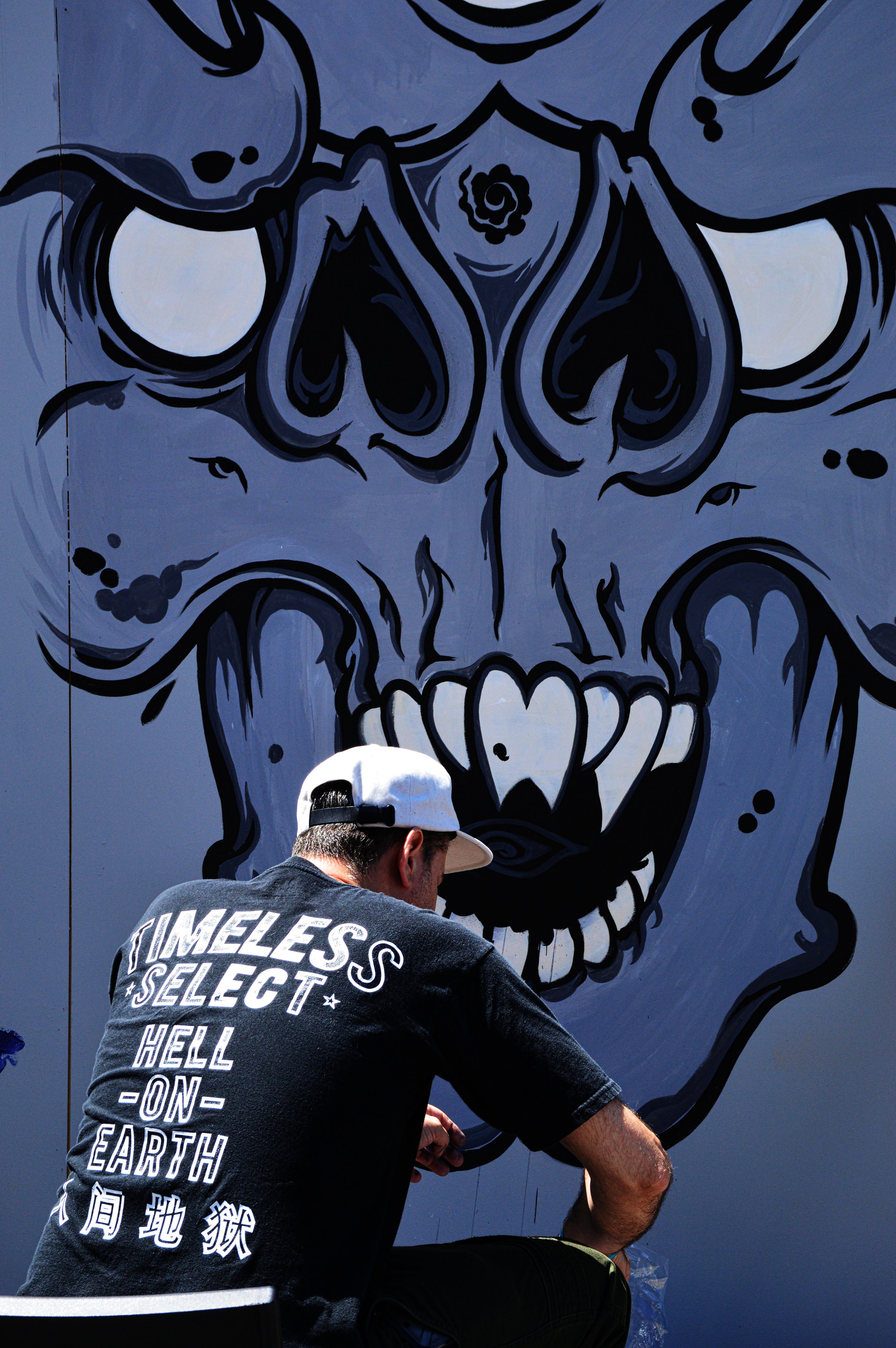
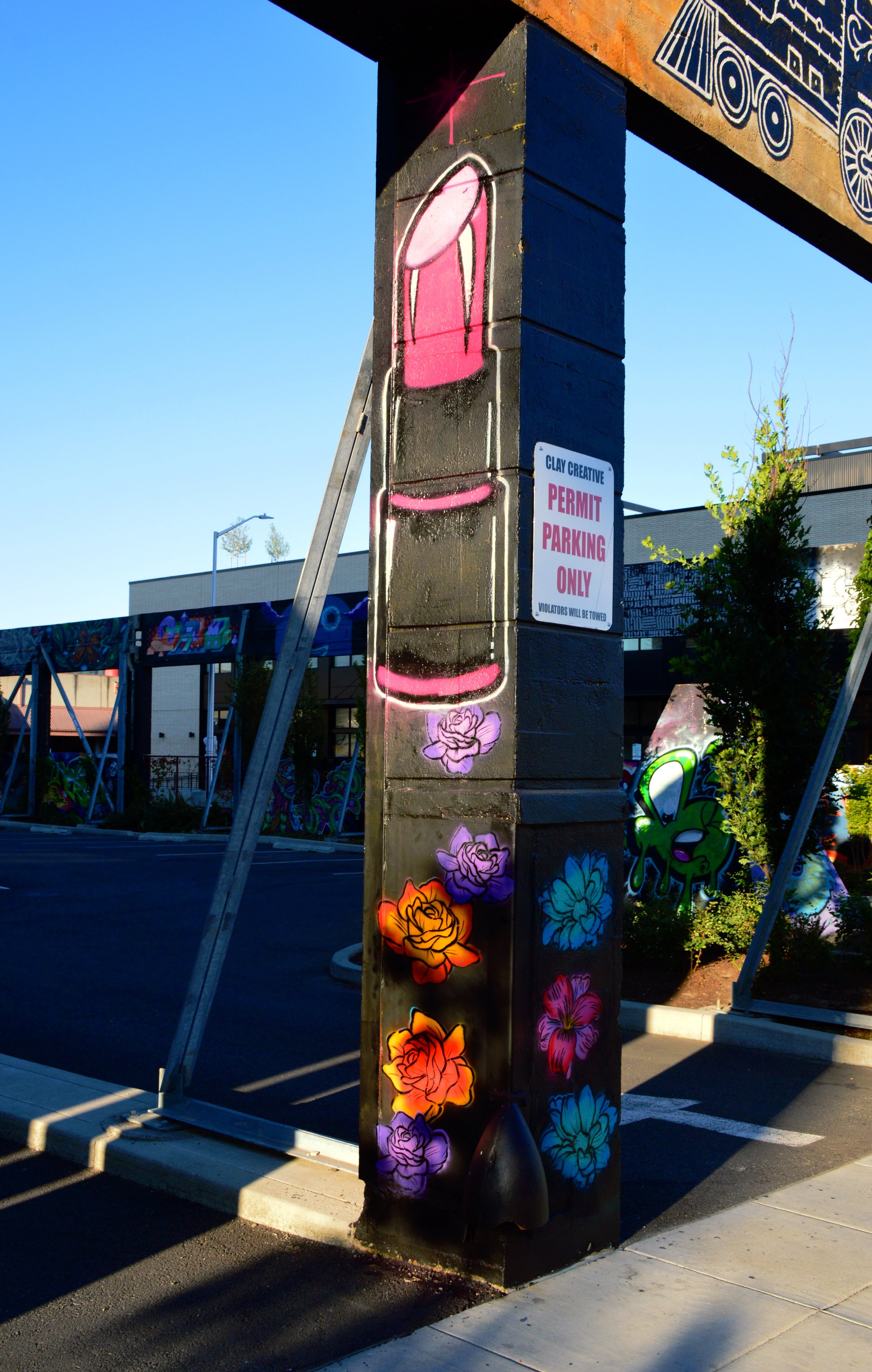
HISTORY OF TAYLOR ELECTRIC
For over a decade, the burnt-out ruins at SE 2nd and Clay served as Portland's most famous space for graffiti– a free open art gallery that attracted artists and onlooks from near and far.
Built in 1936 by the Loggers & Lumberman’s Investment Company, the warehouse at 240 SE Clay (previously 352 E Clay St) served as a home to many different businesses through its lifetime at its picturesque location at the east-end of the Central Eastside Industrial District. In the 1990s, the Rexel Taylor Electrical Supply Company purchased the building and used it as a storefront and warehouse for electrical supplies.
On the night of May 17, 2006, a stack of pallets outside the building caught fire. Fueled by the electrical supplies inside, a massive 4-alarm fire broke out. Over 125 fire-fighters from Portland and nearby cities worked around the clock trying to extinguish the blaze and protect nearby buildings. Burning for over 24 hours, the fire sent a river of debris into the nearby Willamette River.
Taylor Electric Fire on May 17th, 2006. Images courtesy of Greg Muhr (@911firephotg).
Taylor Electrical Supply had plans to rebuild and sell the property, but that fell through, so the charred skeleton of the warehouse sat abandoned for over a decade. The ruins blossomed into a unique and iconic local landmark - a sanctuary for artists, rebels, and outcasts. When people visited Portland and wanted to see graffiti, Taylor Electric was an obvious and easily accessible destination. Cultural activities from dances, circuses, and bicycle chariot wars used Taylor Electric as a gritty stage and backdrop.
In many booming west coast cities, space for unanticipated interactions and unauthorized art are rapidly diminishing. However, these derelict spaces serve important functions for many creatives. Artists are often some of the first to find, occupy, and re-use dilapidated spaces. These cracks of the urban fabric fall outside the watchful eye of neighbors and police.
There is an inherent uncertainty and unpredictability of abandoned spaces where graffiti often gravitates. These spaces often provide the raw material conditions that incubated new ways of expression and imaginative thinking. Graffiti’s ephemeral and nomadic nature contributes to its resiliency and allure. For these reasons, the aesthetics of Taylor Electric were addictive for many, including artists, tourists, academics, journalists, photographers, and videographers. Geographer Bradley Garrett wrote: “These spaces are appreciated for their aesthetic qualities, for their possibilities for temporarily escaping the rush of the surrounding urban environment and their ability to hint at what the future might look like, when all people have disappeared, a visceral reminder of our own mortality.”
Taylor Electric Inspired Artwork by Brin Levinson.
Taylor Electric Inspired Artwork by Jessica Hess.
Rumors of demolition and redevelopment plans of Taylor Electric had been circulating for years. With Portland’s booming economy and population this change was inevitable. As power and urban space collide, developers inevitably would redevelop this centrally located property. A family-owned local development company, Killian Pacific eventually purchased the property intending to develop it into a new office campus called the Electric Blocks. Thankfully, Killian Pacific appreciated the cultural history and raw beauty of the space and decided to preserve and reinforce part of the old south-facing retaining wall, incorporating it into the new building.
In the months leading up to its demise, the art at Taylor Electric flourished as the fences went down and security was reduced. More so than ever people of all types, young and old, high heels and rubber boots, descended on this public place to experience a post-apocalyptic scene bursting with color.
On May 10th, 2015 the demolition of Taylor Electric began. Spreading quickly through social media, artists shared images of the first walls to fall. Some onlookers talked with workers, gathering details of the plans. Local media outlets covered the demolition, focusing on the cultural importance and impact of this space.
While a sense of loss pervaded, there was also a sense of unity and reflection that arose, as many people began to introspectively think about what was being lost, but also what had been built over the years in this space. During this time, the Portland Street Art Alliance (PSAA), a local arts non-profit that advocates for and manages street art projects in the pacific northwest, started pitching the ideas of hosting a gallery art show in commemoration of the old space. Donations immediately started coming in from community members and businesses. PSAA connected with Killian Pacific and the main tenant of the building, Simple Bank. From these new partnerships, a new idea was born – bring graffiti art back to the site, but this time, provide artists time, structure, and funding to really make a huge splash. The collective aim was to honor and continue the history of this unique art sanctuary. To create a new rotating public art gallery displaying fresh works from pacific-northwest and visiting artists.
Since 2017, the Taylor Electric Project has been managed by PSAA with support of Killian Pacific and local businesses. Over 150 regional artists have painted murals at the site, completely covering the underground garage and old remaining walls of the warehouse. Fresh artwork is happening all the time.
On July 21st, 2018, PSAA organized a team of Portland-based artist collectives to co-host a huge block party. Over 2,000 people came to celebrate the completion of the new murals. The block party had live painting by over 20 artists, live bands, a dance battle organized by Find a Way, a pop-up skate park erected by D-Block, kids activities, a food and beer garden, and an art fair in the garage where local artists sold merchandise and did live screen printing.
Portland Street Art Alliance plans to host the block party event again, bringing together artists from around the Pacific Northwest to celebrate and further seed art in the new Central Eastside Mural District and beyond.
READ MORE ABOUT TAYLOR ELECTRIC
INTERIOR MURALS AT THE ELECTRIC BLOCKS
Working in partnership with Killian Pacific and Simple Bank, PSAA has managed several interior office mural at Clay Creative, with plans for more. The aim is to provide local artists access to commission opportunities, and provide workers with an inspiring everyday environment to be in, in the heart of Portland’s Central Eastside Industrial District.

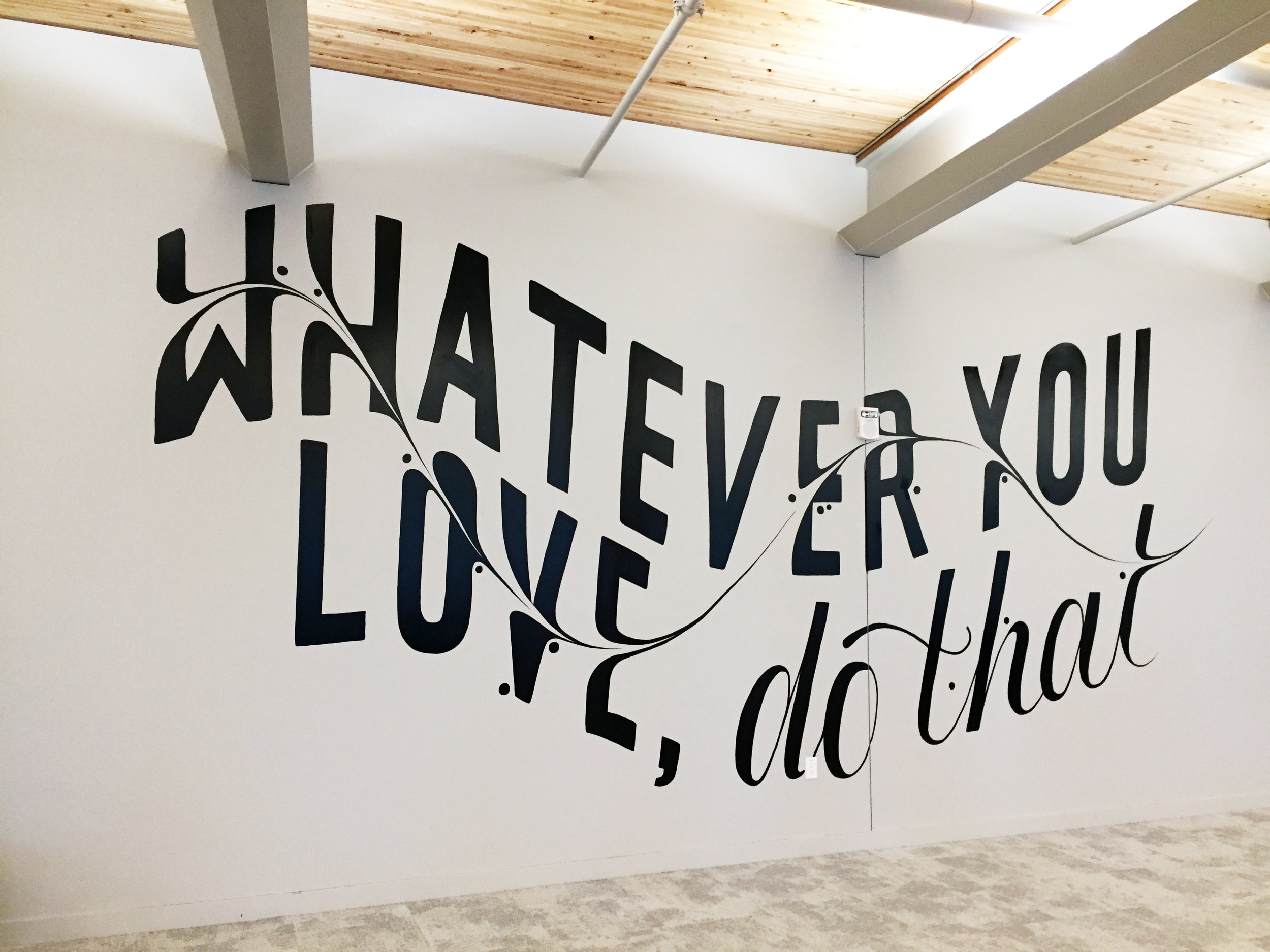



THE NOVA GARAGE
In 2017, PSAA began organizing rotating painting inside the parking garage at Nova. All garage murals are done on a volunteer basis by both PSAA and participating artists. These walls provide much needed space to build portfolios, experiment with new designs, and painting techniques. The garage has become a true community space, an ever-changing art gallery, and space for gathering and activation.
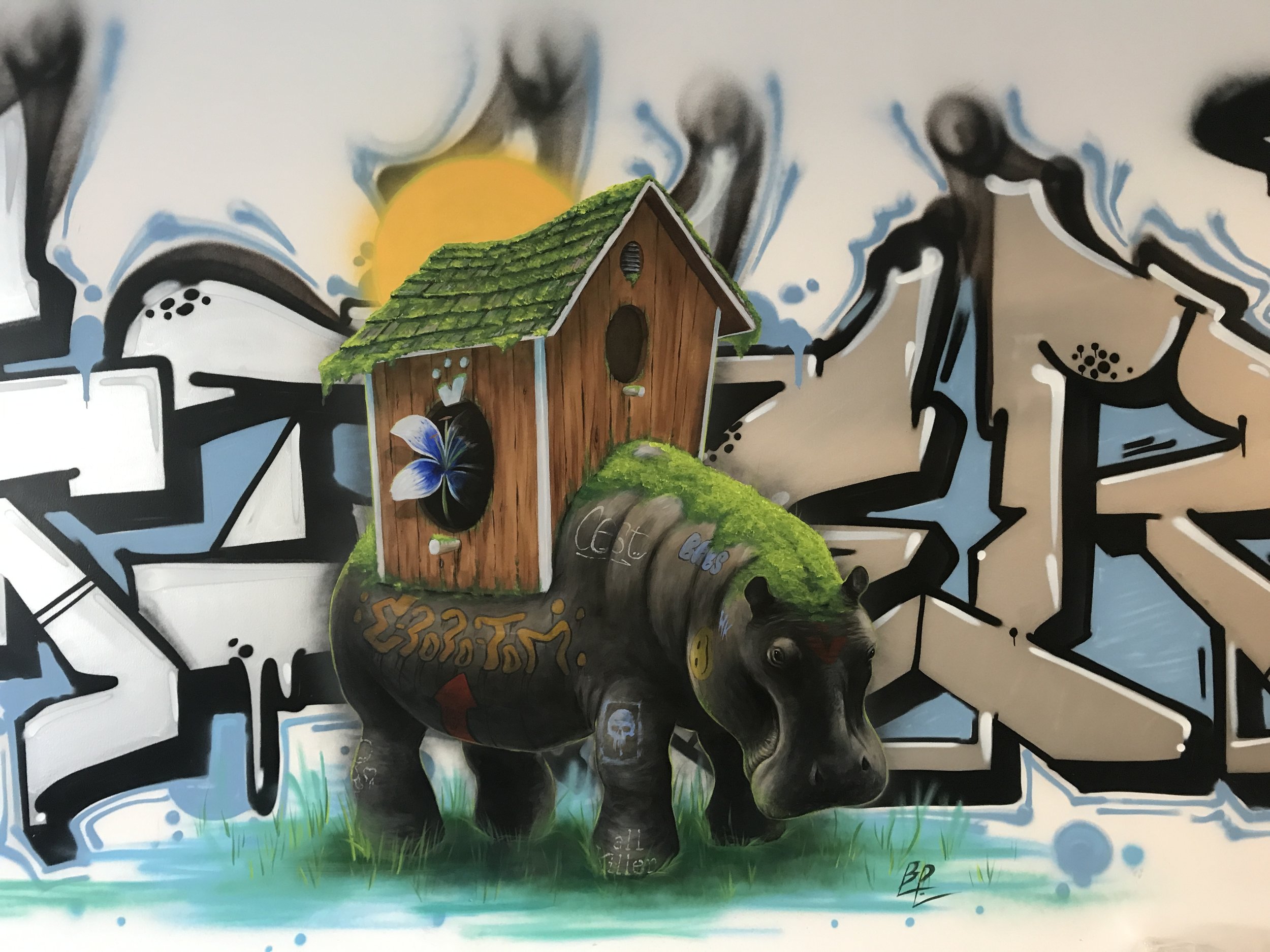
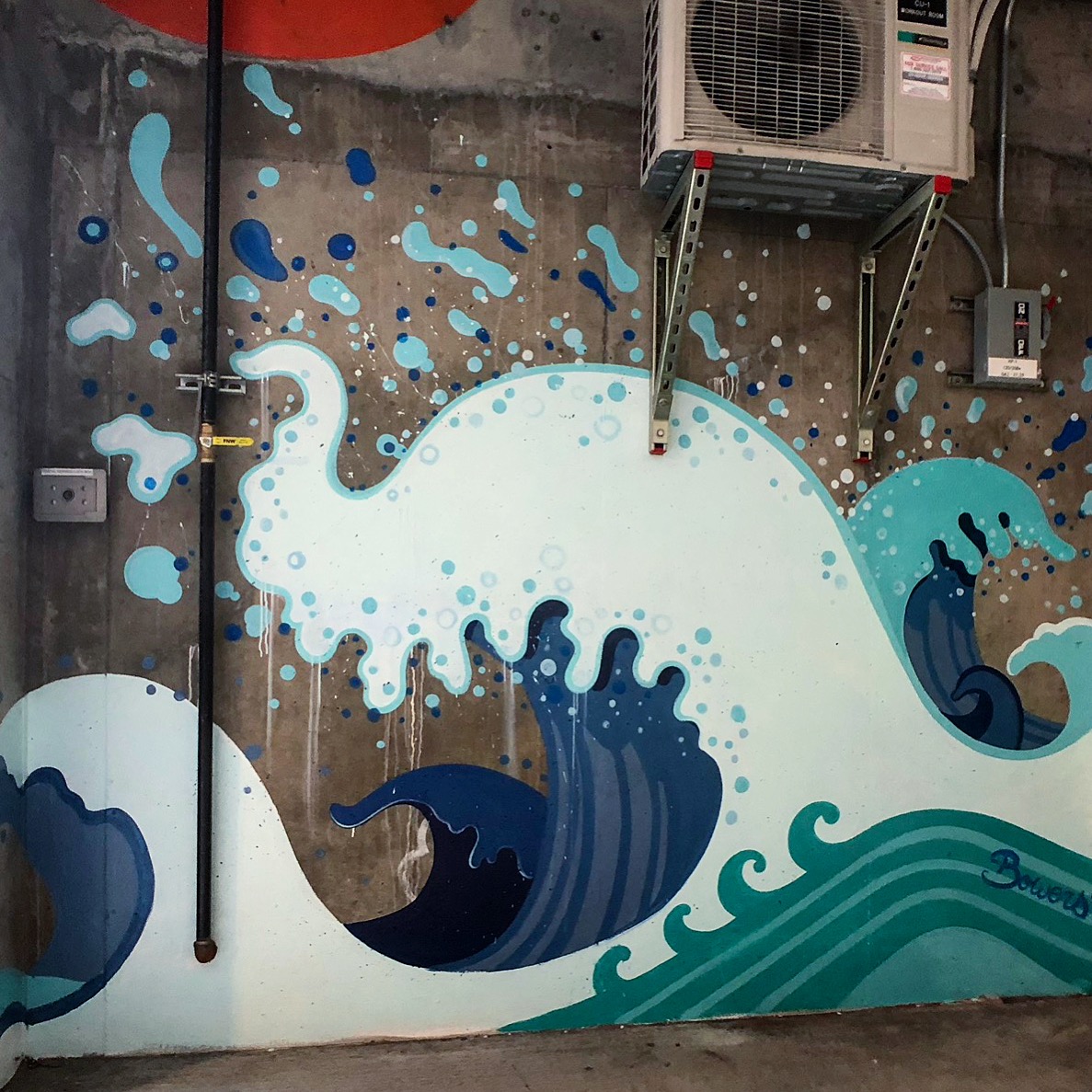
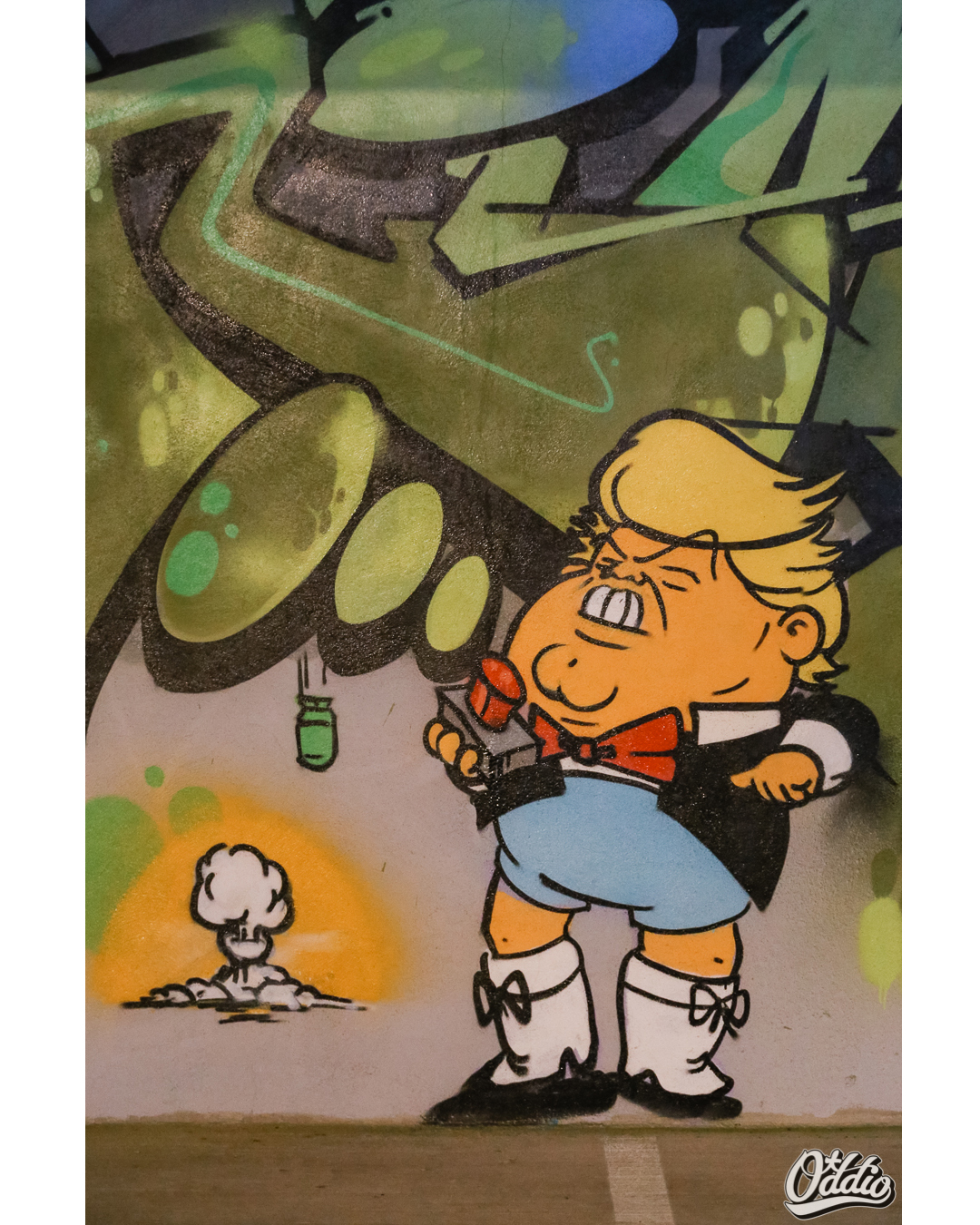
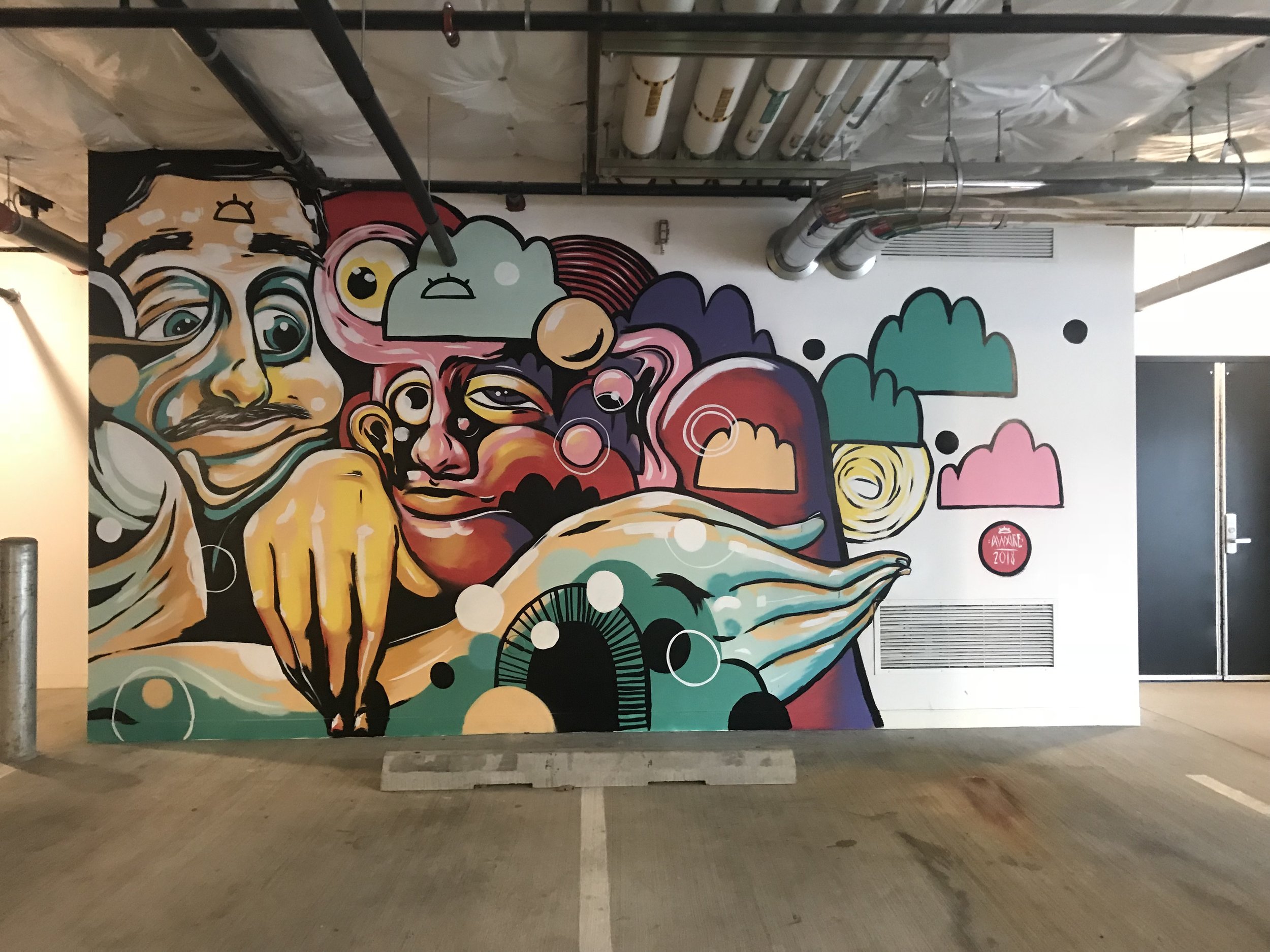
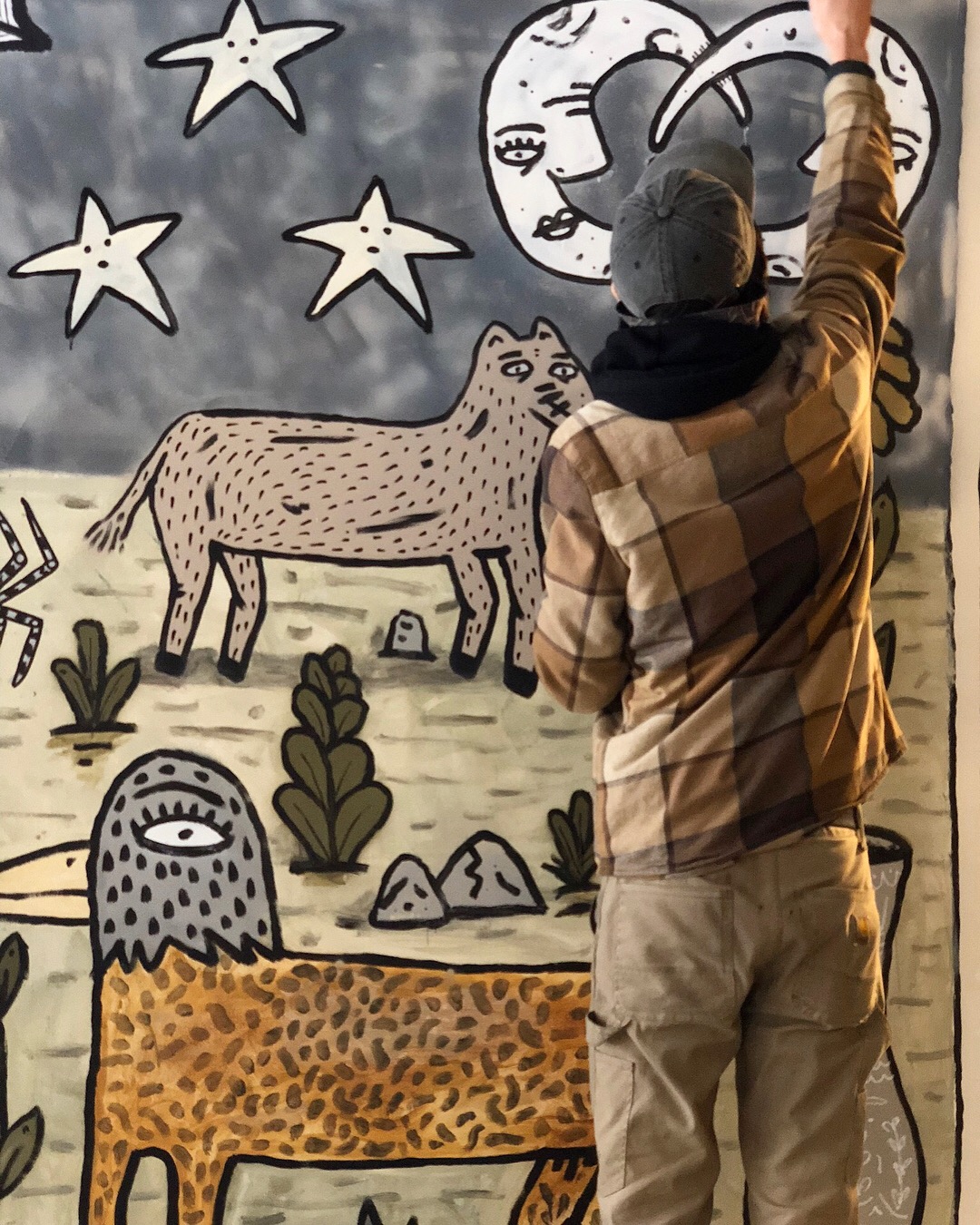
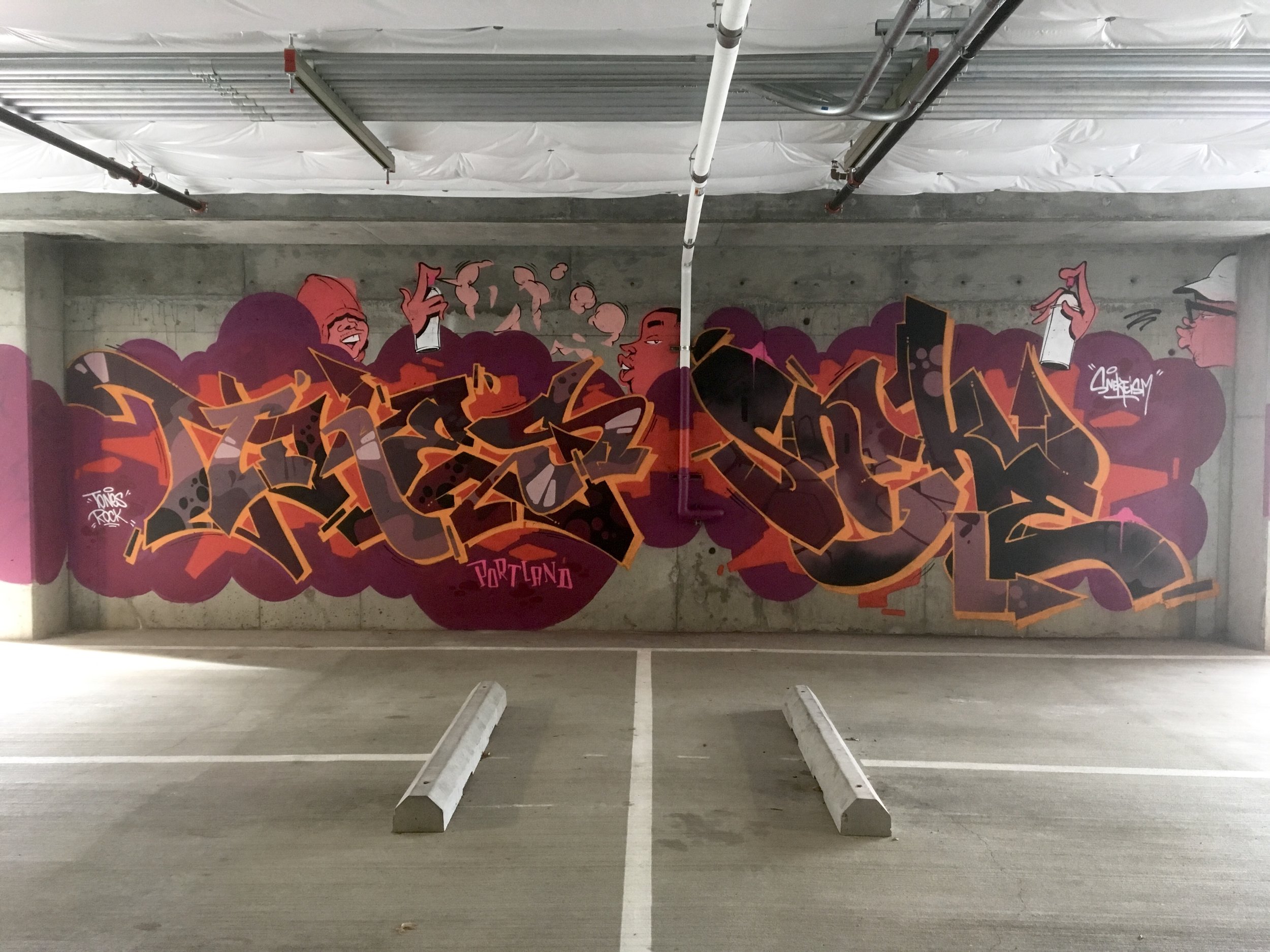
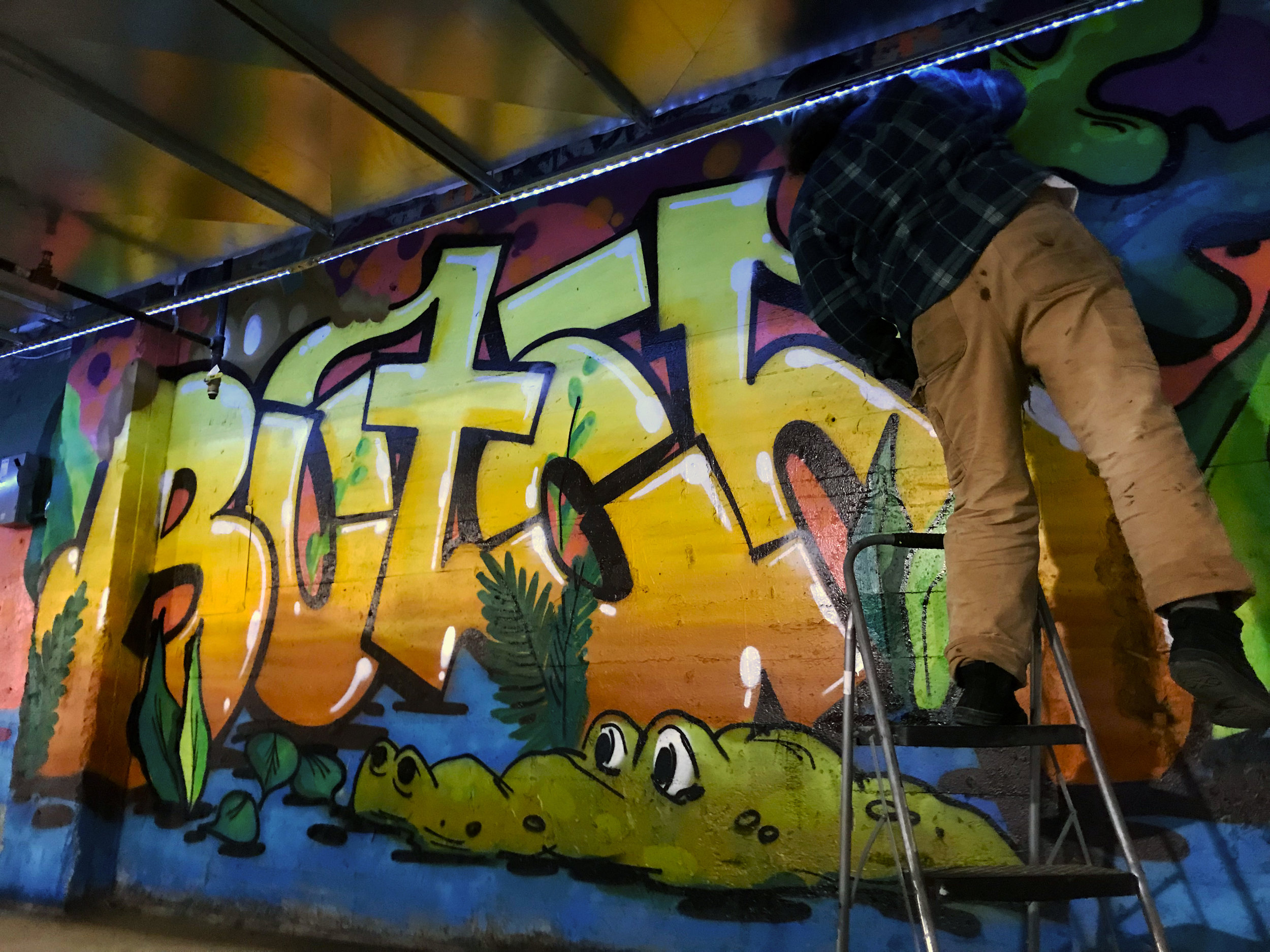
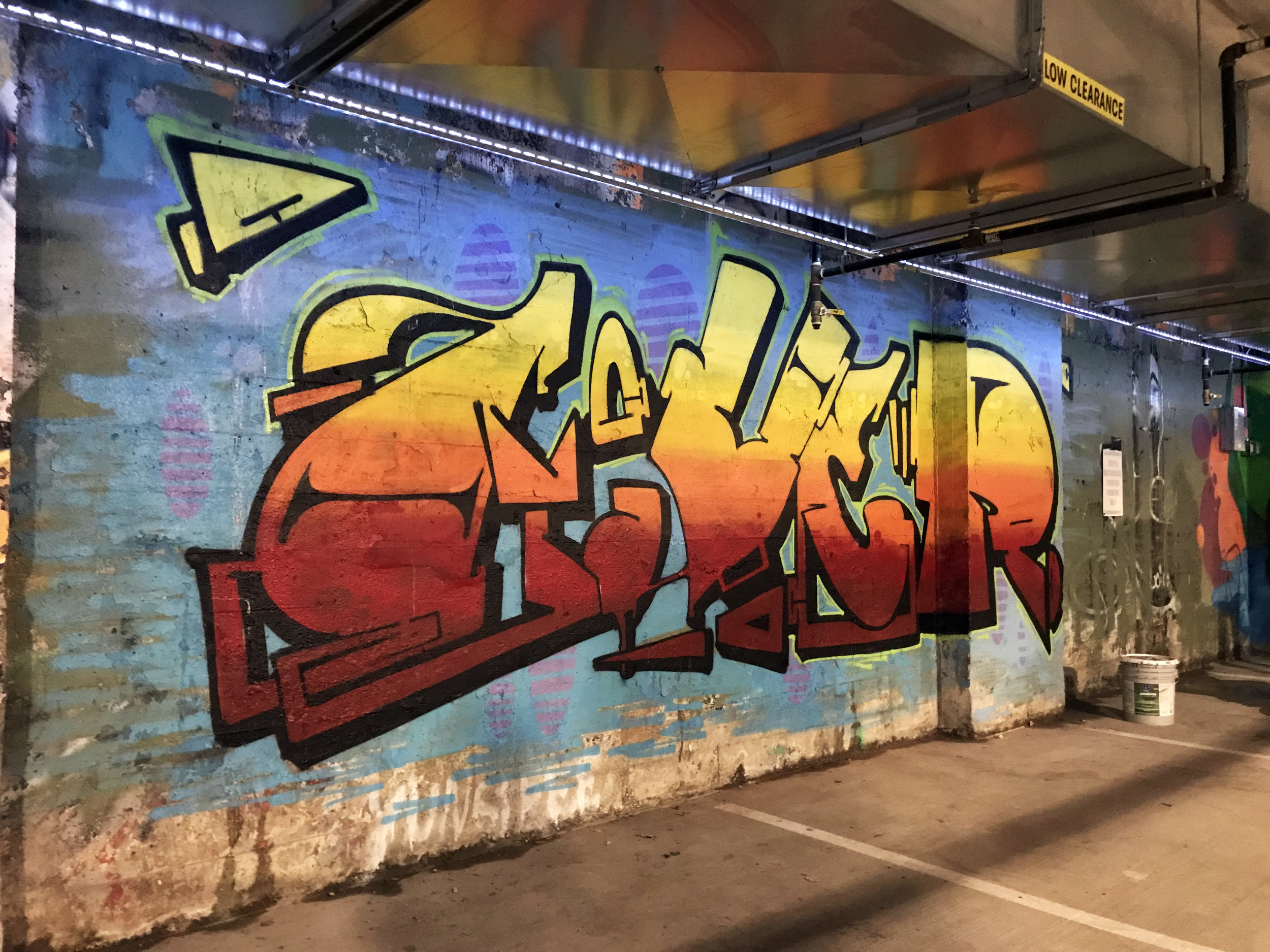

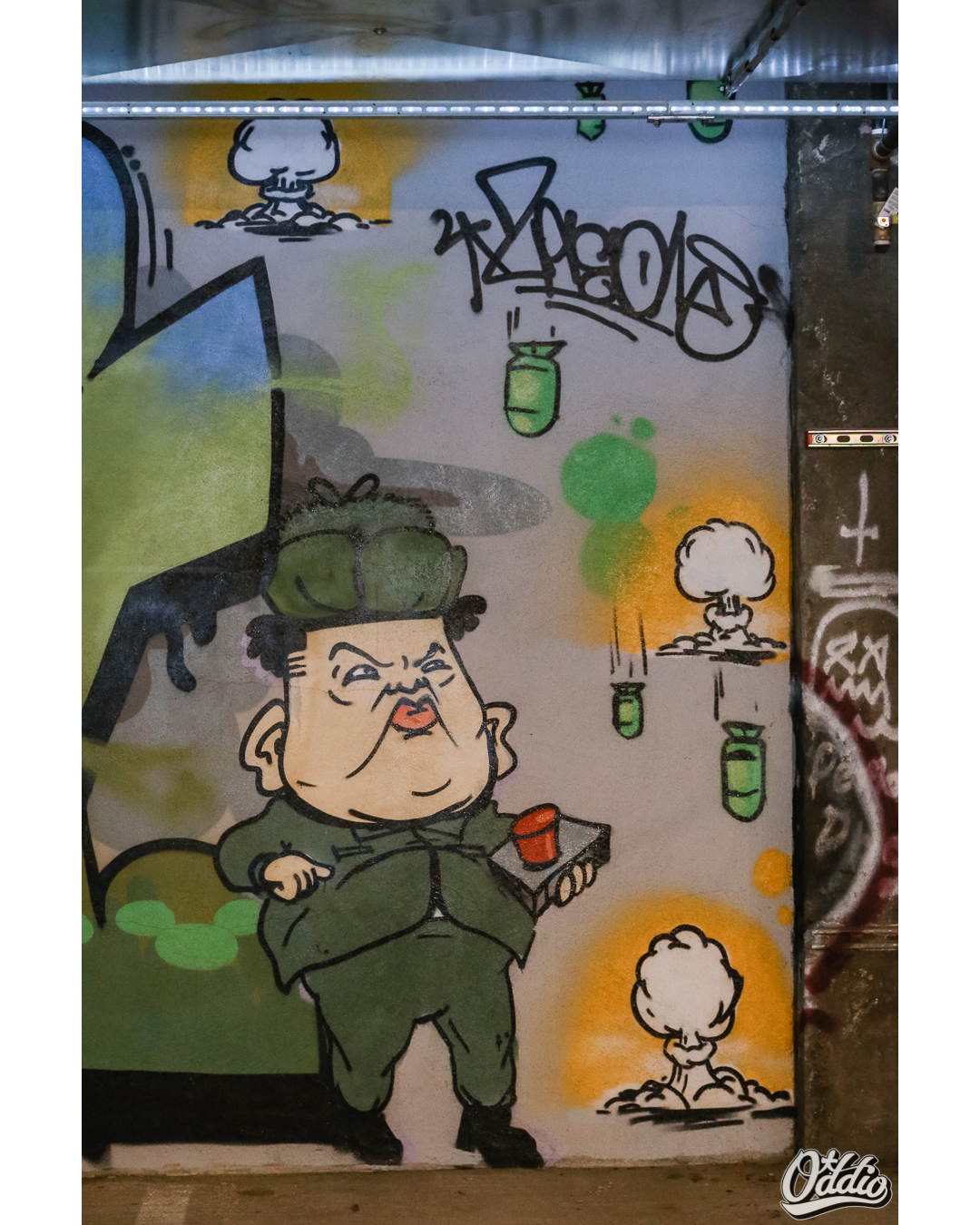
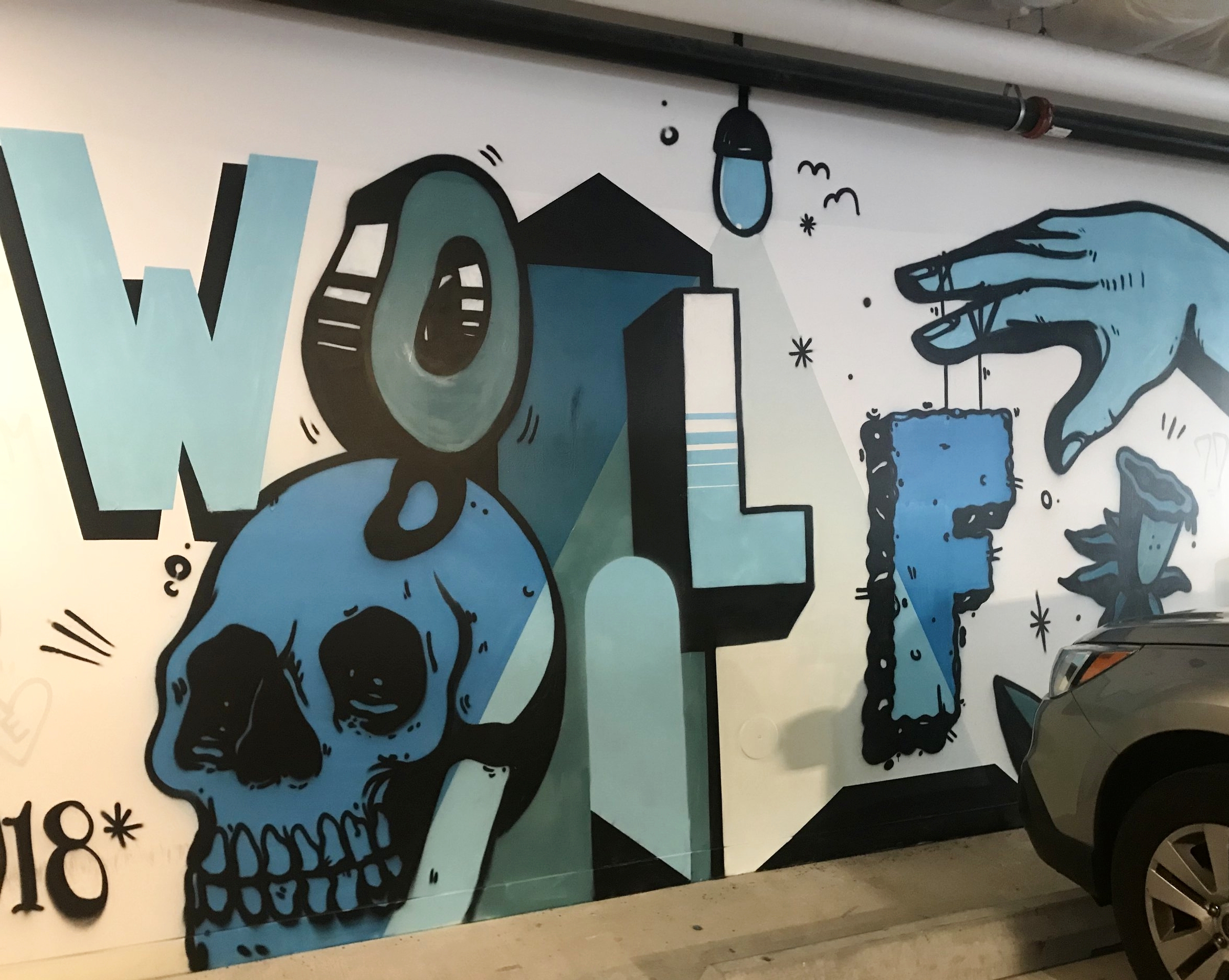
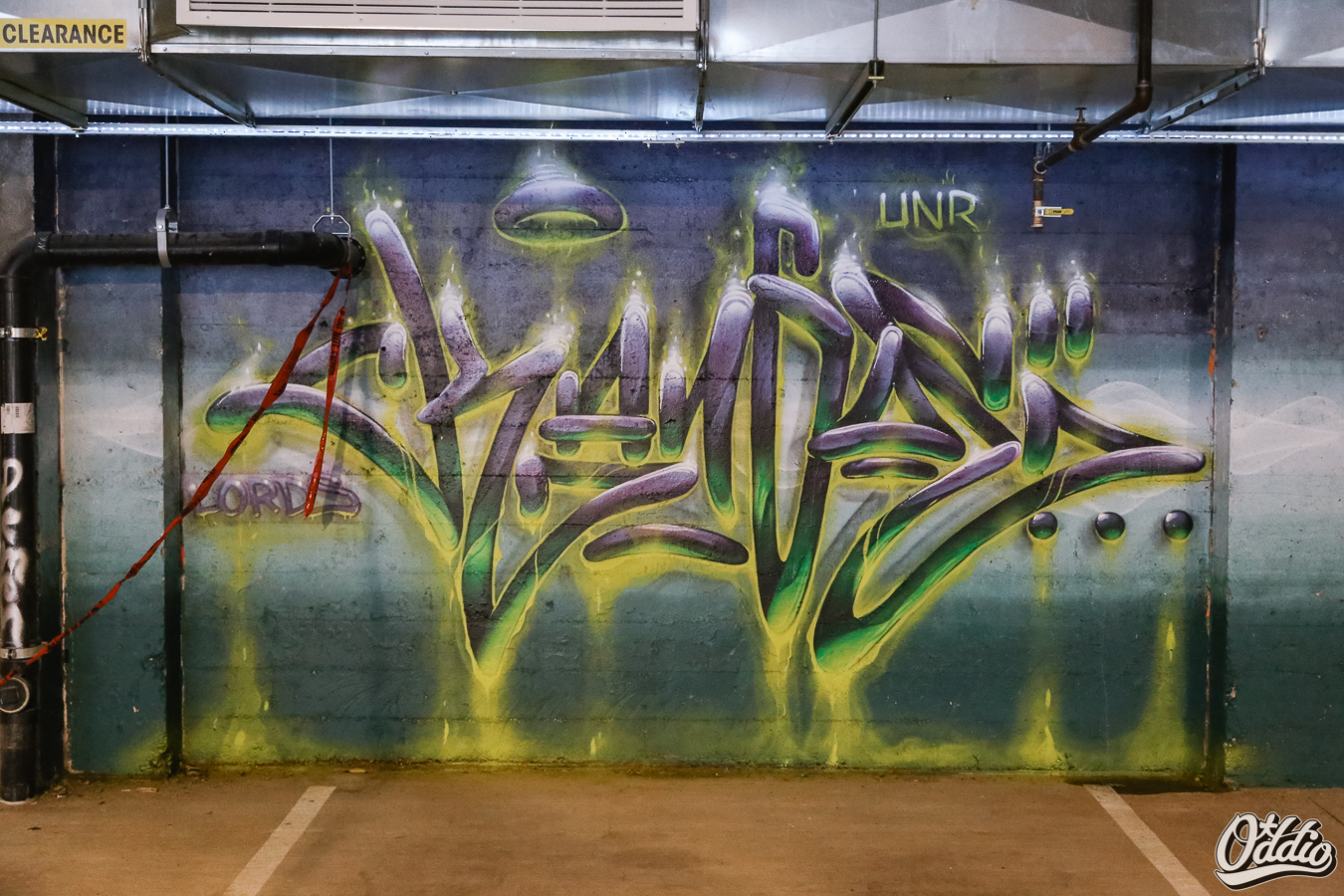
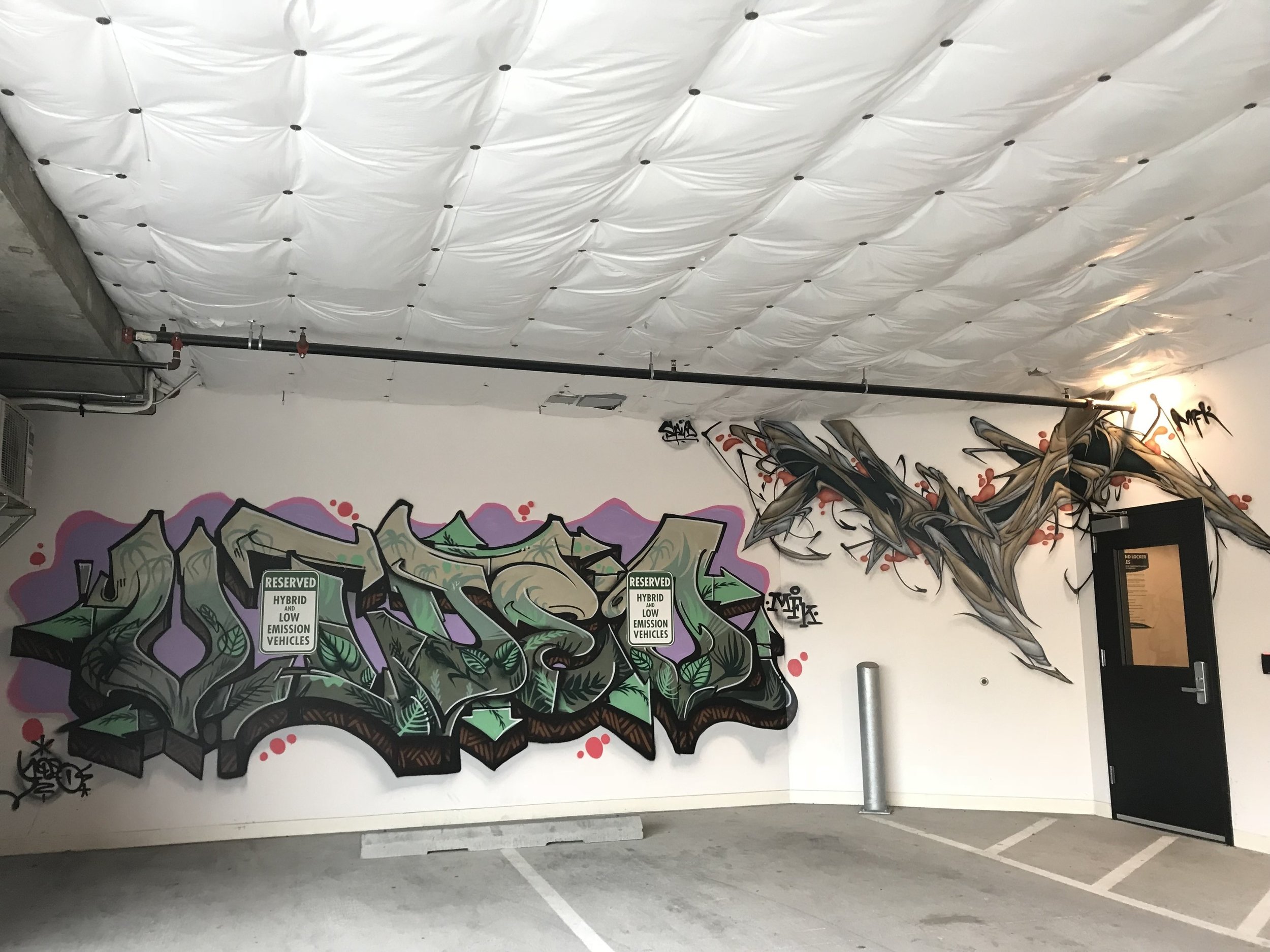
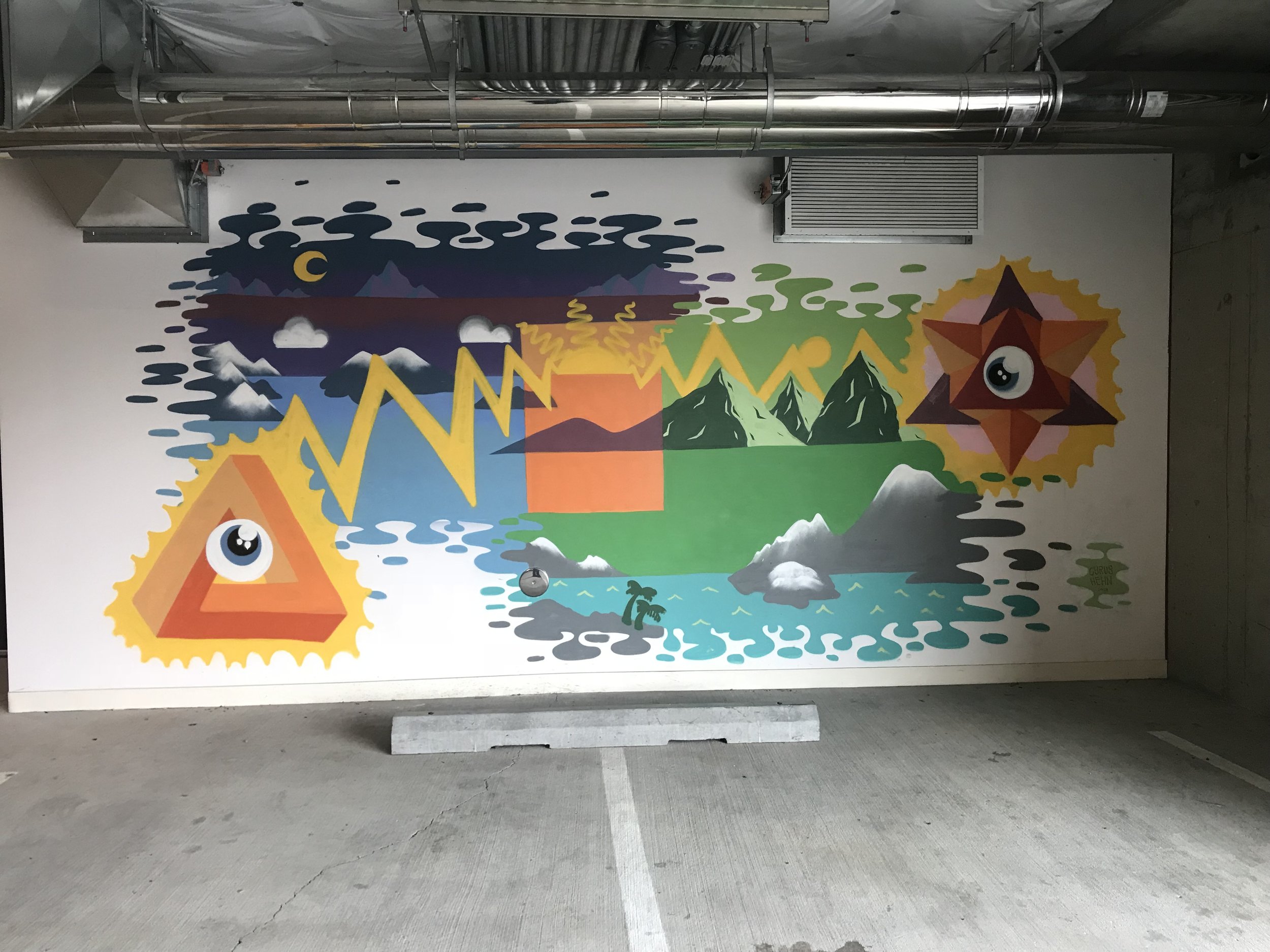
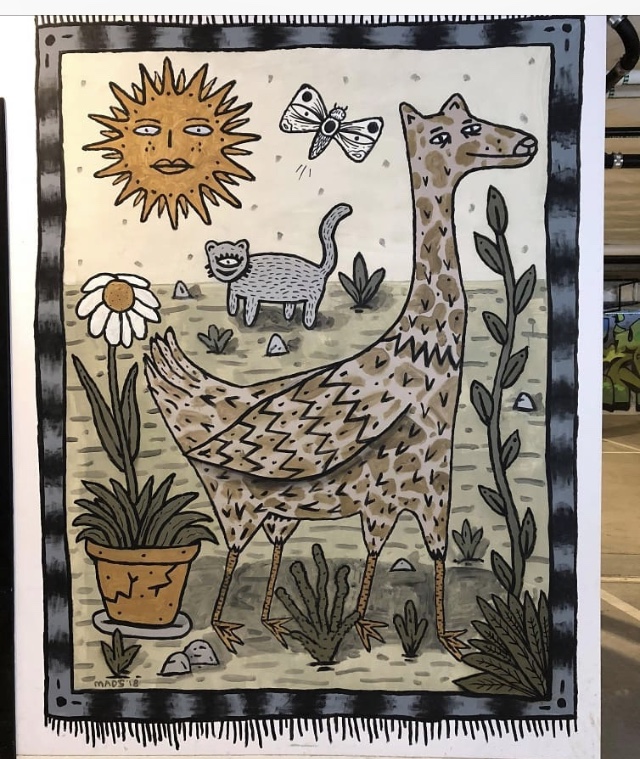
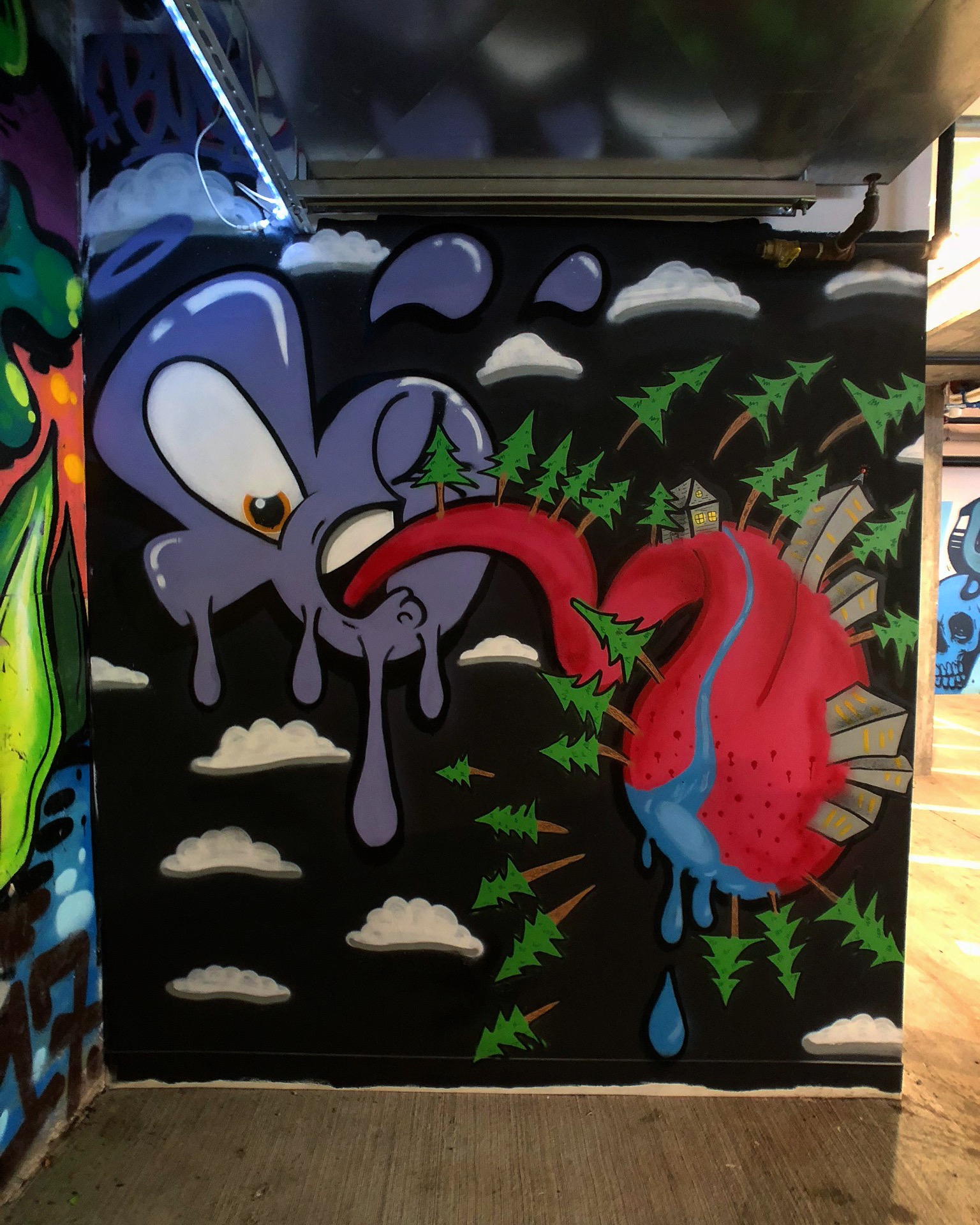
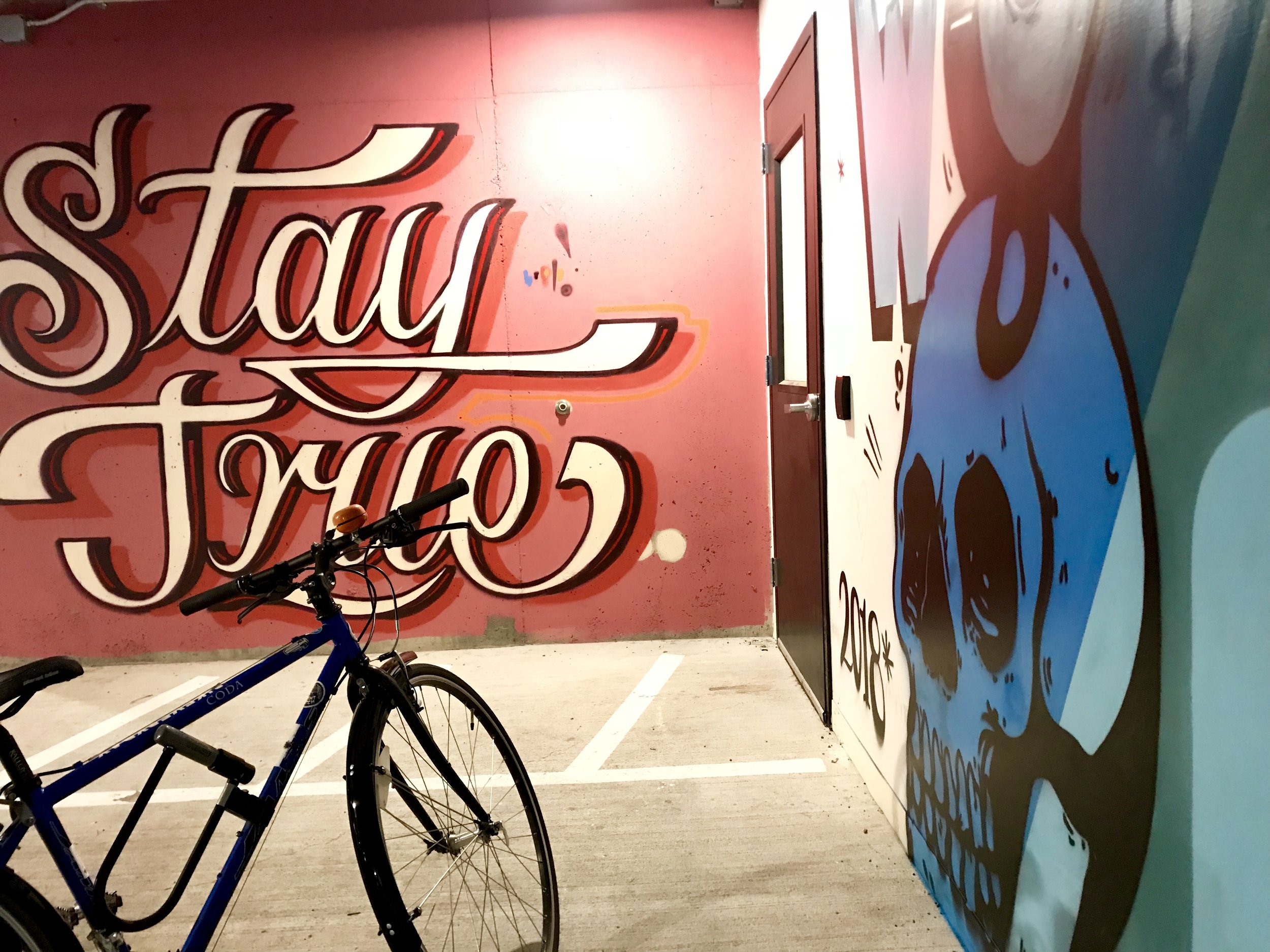
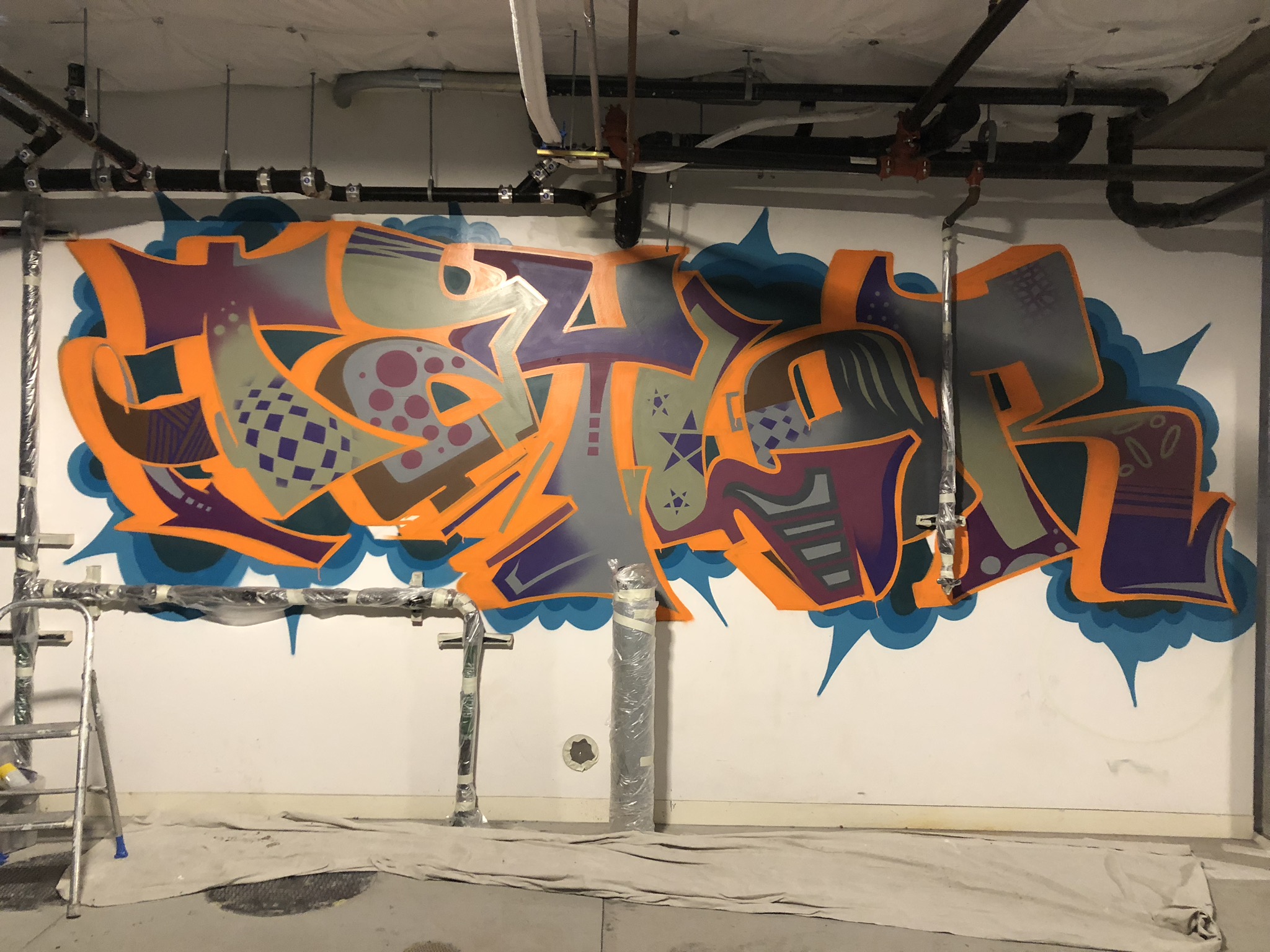
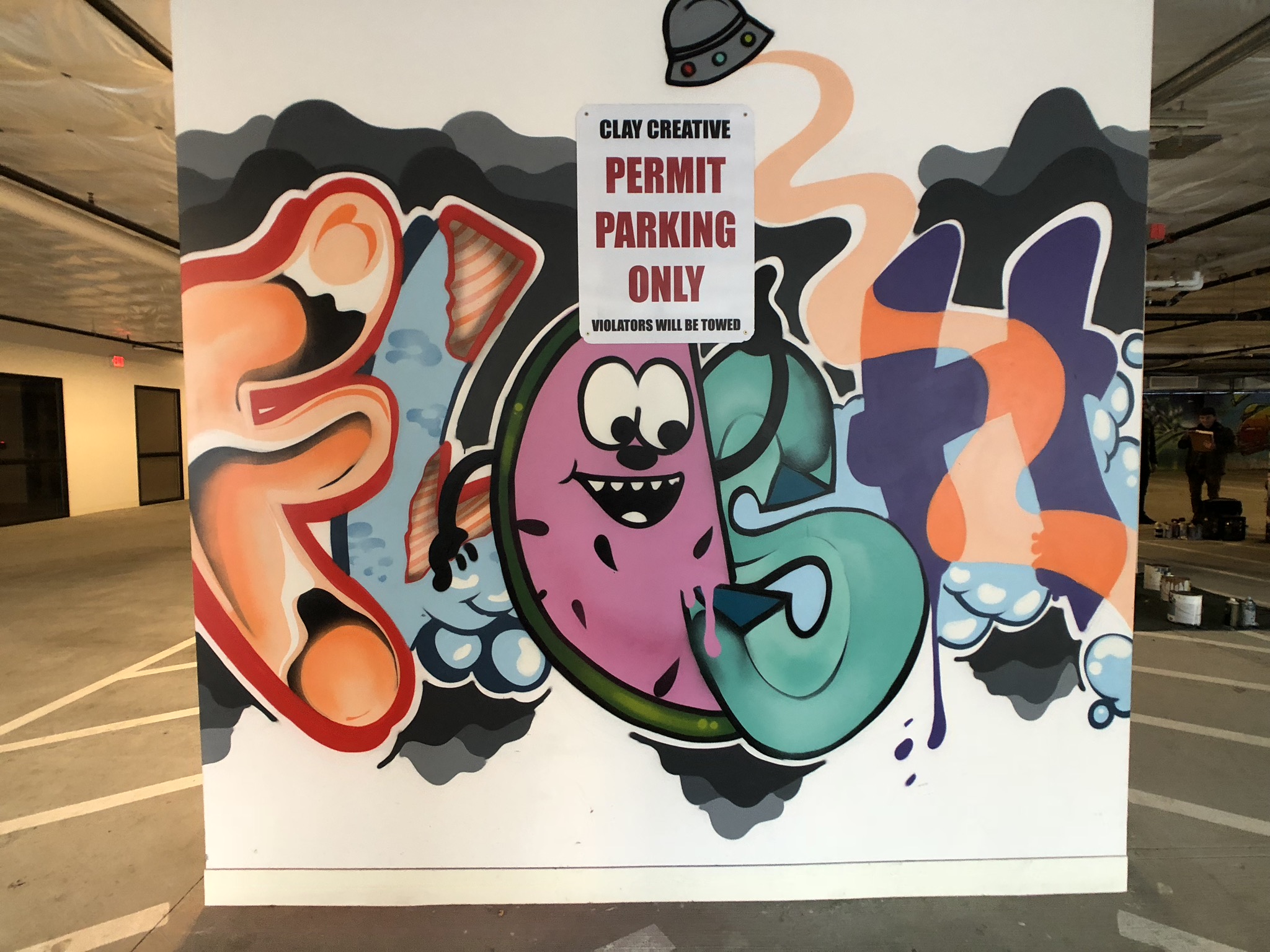
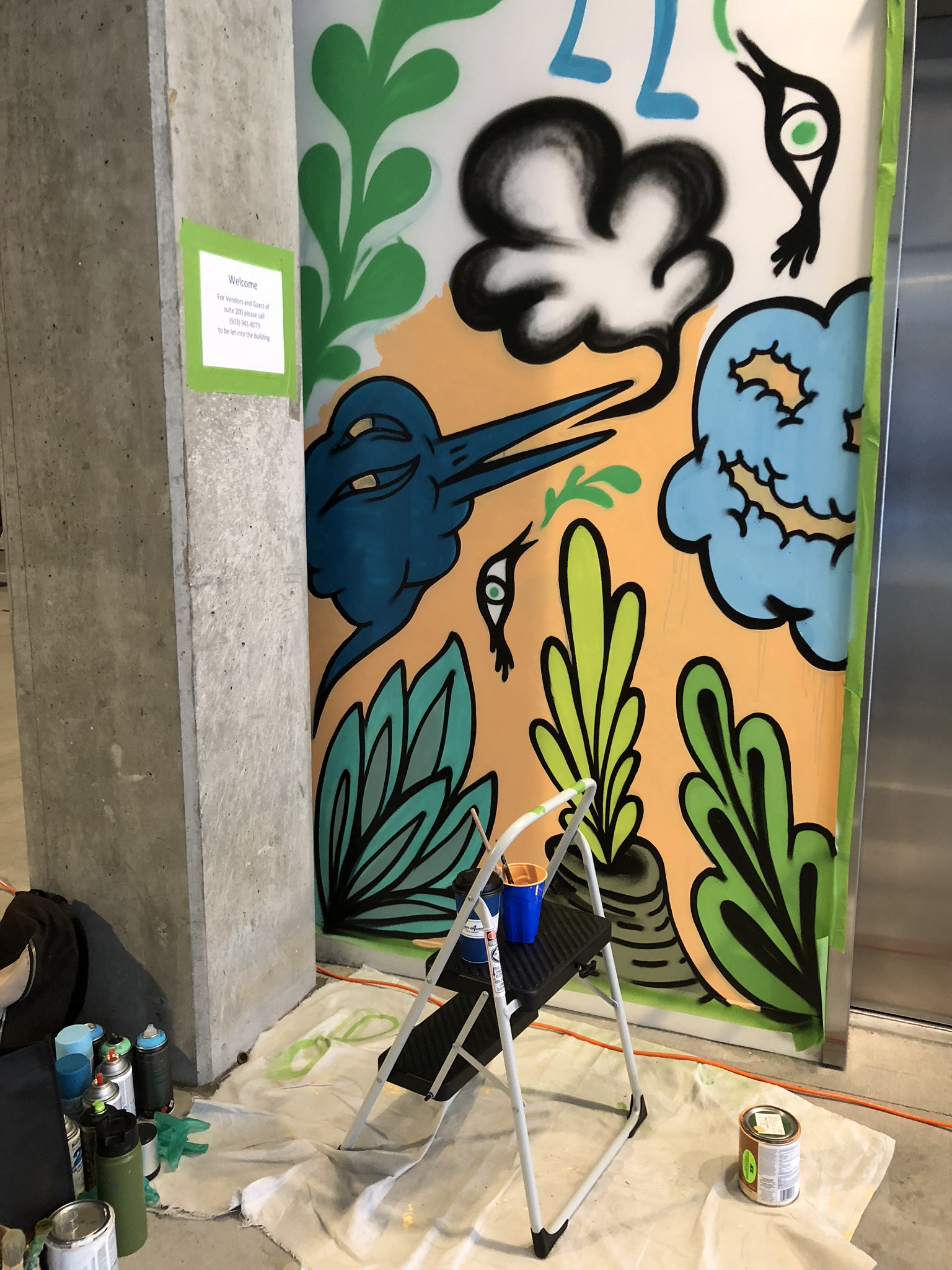
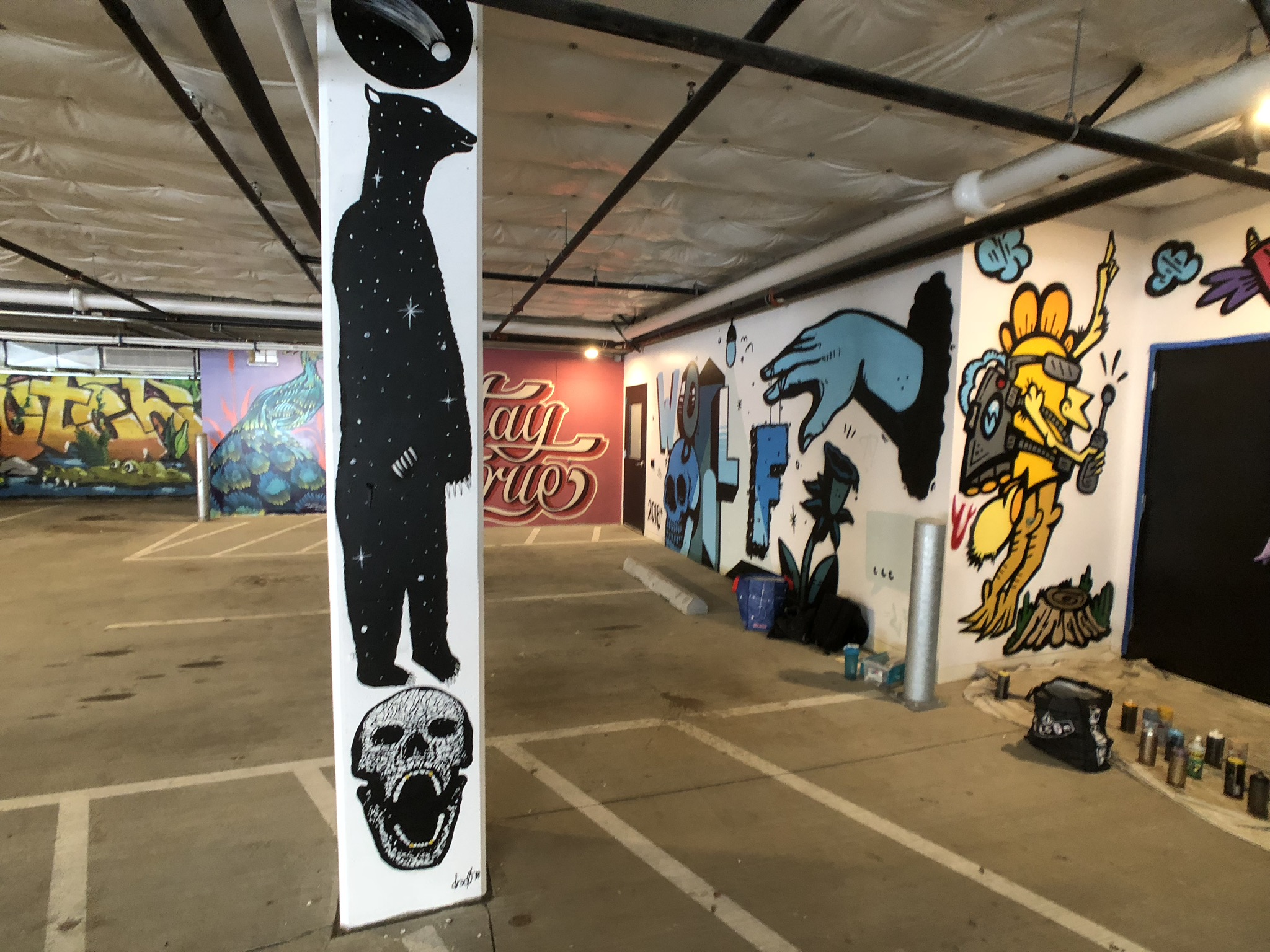

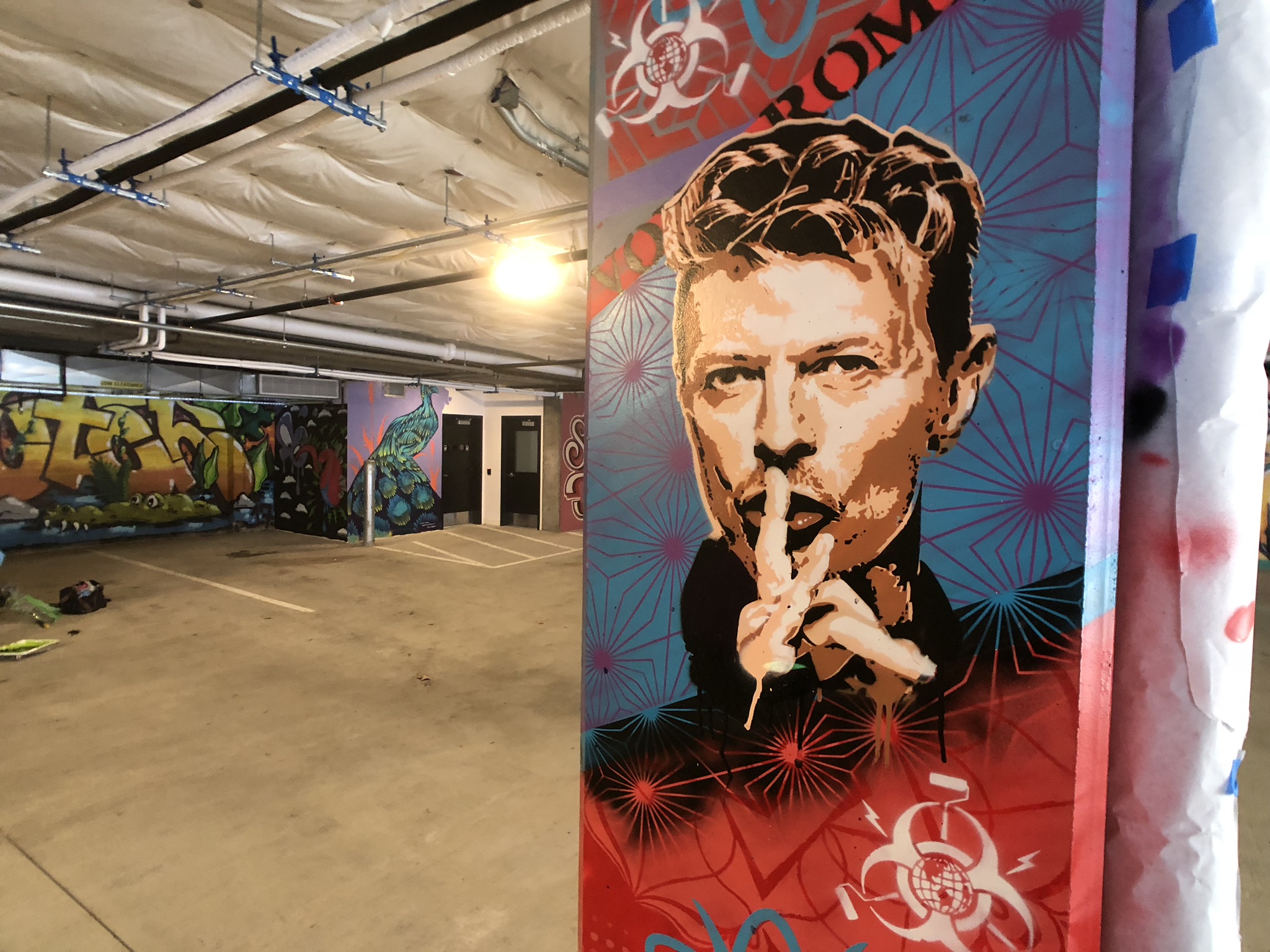
![IMG_E3155[1].JPG](https://images.squarespace-cdn.com/content/v1/54c5d2a7e4b0df35f166e6f8/1521422463076-I80S072851Q1AOE3QO2N/IMG_E3155%5B1%5D.JPG)
![IMG_E3154[1].JPG](https://images.squarespace-cdn.com/content/v1/54c5d2a7e4b0df35f166e6f8/1521422471722-84M1WK0LJYBBLSAJFI2W/IMG_E3154%5B1%5D.JPG)
![IMG_E3153[1].JPG](https://images.squarespace-cdn.com/content/v1/54c5d2a7e4b0df35f166e6f8/1521422479156-GRLX10TIJQ0TYX3DQIXS/IMG_E3153%5B1%5D.JPG)
![IMG_E3152[1].JPG](https://images.squarespace-cdn.com/content/v1/54c5d2a7e4b0df35f166e6f8/1521422495470-OCPRFUPII4WCBQCFGUSK/IMG_E3152%5B1%5D.JPG)
![IMG_E3151[1].JPG](https://images.squarespace-cdn.com/content/v1/54c5d2a7e4b0df35f166e6f8/1521422501581-QWOP17N6HI3BU3023EN9/IMG_E3151%5B1%5D.JPG)
![IMG_3158[1].JPG](https://images.squarespace-cdn.com/content/v1/54c5d2a7e4b0df35f166e6f8/1521422507347-IN63252D6V6CCDKKSBJF/IMG_3158%5B1%5D.JPG)
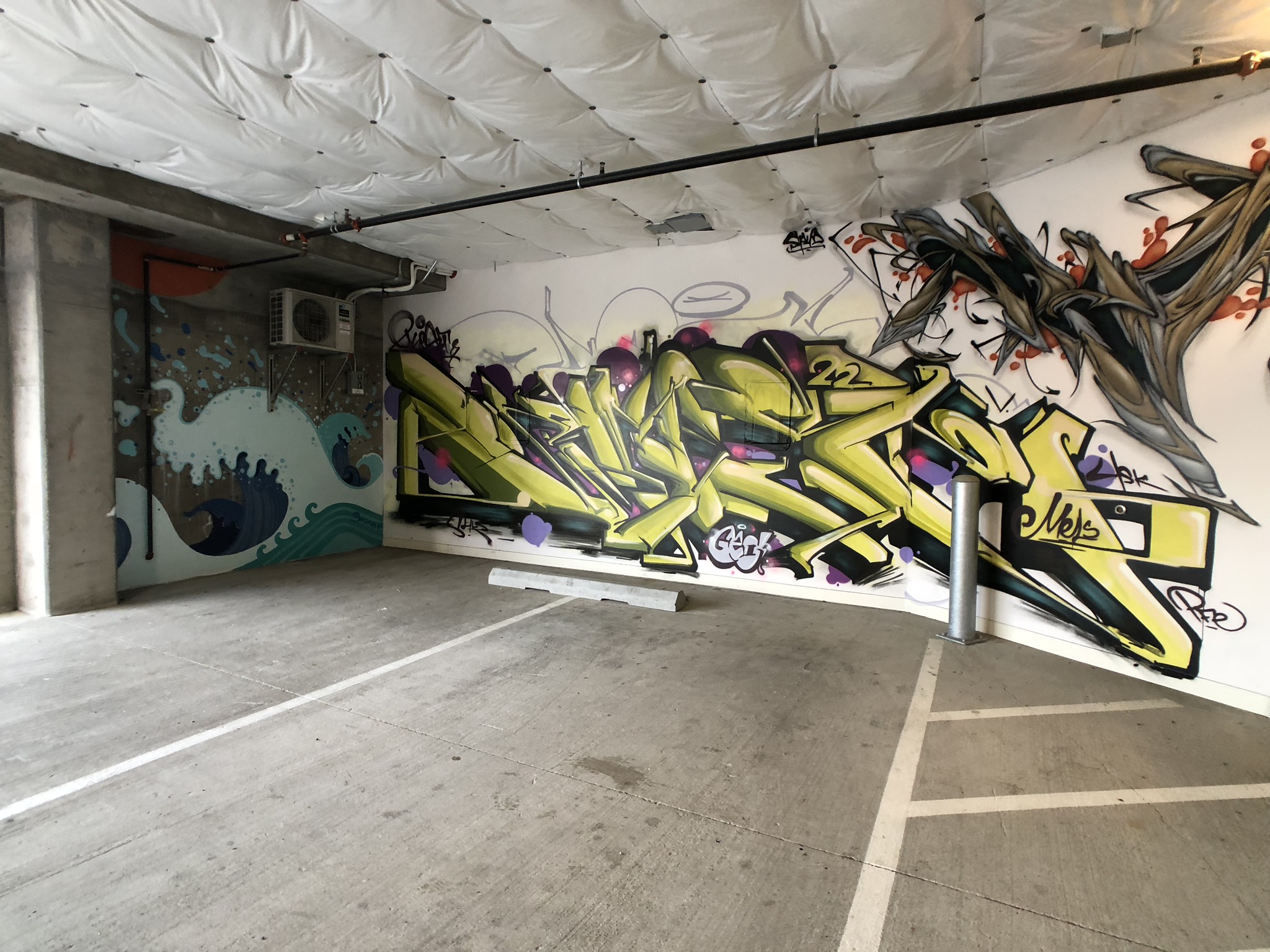
![IMG_3157[1].JPG](https://images.squarespace-cdn.com/content/v1/54c5d2a7e4b0df35f166e6f8/1521422518114-S8P1TQUSUC7SH9OL2KCF/IMG_3157%5B1%5D.JPG)
![IMG_3156[1].JPG](https://images.squarespace-cdn.com/content/v1/54c5d2a7e4b0df35f166e6f8/1521422530046-19WA4BYRXH3POQ689OMT/IMG_3156%5B1%5D.JPG)
![IMG_3036[1].JPG](https://images.squarespace-cdn.com/content/v1/54c5d2a7e4b0df35f166e6f8/1521422566104-OG2X5SNC0513K7U1NSU3/IMG_3036%5B1%5D.JPG)
![IMG_3097[1].JPG](https://images.squarespace-cdn.com/content/v1/54c5d2a7e4b0df35f166e6f8/1521422596251-WVP89R34PV8OFKI98HHA/IMG_3097%5B1%5D.JPG)
![IMG_E3167[1].JPG](https://images.squarespace-cdn.com/content/v1/54c5d2a7e4b0df35f166e6f8/1521422759806-N06U0I4AVJ6HQ3F7EGD1/IMG_E3167%5B1%5D.JPG)
![IMG_E3166[1].JPG](https://images.squarespace-cdn.com/content/v1/54c5d2a7e4b0df35f166e6f8/1521422768969-T009CJPK22ICXTREH5IM/IMG_E3166%5B1%5D.JPG)
![IMG_3163[1].JPG](https://images.squarespace-cdn.com/content/v1/54c5d2a7e4b0df35f166e6f8/1521422791241-R5KJM4Z6POKT4X6M4RG3/IMG_3163%5B1%5D.JPG)
![IMG_3161[1].JPG](https://images.squarespace-cdn.com/content/v1/54c5d2a7e4b0df35f166e6f8/1521422802945-BUQO11HLI4CBNCAA63KA/IMG_3161%5B1%5D.JPG)
![IMG_3160[1].JPG](https://images.squarespace-cdn.com/content/v1/54c5d2a7e4b0df35f166e6f8/1521422815687-KYQC292C03KVM4AT29K2/IMG_3160%5B1%5D.JPG)
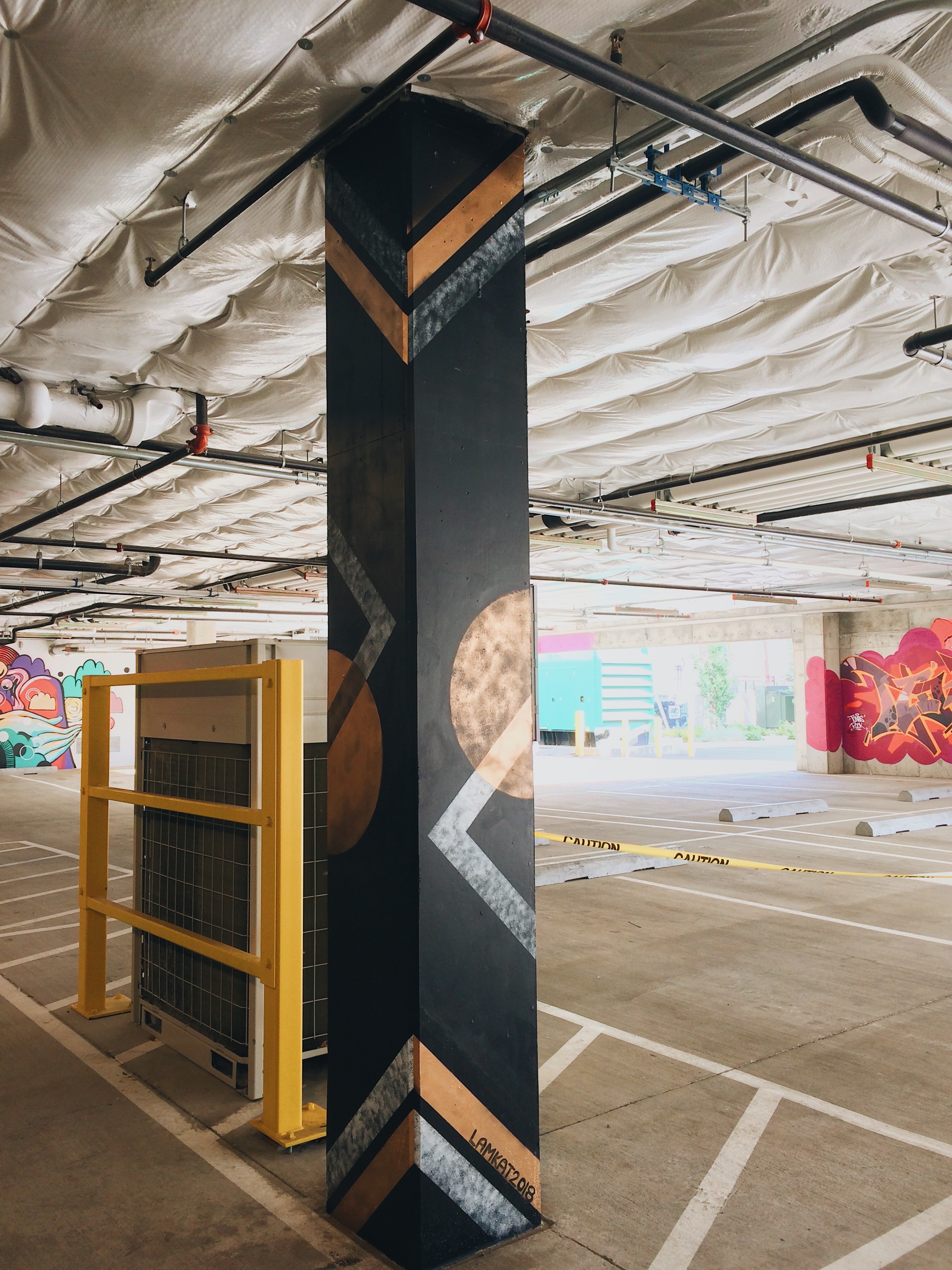
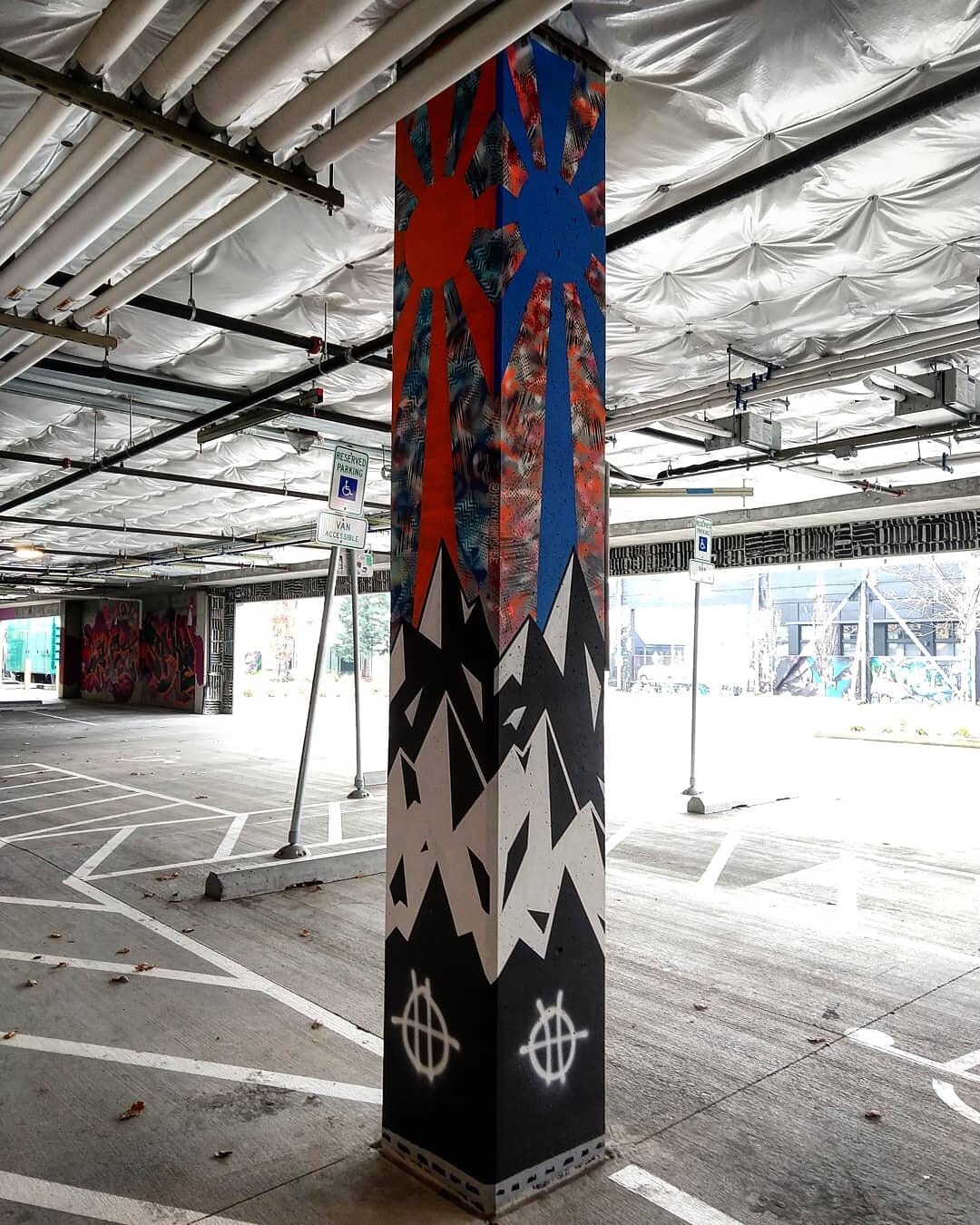
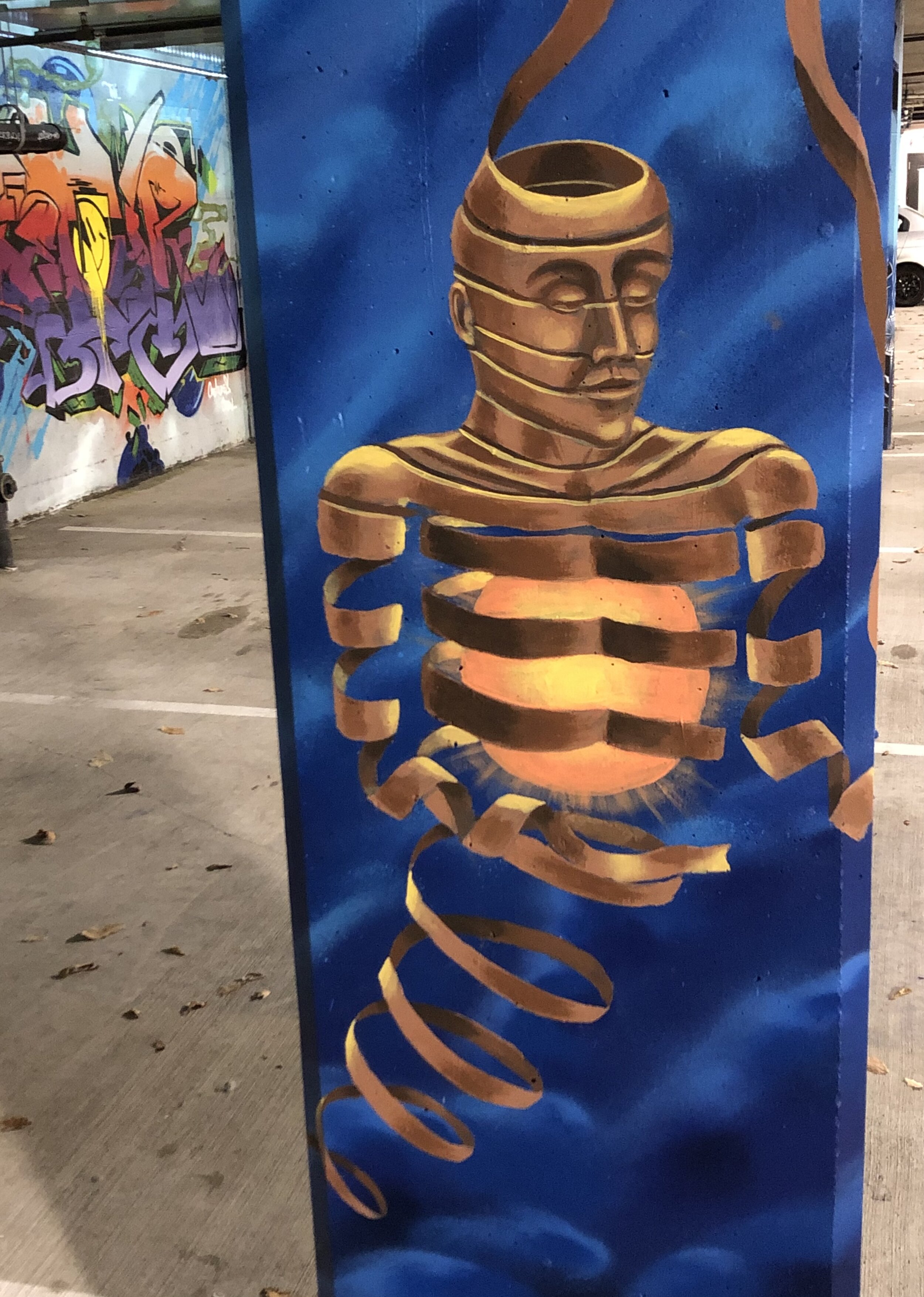
© All photos copyright of credited owner. Do not use without permission.
Cover image by Crystal Amaya. All rights reserved.
Sponsors & Partners
The Central Eastside Mural District is funded, in part, by the Regional Arts & Culture Council, Prosper Portland, the Oregon Arts Commission, and the Central Eastside Industrial Council’s Central Eastside Together grant program.
